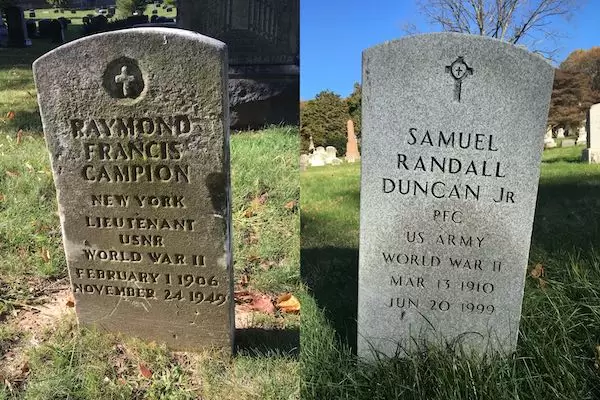
WWII Bio Search
Click for the other World War II biographies: Intro/Part 1 (Aceto-Conti) Part 2 (Costa-Krutz), and Part 4 (Pizza-Zeltmann)
Click here to share the story of someone you know who took part in World War II.
La BARBERA, CHARLES (or SALVATORE) (1913-1996). Sergeant, United States Army. Usually referred to as Charles, but sometimes called Salvatore Jr., he was born in Brooklyn to Salvatore and Rosina. According to census records, both of his parents were born in Italy; his daughter details their place of birth as Palermo, Sicily. His father worked as a soap maker and bricklayer, as per census records of 1920, 1925, and 1940. Charles had five siblings, Frank, Frances, Rosetta (Sadie), Dominick and Marie and the family lived at 553 Pine Street, Brooklyn, from 1925 to 1940 (remaining in the family until 2004). The 1940 census reports that he was working as a truck driver, delivering lumber.
As per his World War II Army enlistment record, La Barbera had one year of high school and was unemployed. He enlisted on April 30,1942, at Fort Jay on Governors Island, as a private. He may have served in the Army Air Corps: as per the Department of Veterans Affairs, he was enlisted in the Army, but his daughter reports that he was involved with airplanes; there was no Air Force at the time. She further states that he rose to the rank of sergeant (confirmed by the photograph of him in uniform).
New York City marriage records and his obituary reveal a marriage to Josephine Imbriale in 1954. Charles and Josephine had one child, Rosemarie. His daughter relates how the couple met, “A couple of years after the war ended, an army buddy of my dad’s invited him to his home for Sunday dinner to catch up with each other and probably to reminisce their days of service as well, as they were both army cooks ….although I always found that hard to believe since I never remember my father behind the stove when I was growing up. Anyway, at the house during dinner, my father couldn’t help but notice his buddy’s beautiful older sister and later questioned him all about her. (And now I’m sure you can guess where this story is going). Soon after they began courting, fell in love and were married in 1954. His old army buddy was now his brother-in-law! Charles and Josephine Imbriale were married until 1990 when my mother passed away.” In 1961, the couple purchased a two-family home on 80th Street and 14th Avenue in Brooklyn where his daughter still lives along with her daughter, son-in-law and the fourth generation, Rosemarie’s granddaughter, Josephine Anna, born in June 2022.
As per his daughter, “After his army discharge, my dad began working for Breyer’s as a truck driver delivering ice cream to supermarkets, restaurants and candy stores. He loved his job and always had a story to tell at the dinner table about his day. In 1977, after 32 years with the company, he retired, now spending his time enjoying his family especially his two grandchildren, Vincent and Gina. He was an avid sports fan (any sport) and enthusiastically rooted for his #1 team the New York Mets and of course before them, the Brooklyn Dodgers!”
According to his obituary, Josephine predeceased Charles, dying in 1990. She is also buried at Green-Wood. His obituary indicates he was survived by his daughter, Rosemarie D’Amario, her husband Vincent, grandchildren Vincent and Gina, and four siblings, Frances, Sadie, Dominick and Marie. Crestwood Mausoleum, Crypt #506E.
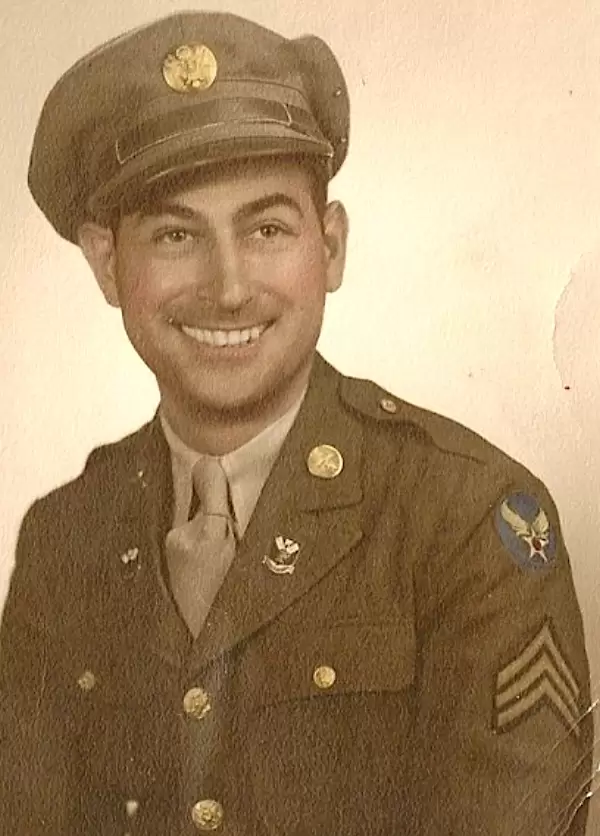
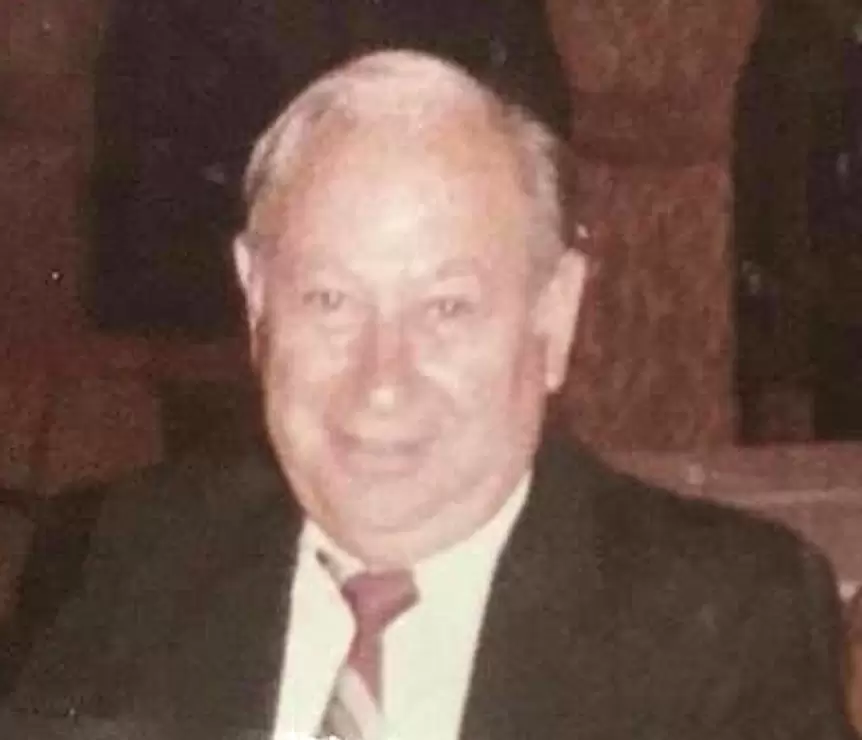
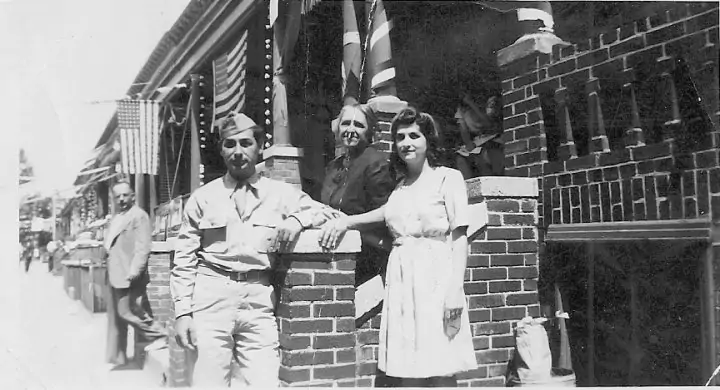
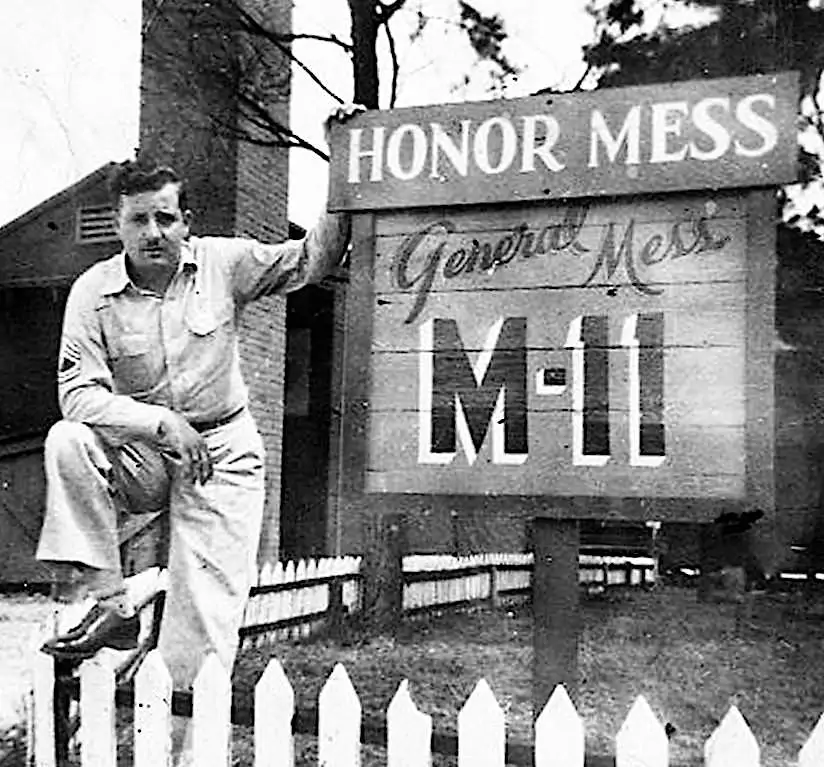
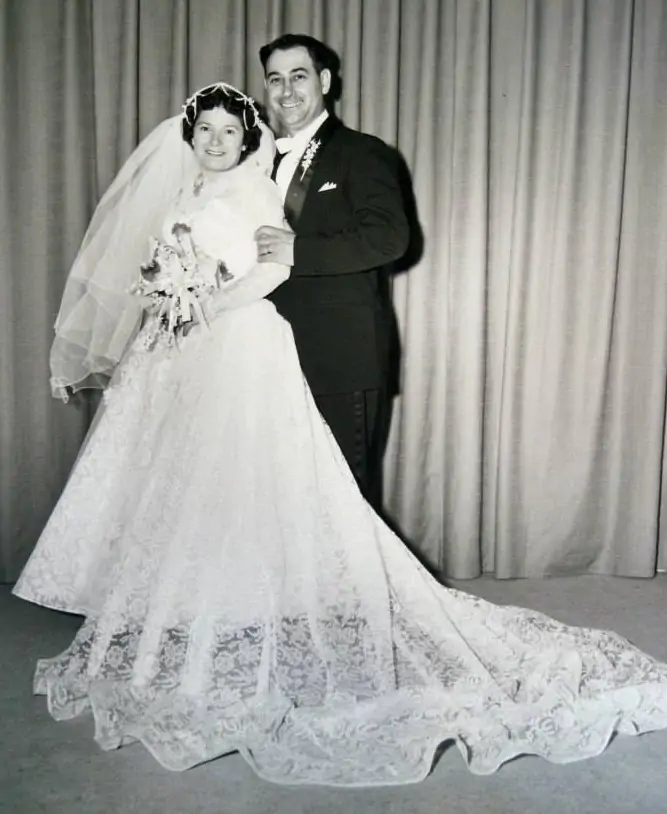
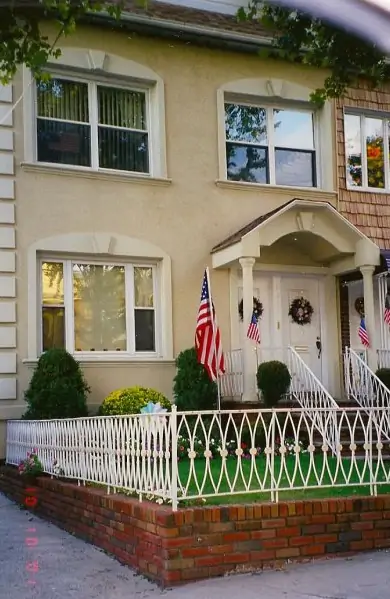
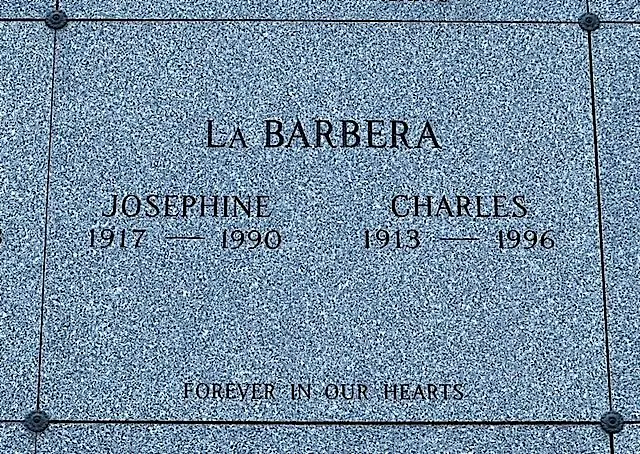
LABATE, JOSEPH (1917-2009). Corporal, Field Artillery Battalion, Battery B, United States Army. As per Donna Falcone, Labate’s daughter, Joseph was born and raised in Oakland, California. His parents were Pietro and Maria (née Serio) Labate. Later in life, his social security card was issued from California prior to 1951. His daughter relates that he was a punch-press operator prior to his military service.
A little more than a month after the December 7, 1941, attack on Pearl Harbor, Joseph enlisted in the Army, on January 9, 1942. He achieved the rank of corporal during his service in the Field Artillery Battalion of the United States Army. According to his daughter, he was a gunner who took part in D-Day at Normandy, France, and fought at the Battle of the Bulge. He also fought in the Ardennes, Central Europe, Northern France and the Rhineland. She reports that her father received the European-African-Middle Eastern Service Medal with Bronze Arrowhead for participating in the amphibious assault landing and the Good Conduct Medal. Labate’s records indicate that he served until October 5, 1945, when he was discharged at Fort Dix, New Jersey.
Less than a month later, he and his bride-to-be, Rosaria Leonardo, registered for a marriage license in Brooklyn. They were married on November 18, 1945 and had two daughters, Donna and Mary Jane. He was employed as a maintenance worker at Downstate Medical Center in Brooklyn. Section 39, lot 38325, grave 2283.
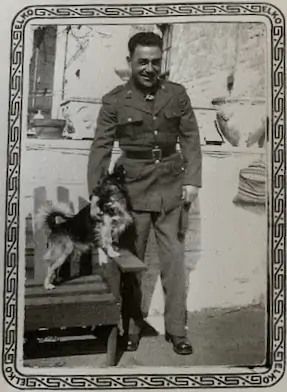
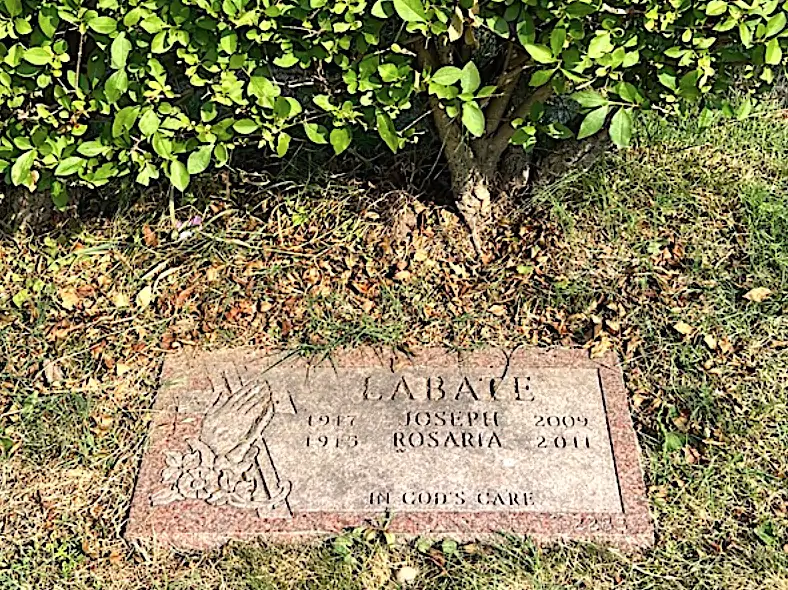
LANE, LORING (1916-1944). Lieutenant, 60th Regiment, 9th Infantry Division, First United States Army. The only son and eldest of three children, Loring Lane was born to Alfred Loring Lane and Emily Aldrich Lane. The well-to-do family lived at 395 Washington Avenue in Clinton Hill, Brooklyn, according to state and federal census records through 1940. At various times the household included Loring’s maternal grandmother, Susan Aldrich; his aunt, Alice Aldrich Barnes; and a live-in servant.
The house at 395 Washington Avenue has its own Brooklyn history. The original owner in 1872 was Freeborn G. Smith, owner of Bradbury Pianos, a manufacturer in the city. Smith was a self-made business success and community benefactor who dabbled in Brooklyn politics. In 1906, the house was purchased by Dr. William Blythe Lane, a Civil War surgeon, who made his fortune in the insurance business. It’s possible that Dr. Lane is related to the Lane family that became the next owners of this home, still standing in the Clinton Hill Historic District. Both Freeborn Smith and Dr. Lane are buried in Green-Wood.
Loring Lane attended Brooklyn Polytechnic Preparatory Country Day School (now Poly Prep Country Day School), graduating in 1936. During his school years, he was involved in theater, stage-managing a Christmas play at a neighborhood church, as reported in the Brooklyn Times Union, in 1933. He received an athletic award as captain of the school’s rifle team in his senior year, according to the Brooklyn Daily Eagle.
At Lehigh University in Pennsylvania, Lane pledged Alpha Kappa Pi fraternity in his freshman year, and eventually served as vice president of the chapter. In 1938 he was a member of the Engineers rifle club, eventually becoming captain. He appears in group photographs in the Lehigh University 1937 and 1938 Yearbooks. He graduated from Lehigh University in 1940. After serving with R.O.T.C. during his college years, he received his officer’s commission at that time,.
In September 1940, Lane became engaged to Kathryn Rafetto of Nazareth, Pennsylvania. Kathryn attended Moravian Seminary and College for Women in Bethlehem, Pennsylvania; the couple likely met at inter-college social events. Loring and Kathryn married in October 1941. By then, Lane was working at R. H. Macy. The couple took up residence on East Tremont Avenue in New York City, according to their wedding announcement in the Allentown Morning Call. Lane entered the service in January 1942. He went on to further training at Camp Breckenridge, Kentucky, and at Camp Van Dorn, Mississippi.
Second Lieutenant Loring Lane was sent overseas in August 1944. In October, he was wounded in action and received a Purple Heart. Upon recovering, he was sent back into action. From December on, his division was engaged in defensive action in western Germany at the onset of the Battle of the Bulge. Lane died in Germany on December 23, 1944, at the age of 28.
The circumstances of his death are unclear, which is not surprising, given the chaos and confusion of war. He was initially listed as missing in action in early January 1945. In early February, Kathryn Lane was informed that Loring had been killed in action the previous December. However, he was also listed by the International Red Cross among prisoners of war in Stalag 12A-9b in Limburg, Germany. As per an entry on the website of the Pegasus Archive concerning Stalag 12A, it is likely that Loring Lan was killed when England’s Royal Air Force accidentally bombed the prisoner of war camp:
On the 23rd December, 63 men were killed during a British air raid one night. The intended target had been the railway station at Diez, a few miles away, but unfortunately the fires dropped by the pathfinder aircraft drifted off course in a strong wind and some strayed into Stalag XIIA. The bombs of RAF Mosquitos did not miss the highlighted target of a concrete building, housing mostly medical personnel.
On December 15, 1994, the Tampa Bay Times featured an article recounting the remembrances of Bill Lacy, a resident of Clearwater, Florida, on the 50th anniversary of his Christmas in 1944, when he was a prisoner of war in a crowded cattle car in Limburg, Germany. The men in his boxcar were hungry, cold, and fatigued but sang carols that were also sung by older German civilians outside. Lacy recalled that the Royal Air Force was bombing German factories nearby and that 63 American officers were killed when a bomb hit Stalag 12A next to the rail yard. Although not mentioned by name in that article, Loring Lane was among those killed. Lacy and the other men who survived the bombing were grateful that their lives were spared and promised to give thanks to God every day.
Kathryn Lane eventually remarried in 1948. Loring Lane is buried at the Netherlands American Cemetery in Margraten, Netherlands. There is also a cenotaph to his memory in the Lane family plot at Green-Wood. Section 124, lot 14488 (cenotaph).
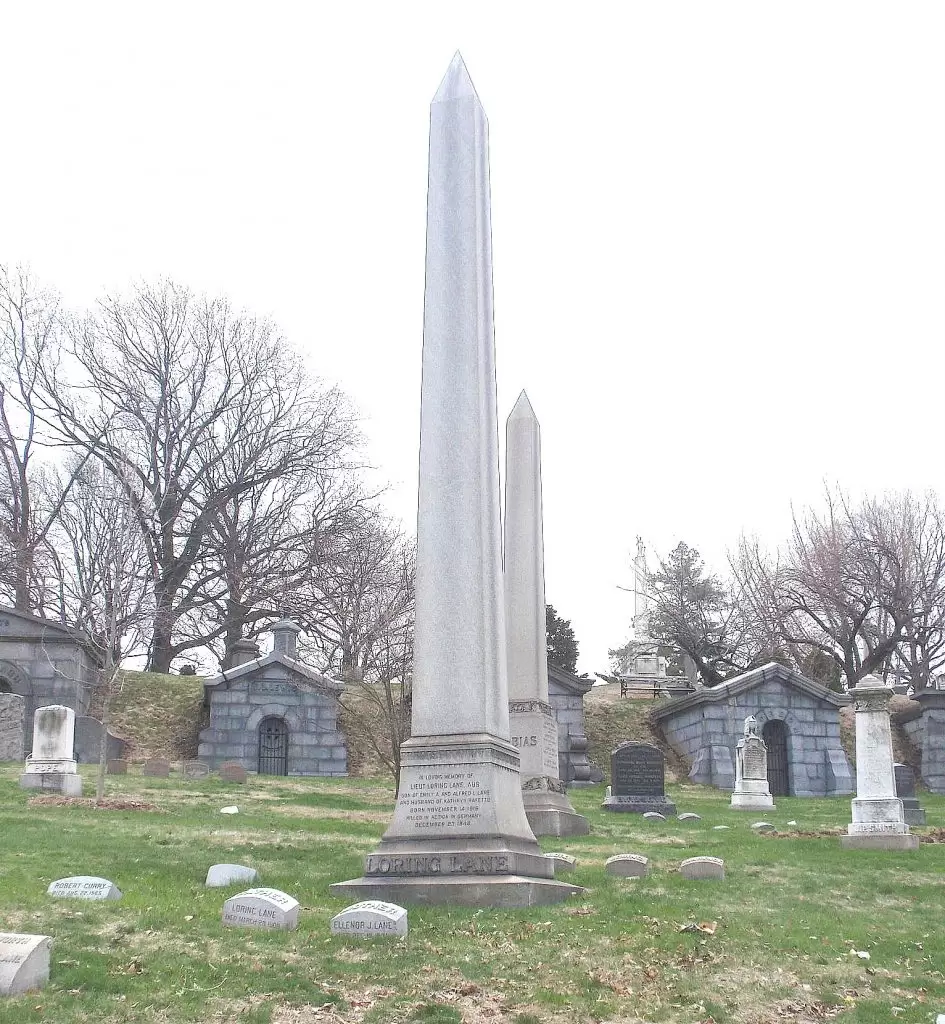
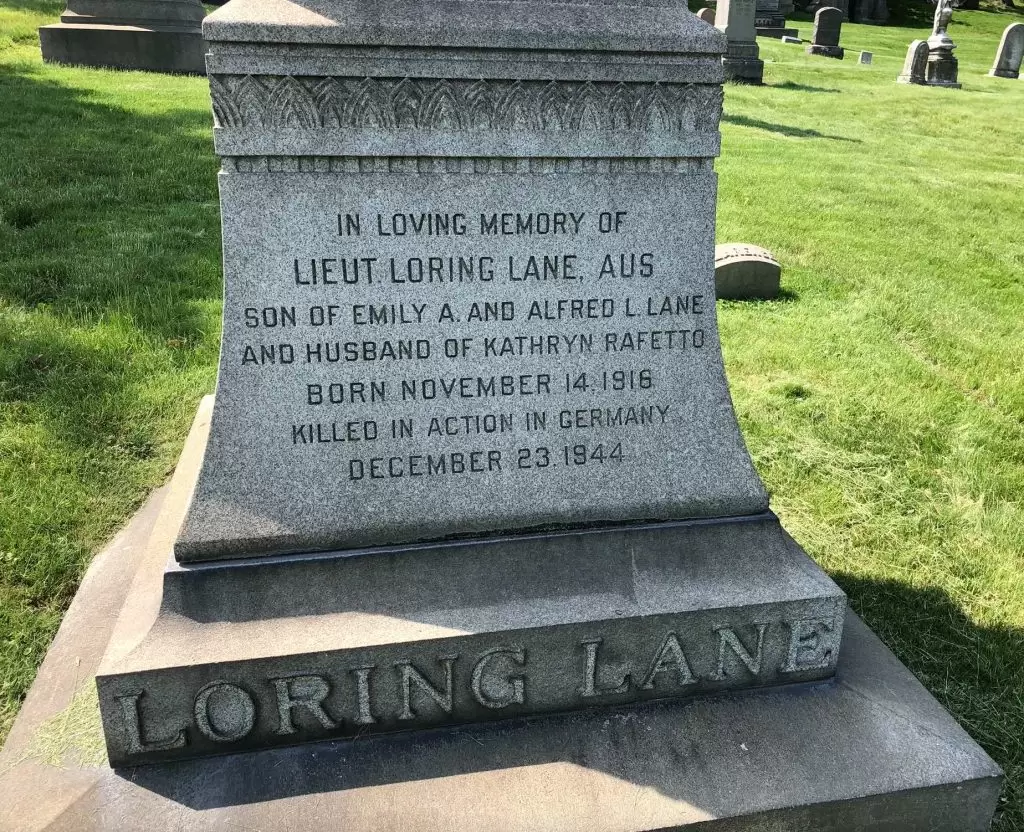
LANZARO, JOSEPH (or JOE) SALVATORE (1906-2000). Captain, 14th Regiment, Company I, New York Guard. Joseph Lanzaro was born in Brooklyn, along with his sister, Alma, and brother, Dominick. His father and mother, Salvatore and Maria (Bellavigna), were both born in Italy, according to the 1910 census.
Lanzaro’s father, Salvatore, served in the 2nd Infantry Regiment in Italy during the Italo-Ethiopian War of 1895-96. His survival, as happens so often in war, was due to a quirk of fate. The day that his outfit was to be shipped out for a battle, he was too ill to accompany it and was left behind. The entire outfit soon was wiped out. After his discharge from the army as a corporal, Salvatore worked as a blacksmith in Naples before emigrating to the United States in 1896.
Salvatore Lanzaro died of influenza in 1914, leaving Joe’s mother, Maria, as head of household, as listed in the 1925 New York State census. Her eldest brother, Edmundo Bellavigna, moved in to become the father figure in the family. Maria continued to operate the “soda water” business—S. Lanzaro & Company Mineral Waters—started by her late husband, according to the Lanzara-Lanzaro Family Webpage.
Lanzaro, whose occupation is listed as “ship caulker” in the 1925 New York State census, later worked for many years as foreman in a print shop. He married Helen Cascone (born in Palazzolo Acreide, Sicily) in June 1933. They had one son, Douglas, born in 1942.
He registered for the draft on October 16, 1940, when he was 34 years old. Sixteen months later, on February 9, 1942, and just a month before his son’s birth, he enlisted as a private in Company I, 14th Regiment, of the New York Guard, a replacement force for the federalized National Guard units in the state. He served until he was honorably discharged on February 8, 1944, with the rank of sergeant; on July 22, he re-enlisted, accepting a commission as a second lieutenant and moving among assignments in Brooklyn. By the time of his second discharge, in March 1948, he had achieved the rank of captain; he was then 42 years old. He appears to have continued serving with the Guard when the State Guard units were reactivated in response to the Korean War in 1951, according to his military service card, finally retiring in 1960, at the age of 54.
In retirement, Lanzaro received an award of a non-military nature: in 1998, at the age of 93, he won the All-Maryland Angler Award for catching and entering six different trophy-size fish in a state contest, the Maryland Sport Fishing Tournament. His winning entries were a 22-inch flounder; 38-inch bluefish; 44-inch striped bass; 15-inch white perch; 16-inch spot; and 20-inch croaker. This rare feat was reported in the March 31, 1999 issue of the Washington Times.
He died at the age of 93, in Fairfax, Virginia, about a year after the death of his wife, Helen, and three days after his brother, Dominick’s, according to the Lanzara-Lanzaro Family Webpage. Section 97, lot 40748, grave 1.
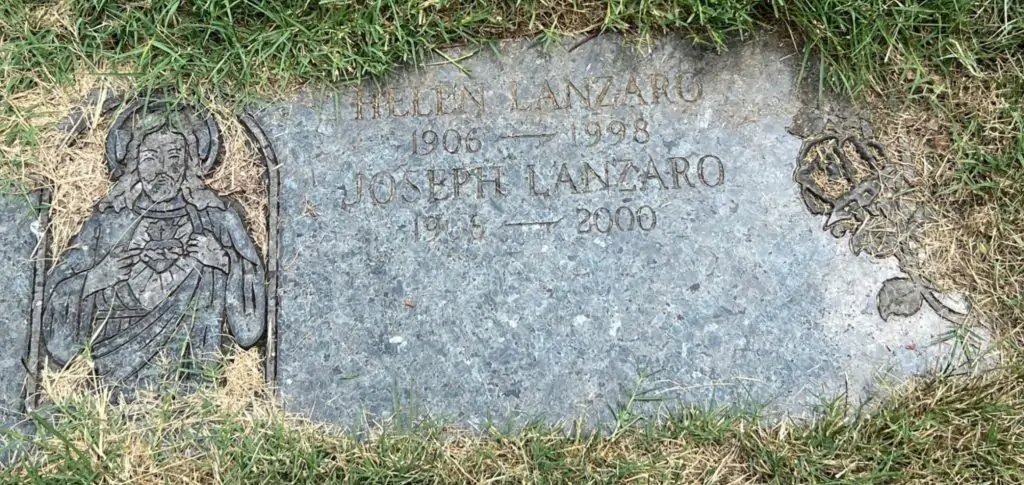
LARNED, JR., EDWARD PENNIMAN (1918-1944). Private first class, Coast Artillery Corps, United States Army. Larned was born in San Antonio, Texas. His father, Edward Sr. was an officer in the United States Army. His mother’s maiden name was Leslie Fuller. As per the 1920 federal census, the family lived in Summit City in Union County, New Jersey. The household consisted of Edward, his parents, two older sisters (Lesley and Katherine), and four servants: Julia Smith (nurse) from Ireland, Kate Hanlon (cook), also from Ireland, Harriet Kerswell (waitress) from England, and Rose Brady (nurse) from Ireland. As per Find A Grave, Larned’s father passed away in 1927 in Miami, Florida, and is buried in Green-Wood Cemetery.
In 1927, Edward’s mother married John Nelson Borland in New York City. His mother’s first name is listed as Caroline in the New York, New York Extracted Marriage Index; according to Find a Grave, her name was Leslie Caroline Fuller Borland. As recorded in the 1930 federal census, Edward, his mother, stepfather, two sisters, and a stepbrother, John, resided at 135 East 94th Street in Manhattan. His stepfather was a stockbroker and had a seat on the New York Stock Exchange. Four servants also lived in the household: Mary McNicholl (waitress), Margaret O’Neill (chambermaid), Margaret Kerooin (cook), and Agnes Quinn (nurse).
As per the 1940 federal census, Larned’s first name is recorded as Edwin. He was single, twenty-one years old, and lived in Bedminster, Somerset, New Jersey with his mother, stepfather, two sisters and stepbrother. His stepfather was an executive in the brokerage industry. The family had three servants: Mary Duinn (cook), Samuel Burrell (handy man), and Husin James (caretaker).
According to his World War II draft card, Edward was 21 years old, resided at 135 East 94th Street, and was unemployed. His stepfather was named next of kin. The registrar’s report, dated October 16, 1940, describes him as 5′ 7″ tall, 155 pounds, with gray eyes, black hair, dark complexion, and with a scar on his second right finger. His New York National Guard service card indicates he enlisted on August 28, 1940 and was assigned to the Battery H, 207th Coast Artillery Unit. The history of the 207th, as shared by his niece, Susan Borland, indicates that “originally known as the 107th Infantry Regiment, the 107th consolidated with the 7th Infantry in 1940, which was soon designated the 207th Coast Artillery (Anti-Aircraft) Regiment.” As per his enlisted men’s card, he separated from the National Guard on November 2, 1940.
Larned re-enlisted on February 10, 1941 in New York City. His army enlistment card states he had four years of high school and his civil occupation was as a semiskilled engineer. He was assigned to the National Guard with the branch documented as “Coast Artillery Corps or Army Mine Planter Service.” The World War II Navy muster rolls indicate he was on board the Chateau Thierry (AP-31) on April 7, 1942. Following is the Chateau Thierry’s war history, as per the Naval History and Heritage Command website, during the time Lanard was in active service from February 10, 1940 to August 28, 1944:
Chateau Thierry played a part in the assumption by the United States of responsibilities in the western Atlantic in the period before entrance into World War II as she carried Army and civilian personnel and cargo from Brooklyn, N.Y., to ports in Greenland, Iceland, and Nova Scotia between 13 September 1941 and 2 January 1942. With the entry of the United States into the war, she sailed from Brooklyn 15 January carrying some of the first American troops to cross to Northern Ireland. Chateau Thierry sailed on to Scotland to embark British troops and sailors for transportation to Halifax and New York City. Two more voyages with soldiers from New York to Argentia, Newfoundland followed, and on 19 May, she got underway for Charleston, S.C., to embark Army and civilian passengers. She sailed on by way of Bermuda for a round of calls at African ports, sailing south around Cape of Good Hope for Eritrea, where she landed the last of her passengers and took a new group on board. On her return passage she picked up Navy gun crews and other survivors of two merchant ship sinkings, at west African ports.
Chateau Thierry resumed her transport duty to the North Atlantic until 29 April 1943, when she cleared New York for a voyage to North Africa, well escorted in a safe passage. Returning to New York, she embarked soldiers and sailors, and cleared 10 June for Oran, arriving 21 June. Here she prepared for the invasion of Sicily, for which she sailed 5 July. Assigned to the floating reserve, Chateau Thierry lay off the hotly contested Gela beaches 10 July as the assault began, and late in the day began landing her reinforcements, continuing into the night. She remained off Sicily for 2 days, firing to aid in turning back the heavy German air attacks, and taking on board Italian prisoners of war. Returning to Bizerte 13 July, she landed the Italians, then returned to Sicily to embark members of naval units not needed ashore now that the landings had succeeded. Laden with German prisoners of war at Oran, Chateau Thierry sailed 9 August for New York which she reached 22 August. Sailing on to Boston, she was decommissioned there 9 September 1943, and returned to the Army who used her as a hospital ship for the remainder of the war.
According to the World War II hospital admissions card files, Larned was admitted in August 1944. The causative agent for his admittance is listed as “bullet, rifle.” He suffered a non-battle, in-line-of-duty injury. He passed away on August 28, 1944, having served four years in the military. (Note that the photo below spells his surname as Larna and lists a date of death as August 26, 1944.) He is listed in the “WW II Honor List of Dead and Missing: New York State.” According to Honor States.org, “During his service in World War II, Army Private First Class Larned experienced a critical situation which ultimately resulted in loss of life.” The website listed the following commendations he was awarded: World War II Victory Medal, American Campaign Medal, Army Presidential Unit Citation, and Army Good Conduct Medal. Section P, lot 28818.
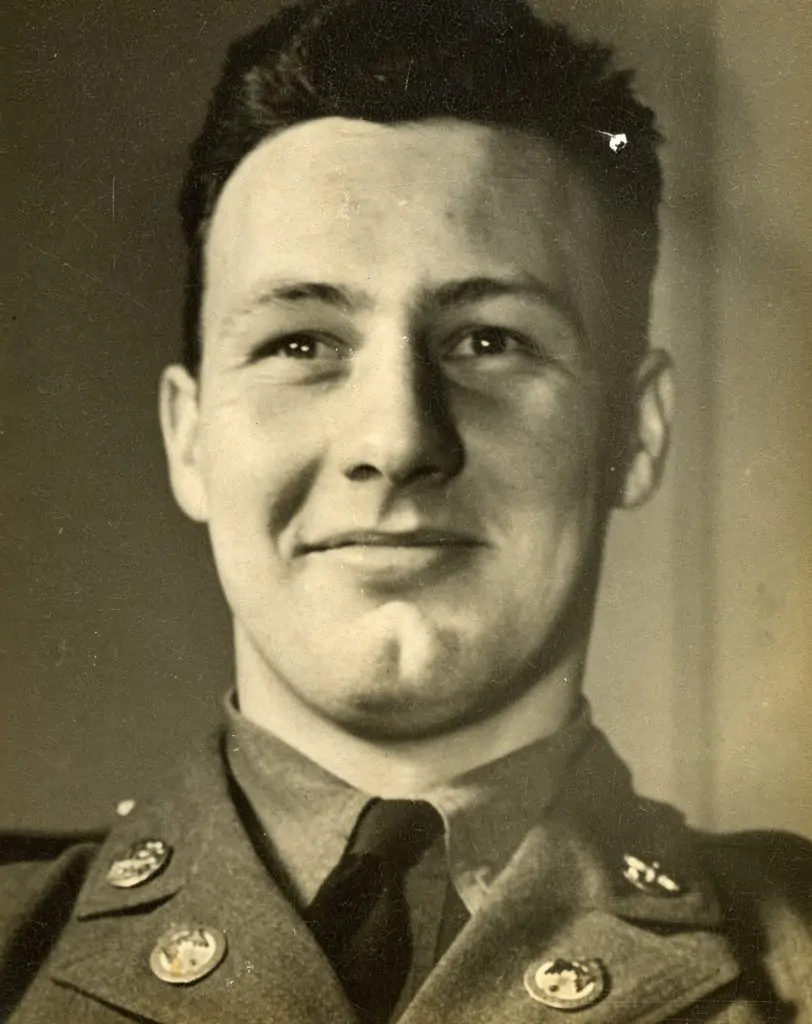
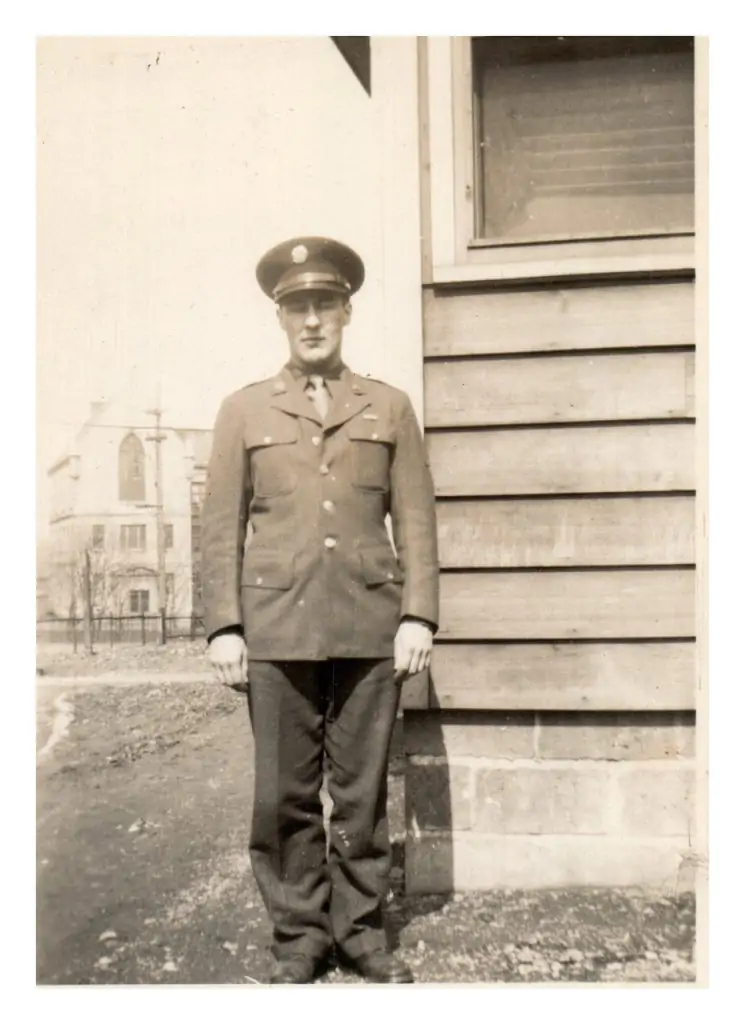
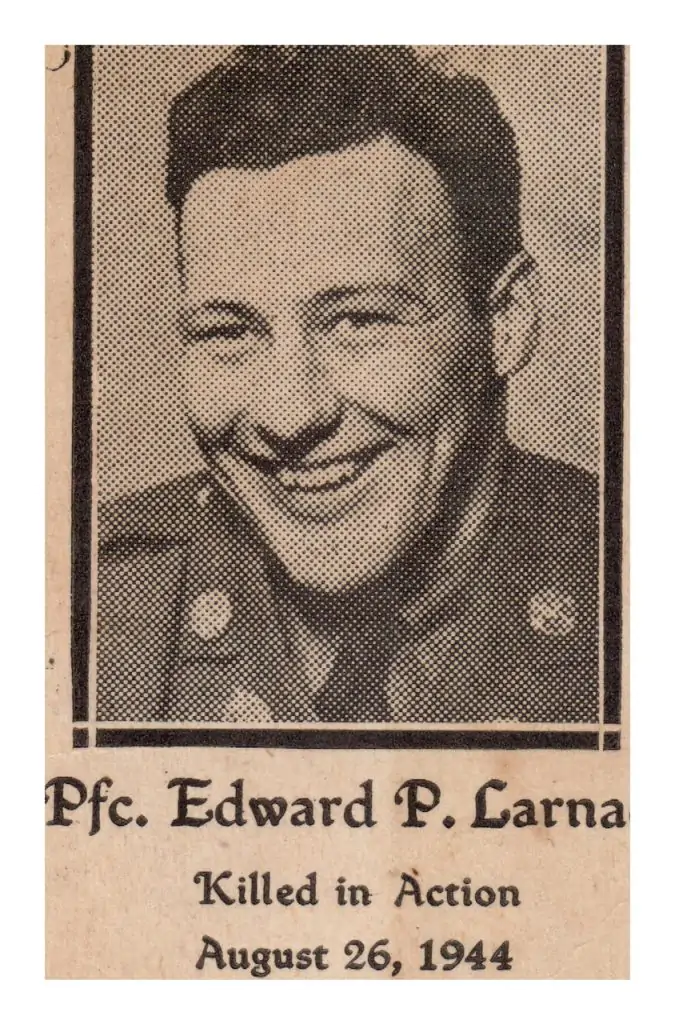
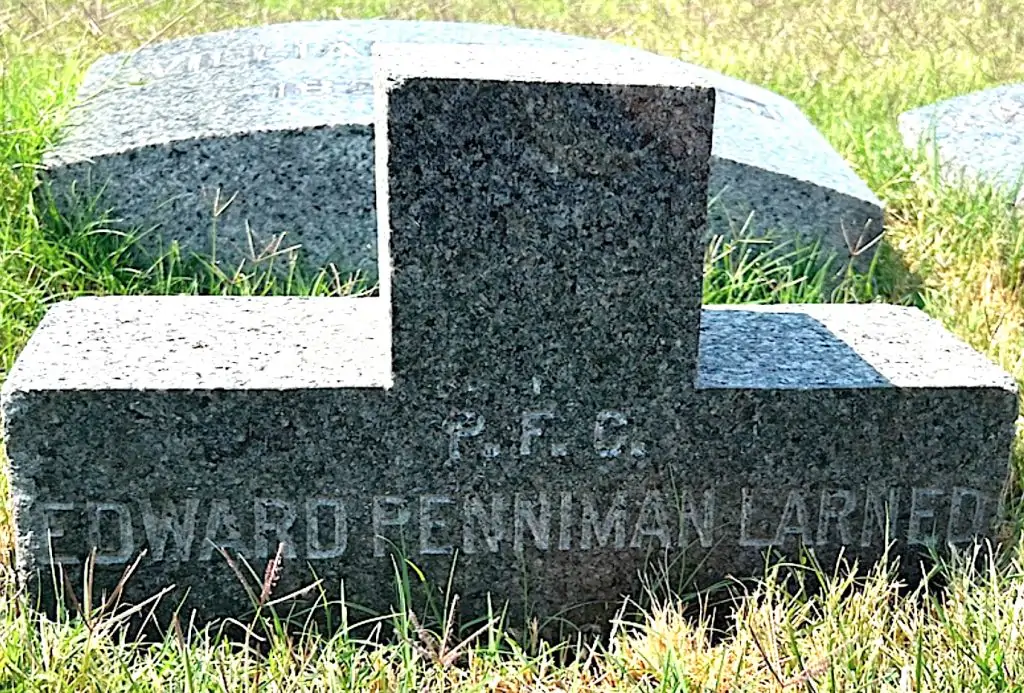
LASSEN, JR., WILLIAM L. (1919-2004). Sergeant, 15th Air Force, 714 Fighter Squadron, 1st Fighter Group, United States Army Air Corps. Born in Brooklyn, his parents, William and Marie, had also been born in New York. His maternal grandparents were born in Austria, his paternal grandfather in New York, and his paternal grandmother immigrated from Norway. According to the 1920 census, he lived with his parents on 61st Street in Brooklyn; his father was a paper goods salesman. The New York State census from 1925 reports a family house number (7919), but no street number. The 1930 census records that the eleven-year-old Lassen attended school and lived with his parents in the Carmel Apartments at 8632 Fort Hamilton Parkway. By the 1940 census, Lassen was twenty-one years old, single, had finished one year of high school as his highest grade completed, and was working as a stock clerk. He and his parents lived at 536 Ovington Avenue in Brooklyn.
Lassen’s World War II draft registration card states that his mother was designated as the contact person and that she resided at the Ovington Avenue address. Lassen initially reported the Ovington Avenue address as his residence but crossed it out and changed it to 7919 10th Avenue. His employer is listed as Wm. W. Fitzburgh at 49th Street and 2nd Avenue, Brooklyn. Lassen’s registrar’s report describes him as 5′ 8″ tall, 145 pounds, with brown eyes and brown hair, and a sallow complexion. As per his Separation Qualification record, he enlisted on December 26, 1942, entered basic training with the Army Air Corps as a private, and was honorably discharged on December 1, 1945. According to his neighbor, he served in Bari, Italy, and in Africa. His main responsibilities were typing military correspondence and making war bond reports. His neighbor relates that Lassen was awarded a Good Conduct Medal and two Battle Stars. As per his neighbor, “The Air Force did not exist at the time of Lassen’s service. He was in the Army Air Corps.” Personal information shared by his neighbor relates that Lassen attended Manual Training High School (now John Jay Educational Campus), class of 1937, his primary employment was clerk/typist, and he had no children. Section 6, lot 39340, grave 262.
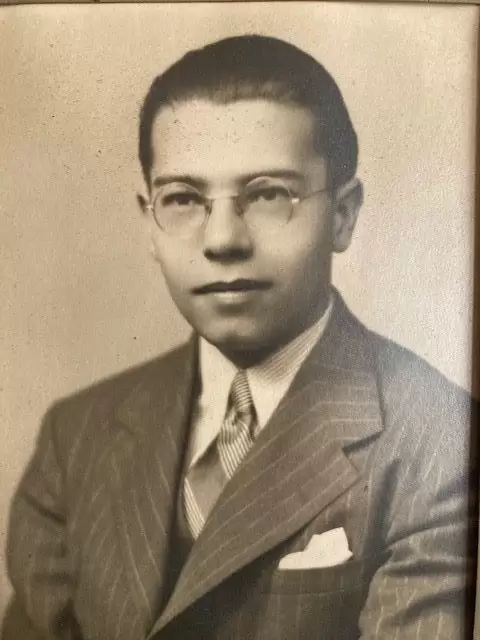
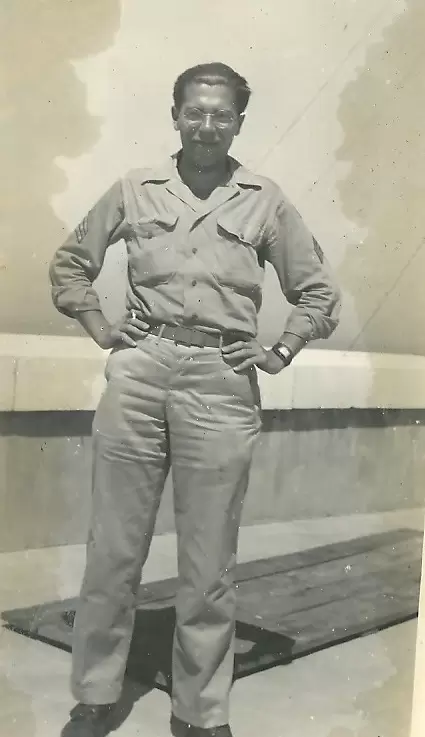
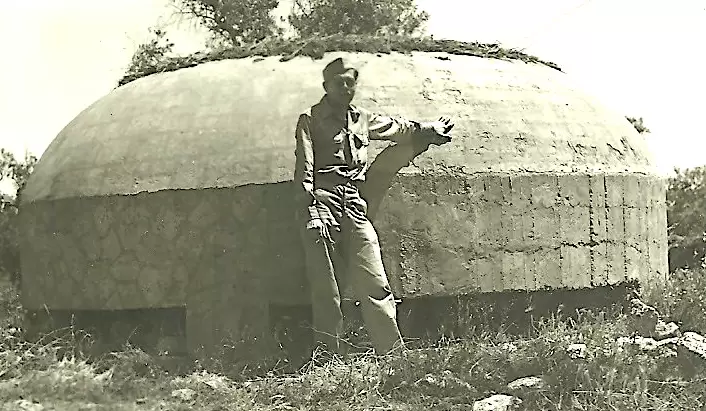
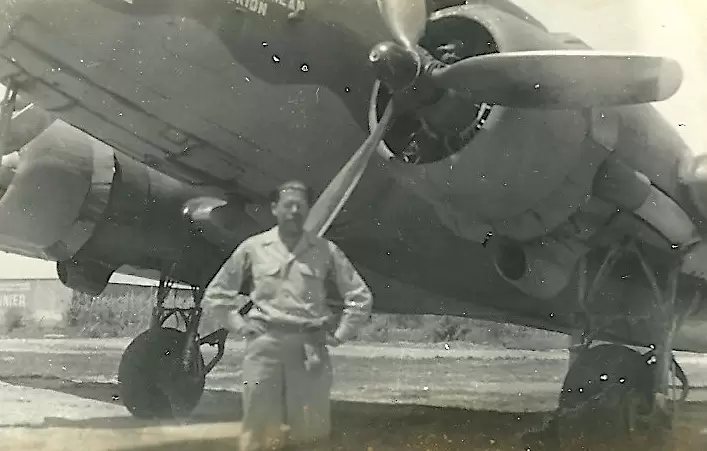
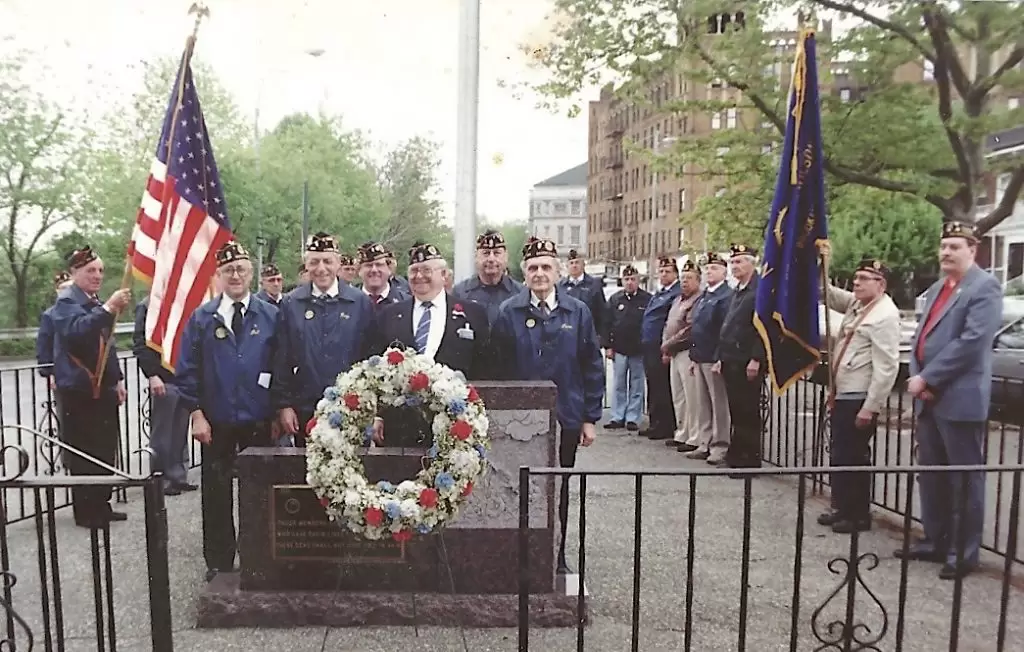
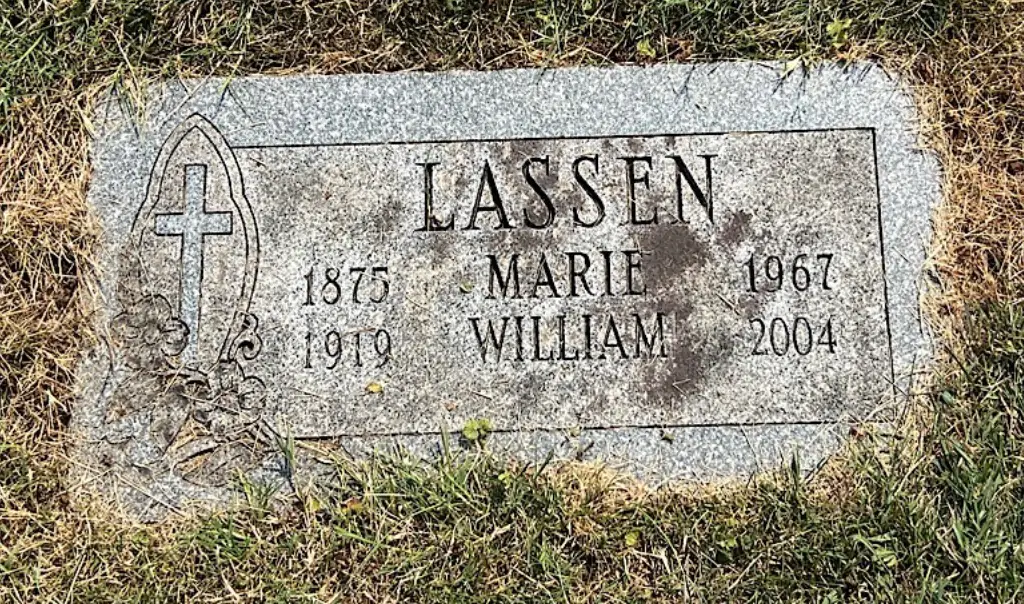
LAVIN, JOHN LOUIS (1922-1945). Private first class, 981st Field Artillery Battalion, Battery B, United States Army. John Louis Lavin was born in New York City on December 2, 1922, to Louis and Margaret Fraser Lavin, both born in New York. John had a younger brother, Robert, and two older sisters (Catherine and Dorothy). According to the 1925 New York State census, the family lived on South Orange Avenue in Newark, New Jersey.
By the time of the 1940 census, the family was living in Brooklyn. John’s father, Louis, was listed as a laborer with the New York City Sanitation Department. John’s sister Dorothy was working in a paper box factory.
Lavin registered for the draft on June 30, 1942, at the age of 19. According to his draft registration card, John was 5′ 4″ tall and weighed 125 pounds, with a light complexion, brown eyes and brown hair. He listed his mother, Margaret, as the person who would always know his address. Porete Manufacturing Company of New Jersey employed him as a cabinetmaker. He enlisted in the Army on December 23, 1942.
According to information on his military headstone application, Lavin was assigned to Battery B of the 981st Field Artillery Battalion, 4th Infantry Division. He fought in the Rhineland, Germany, and was killed in action on February 13, 1945. Section 134, lot 37830, grave 347.
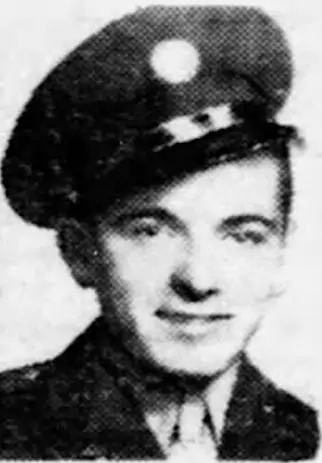
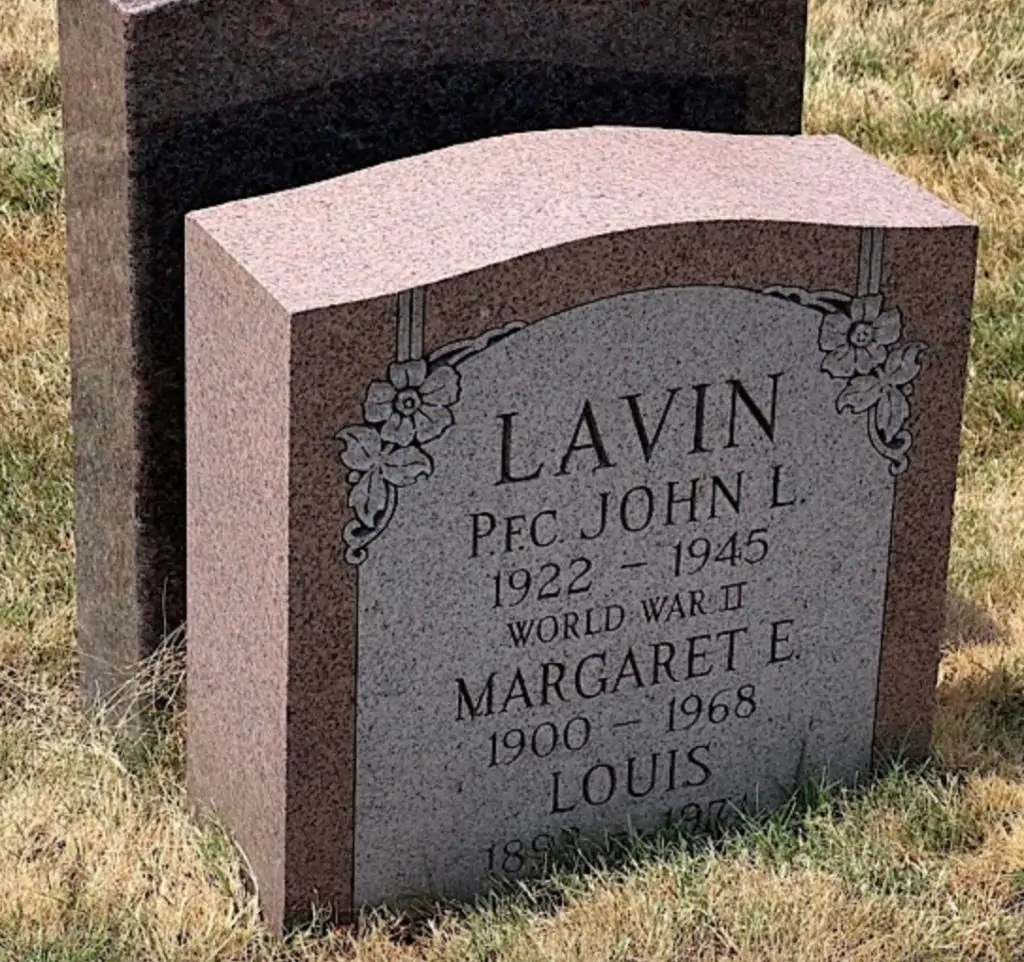
LEE, JOHN E. (1921-1995). Corporal, United States Army; unit unknown. Born in Brooklyn, the 1930 census reports that the three-year-old John lived with his parents, Bernard and Edna; his older stepbrother, Roy Van Glahn; his older stepsister, Evelyn Van Glahn; two older sisters, Emily and Mary; and, his maternal grandmother, Amanda Ogle. The family resided at 226 Schenectady Avenue in Brooklyn. His father is listed as an office manager. According to the census of 1940, the family was residing at 1209 St. John’s Place, Brooklyn. This census states that both parents were born in New York and his father worked as a clerk at a broker’s office. His grandmother no longer resided with them. By the 1940 federal census, the family had moved to 182 East 31st Street. His sisters, Emily and Mary, were part of the household and were working. Lee was attending school.
He registered for the draft on February 15, 1942. His registration card states the East 31st Street address as his place of residence, that his mother was his contact person, and that he was unemployed. Lee’s registrar’s report describes him as 5′ 6½” tall, weighing 225 pounds with grey eyes, brown hair, and a light complexion. Under “obvious characteristics,” he is reported as wearing glasses. His World War II enlistment record details that he enlisted in the United States Army on September 25, 1942, at Fort Jay, Governors Island. According to his father’s obituary, published on September 5, 1945, Corporal John Lee was reported as one of his survivors. Section 17, lot 17245, grave 299.
LEEDS, LELAND (1907-1943). Second lieutenant, Cavalry, United States Army. Leland was born in Brooklyn to Edward and Josephine Leeds. As per the 1910 federal census, his parents had been born in New York. His mother’s name is transcribed as L. Leeds and she is designated as head of household. His father is not included in the household members list. Leland was the fourth of five siblings, ranging in age from one to nine in 1910. In order of birth, the children listed are: Edward, Rodney, Donald, Leland, and Josephine. A servant, Lizzie Wegger, is recorded as living with the family in Southampton, Suffolk, New York. The 1915 New York State census documents the family residing in Brooklyn and his mother is identified as Josephine. The 1920 federal census reports that the family was living on East 32nd Street in Brooklyn. Leland’s youngest sibling, Josephine, who would have been eleven years old, is not included in the transcript. According to a 1927 city directory, Leland was living at 71 18th Avenue in Paterson, New Jersey, and was a clerk. As per the 1930 federal census, Leland was twenty-three years old, single and a boat salesman. He resided with his mother and two older brothers on 18th Avenue in Paterson. The 1940 federal census records that Leland was single and lived on East 78th Street in Manhattan as a lodger. He had completed college and was a teacher at Adelphi Academy.
Leland’s obituary, published in The News on July 20, 1943, details his life before he entered the service. According to the obituary, “Born in Brooklyn, Lt. Leeds had been a resident of Paterson for 12 years, during which time he graduated from School No. 13 and attended Eastside High School. He was employed by the Public Service Corporation and the Y.M.C.A. here and was a member of St. Paul’s Episcopal Church. Ten years ago, he returned to Brooklyn where he was a physical training inspector at Adelphi Academy, Brooklyn.”
Leland’s World War II draft registration card, dated October 16, 1940, records that he was thirty-three years old and was employed at Adelphi Academy, at 282 Lafayette Avenue in Brooklyn. His home address is recorded as 267 Ryerson Street in Brooklyn and his brother, Donald, of 160 Willow Street, is designated as next of kin. As per his registrar’s report, he was 5′ 11″ and 150 pounds with blue eyes, brown hair and a ruddy complexion.
Prior to his Army enlistment, Leland served in the New York State National Guard. According to his New York National Guard service card, he served in Troop C of the 101st Cavalry. His enlistment date is recorded as December 2, 1940, and he was separated on April 7, 1943 so that he could accept a commission as an officer in the United States Army. Leland’s World War II Army enlistment records documents that he was single and had completed three years of college. “Cavalry” is denoted as his branch of service.
On July 17, 1943, the Daily News reported the death of Leland and a Woman’s Army Corp (WAC) member, Auxiliary Angelina Becker, in a crash between an Army truck and a gasoline truck. The article states that Leland was a second lieutenant and lived at 160 Henry Street in Brooklyn. Additional details of the fatal crash were reported in The Wichita Eagle, which stated, “An army officer and a WAC were killed and six other officers, one enlisted man and the civilian driver of a gasoline truck were injured in a crash between the civilian vehicle and an army truck about eight miles from the cavalry replacement training center today.” As per the obituary in The News, “Funeral rites for Lieut. Leland Leeds, 36, an instructor in the weapons department, Cavalry Replacement Training Center, of the Army, who was killed Friday in an Army truck accident while on duty near Fort Riley, Kansas, will be held in the Green-Wood Cemetery Chapel . . . . He entered the Army in December 1940.” The obituary reports that he was survived by his three brothers, Edward, Rodney, and Donald. Section 75, lot 21670, grave vault.
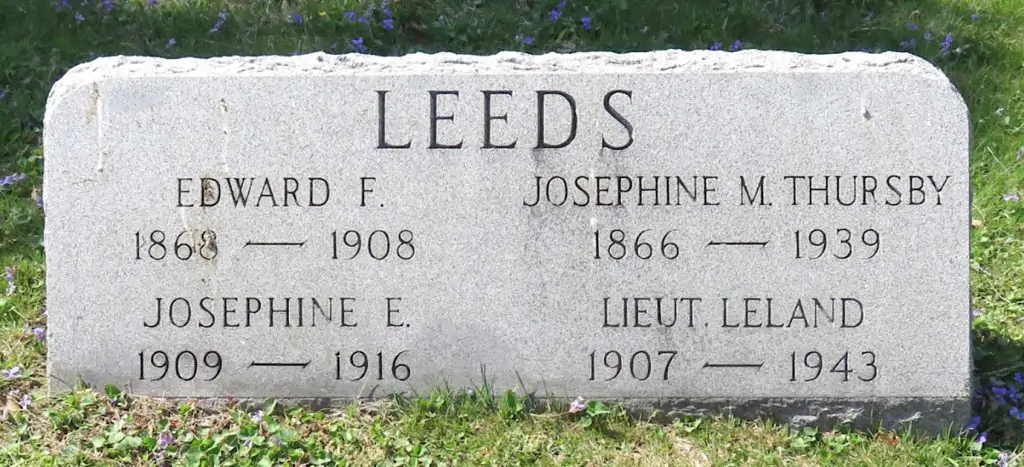
LEWIS, ROYAL C. (1923-1954). Motor machinist’s mate first class, United States Navy. Royal C. Lewis was born in Brooklyn to Clarence and Dorothea Park Lewis. Clarence Lewis was from Walsenburg, Colorado, and Dorothea Park-Lewis was from Buffalo, New York. The 1925 New York State census is the first set of records that show the Lewis family’s home address as 1645 85th Street in Brooklyn. At this time, Clarence was thirty-five and an ironworker; Dorothea was thirty-three and a housewife. The couple had two children: Marion, a daughter who was five and Royal, their son who was one-year-old.
The 1930 census shows that the family continued to live at the same address in Brooklyn. Royal, who was now six and a half years old and attended school, also had a younger brother, Jarrot, who was three. Clarence Lewis owned the family home which was valued at $8,000; the family also had a radio set, a growing cultural trend among American families in the thirties.
According to the 1940 census, Clarence Lewis continued working as an ironworker in contract construction and had an income of $2,839 the previous year. His eldest child, Marion, who was now twenty, worked as a stenographer in the clothing merchandise business and had earned $347 the previous year. Royal was sixteen years old and in his third year of high school. From yearbook records the following year, we learn that he attended New Utrecht High School in the Bensonhurst neighborhood of Brooklyn. The description next to his yearbook photograph lists his focus as business and a caption, likely a message to a fellow classmate, reads ‘Stop broadcasting about that little blond whose call letters are “P.L.”‘
In 1941, at the age of seventeen, and less than two weeks after his high school graduation, Lewis enlisted in the National Guard’s Naval Reserve, 16th Division. After enlistment, he took a training course at the Hemphill Diesel School in Long Island City. World War II Navy muster rolls show that Lewis, officer number 403-87-27, was transferred that summer from the receiving station in South Brooklyn and stationed on the Pelias AS-14 as a fireman third class (F3c 0-1) by September.
Pelias AS-14 was a submarine tender, a ship that supplied and supported submarines. It sailed for the Pacific that fall and was at Pearl Harbor when the naval base was attacked on December 7. The ship was responsible for striking an enemy torpedo plane and damaging a second. However, in a letter he wrote to his family just a few days after the attack, Lewis mentioned none of this, writing instead of not being scared on account of the officers taking care of the men.
On December 21, the Brooklyn Daily Eagle featured Lewis’s letter. In the story, Lewis was described as having “slangy but eloquent words” through which he gave voice to “the dauntless spirit and casual bravery of Uncle Sam’s fighting sons.” While sections of the letter were censored by the Navy Department, the story reported that Lewis was with the Pacific Fleet at Pearl Harbor and wrote the letter just three days after the bombing of the sea base, having been in “the thick of the Japanese attack.” Lewis wrote about Christmas gifts he was sending and, addressing his mother, said “Tell Pop and the rest of the family not to worry. I’m not a bit scared or nervous because we have good officers who are taking good care of us men. Let me know how you all are. There are lots of things I would like to say but I can’t. Please forgive me for this letter being so short. Keep a stiff upper, Mom.“
During the length of Lewis’s service onboard, Pelias provided assistance to nearly twenty submarines at Pearl Harbor and was vital in its service in the South West Pacific (Australia) during its attacks against Japanese naval and merchant shipping the following year. By May 1944, Pelias had overhauled, repaired and refitted fifty-nine submarines. After repairs at Mare Island, California, the ship was deployed to Midway in January 1945, after which it made its way to San Diego via Oahu, Hawaii, completing a large number or refits and repairs.
In August 1945, Lewis sailed from Norfolk, Virginia, to Aruba and Venezuela on Gauger YO-55 which delivered gas and oil to ships. By October, he was transferred to the receiving station at Coco Solo in the Panama Canal Zone. He was rated an MoMM1c, a motor machinist’s mate first class and honorably discharged. The records describe him as white, twenty-two years old, 5′ 11″ and 160 pounds. He had blue eyes and brown hair with a light complexion. A woman by the name of Margaret Kraut, who lived at 6829 Bliss Terrace in Brooklyn, was listed as his next of kin.
In 1946, Lewis married Anne M. Wilson, who was also from New York. The 1950 census records tell us that the couple lived with Lewis’s family at the same family home in Brooklyn where they had been living for nearly twenty-five years. Lewis, who was now twenty-seven years old, was an iron worker in iron construction, the same as his father. His wife, Anne, who was thirty-one years old, was a typist at a bank office and both worked forty hours a week. These same records also indicate that Lewis’s brother, Jarrot, continued to live with them while his sister, Marion, was married and lived on the second floor of the same house.
Tragically, just four years later, in 1954, Lewis was killed in an accident by an elevated train in the Bronx; he was thirty years old. An ironworker, Lewis was on the job at the time of the accident, working on a structure, according to his obituary in the Brooklyn Daily Eagle. His funeral services were held at Towers Funeral Home in Oceanside, Long Island. He was survived by both of his parents, Clarence and Dorothea Lewis, his wife Anne, his son Kenneth, sister Marion and brother Jarrot. Section 129, lot 37082, grave 3.
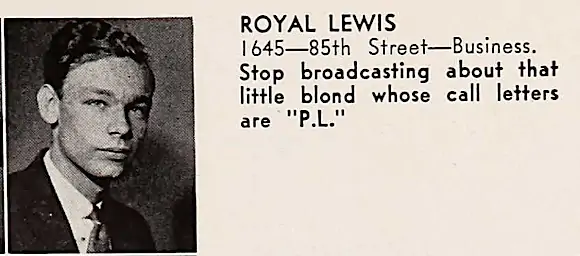
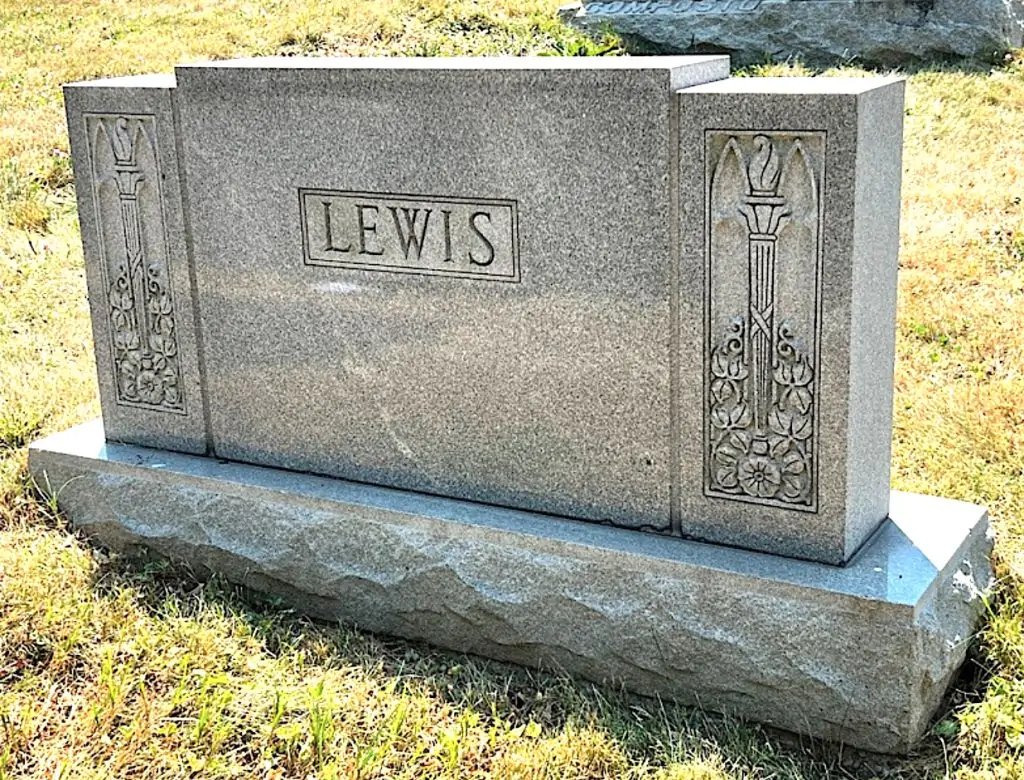
LIAN, JAMES J. (1919-2004 ) Private, United States Army. James was born in New York to parents George and Rebecca Lian, Syrian immigrants who had arrived in the United States in 1904 and 1909/10 respectively. As per the 1920 census, his father was 35 years old and a retail merchant in the lace industry; his mother was 30 and could not read or write. The couple owned their home and had four sons: Fred (8 years old), Joseph (6), Charles (3 and a half), and the youngest James (who was 4 months old).
The 1925 New York State census reports the family as living at 511 8th Avenue in Brooklyn. George Lian was 39 years of age, had become a naturalized citizen, and worked in art embroidery. Rebecca Lian was 35 and a housewife. They had four sons and a daughter: Frederick, Joseph, Charles, James, and Virginia. The first three children attended school and the couple also had two cousins living with them: Saleeba Ferris who was also Syrian, 40 years old and a salesman and Edward Lian, born in the United States, 24 years old and a lawyer.
The family continued to live at the same address, according to the 1930 census. George Lian was 45 and a proprietor. Rebecca Lian was a homemaker and still had an alien immigrant status. Their five children were listed with them. The family’s cousin, Saleeba Ferris who was 45 years old and a linen salesman, continued to be a member of the household. As reported by Lian’s daughter, James attended St. Saviour Elementary School and Manual Training High School (now John Jay Educational Campus), both in Park Slope. He grew up in the Park Slope and Windsor Terrace area along with his brother-in-law Charles Azrak (see), also a World War II veteran. The Lian family has owned and lived in their apartment building in Park Slope for almost 100 years.
According to the National Archives, Lian had completed one year of college and worked as a stenographer and typist before joining the United States Army. On January 19, 1942, he enlisted at Camp Upton in Yaphank, New York, and served in the European Theater in Italy.
In 1952, Lian married Josephine née Azrak and they had three children: Regina, Marguerite, and Anissa. He also had four grandchildren: Gregory, Jonathan, James, and Charles. Lian’s career began at the White Rose Restaurant Chain in New York and then he worked for a family business that imported and sold fine linens. He was also a staff accountant at J. Ebb Weir/ McGovern Florist and retired as partner of West Potato, Inc., a wholesale produce business at Hunts Point Terminal. His daughter Regina describes him as being very devoted to his community; he ran for City Council in 1952. In 1981, as listed in a Bridgeport, Connecticut Directory, Lian lived at 4 3rd Avenue #4A, Stratford, CT. Lian died in Brooklyn, after a long battle with Alzheimer’s disease and a brief hospitalization for pneumonia. He was described in his obituary as caring and loving and one who touched many lives. Section 53, lot 12512, grave 355.
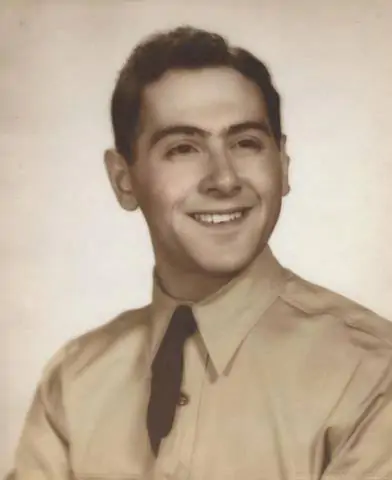
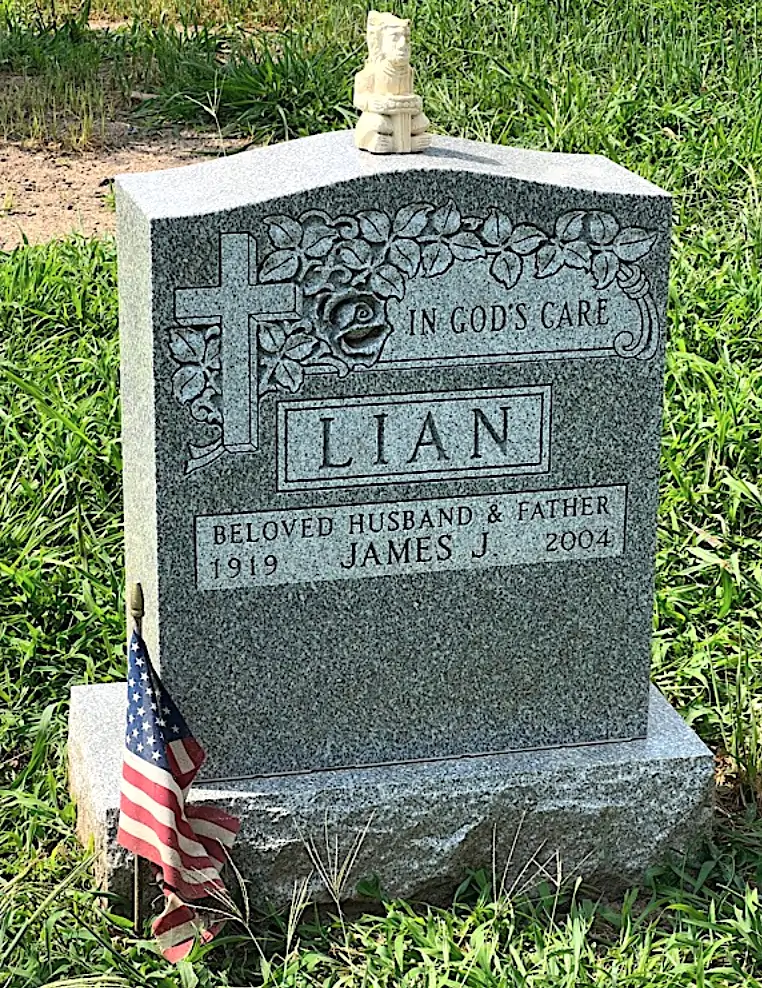
LICKEL, JR., CHARLES FREDERICK (1924-1988). Staff sergeant, United States Army. Lickel was born in Woodhaven, Queens,to Charles Frederick Lickel Sr. and Pauline Irene Visco, whose birthplace is listed as Bulgaria in genealogy records. By the time of the 1930 census, Charles had a younger sister, Barbara. Charles Sr. died in 1938. In the 1940 census, Pauline and her children were living in Brooklyn with her father and step-mother: Salvatore Visco, born in Italy, and Anna Visco, born in Austria.
Lickel attended Fort Hamilton High School and Brooklyn Academy, according to his wedding announcement. At the age of 18, according to official records, on February 19, 1943, he enlisted in the United States Army and was discharged on May 20, 1946. But his son reports that he joined up before graduating high school, at the age of 17. The draft card on record may be a replacement for a lost card, and Lickel took the opportunity to make a correction. His draft card lists his workplace as New York Port of Embarkation, known today as the Brooklyn Army Terminal, at 58th Street and 1st Avenue.
Although Lickel’s military unit is not known, he was involved in the Battle of Okinawa, according to his son as well as his postwar wedding announcement. The Battle of Okinawa (April-June 1945), a nearly three-month-long action meant to launch the ground invasion of Japan, was perhaps the costliest battle of the entire war in terms of human lives.
After his military service, Charles married Barbara Elizabeth Kilduff on July 13, 1947. They settled in Flatbush and had three sons and three daughters. His son writes that his working life was spent with the Amtico Flooring Company. He died in Freeport, Long Island. Section C, lot 35781, grave RLC.
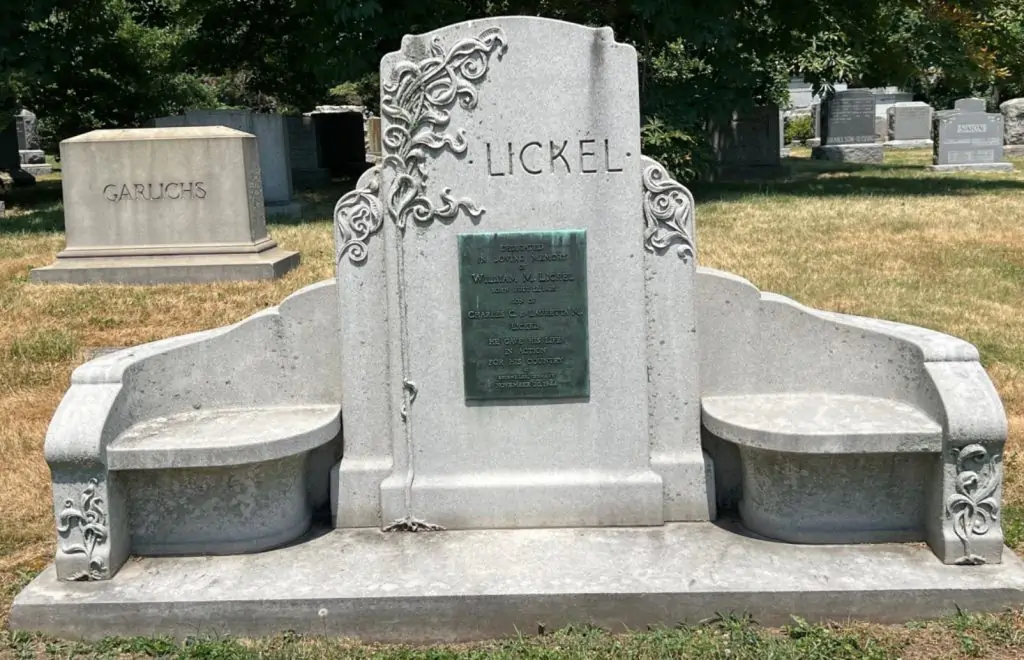
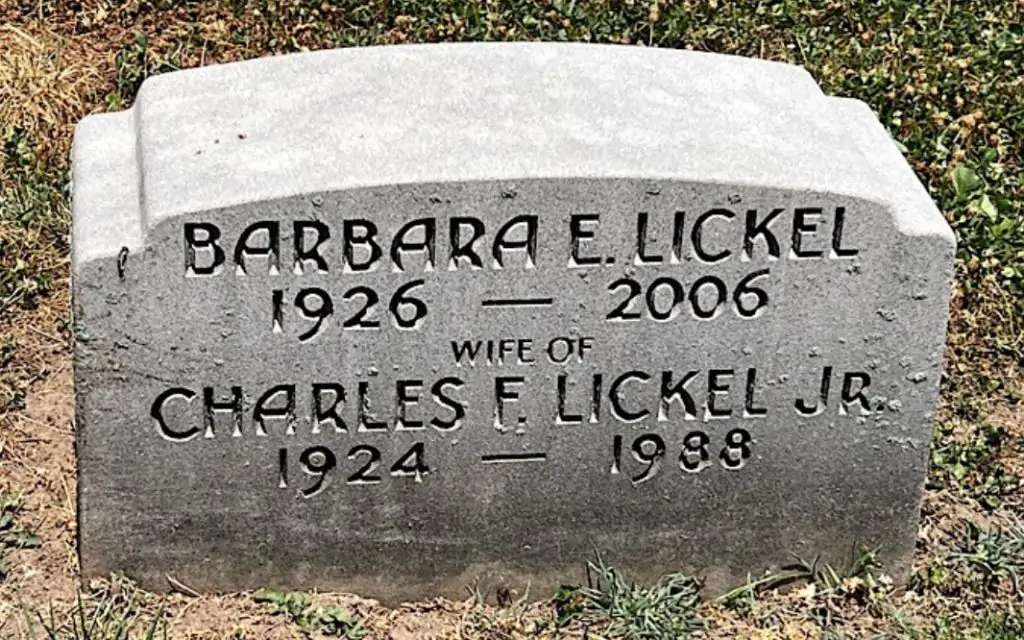
LICKEL, WILLIAM (1925-1944). Rank unknown, unit unknown, United States Army. The New York State birth index states that Lickel was born on July 12, 1925 in Rockville Centre, New York. According to the 1930 census, his parents, Charles and Lauretta, were born in New York and resided at 134 Hempstead Avenue, Rockville Centre in Nassau County, New York. Also in the household were the four-year-old Lickel, his fifteen-year-old sister, Muriel, and a servant, Binchem Schafer. Lickel had an older half-brother, Charles F., who died in a plane crash. According to the newspaper article from the Evening Star, dated May 25, 1938, Charles F., thirty-four years old, had boarded a United Airlines twin motored airliner in Newark, New Jersey, on a business trip for Barbour Welding Company. The plane was bound for Chicago, Illinois, via Cleveland, Ohio. Failure in both engines caused the plane to crash eight miles from the Cleveland airport. Ten people on the flight were killed. As per the 1940 census, the family resided at 174 Hempstead Avenue in Rockville Centre. Lickel, now fourteen years old, had completed eighth grade and was still attending school. His sister still resided at home, and the family had a maid, Lena Probst.
Although there are no official World War II papers documenting Lickel’s service history, his nephew relates that Lickel served in a tank corps unit under General George Patton, on the move from France through Belgium. As per his nephew, Lickel gave the ultimate sacrifice and died on November 20, 1944, in Eschweiler, Germany, at the age of nineteen. Given the date and location of his death, he may have taken part in the Battle of Hurtgen Forest. Hurtgen Forest, located at the border of Germany and Belgium, was to be used as a conduit for the Allies to advance into Germany. According to the Olive-Drab website:
The Hürtgen Forest battle area was about 50 square miles that became a chamber of horrors in the late fall of 1944. The forest lies on a plateau adjacent to the Ardennes, cut through in the center by fast running Kall River and Weisser Weh Creek, with the Roer River as its southern and eastern boundary. It begins a few miles southeast of Aachen, Germany lying in a triangle defined by Aachen, Düren and Monschau. Its 100-foot high, closely spaced fir trees created the equivalent of a twilight jungle in Europe where the enemy could not be seen or attacked until far too late. Large units could not operate cohesively among the deep gorges, high ridges, and narrow trails. Small unit patrols were routinely cut to pieces by machine guns and mortars firing from well-hidden German bunkers or were ambushed by mines, booby traps, and trip wires. The well-built and dug-in defenses included elements of the Siegfried Line that ran through the forest. The winter of 1944 was cold and wet keeping the rugged terrain covered with snow or mired in mud while sleet, snow and fog obscured the scene.
The Battle of Hurtgen Forest, September 19, 1944, to February 10, 1945, was the longest battle ever fought in the history of the United States military. At least 120,000 troops took part and an estimated 24,000 men either killed, wounded or captured. An additional 9,000 soldiers suffered from combat fatigue, pneumonia, and trench foot. Sadly, Lickel’s body never returned from Europe. A memorial was erected in the Lickel family lot at Green-wood Cemetery. He is also memorialized at Veterans Memorial Park in Rockville Centre, which lists all local residents killed during both World Wars, and in Korea and Viet Nam. Section C, lot 35781.
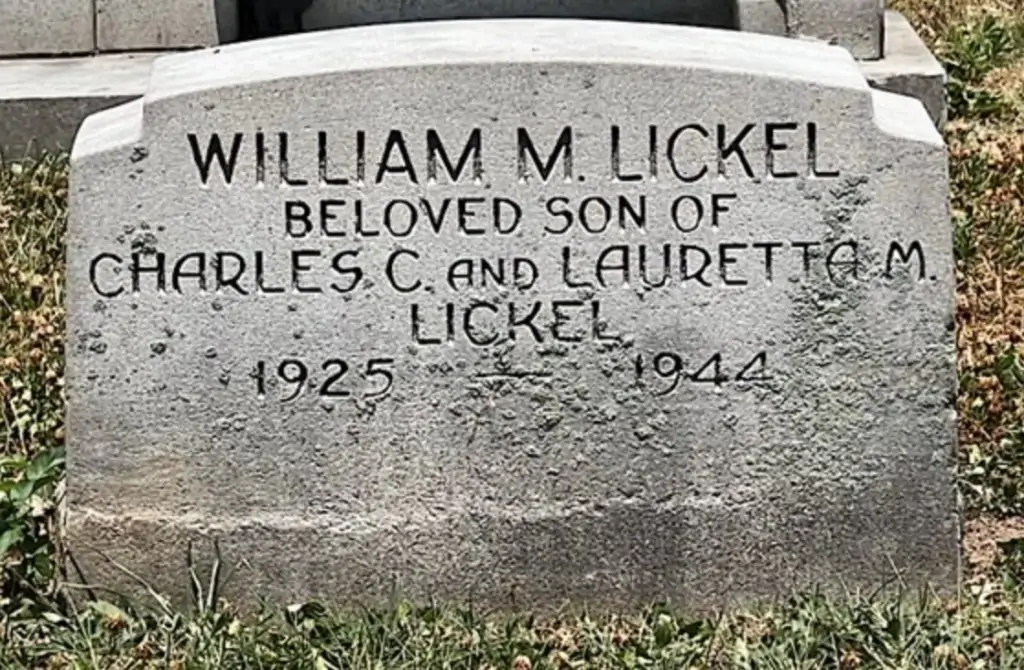
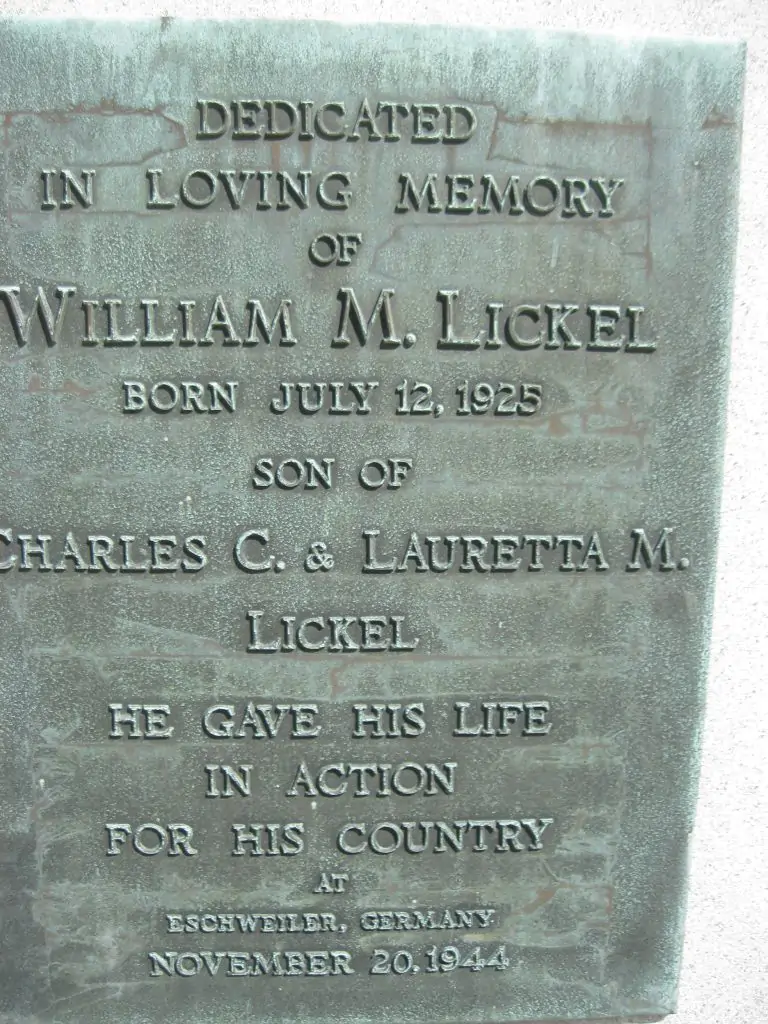
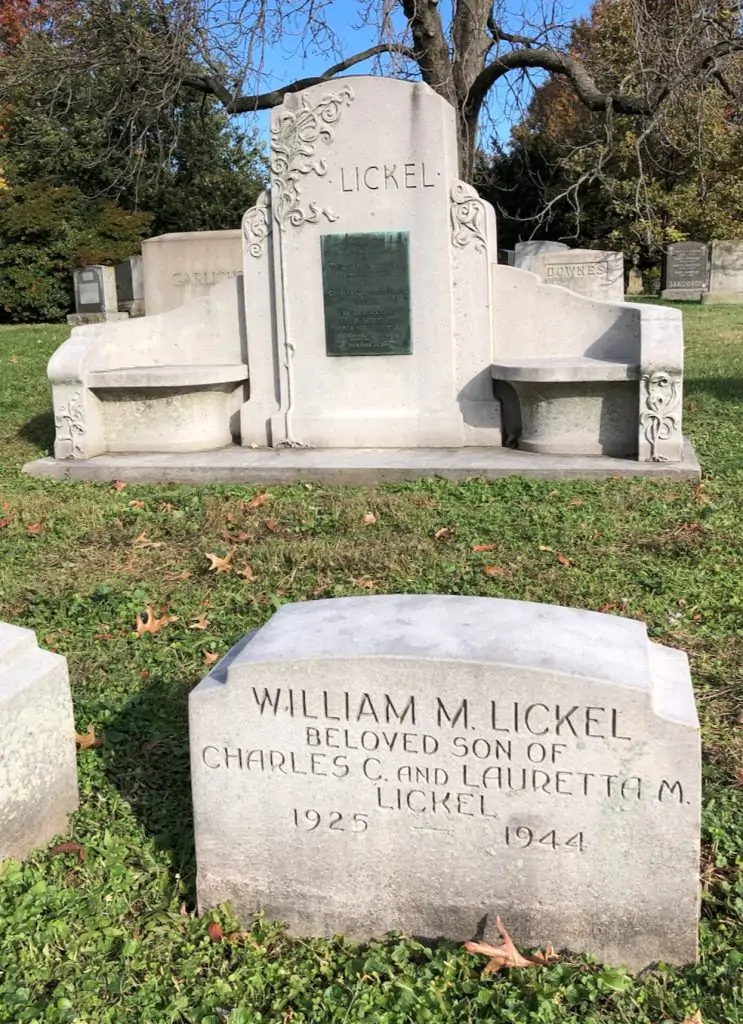
LINGHAM, FRANK WHITLOCK (1920-1986). Corporal, United States Army. Frank Lingham was born in the Bronx to John and Cette Lingham. According to the 1930 federal census, he and a younger brother, John, lived with Frank’s paternal grandmother, Levenia, and Frank’s uncle Jonas. In 1933, Frank was confirmed in the Ascension Lutheran Church in Franklin Square, Long Island.
By the time of the 1940 federal census, the family was living in Brooklyn at 404 Greenwood Avenue. Twenty-year-old Lingham had completed three years of high school and was working full time as a machinist at a shipyard. His father, John, was working as streetcar conductor. Frank had a new younger brother—one-year-old Richard.
Lingham registered for the draft on July 1, 1941, when he was 21 years old. His draft registration card describes him as white with a dark complexion; 5′ 11″ tall, 204 pounds with blue eyes and brown hair. He was living at 113 East 4th Street. His contact was his mother, living at the Greenwood Avenue address. He was employed at Todd Ship Yards at the Erie Basin in Brooklyn, undoubtedly doing work that supported the war effort. Lingham enlisted in the Army on November 2, 1942, and achieved the rank of corporal.
Frank married Stella D. Chirco on December 28, 1943 in Brooklyn. He was living in Staten Island when he died in 1986 at the age of 66. Section 58, lot 5324.
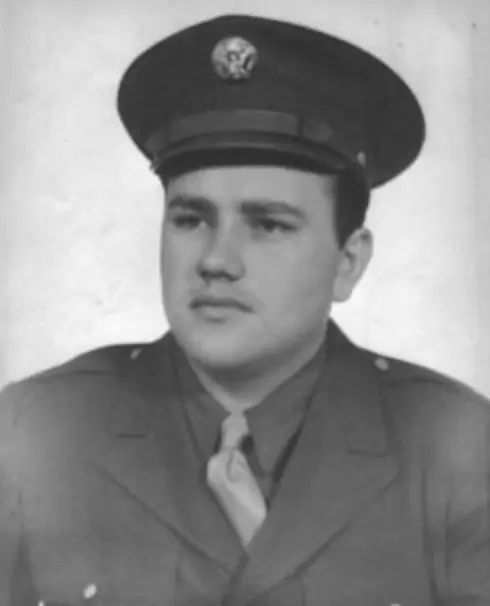
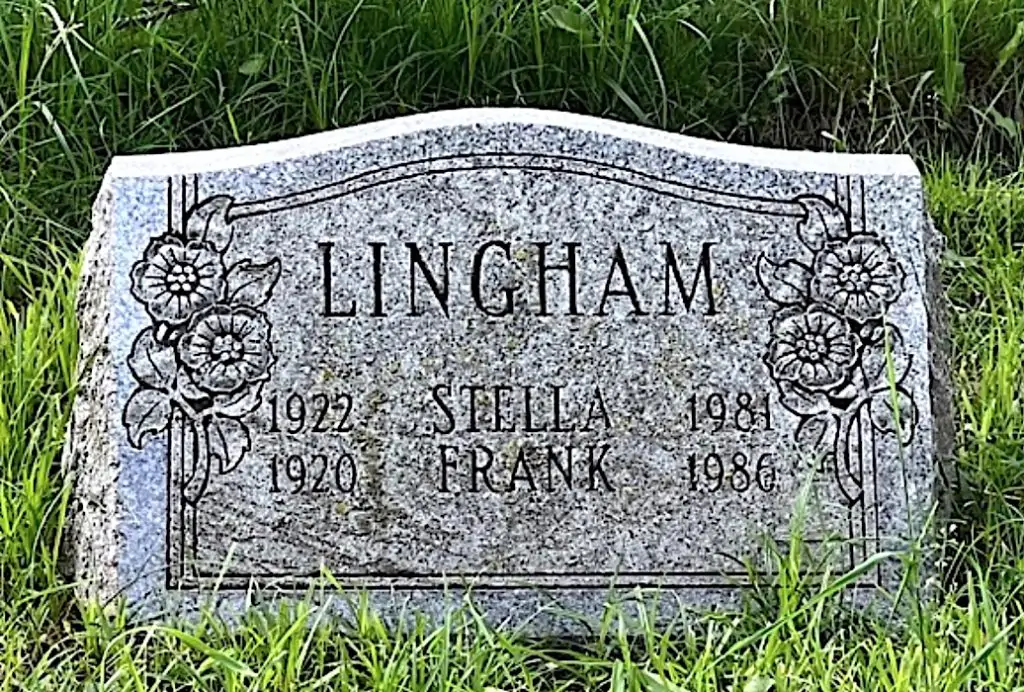
LOCKE, GEORGE ROBERT (1922-2015). Sergeant, 511th Parachute Infantry Regiment, Company D, United States Army. George R. Locke was born in Brooklyn. His parents, George W. Locke, age 25, and Viola (or Violet) Olander, age 22, were married in Brooklyn in January 1922. George W. Locke, the son of George Locke and Catherine Healy, was a salesman and lived at 393 Dean Street, Brooklyn, while Viola, the daughter of Ludwig Olander and Lillian Edlund, lived at 144 4th Avenue, Brooklyn before they married.
The 1925 New York State census shows the Locke family living on Warren Street in Brooklyn. George’s father, George W. Locke, was 28 years old and working as a car salesman. Violet, his mother, was 26, and George was 2 years old. By the 1930 federal census, the family was living on Baltic Street in Brooklyn. Both Violet and George W. Locke were born in New York, but Violet’s parents were born in Sweden, while George W. Locke’s parents were born in New York. George’s father worked as a milkman, and George had a younger brother, Albert, who was three years old.
According to the 1940 federal census, the Locke family was living on Fifth Avenue in Brooklyn. Violet was listed as head of household. Both George, 17, and Albert, 13, were in school.
George’s New York National Guard record shows that he enlisted in the Company I, 14th Regiment, on June 23, 1941. April 10, 1942 is listed as his date of separation, due to failure to attend drills.
Locke was inducted into the United States Army on January 14, 1943, and entered active service on January 21 of the same year. According to his enlisted record and report of separation, his address at the time of enlistment was 334 8th Street in Brooklyn. He was 5′ 9″ tall and weighed 180 pounds, with blue eyes and blond hair. His civilian occupation had been as a tea ball machine operator. Once enlisted, George attended parachute jump school at Fort Benning, Georgia. He rose to squad leader and was awarded the rifle marksmanship and combat infantryman badges and, during his time in the service, he participated in battles and campaigns in New Guinea and on the island of Luzon in the Philippines, as well as in the Southern Philippines. According to his own written account, George saved a life in New Guinea, and was first on the beach in Leyte, in the Philippines, spending six weeks behind enemy lines there, fighting every day. For his service, George received the Bronze Star Medal, American Service Medal, Asiatic-Pacific Campaign Medal with bronze arrowhead, the Good Conduct Medal, the Philippine Liberation Ribbon, Philippine Presidential Unit Citation, and the World War II Victory Medal. George was honorably discharged at Fort Dix, New Jersey, on January 11, 1946.
On December 18, 1947, Locke enlisted in the United States Navy; he was honorably discharged on December 17, 1952. The highest rank he held was as seaman, general service and specialists, in the United States Naval Reserve. During his time in the Navy, he served at the Navy Recruit Training Command in Brooklyn.
The 1950 federal census shows Violet as head of household and separated from her husband. George, 27, and Albert, 23, were both working as clerks at a gas utility company, George as a stock clerk and Albert as an office clerk. The family was living on 8th Street in Brooklyn.
George married Fanny A. Erickson in 1951 in Brooklyn. Fanny was born on June 1, 1930, according to cemetery records. George lived most of his life in Brooklyn. Beginning in 1955, he and Fanny lived at 440 8th Street, Brooklyn, according to Fanny’s Public Records Index and Army Authorization for Issuance of Awards forms George completed in 1997. George died on February 27, 2015, and is interred with Fanny, who died in November 2016, as well as his brother, Albert, and Albert’s daughter Christine. Section 185, lot 44677, grave 2.
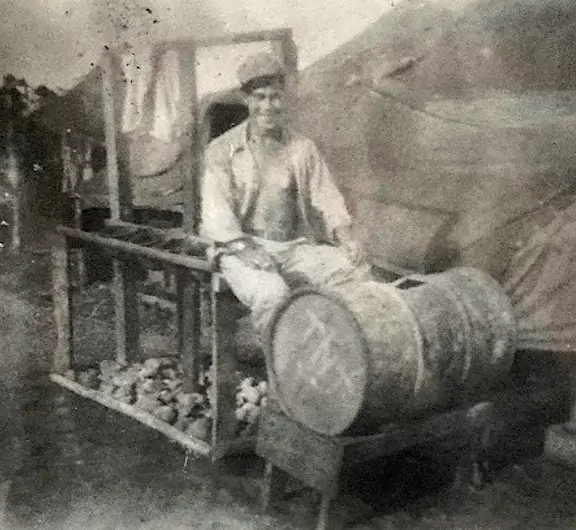
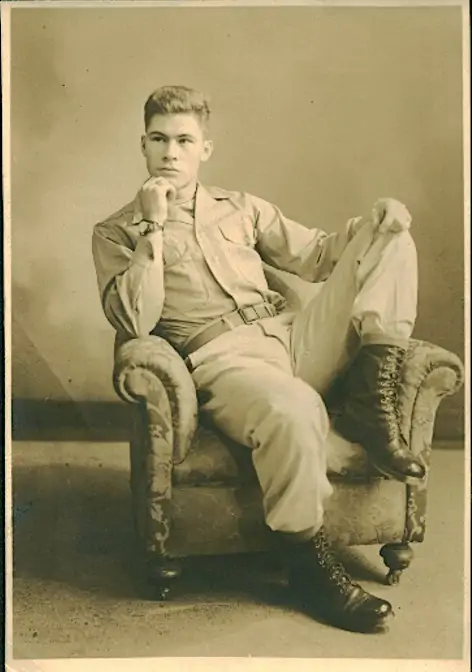
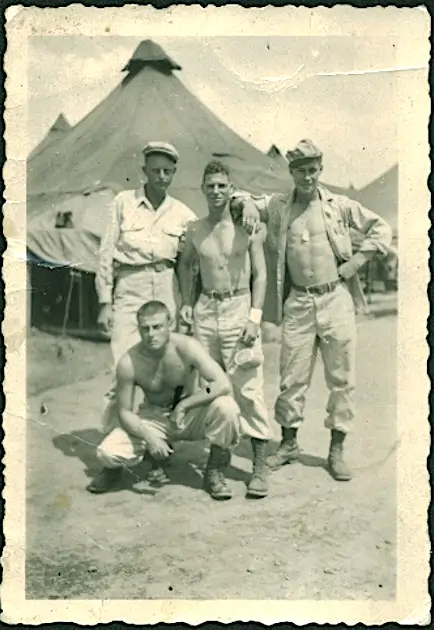
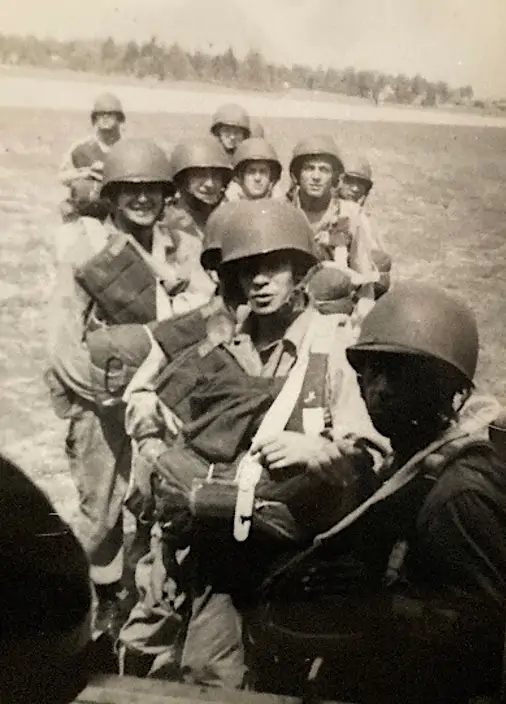
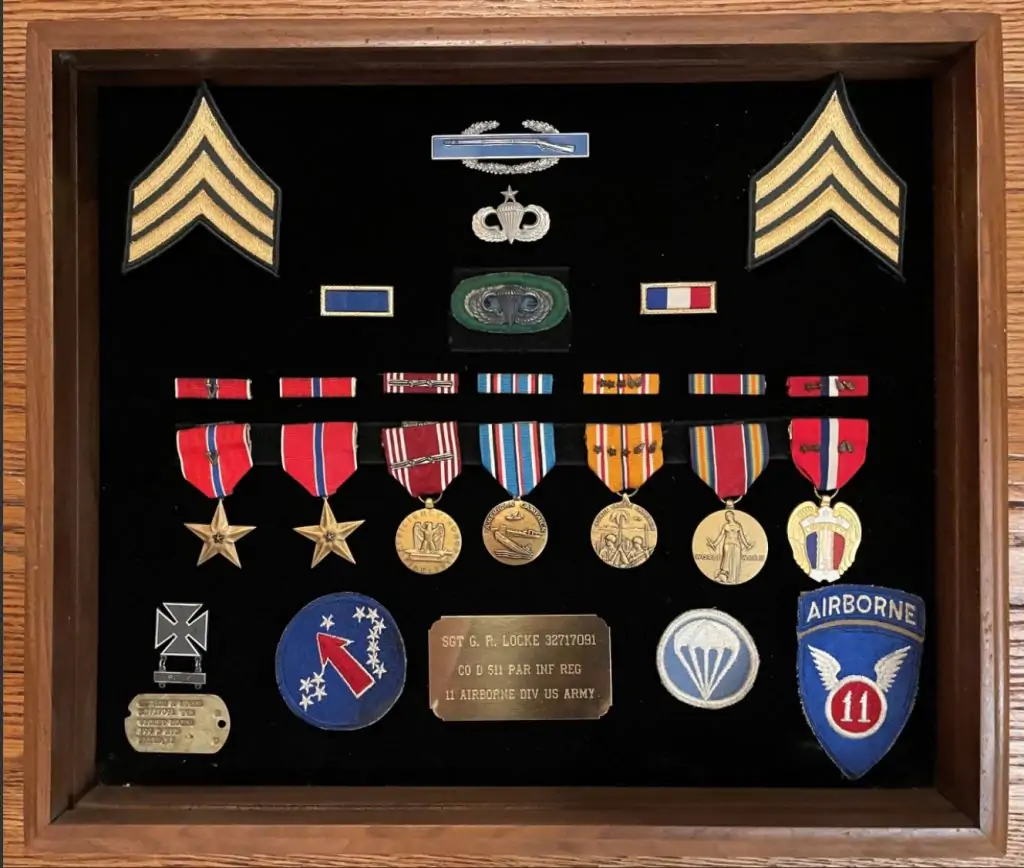
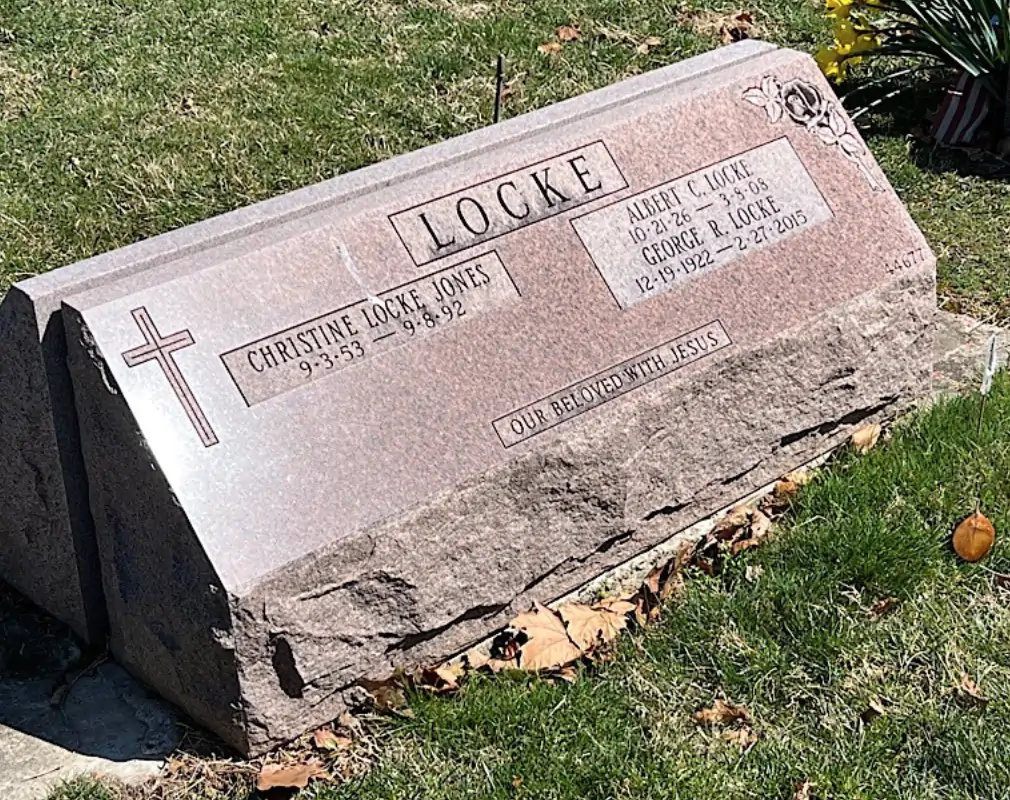
LOFT, ROBERT GUSTAVE (1916-1944). First lieutenant, United States Army. According to his World War II draft card, Loft was born in Brooklyn. As per the 1920 federal census, he lived with his parents, John and Violet, on Sterling Place in Brooklyn. His father was a driver for a milk company. The 1930 federal census documents that Loft and his nine-year-old sister were living with his maternal aunt, Minnie, and her husband in Dover, New Jersey. A November 7, 1930 issue of the Brooklyn Times Union reports the separation of his parents due to wife abuse. The article states that Loft was 8 years old, a clear discrepancy with the 1930 census. As per a newspaper article, dated March 4, 1931, Loft’s parents were granted a divorce.
According to the 1940 federal census, Loft resided as a lodger in the home of Alvin and Margaret Johnson of Plainfield, New Jersey, and worked as an inspector for a car company. As per his World War II draft card, Loft was twenty-four years old, resided at 125 Westervelt Avenue in Plainfield, and was employed by the General American Transportation Corporation in Middlesex, New Jersey. Loft noted his mother as next of kin. His registrar report, dated October 16, 1940 in Plainfield, describes him as 5′ 10″ tall, 165 pounds, with brown eyes, brown hair, and a ruddy complexion.
An undated National Jewish Welfare Board card from the Bureau of War Records documents that he was a first lieutenant. Loft was killed in action on August 17, 1944, but his remains were not returned to the United States until 1948. According to an excerpt on historians.org entitled, “Gruesome but Honorable Work: The Return of the Dead Program following World War II,” by Kim Clark:
In the fall of 1945, Congress took up legislation to bring home the fallen. But, unlike during World War I, when most of American casualties were in France, this conflict posed the tremendous logistical challenge of recovering bodies scattered across allied and enemy territory on six continents…Congress unanimously approved the Return of the Dead Program in May 1946 and President Harry Truman immediately signed off on an initial $92.5 million for the work. The job fell to the American Graves Registration Service, the Transportation Corps, and thousands of civilian employees. Moving from country to country, they located graves, disinterred and formally identified remains, prepared bodies for permanent burials, and sent them home by ships and trains…
The government let families decide whether to have their loved ones brought home or buried overseas. Polling the families was followed by delays in staffing and equipment, including steel and coal strikes that waylaid casket manufacturing, meaning the first war dead did not reach American shores until October 1947. When the inaugural shipload of bodies from Europe arrived in New York, more than 400,000 people turned out to pay tribute.
An October 7, 1948 article in the Brooklyn Daily Eagle describes a memorial service that was held at the Brooklyn Army Base pier after the arrival of the SS Carroll Victory which had transported over 7,047 war dead. Loft’s name was included in the list of those returned. Loft is also recorded as “Killed in Action” in the World War II Army and Army Air Force Casualties listing. A funeral announcement for Loft was posted in the October 27, 1948 issue of the Brooklyn Daily Eagle. The announcement states:
Funeral services for 1st Lt. Robert G. Loft, a fighter pilot, who was killed August 17, 1944 over France while on his 65th mission will be held at 8 o’clock tonight…Lieutenant Loft was born in Brooklyn and was a graduate of the Toms River High School in New Jersey. Before enlisting in November 1942, he was employed as a cost accountant by the General American Tank Corporation. He was awarded the Distinguished Flying Cross posthumously, and held the Purple Heart medal.
Loft was only twenty-eight years old at the time of his death. Section 186, lot 21441, grave FRC.
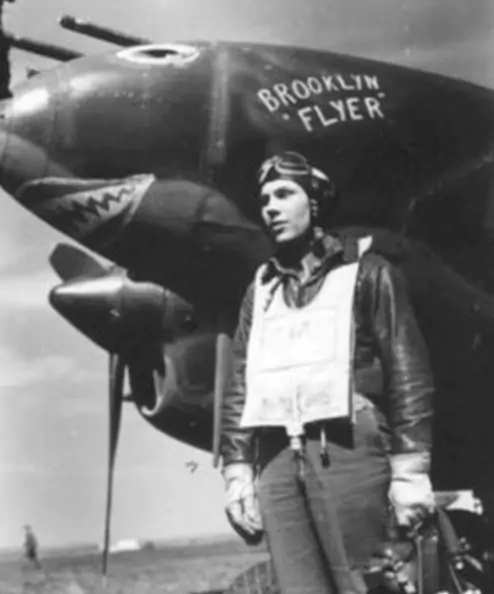
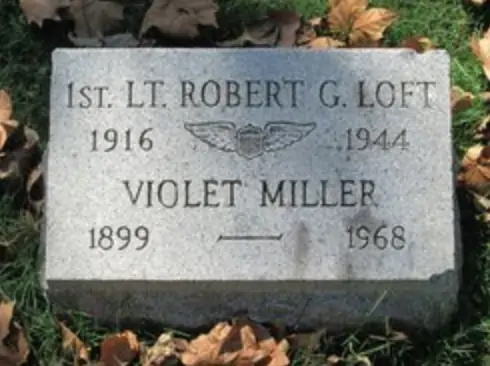
LOMBARDI, CONSTANTINE (1913-1991). Private, United States Army. Constantine was born to Italian immigrants Michael and Mary Lombardi. Mary followed her husband to the United States in 1903 with their first child, Alfonso. Constantine and his other six siblings were all born in the United States. According to the 1915 New York State census, Michael had a fourth-grade education and worked as a laborer. Mary kept the house, and could not read or write. Over the years, the family moved from Atlantic Avenue to Union Street to President Street in Brooklyn. By the time of the 1930 census, Michael listed his work as a laborer for the railroad. Sixteen-year-old Constantine’s older brother Richard was working for the Postal Service. Constantine’s mother, Mary, is not recorded as part of the household in the 1930 census.
In the 1940 federal census, Michael was listed as widowed. He and his sons, living at home with him, were all working for municipal or federal governments during this period of the Depression; Constantine, age 26, was working at a Civilian Conservation Corps camp. The census records his education as having reached seventh grade.
Constantine Lombardi registered for the draft in 1940. His employer was the Work Projects Administration, the Depression-era federal program employing millions of otherwise unemployed men and women to build the public infrastructure of the country, such as parks, schools, airports, and roads. He enlisted into the Army in October, 1942, as a private. He was described as being 5′ 3″ in height, weighing 130 pounds, engaged in semiskilled painting, construction and maintenance work, and with a “grammar school” education.
Lombardi was discharged from the Army on February 5, 1946, according to his record at the Department of Veterans Affairs. In June of that year, he married Ida R. Cesarano. The couple raised a son and a daughter, and Constantine (nicknamed “Gus”) worked for the New York City Department of Parks until his retirement. He died in 1991 at the age of 77, in Red Bank, New Jersey. He is buried in Green-Wood alongside his wife. Section Rose, lot 43900, grave 479.
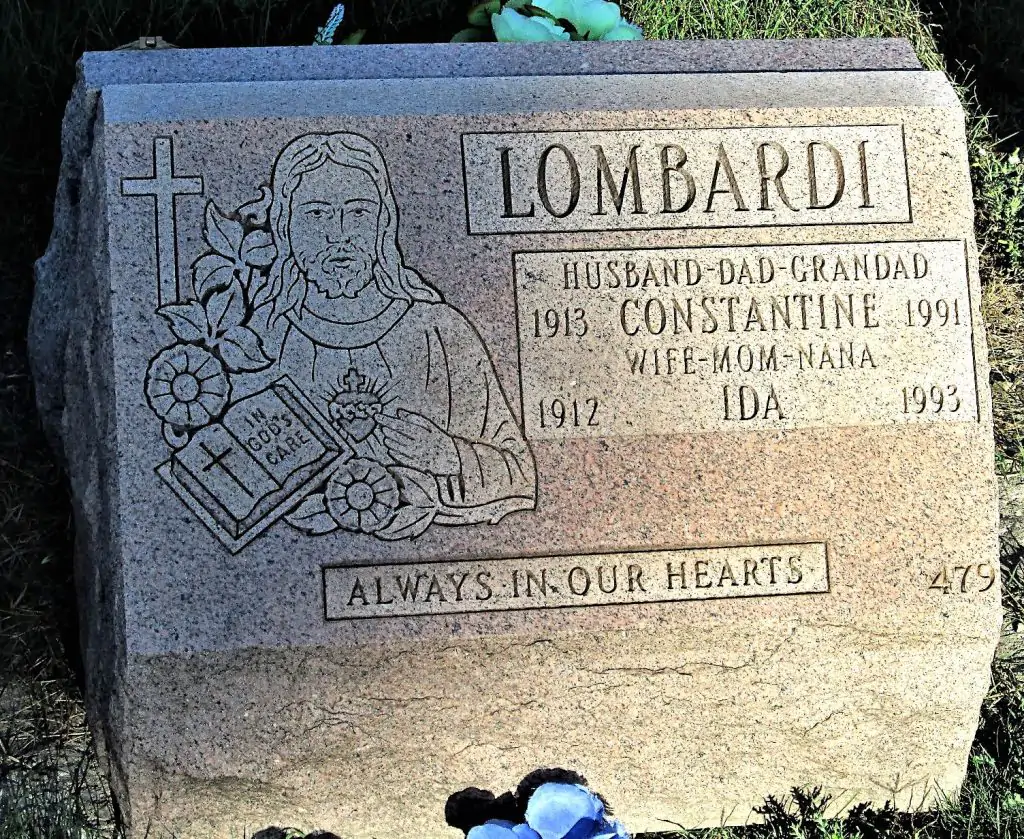
LORDI, WILLIAM PAUL (1924-1989) Tech sergeant/waist gunner, 18th Army Air Force, 3rd Bomb Division, 92nd Wing, 487th Group, 839th Squadron, United States Army. Born in Brooklyn, Lordi was the third child of Italian immigrants Vito and Katherine Lordi. When William was six years old, he lived with his parents and siblings George, Rosie and Alice at 578 16th Street, as per the 1930 census. The census of 1940 indicates that Lordi’s siblings were George, Rose, Anfrio, and Joseph; he was then 16 years old and had completed either the third or fourth year of high school, depending of the record relied upon.
On October 21, 1942, at 18 years of age, Lordi enlisted in the United States Army in New York City. His World War II enlistment record describes him as single, white, 6′ 1″ tall, 149 pounds and lists his occupation as airplane mechanics and repairman. He lived at 540 4th Avenue in Brooklyn and worked for Clermont Machine Company on 129 Wallabout Street, as per his draft registration card.
His son-in-law reports that Lordi was stationed in Lavenham, United Kingdom. As a member of the 487th Bombardment Group (Heavy) based at Army Air Force Station 137, Lordi fought in the air war over Europe which involved the strategic bombing of Nazi manufacturing, transportation and military targets by the American Air Force by day and the Royal Air Force by night (487th bg.org). On September 28, 1944, Lordi’s aircraft was shot down while on a bombing mission over Germany. He suffered the loss of an eye and shrapnel wounds and was taken as a prisoner of war. The following is a narrative of the event by Lordi’s son-in-law, as published in The History of the 487th Bomb Group (Ivo de Jong 2004):
Here is my wife’s father’s story: William P. Lordi (pictured top row left) was a waist gunner in the Army Air Corps 8th Air Force, 487th Bomb Group stationed in Lavenham in Suffolk, England. On September 28, 1944, while filling in on a B17 #44-6463 from his regular B24 crew, they were on a mission to bomb an enemy oil refinery in Meersburg, Germany. On the way to the target between Coblenz & Wiesbaden they encountered intense flak which scored a direct hit on the plane, immediately dropped out of the formation and the crew started to bail out. A large hole was bored into the aircraft behind the number 3 engine and blew out the waist windows. The aircraft continued under control, three chutes came out, two opening and the third was temporarily caught on the ball turret with a man dangling from it. Co-pilot Kelvin Pierce recalled, ‘It was our 14th mission, the approach to the target was at 27,000 feet and the anti-aircraft flak was extremely heavy. We had just released our bombs and turned away when we were hit. The plane was riddled and filled with smoke. A severely injured radio operator was treated in the Leipzig-Warren Reserve Hospital but later died of his injuries. The pilot Clarence Lamason gave his account after the war. Crew member & hero waist gunner Sergeant William Gaucheness assisted in pushing out the radio operator and other injured crew members, roused the lower ball turret gunner, fought fire in the radio room until all extinguishers were empty, returned to flight deck to help all abandon ship. My wife’s father, William Lordi, was blinded by the flak hit and was pushed out of the plane by Sergeant Bauchens. The plane crashed near Naherstille; nine of the ten crew members survived.
Lordi was captured by the Germans and was held as a prisoner of war until his return to United States Military Control at the end of hostilities in May 1945, as per records in the National Archives. In April 1945, he was admitted to a German hospital where he was diagnosed with the osteomyelitis. His medical treatment, after his release, involved a bone graft for a fracture; he was discharged in early 1947 for disability from the loss of an eye and defective hearing due to injuries caused in the line of duty, as per his WWII Hospital Admission Card. For his service, Lordi was given two Bronze Battle Stars, a Purple Heart, the Air Medal with two oak leaf clusters, the European Theater ribbon, and the Victory Ribbon, as per his son-in-law.
On July 18, 1947, at the age of 23, Lordi married Alice M. Corrigan. They had one son, William R. Lordi, who died in 1975, and two daughters, Dolores and Joan. Lordi died in Brooklyn from natural causes at age 65. Section R, lot 43043.
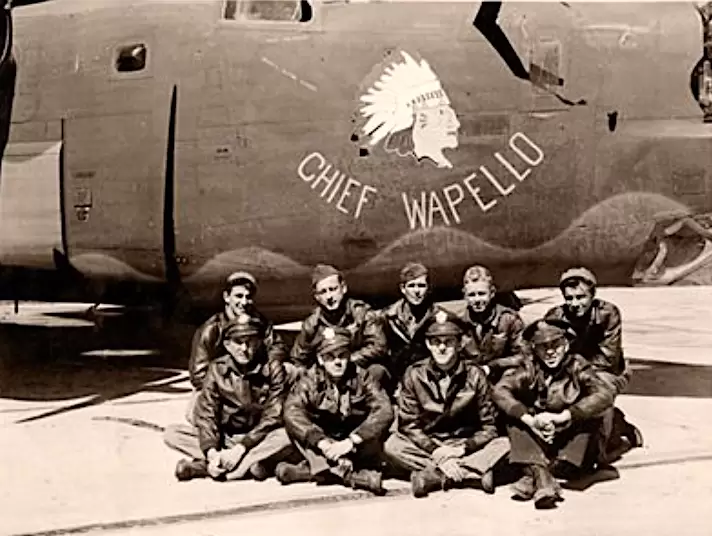
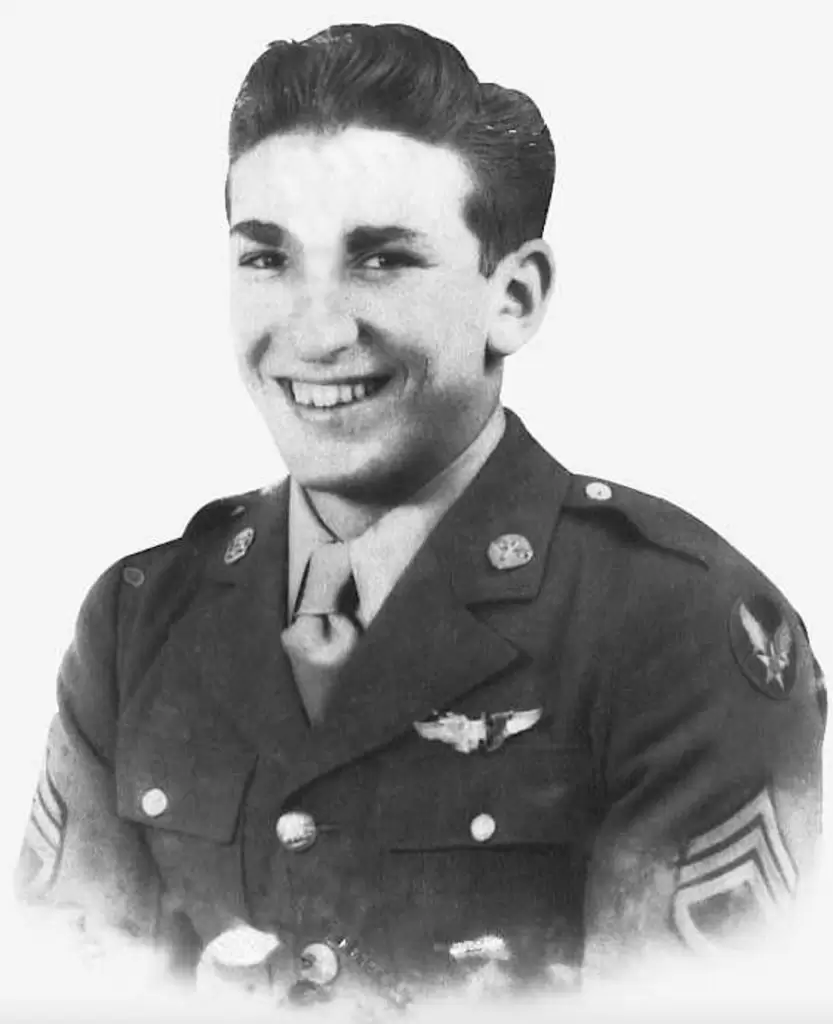
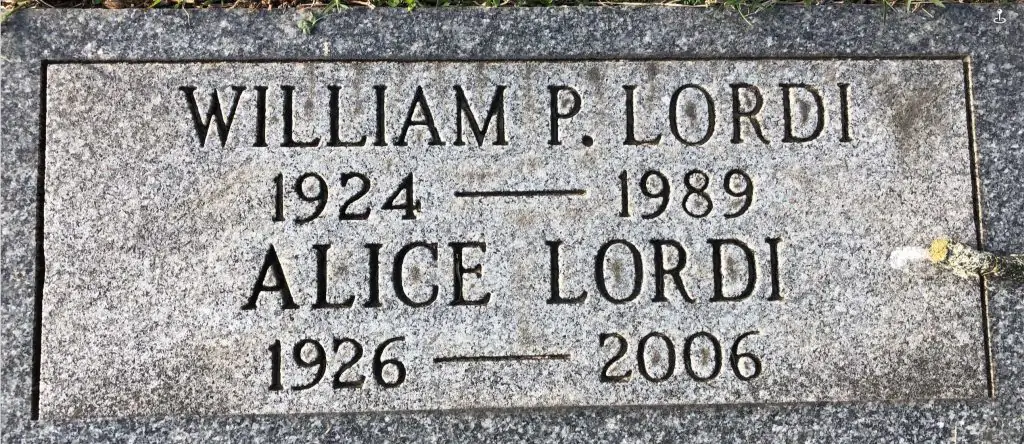
LUCCHESI, ANTHONY MASSIMO (1918-1992). Rank unknown, unit unknown, United States Army. Lucchesi was born in Brooklyn. Sometimes referred to as Tony, he was the fifth child of seven born to Italian immigrant parents, Eliseo and Antonetta (Antoinette) Lucchesi, according to his father’s United States naturalization application. The same application lists Eliseo Lucchesi’s birthplace as Chiozza-Luca, Italy, and states that he traveled to the United States on the SS Stampalia. He married his wife, Antonetta, in 1909, five years prior to entering the United States. The couple already had two children and Antonetta was pregnant with their third when they arrived in New York in March of 1914. Together, the couple raised their seven children in the house that they owned at 869 60th Street in Sunset Park, Brooklyn, according to the 1920 and 1930 federal census records.
Lucchesi was still residing at his family’s home on October 14, 1940, when he completed his draft registration card. At the time of registration, Lucchesi reported that he was an employee at the Chandler Oilcloth Company, located at 241 37th Street in Brooklyn. According to World War II Army enlistment records, exactly two years later, on October 14, 1942 (the same year his father applied to become a naturalized citizen), Lucchesi joined the United States Army. On his enlistment record, his occupation is described as one of “semi-skilled welders and flame cutters.” Anthony had a grammar school education. Lucchesi’s two brothers, Albert (see) and Eliseo Jr. (see), served in World War II as well.
Roughly a year after World War II ended, on August 19, 1946, Lucchesi married Helen F. Ritorto, according to his marriage license accessed through Ancestry.com. The 1950 census, Kings County, shows Lucchesi and his wife residing in the multigenerational Lucchesi home in Sunset Park.
Lucchesi and his wife, Helen, had two daughters together. Their first daughter, Antoinette Tiedeman, was born March 28, 1947, followed by their second, Cathy Cimmino, who was born August 20, 1950. Helen Lucchesi was pregnant with Cathy when the 1950 census for Kings County was recorded, so she is not listed as one of the inhabitants. Many other family members are listed however, making for a very full house. Some of these family members include Lucchesi’s parents, his older sister, Petrina, her husband, their three children, and Lucchesi’s older brother, Albert.
According to Anthony’s niece, Carol Luchessi, following the war, he worked as a longshoreman on the docks in Brooklyn from the 1950s on. Whether his work ended because the docks closed or he retired is unclear. At the time of his death, he had four grandchildren; Gary, Paul, Renee and Robert.
While his niece explained in a statement that Lucchesi and his wife were separated for some time, an obituary published in The Daily News on February 25, 1992, describes Lucchesi as a “loving husband” and “devoted father.” Helen Lucchesi was buried next to her husband in Green-Wood in 1994. Section 71, lot 44605, grave 89.
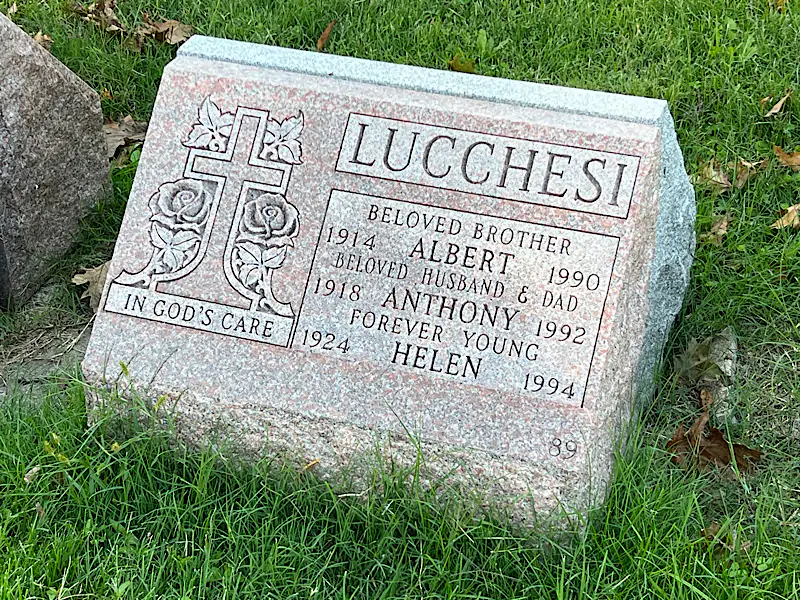
LUCCHESI, JR., ELISEO (or LEWIS, LEW, LEEZIE) MARIO (1920-1996). Corporal technician, Headquarters Battery, 68th Armored Field Artillery, United States Army. According to the Social Security Applications and Claims Index (1936-2007), Lucchesi was born in Brooklyn to Eliseo Lucchesi Sr. and Antoinette Mianile Lucchesi. The claim also makes note of three name listings: November 1937: name listed as Lewis Mario Lucchesi; February 1942: name listed as Eliseo Mario Lucchesi, Jr.; and January 1996: name listed as Eliseo Lucchesi. Familiarly, he was known as Leezie and was called Lew by his friends. Lucchesi had six siblings, three brothers and three sisters. He attended Our Lady of Perpetual Help School in Brooklyn completing grades 1-8. Upon graduation, he enrolled in the Central Needle Trade High School. After completing his studies there, he worked at Berkshire Tailors, at 5917 8th Avenue in Brooklyn, not far from his family home.
His draft registration card, likely dating from 1942, records his age as 21 years old and reports that he was residing at 869 60th Street, Brooklyn. His place of business was still Berkshire Tailors. Lucchesi designated his father, living at the same address, as the contact person. His army enlistment data states that he was single with no dependents, 5′ 8″ tall, weighed 154 pounds, and had completed two years of college. His civil occupation is listed as tailor.
Enlisting at Fort Jay on Governors Island on July 17, 1942, his rank at that time was private. According to his daughter, Carol Lucchesi, he also served as an interpreter and saw action in Italy (Naples-Foggia, Rome-Arno, North Apennines, and the Po Valley) and Africa (Tunisia). She also shares that Lucchesi was awarded the European-African-Middle Eastern Service Medal, Good Conduct Medal, and the GO3 HQ68 QPM FA BN 10/17/43 Lapel Pin. His daughter relates that at the time of his enlistment, he was engaged to his sweetheart Rosa (Rose) Anna Richichi.
Lucchesi entered service with two of his brothers, Anthony (Tony) who is also buried at Green-Wood, and Arthur who was laid to rest at Resurrection Cemetery on Staten Island. All three brothers returned home safely and started families of their own.
Upon his return from service, Eliseo applied for a marriage license in Brooklyn on October 8, 1945, and married Rosa on October 21, 1945. The couple had two children, Annette (Palumbo) and Carol, and four grandchildren: Jennifer, Stefanie, Andrea and Matthew. Eliseo was also happy to be a great-grandfather. His daughter relates, “My father was a tailor and ran the Valet Service in the hotel industry in Manhattan.” Among the celebrities who Lucchesi serviced were Paul McCartney and George Segal. According to the Social Security Death Index, Lucchesi’s last place of residence was in Brooklyn. His wife and loving in-laws, Frank and Jenny Richichi, are interred with him. Section 88, lot 44332, grave 2.
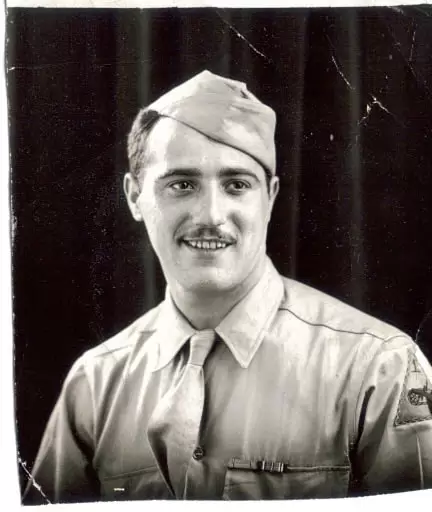
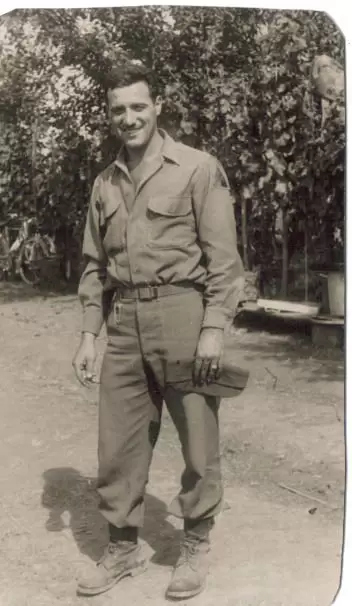
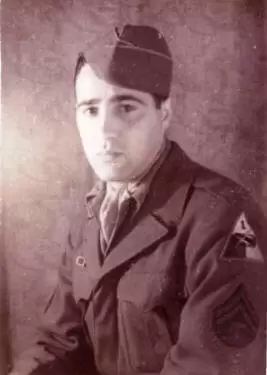
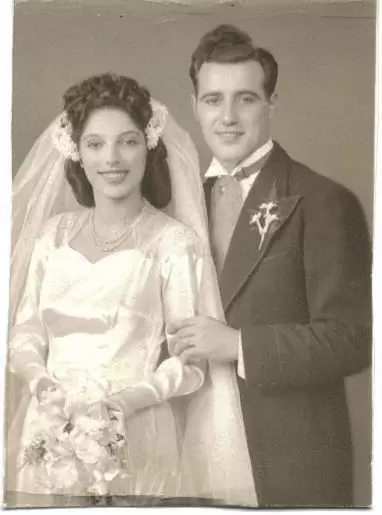
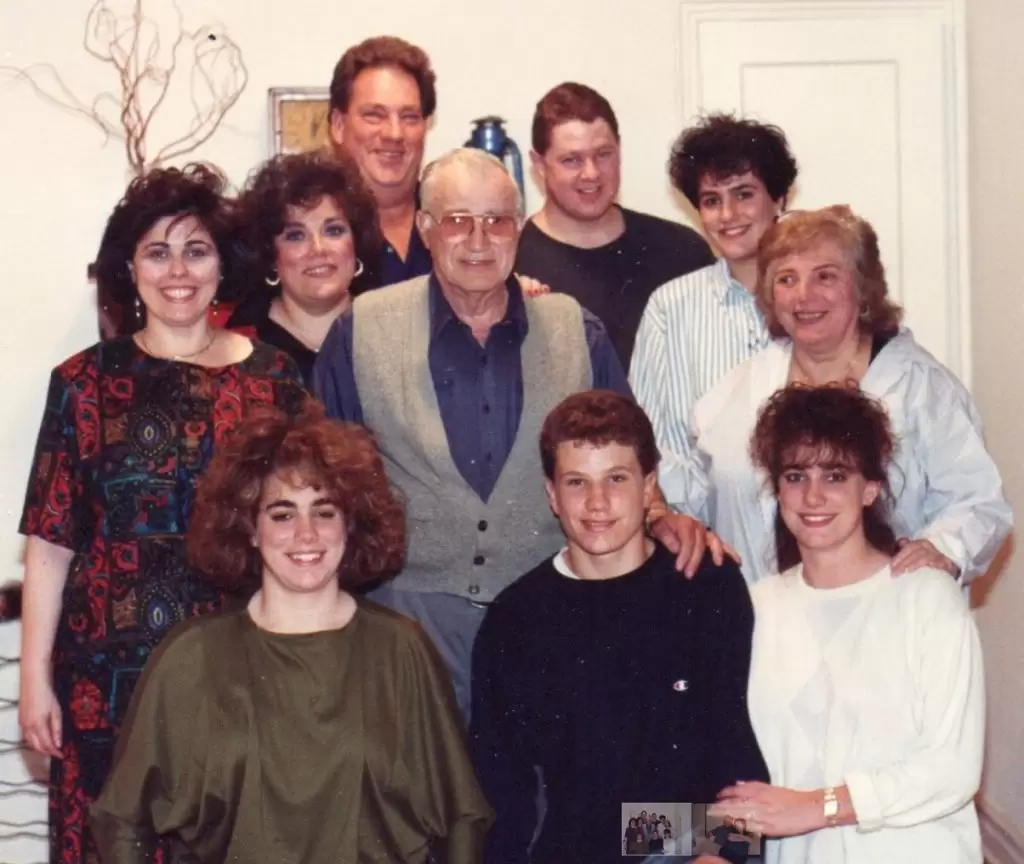
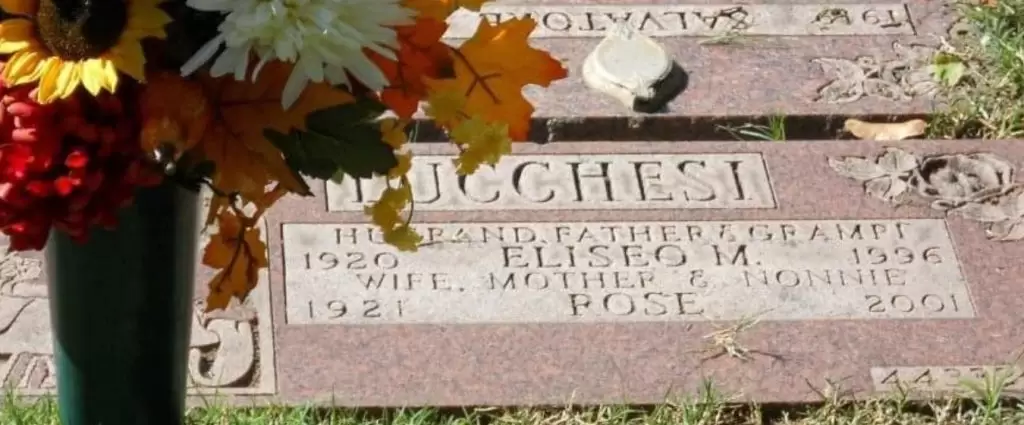
LUNDELL, GEORGE HERBERT (1911-1945). Captain, United States Army. Lundell was born in Pearl River, New York. As per the 1920 census, he was living on Sixth Avenue in Brooklyn with his Swedish-born parents Henning (known as Henry) and Selma née Holgerson and younger brothers, Sudnie (Sidney), age seven, and Henry, age one; his father was working as a machinist at a shipyard. The 1925 New York State census reports that the family was living on 78th Street in Brooklyn; his father was employed as a machinist and had become a naturalized citizen. Baby Henry passed away in 1924, a sister Lillian was age two, and George and Sidney were attending school. By the time the 1930 census was recorded, George was working as a clerk in a paint shop, his father still worked as a machinist and the family was living on 77th Street in Brooklyn.
An article in the Brooklyn Daily Eagle on June 3, 1932 (pictured below), reports that George Lundell was among 120 cadets on the school ship, Empire State,who were learning to be third officers and third engineers in the American Merchant Marine. The young men were on a summer cruise. The 92-day voyage took the trainees from the Brooklyn Navy Yard to Albany, Washington, Baltimore, Norfolk, Jacksonville, Miami, Tampa, New Orleans and Galveston in the United States before sailing to London and LeHavre, France, then returning to Brooklyn on September 3. About 200 friends and relatives waved from the Brooklyn dock as the cadets began their voyage.
In March 1933, Lundell is pictured as a graduate of the Gyro-Compass School in the SperryScope, a publication of the Sperry Rand Corporation. Also in 1933, Lundell applied for a Seaman’s Protection Certificate (a form of insurance). He described himself as 5′ 11″ tall with blue eyes, blond hair, fair complexion and scar on the back of his neck. He noted that he was a seaman with a license as a third mate with two years of training on the Merchant Marine Academy’s training ship, the Empire State. On March 13, 1933, he was listed on the manifest of the Coamo, a ship arriving in New York from San Juan, Puerto Rico. At that time, he had spent two years at sea. He was listed on the manifest of the SS Steelmaker on September 7, 1934, arriving at Tacoma, Washington, from Vancouver, British Colombia.
On October 2, 1935, Lundell married Mary Ethel Collins in Brooklyn. The couple was living at 1259 78th Street and George was employed as a Merchant Marine officer. The 1940 census shows that the Lundells were living on 12th Avenue in Brooklyn with their three-year-old daughter, Charlotte, and George was a shipping clerk for a steamship line. According to his World War II draft registration card, filed in 1940, Lundell was living at 7812 12th Avenue in Brooklyn, had no home telephone, and was working with the Port Line Limited at Pier 26 in Brooklyn; his wife was listed as his emergency contact.
Little is known about Lundell’s service in World War II. He was listed as a captain and a patient aboard the General A. W. Greely on September 26, 1945. He died in Brooklyn at Station Hospital at Fort Hamilton on December 24, 1945. His death was attributed to pneumonia and congestive heart failure. Lundell’s death certificate confirms his service in World War II. He is buried in the same lot as his parents. Section 7, lot 37880, grave 2.
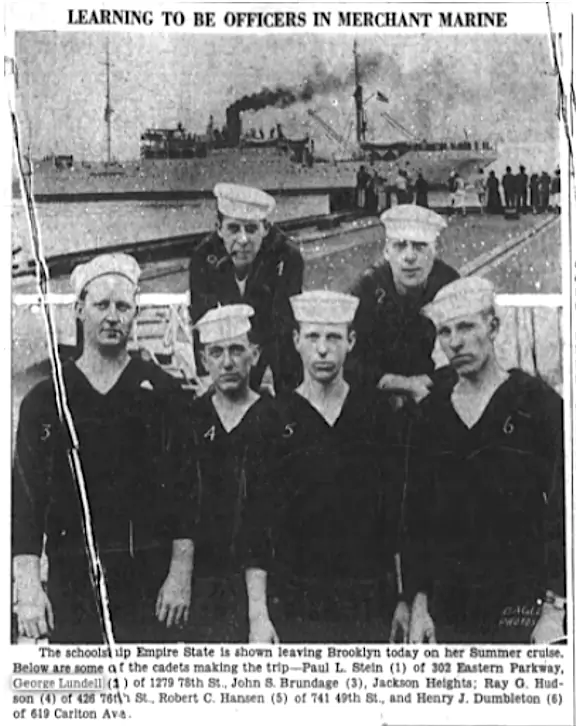
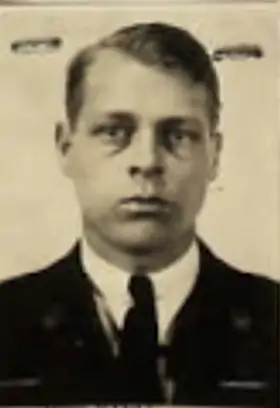
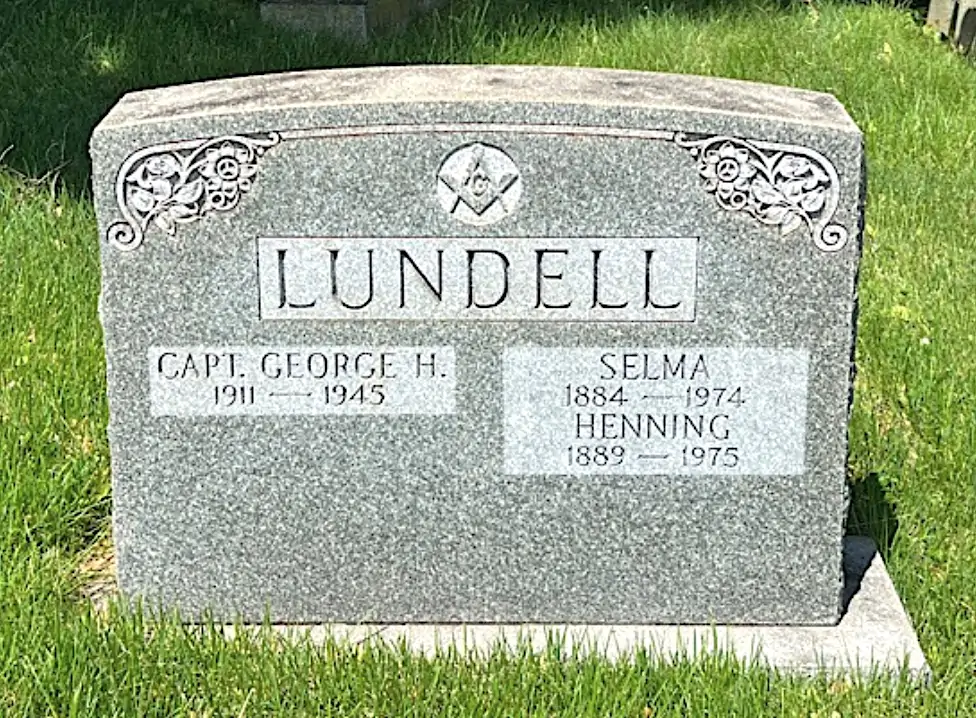
LUTKINS, JR., THEODORE LaRUE (1924-1970). Private first class, 13th Armored Division, United States Army. Born in Brooklyn, he shared the same first name, middle name, and surname with his father, grandfather, and great-grandfather. The Brooklyn Blue Book and Long Island Society Register of 1910 list his great-grandparents as Mr. and Mrs. Theodore Larue Lutkins at 568 Carlton Avenue and his grandparents as Mr. and Mrs. Theodore Larue Jr. at 369 Washington Avenue. However, his father’s wedding notice in The Brooklyn Daily Eagle, September 16, 1923 edition, refers to his father as Theodore La Rue Lutkins Jr. Records from the 1925 Kings County census report that he resided at 68 Montague Street with his parents, Theodore LaRue Lutkins and Virginia W. Sells Lutkins. His father’s occupation was leather merchant. The 1930 Nassau County census relates that Lutkins and his parents were living at 215 Schenck Avenue in North Hempstead. The census taker added the suffix “3rd” to the young Lutkins. Additional household members were William, his younger sibling; Annie Giffords, an Irish servant; and piano teacher Mary Collins, a lodger. This census reports that both parents were born in New York as well as his maternal and paternal grandparents. As per the 1940 Putnam County census, the family had expanded to three children with a daughter, Virginia, born nine years earlier. The family then resided in Towners in Putnam County, New York.
The United States National Archives and Records Administration reports that Theodore Lutkins had completed two years of high school. His draft registration card shows that he printed and signed his name with the suffix “Jr.” The card also details his place of residence as Towners, Putnam, New York, that he was 18 years old, and designates Theodore LaRue Lutkins as the contact person. He was inducted into the United States Army on October 21, 1943, and his active service started on November 11, 1943. He was assigned to the 13th Armored Division, known as the Black Cats. According to his daughter, he saw action in Central Europe and the Rhineland with 1 year, 11 months, and 3 days of Continental Service and 6 months and 8 days of Foreign Service. His military occupational specialty was classified as a Rifleman 745. As per his daughter, “He handled all types of light infantry weapons, such as the automatic rifle, light machine bazooka, and grenade launcher(s).” She also relates that he was honorably discharged on April 21, 1946, and received the following awards: American Campaign Medal, the European-African-Middle Eastern (EAME) Good Conduct Medal, World War II Victory Medal, the Bronze Battle Service Star for the Rhineland and Southern Germany Campaigns, the Presidential Citation and a Holland Campaign Medal, for his service with the Second Armored Division.
After the war, Lutkins worked as a stockbroker. He may be the Theodore La Rue Lutkins V cited in the April 29, 1953 edition of the Los Angeles Times as being engaged to Marie Antoinette Mathis. The announcement states, “Mr. Lutkins attended Pawling School in Pawling, N.Y. He served with the Army in World War II.” There was a second engagement announcement in the May 1, 1953 edition of The New York Times. This article also cites that “Her fiancé (Lutkins) was graduated from Pawling (N. Y.) School and belongs to the St. Nicholas Club of New York. He is with the New York Stock Exchange firm of Hayden, Stone & Co.” The couple is listed in the 1953 California Marriage Index. There is no information detailing how this marriage ended. However, according to the September 16, 1957 edition of The Berkshire Eagle, Lutkins married Frances Crane Colt of Massachusetts on September 9, 1957. The announcement reports that Lutkins was associated with the New York Stock Exchange firm of Hayden Stone & Co. and that he “graduated from Trinity-Pawling School, and served overseas with the 13th Armored Division in World War II.”
There is a discrepancy pertaining to his schooling. The three newspaper announcements document him graduating from Pawling School, but, according to his daughter, he graduated from Carmel High School, located in Carmel, New York, in 1943. The couple had three children, Cynthia, Virginia, and Marshal and divorced a few years before he passed away. His daughter Virginia shared this memory of Lutkins: “He was a devoted serviceman during WW II and a lifelong patriot. The only time I saw him cry was watching Eisenhower’s funeral on t.v. Sadly, he died soon afterwards when I was nine.” Lutkins is interred next to his brother, William B. Lutkins (see), a Navy veteran of World War II. Section 142, lot 34027, grave RLC.
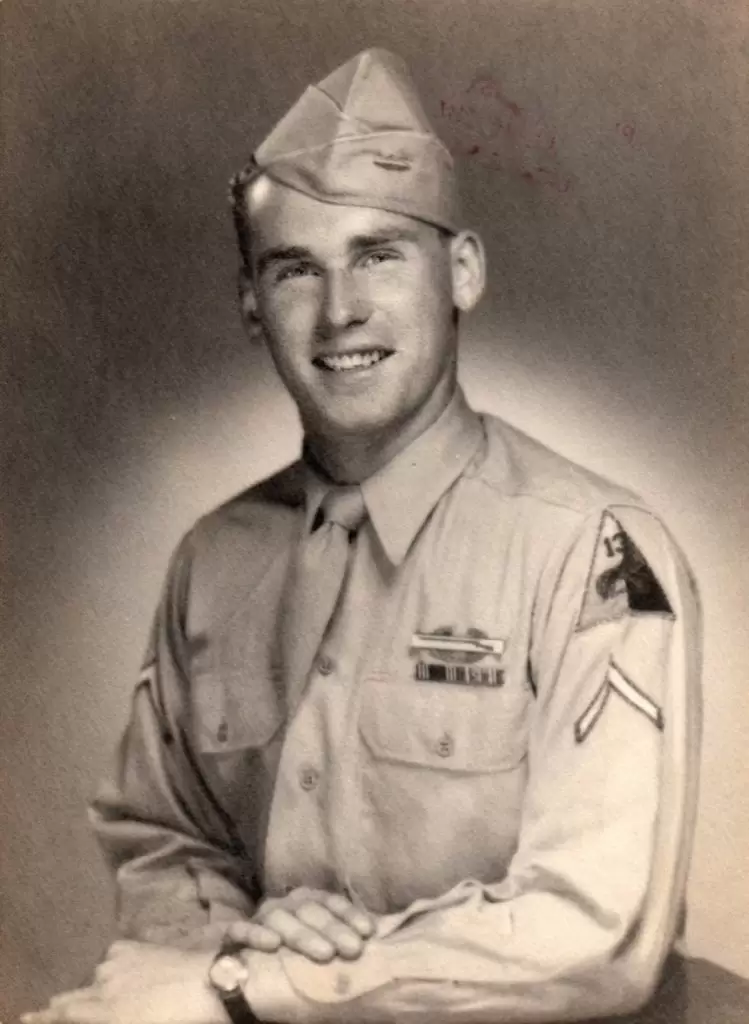
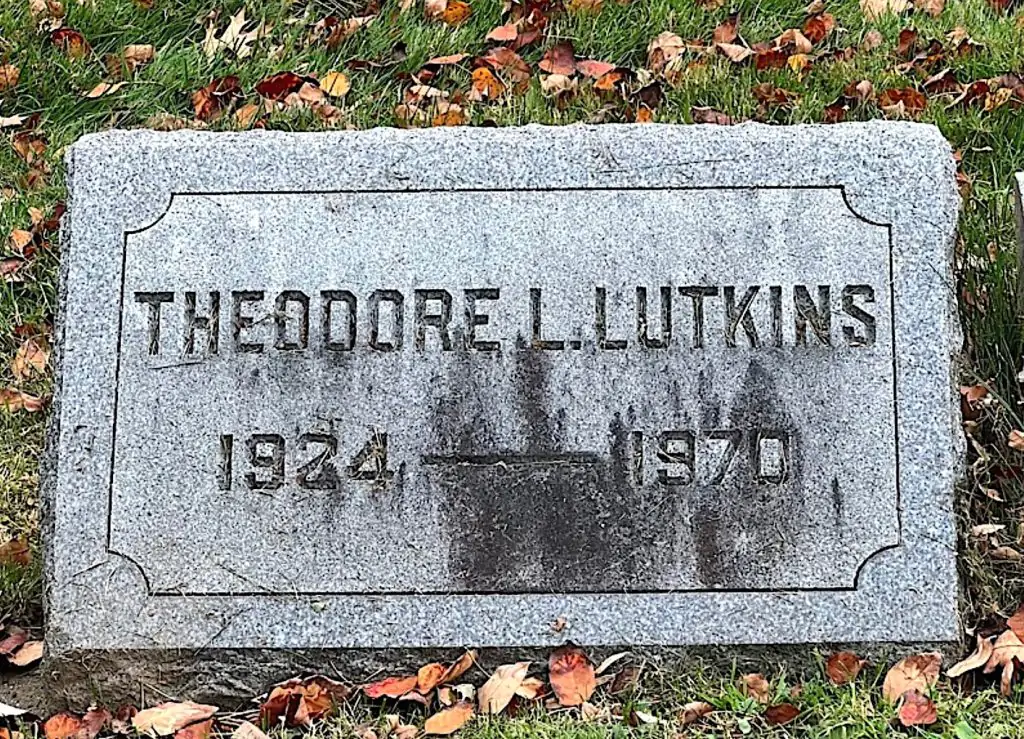
LUTKINS, WILLIAM BURRESS (1926-2012). Storekeeper 3rd class, United States Navy. Born in Brooklyn, William was already living in North Hempstead, Long Island, by 1930, according to that year’s federal census. William’s father, Theodore, was a leather merchant, and along with his mother, Virginia, and older brother Theodore (see), the household included a servant and a lodger. By the time of the 1940 federal census, the family was living in Putnam County, New York, with nine-year-old sister Nancy.
Lutkins registered for the draft on his 18th birthday—July 7, 1944. He apparently still lived with his parents in Towners, New York. He listed his father as his employer. William was described as 5′ 10″ in height, weighing 165 pounds, with blue eyes, blond hair, and a light complexion.
He appeared in the Navy’s muster roll of USS White Plains (CVE-66) for the last quarter of 1945. His rating was seaman 1st class (radio man). Three months later, he was reclassified as radioman 3rd class. Three months after that, his classification changed again—to storekeeper 3rd class. The USS White Plains was an escort carrier, designed to transport smaller aircraft, such as Wildcat fighter planes. She participated in major actions in the Pacific Theater in 1944, but in 1945 was busily supporting United States bases with replacement aircraft. In the latter part of that year, White Plains began “Magic Carpet” duty, bringing American fighting men home from the Pacific Theater over numerous trips. White Plains was decommissioned on July 10, 1946. The next day, on July 11, Lutkins was discharged from the Navy, four days after his 20th birthday.
According to his obituary, published in the St. Lucie News Tribune, Lutkins attended New York University after his discharge, graduating in 1950. He joined Bankers Trust Company the same year, rising to vice president and senior portfolio manager, and retiring in 1992.
In 1958, he married Margaret Kendall Powell, and they settled in Canaan, Connecticut. William and Margaret had three sons: Peter, David, and William. After retirement, the couple moved to Vero Beach, Florida, where William died in 2012. William is the third generation of the Lutkins line to be interred in Green-Wood. Section 142, lot 39027.
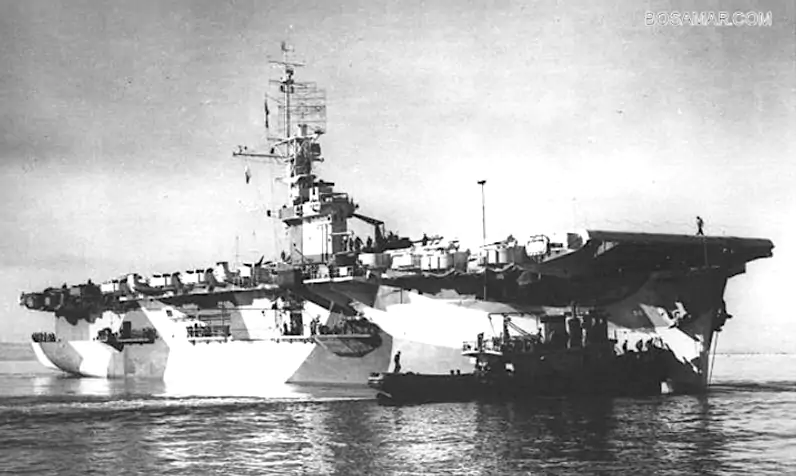
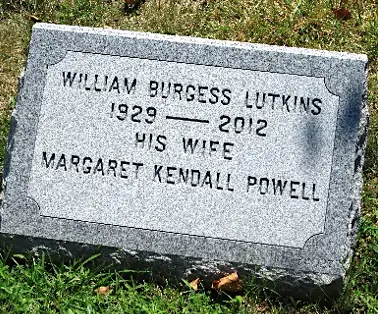
LYNOTT, JR., EDWARD FRANCIS (1921-2000). Private, 726th Squadron, Army Air Force. Edward was born in Brooklyn to parents Edward and Cecilia. The 1925 New York State census records that he lived with his parents in Brooklyn and had an infant brother named George. By the time of the 1930 census, the family had moved to Queens and there was a third child, Cecelia. The 1940 census shows the family living at 5 Columbia Court in Brooklyn. Edward, 18, had completed one year of high school, had worked 13 weeks in 1939, and had earned $144.
According to his draft registration card, filed when he was 20 years old on February 15, 1942, Lynott was a Brooklyn native who lived at 5 Columbia Court in that borough. He had no home phone, identified his mother, Cecelia, as his emergency contact, and was working for Gudebrod Bros. Silk Company at 225 West 34th Street in Manhattan. The accompanying registrar’s report notes that he was 5′ 11½” tall, 164 pounds with brown hair and eyes, a light complexion and a faint scar on his left cheek.
Army Enlistment records document that he enlisted as a private on September 2, 1942, at Fort Jay on Governors Island, New York Harbor. Those records note that he had completed two years of high school and was semi-skilled in construction. On February 23, 1943, Lynott received a certificate noting that he was certified in airplane mechanics at Seymour Johnson Field, North Carolina. He was shipped overseas on an unknown date.
As per Edward’s Individual Flight record, he was a member of the 726th Squadron, 451st Bomb Group, 47th Wing, assigned to the 15th Air Force. As of May 1944, he had recorded 194:35 hours of student combat time and 471:45 total pilot time that year.
Lynott was awarded a certificate identifying him as a member of the Caterpillar Club, an organization whose members survived an emergency parachute jump. The name is derived from the silk threads of the parachutes and its connection to the silkworm. Lynott’s jump took place on July 14, 1944. According to World War II American and Allied Prisoners of War, 1941-1946 records, he was a prisoner of war as of that date and was a private in the Army Air Corps, Heavy Bomber organization. His aircraft was downed in Hungary, he was detained by Germany, and was held at Stalag Luft 4 in Pomerania, Prussia, until he was returned to United States military control upon liberation. As a result of his petition to the War Claims Commission on September 6, 1951, he was awarded $299 for his imprisonment from July 14, 1944, through May 8, 1945, V-E Day (victory in Europe).
On February 16, 1950, Edward obtained a marriage license in Brooklyn to wed Agnes J. Murray. Their marriage was announced in the Brooklyn Daily Eagle the next day. At that time, Edward lived at the same Columbia Court address and Agnes lived at 2812 Fort Hamilton Parkway in Brooklyn. The 1950 census reports that Lynott was married, lived at 2812 Fort Hamilton Parkway, was employed as a New York City bus driver who had earned $3,800. His household included his wife, listed as June (perhaps Agnes’s middle name) and three lodgers. Surprisingly, he is not listed as a veteran of any war.
In 1974, he lived at 59 East 10th Street in Brooklyn. As per United States Public Records, Lynott died on December 30, 2000; burial at Green-Wood was on January 4, 2001. Section 94, lot 44607, grave 178.
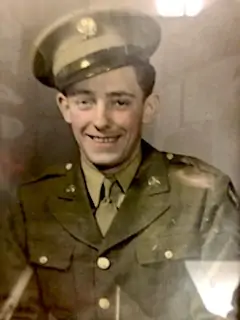
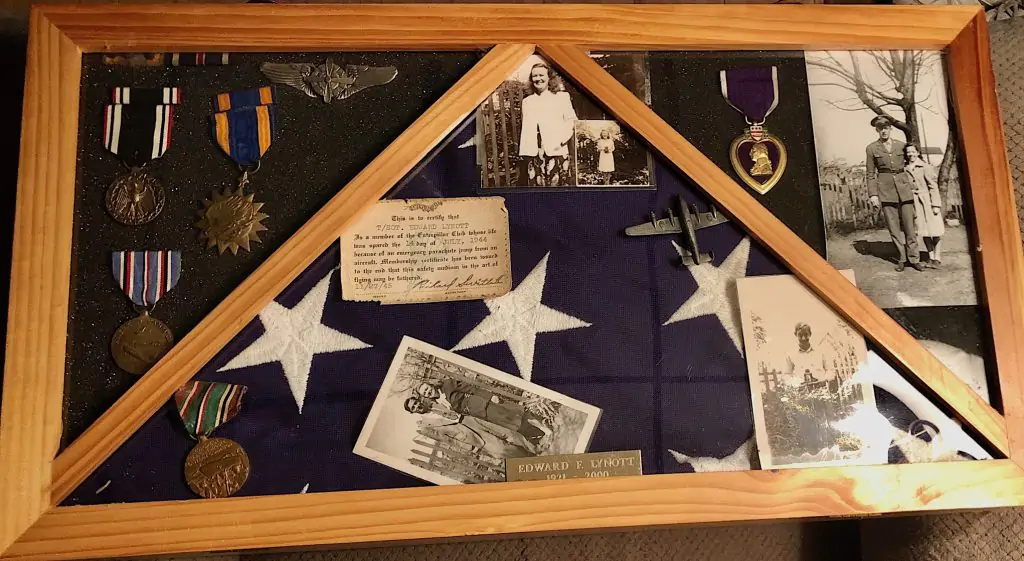
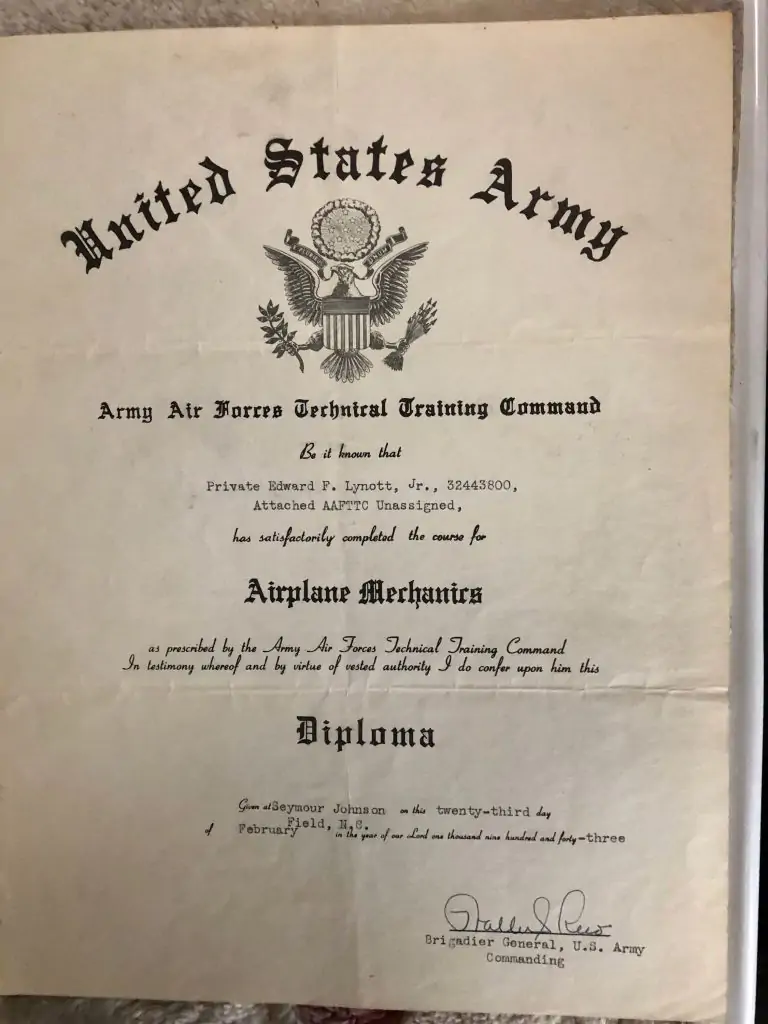
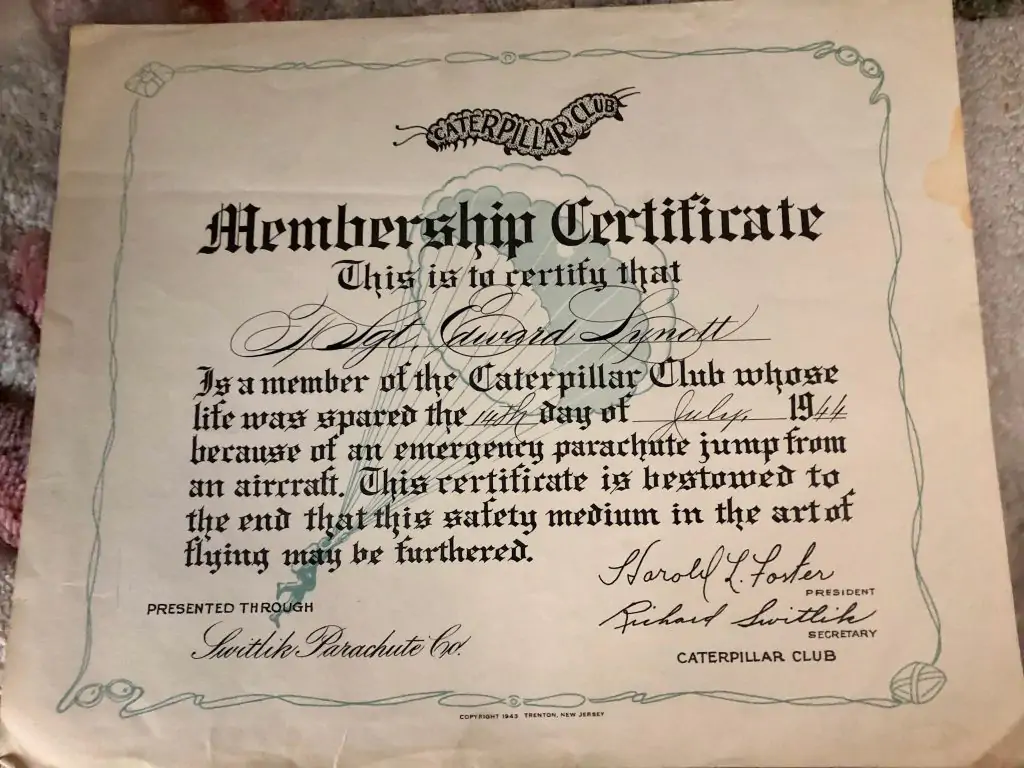
MAHONEY, JOHN EDWARD (or NED) (1911-2012). Musician first class, United States Navy. He was born in Sault Ste. Marie, Minnesota, to Carl Mahoney, born in Michigan, and Minnie Mahoney, born in Canada. According to the 1920 federal census, Ned, as he was called familiarly, had an older brother, Charles, and an older sister, Minnie. By the time of the 1930 federal census, 18-year-old Ned was still living in Sault Ste. Marie and was employed as an assistant school supervisor. Soon after his graduation from high school, Ned journeyed east to study at the Ithaca Conservatory of Music. According to his obituary, he then enrolled at the Ernest Williams School of Music in Brooklyn, graduating in 1934.
Ned Mahoney began a professional career as a cornet soloist with the 69th and 7th Regiment bands of The New York State National Guard. He also served in the National Guard’s 107th Infantry 1936-1939, according to his daughter, Barbara. In 1937, he became assistant cornet soloist with the Goldman Band, and joined Leonard Smith and Frank Elsass to form the Goldman Cornet Trio, also known as The Three Aces. At the same time, he organized and conducted the Babylon, Long Island, High School Band, and began teaching brass students privately.
Mahoney’s draft registration card, of 1940, states that he lived on Ocean Avenue in Brooklyn and worked for the Babylon Public Schools in Babylon, Long Island. As to the person who would always know his address, he listed his friend Ernest Williams at the same Ocean Avenue address.
In 1942, at the age of 30, Ned married Anne E. Hubbs, a student at the Ernest Williams School. In the same year, he enlisted in the Navy, according to his obituary, serving as a cornet soloist and assistant bandmaster of the Brooklyn Navy Yard Band for two years. He was then assigned to the USS Yosemite, a destroyer tender serving the Pacific Theater. Yosemite supported ships and crew at Eniwetok Atoll, Leyte Gulf, the Philippines, and San Pedro Bay, among other locations, for most of 1945. Mahoney received the Philippine Liberation, the American Area Campaign, and the Asiatic Pacific Area Campaign Ribbons.
Following his discharge in 1945, he founded Ned Mahoney Music, a music studio, retail store, and instrument rental program for Long Island’s public schools. He and Anne raised three children: Barbara, Carol, and David. He continued to lead bands for church, civic and charitable groups. Mahoney died at his home in Valley Stream, Long Island, at the age of 100. Section 155, lot 31462.
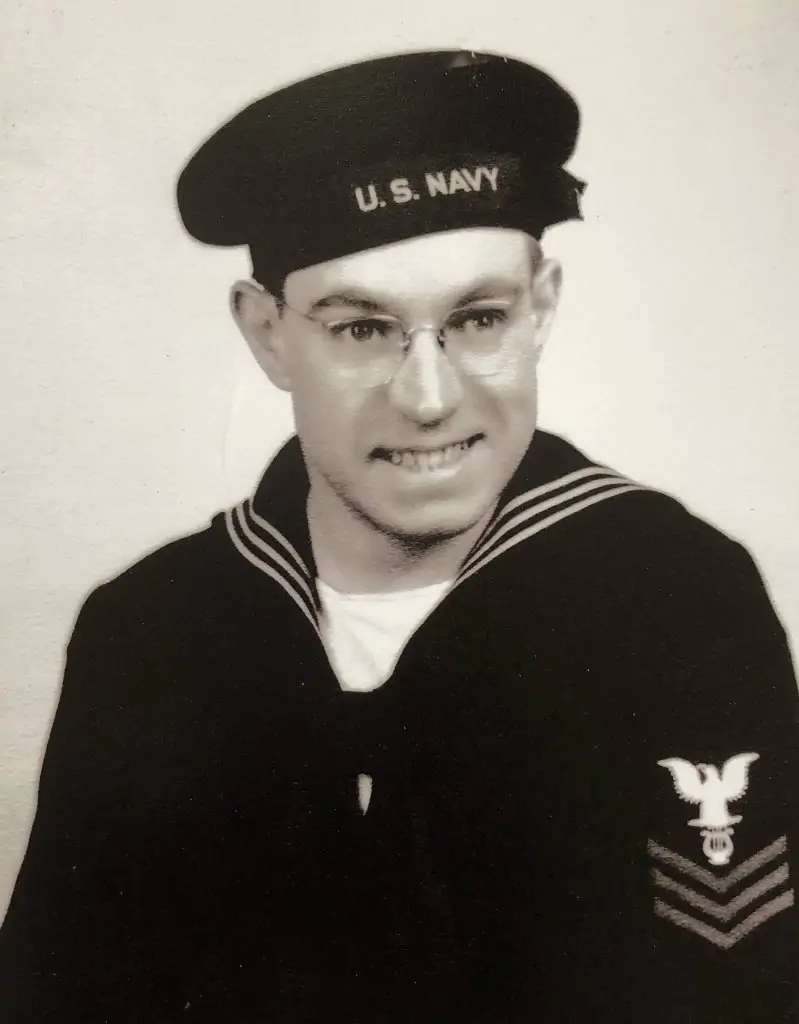
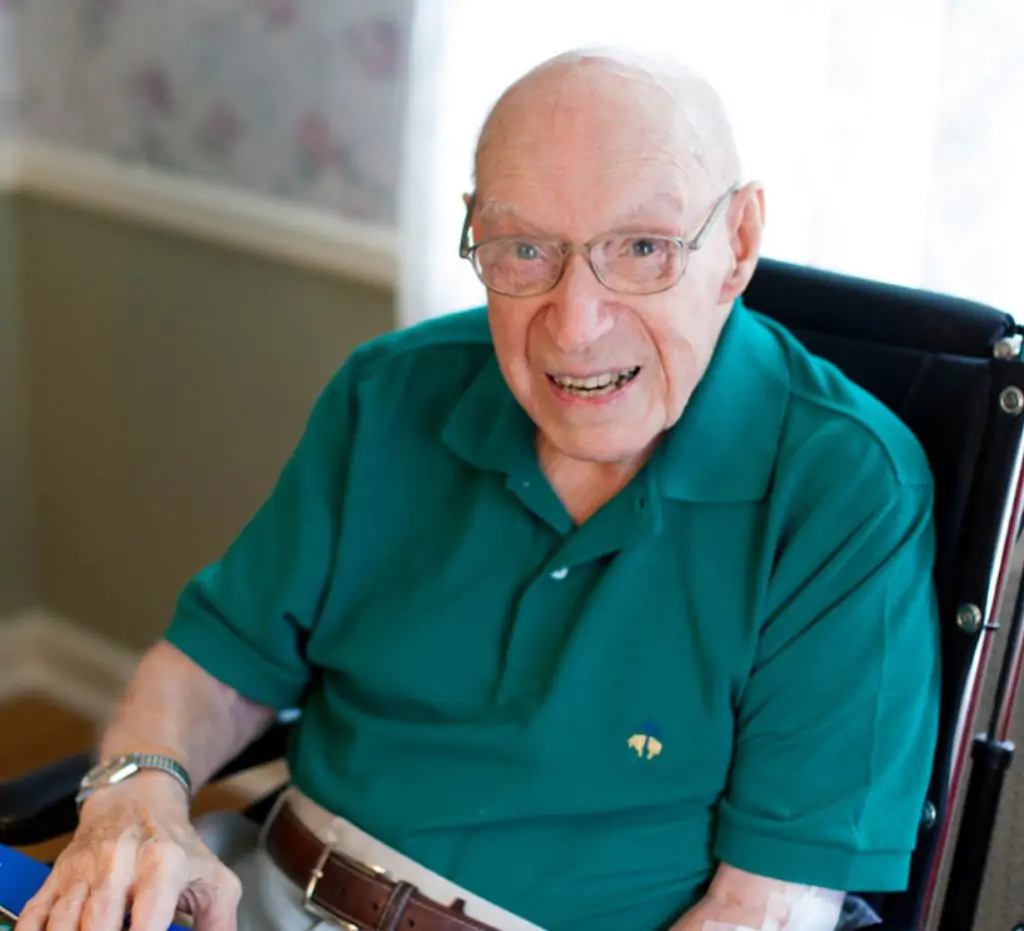
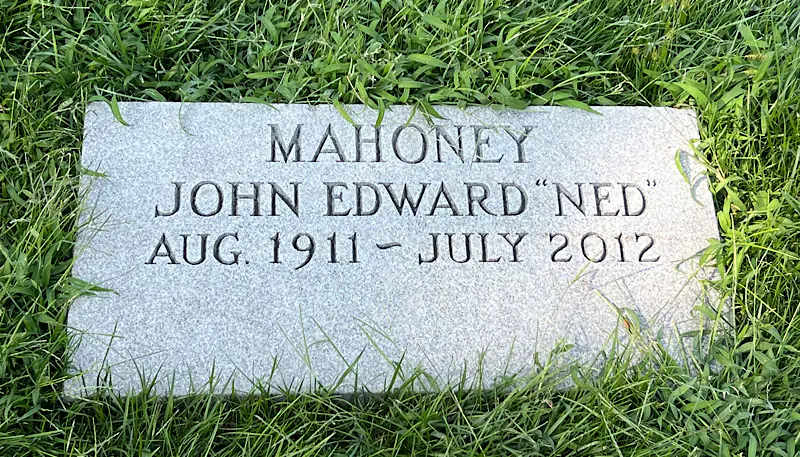
MANOS, GEORGE (1922-1984). Tec4, 643rd Tank Destroyer Battalion, United States Army. George was born in New York City to George and Agnes Manos. His father immigrated from Greece in 1911 and his mother immigrated in 1919. George had three siblings: Stella 9, Manouel (see) 6, and James (see) 4. The family lived on 60th Street in Brooklyn in 1930, according to the federal census. Ten years later, according to the 1940 federal census, George was unemployed, while his older sister worked as a seamstress and his younger brothers were both in school.
George Manos signed his World War II draft registration card on June 30, 1942, while he was working at the Pure Food Restaurant on 3rd Avenue in Brooklyn. He was 5′ 11″ tall, 162 pounds, with a dark complexion, brown eyes, and black hair. He enlisted on October 12, 1942, and was discharged from the Army on November 26, 1945. His enlistment records report his occupation as waiter.
Manos served in the 643rd Tank Destroyer Battalion with a tec4 rank. That unit had been activated on December 15, 1941, just eight days after the attack on Pearl Harbor. After completing his training, he arrived in Cherbourg, France, on September 15, 1944, with his battalion. It went by the simple motto of “Hit Hard,” and was placed in France to aid the Allies’ push into Europe to defeat the Germans. His battalion first engaged in Belgium on December 22, 1944, equipped with towed guns. The battalion was rushed into action when a major German offensive initiated the Battle of the Bulge. They were deployed to support the Third Armored Division, and continued to do so until December 26, 1944. They also were attached to the 82nd Airborne Division and the 83rd Infantry Division. The 643rd crossed the Roer River in February 1945, and crossed the Rhine and Elbe Rivers in March. They were later withdrawn and took up occupation duties in the Harz Mountains.
Following the war, George married Penelope Hionas in January 1947 in Brooklyn. They would have three children, Gregory, Jim, and Andrew, and two grandchildren, Melissa and Matthew. Manos worked for most of his life as a restaurateur. His funeral liturgy was conducted at the Kimisis Theotokou Greek Orthodox Church. Andrew and Penelope are interred with him. Yard, lot 39000, grave 1660.
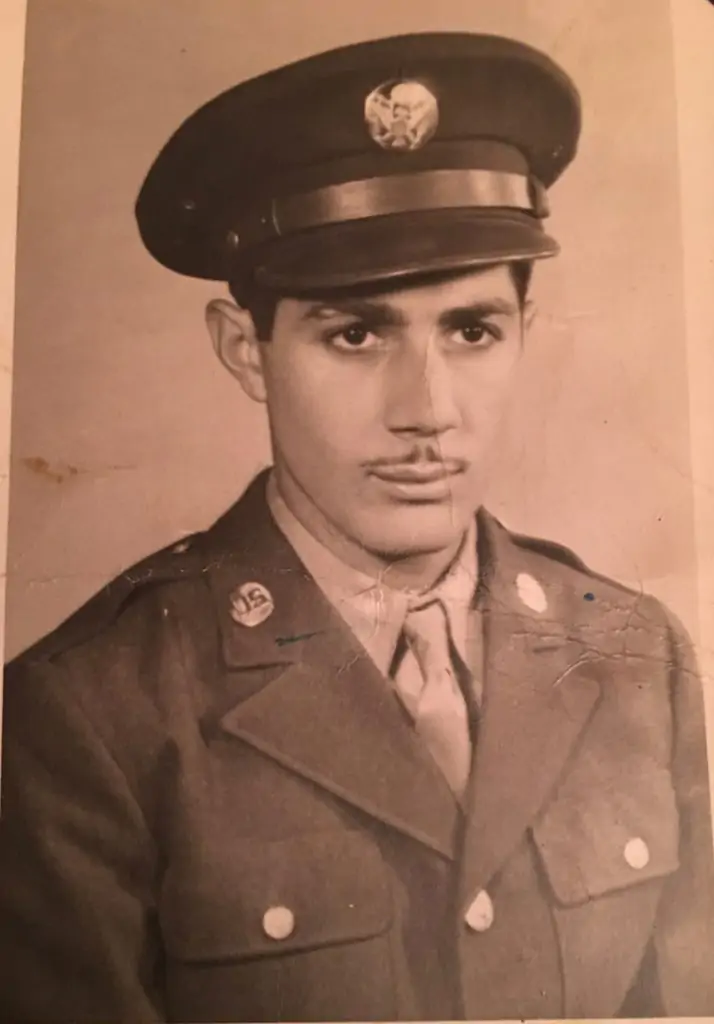
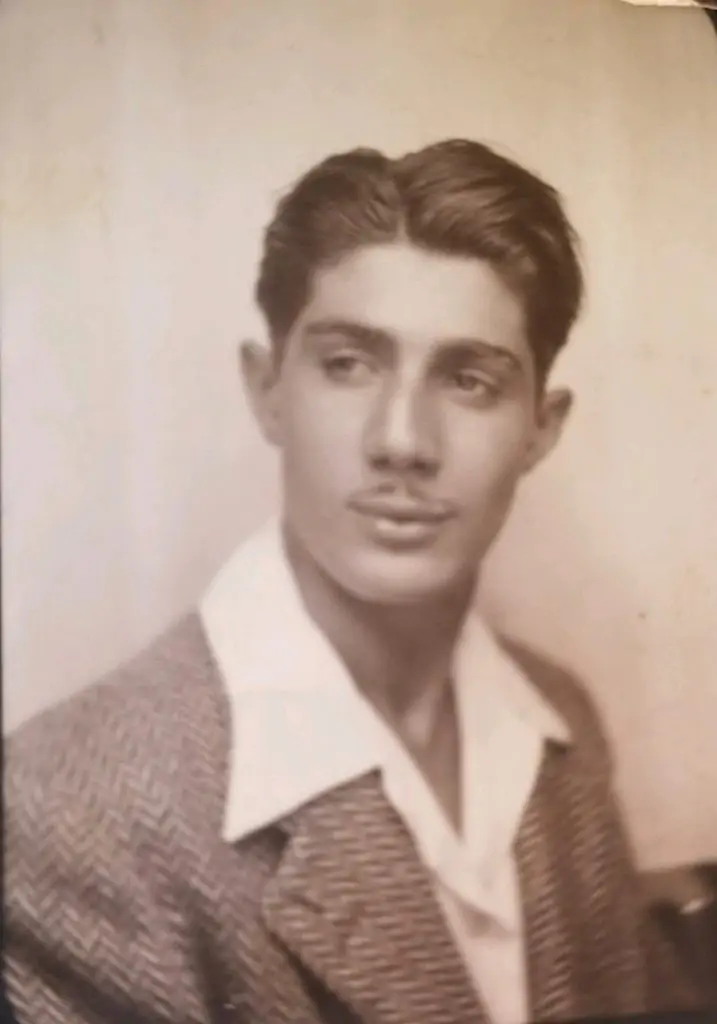
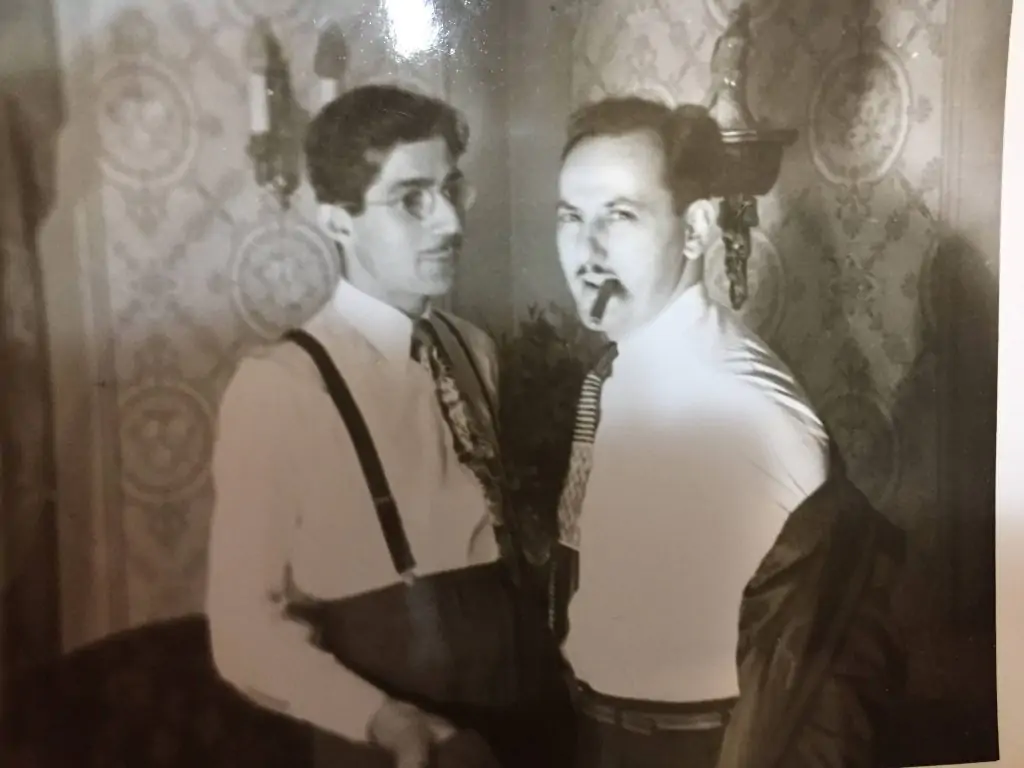
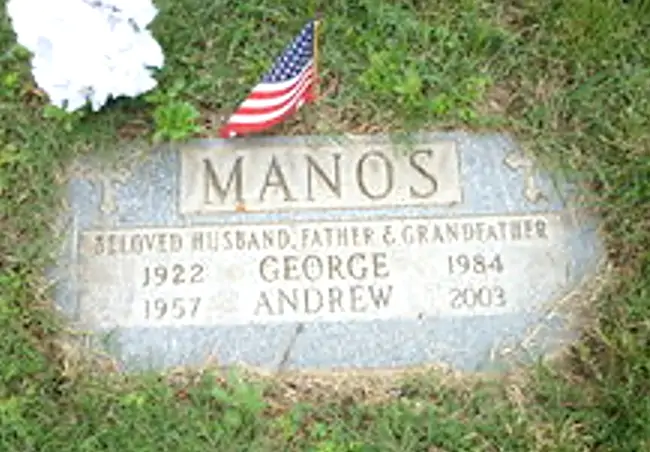
MANOS, JAMES (1925-1975). Aviation cadet, 3701st Army Air Force Unit, United States Army. Manos was born in Brooklyn to John and Agnes Manos, according to the 1930 census. His parents were from Greece and were naturalized citizens of the United States. His father worked as a restaurant chef. The Manos family consisted of four children: Stella, George, Manouel, and James. The family resided at 364 60th Street, Brooklyn. According to the 1940 census, his family’s address was 314 85th Street, Brooklyn, and his father owned a restaurant.
As per the United States National Archives and Records Administration, Manos enlisted in the Army on November 22, 1943, at Fort Dix, New Jersey. He was assigned to the Air Corps as a private. According to his daughter, Joanne Manos Gully, Manos served at Amarillo Field, Texas, and remained in the United States through the course of his enlistment. His two brothers, George (see) and Manouel (see), also served in World War II and are interred at Green-Wood Cemetery. His daughter related that he was the recipient of the American Theater Ribbon, the Good Conduct Medal, the World War II Victory Medal, and the Army Air Forces Certificate of Appreciation for War Service. As per the Enlisted Record and Report of Separation document, Manos was honorably discharged on November 8, 1945.
His daughter also shared that he graduated in 1950 from the Polytechnic Institute of New York with a Bachelor of Aeronautic Engineering degree. He married Zographia Nicholson on September 13, 1953, and the couple had four children, three daughters and one son. He worked as an aeronautical engineer at Fairchild Hiller, Republic Aviation for twenty-five years. His primary residence was 314 85th Street, Brooklyn. Section N, lot 43002, grave 1.
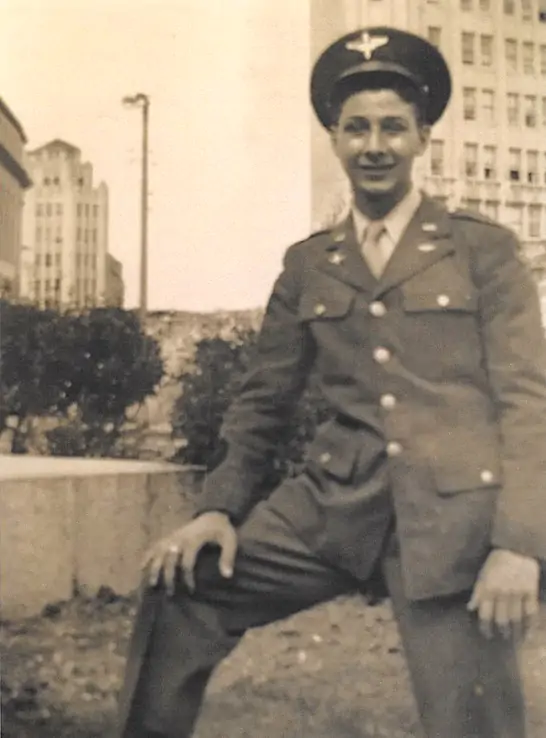
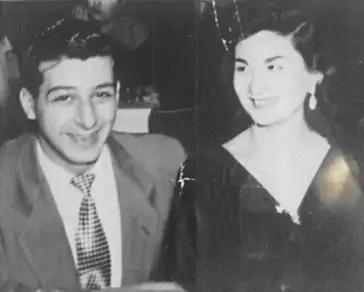
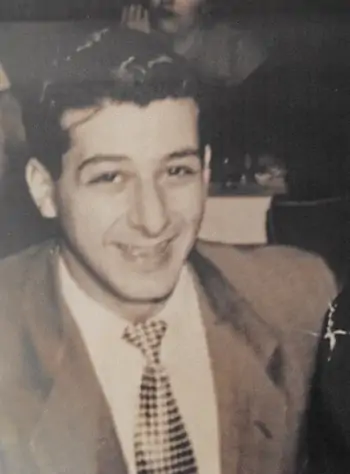
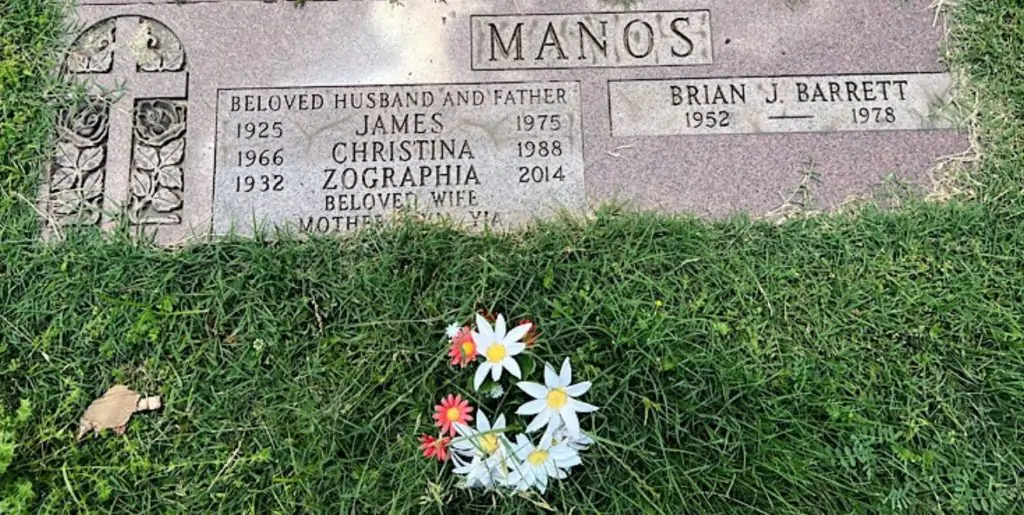
MANOS, MANOUEL J. (1923-1979). Staff sergeant, United States Army. Manouel was born in Brooklyn to John and Agnes Manos, who immigrated from Greece. At the time of the 1930 census, John Manos was a naturalized citizen who was a chef in a restaurant and a veteran of the World War. He was living in a rental at 364 60th Street with his wife, children, and brother in-law, had been married ten years, spoke Greek at home and owned a radio set. Manouel had an older sister, Stella, an older brother, George, and a younger brother, James (see). By the time of the 1940 census, Manouel’s father was a restaurant owner and owned the family’s residence at 314 85th Street in Brooklyn; all four children were living with their parents.
At age 18, Manos registered for the draft. His draft registration card notes that he lived at the aforementioned address on 85th Street, that his mother was his emergency contact and that he worked for his father at 9302 Third Avenue in Brooklyn; the family had no home telephone. As per the Department of Veterans Affairs BIRLS (Beneficiary Identification and Records Locator Subsystem) Death File, he enlisted on November 12, 1942, and was discharged on January 23, 1946. His daughter reports that he was a staff sergeant in the United States Army serving under General Headquarters in the Pacific. He was involved in the actions in Luzon, New Guinea and the Southern Philippines. Manos was awarded the Asiatic Pacific Service Medal, the Good Conduct Medal, and the World War II Victory Medal.
On January 15, 1947, Manos obtained a marriage license in Brooklyn to wed Catherine Policandritis; they were wed on January 26. He graduated from Fordham College in 1947 and from Brooklyn Law School in 1951. In 1951, he was listed as an attorney registered with the New York State, United Court System, Office of Court Administration. In addition to being an attorney, Manos was the managing editor of West Publications.
As per his obituary in the Daily News, he reposed at the Walter B. Cooke Funeral Home and his funeral took place at the Kimisis Theotokou Greek Orthodox Church in Brooklyn. Donations were requested for The Help of Retarded Children at 200 Park Avenue South in Manhattan. He was survived by his wife, Catherine, children John, Valerie, Sofia and Alice, grandson Christopher, brother George and sister Stella. Section 41. lot 43899.
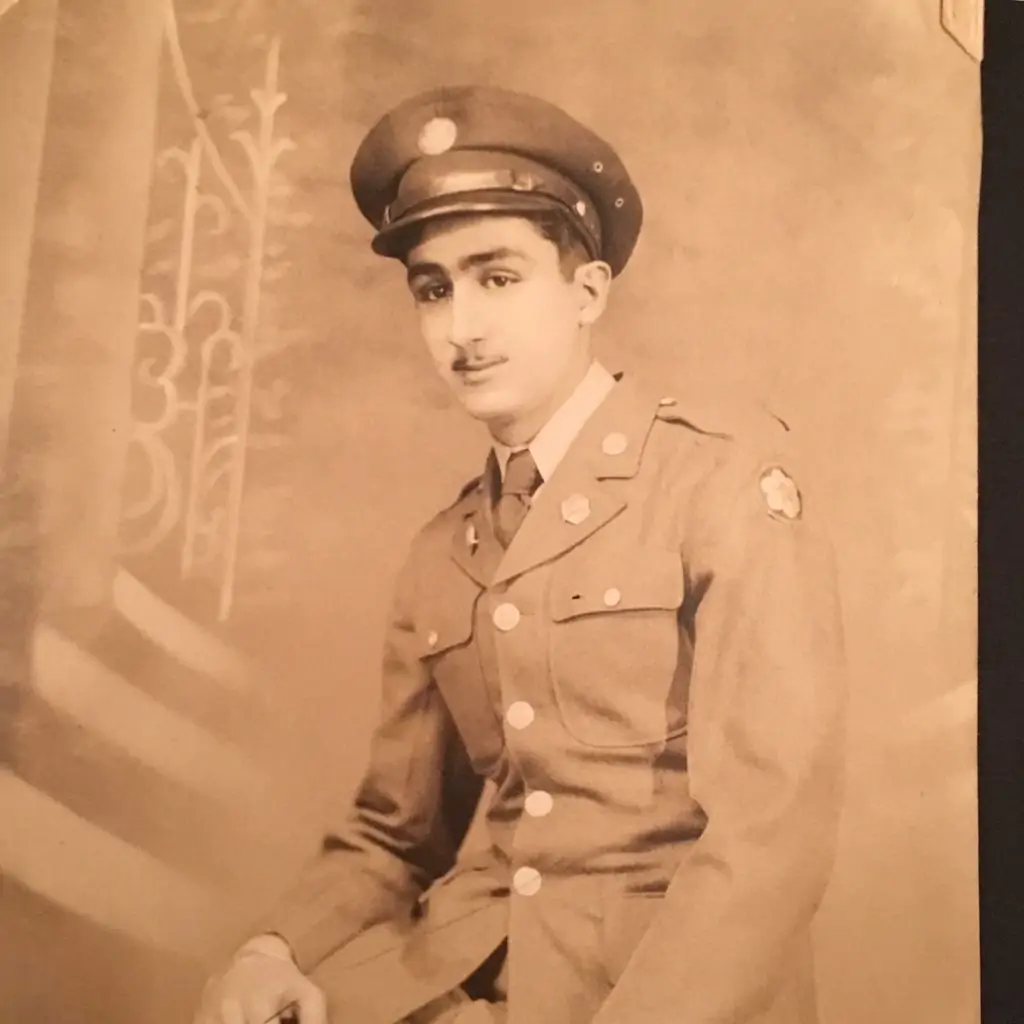
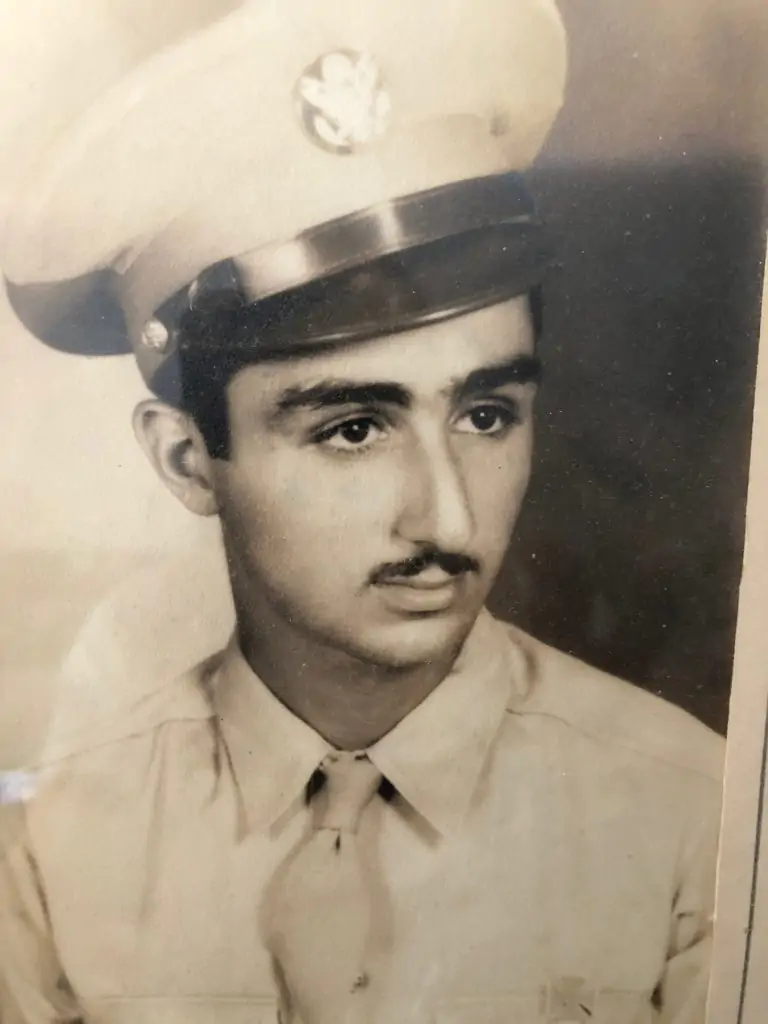
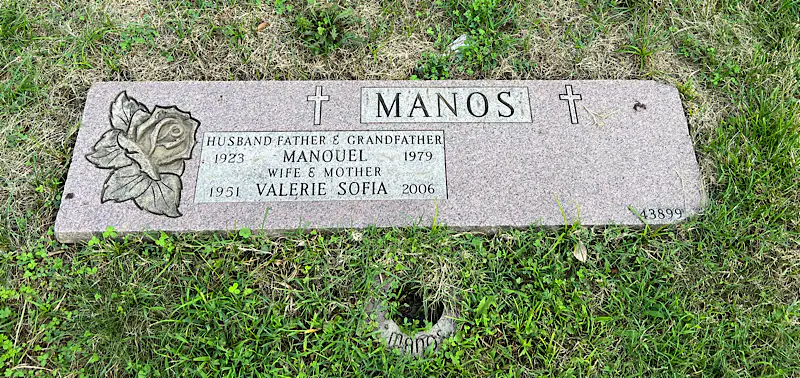
MARAVEL (or MARAVELIA, MARVELAS), JAMES PETER (1912-2006). Military service unknown. James was born in the United States to Greek immigrants Peter and Stevroula (later Stella) Maravelia. According to the 1920 federal census, eight-year-old James, along with his parents and two younger sisters, Evelyn and Despina (later Nellie), lived on Flatbush Avenue in Brooklyn. James’s father worked as a restaurant chef. By the time of the 1930 federal census, 17-year-old James was a student at Brooklyn Technical High School. The family had added a third daughter, Mary, and the family name was listed as Marvelas. James’s graduation from high school in June, 1931, was noted in The Standard Union newspaper. There his surname was listed as Maravel.
By the time of the 1940 federal census, the Maravel family still lived together on Dean Street, and 27-year-old James worked as a restaurant waiter. The census reported that James had attended college. His mother’s two brothers, Peter and Aris Younaker, were living with the Maravel family, along with Mary and Evelyn, two of James’s three adult sisters.
James registered for the draft in October, 1940, at the age of 28. He listed his sister, Evelyn, as the person who would always know his address. He was employed by George Scourbys on Flatbush Avenue. James was described as 5′ 11½” tall, weighing 165 pounds, with brown eyes and hair and a light complexion.
No information is available about James’s military service. As per his obituary appearing on February 28, 2006, he was a veteran of World War II.
James and Lillian Evelyn Xanthos were married on October 22, 1943. According to the 1950 federal census, James lived in Brooklyn with his wife and two daughters; eight-year-old Patricia and two-year-old Alexis. James worked as a waiter in a night club. He died in Englishtown, New Jersey, in 2006, at the age of 93, according to his obituary in the New York Daily News. Section 61, lot 44703, grave 19.
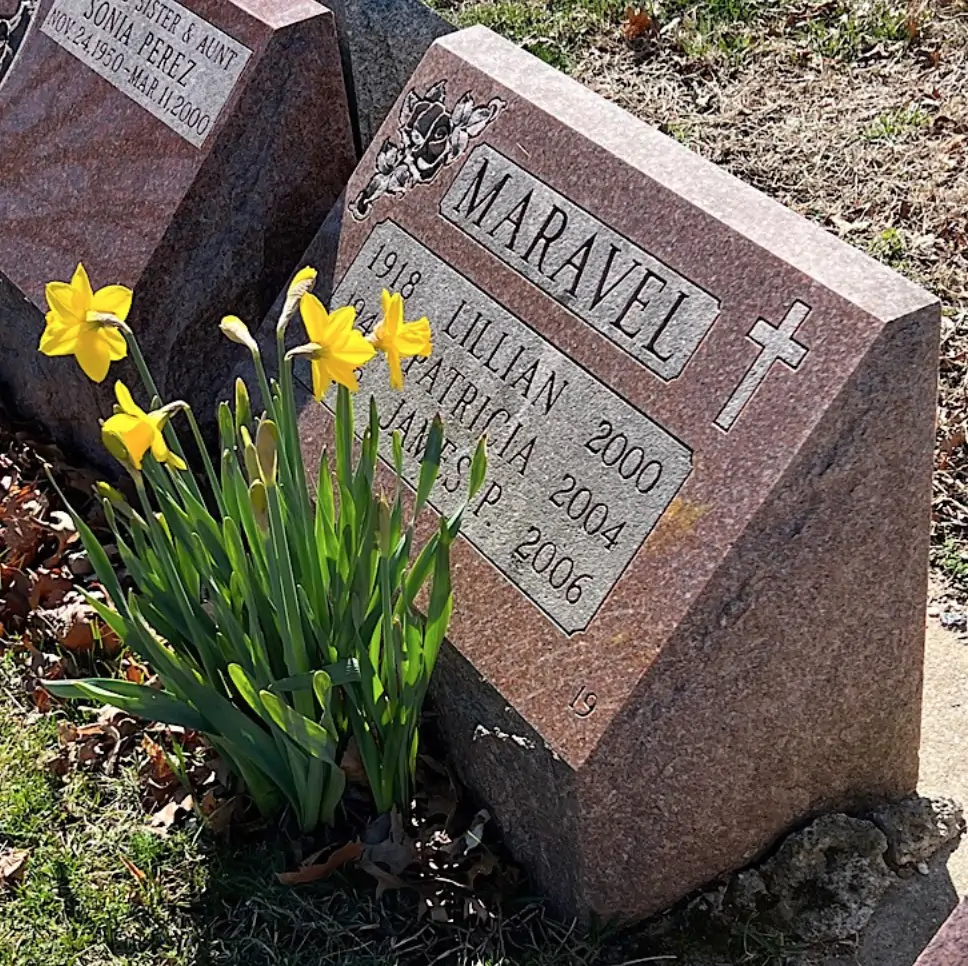
MARCOTRIGIANO, CARMINE MICHAEL (or ANTHONY) (1924-1995). Master sergeant, 4420th Quartermaster Depot Company, United States Army. Marcotrigiano was born in Brooklyn. As per the 1925 New York State census, his father Donato Marcotrigiano was a shoemaker from Italy who had been living in the United States since about 1909 ( a year that varies by census), but was not yet a citizen. His mother, Mary, was a homemaker from Italy; her year of immigration differs by census. They had five children: Grace, Thomas, Elizabeth, Anthony, and Carmine (who was the youngest of the siblings and less than a year old at the time of the census). All of the children were born in the United States and the family lived on 473 6th Avenue in Brooklyn.
As per the 1930 census, Marcotrigiano’s family had moved to 528 11th Street in Brooklyn. At this time, his father was the proprietor of a shoe repair shop and had submitted a petition for naturalization. His sister Grace, who was 15, worked as a clipper in a newspaper office; Carmine, who was 5 years old, and the other children were in school. As per the 1940 census, all the children, including Carmine who was 15 at the time and still in school, were living with their parents.
Marcotrigiano’s World War II draft registration card, dated December 23,1942, describes him as 18 years old, 5′ 7″, with brown eyes, black hair and a light complexion. His home address was still 528 11th Street in Brooklyn and he was working at Wright Aeronautical Company in East Paterson, New Jersey. According to his enlistment records, he enlisted on April 19, 1943, in New York, was 104 pounds, single with dependents, a private, and had four years of college education. Marcotrigiano served in Rhineland, European Theater of Operations. For his service, he received the American Campaign Medal, European African Middle Eastern Campaign Medal, Good Conduct Medal, and the World War II Victory Medal.
In 1947, Marcotrigiano attended the Manhattan Technical Institute, a trade school for technical education, as per his daughter. He married Josephine Miscione onJanuary 8, 1948, in Brooklyn and the couple had two children, Donna and Michael.
On March 15, 1995, Marcotrigiano passed away at the age of 70. His wife, who passed away in 2015, is buried with him. Section 149, lot 44608, grave 398.
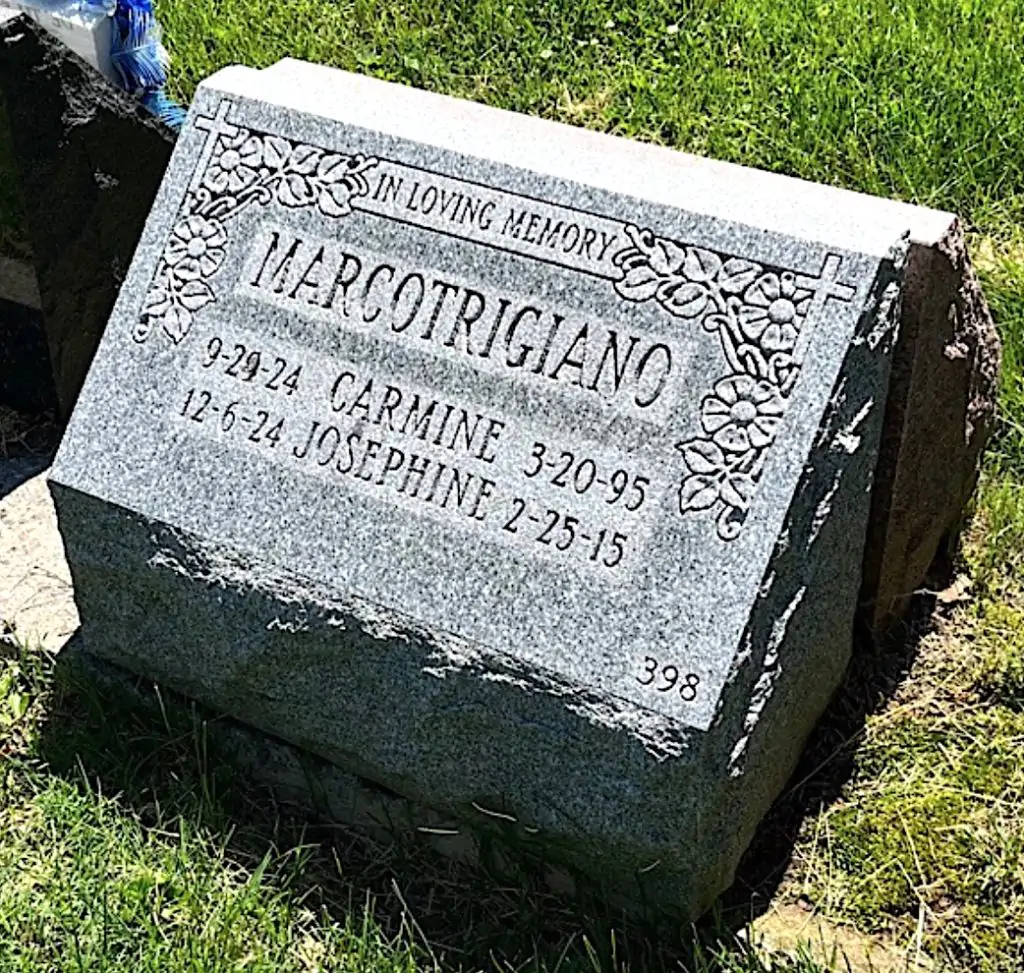
MARRA, SR.,NICHOLAS (1924-2019).Water tender petty officer 3rd class, United States Navy. Nicholas Marra was born in the United States to Vincent and Theresa Marra, immigrants from Boscotrecase, Italy. He was less than a year old, with seven older siblings, when the 1925 New York State census recorded the family living at 186 Conover Street in Red Hook, Brooklyn. By 1930, the federal census added a ninth sibling (a younger brother) to the Marra family, now living next door at 188 Conover Street.
In 1942, at age 18, Nicholas Marra registered for the draft. He was at that time employed by Tollefson Brothers in Red Hook, and still living at 188 Conover Street, according to his draft card. On March 6, 1943, government records show that Marra enlisted in the Navy with the rank of seaman 2nd class. Soon he was mustered aboard the minelayer USS Terror, the only ship built specifically for that purpose during World War II, and trained with the crew in Chesapeake Bay. In October 1943, Terror departed for the Panama Canal Zone to San Francisco, and from there to Pearl Harbor, Hawaii.
Marra was promoted to fireman 1st class in 1944. His duties would have included operating electrical equipment and completing repairs, as well as watching over engineering systems. During Marra’s time on board, according to the official United States Navy record, Terror was involved in some of the major campaigns in the Pacific Theater, including the Battle of Iwo Jima (February-March 1945) and the Battle of Okinawa (April-July 1945). On May 1, Terror was hit by a Japanese kamikaze plane; the toll was 171 casualties. She returned to San Francisco for repairs, and then set out for Korea. In September and October of that year, Terror weathered two “furious” typhoons.
Marra left the Navy on March 1, 1946, with the rank of water tender (WT) petty officer 3rd class (a position concerned with the ship’s engines). The war was over. Terror received four battle stars for her service.
He returned to civilian life in Brooklyn. On May 21, 1949, he and Carmela T. De Cola, known as Millie, applied for a marriage license. They went on to raise four children. Marra worked for many years at the New York City Department of Sanitation and was a member of the Knights of Columbus. He died at the age of 95, and was interred with Naval military honors. Snowberry section, lot 44706, grave 9.
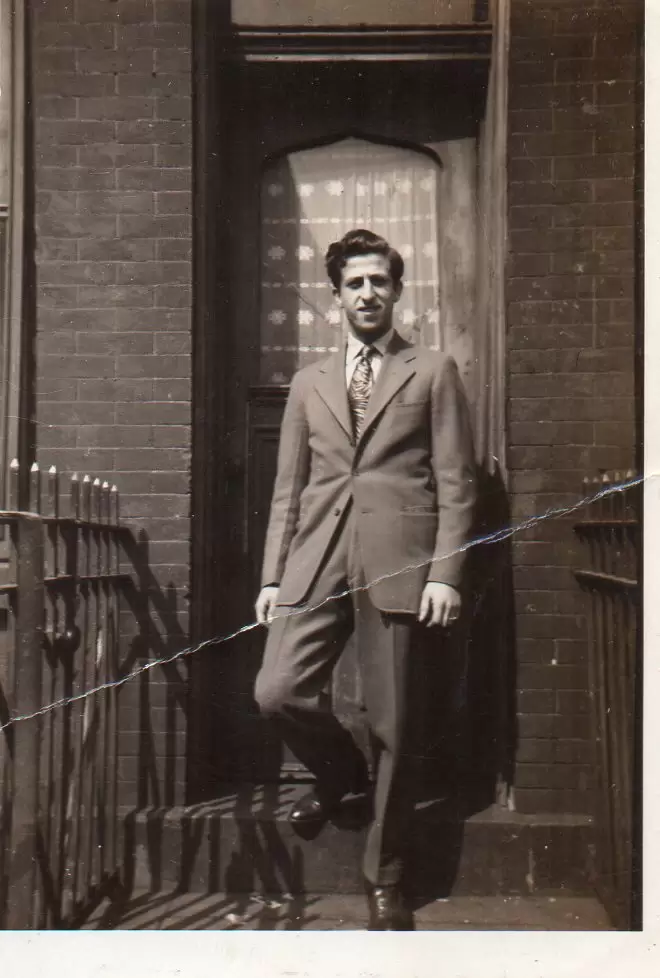
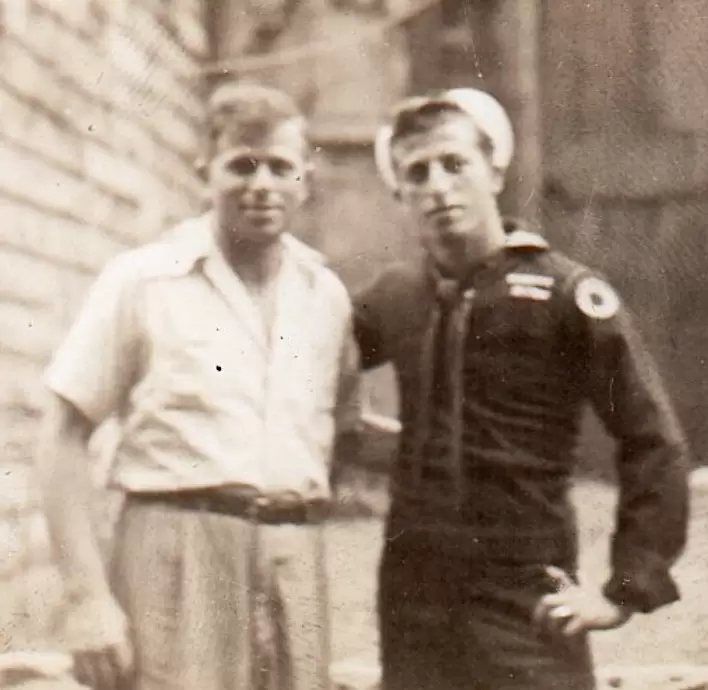
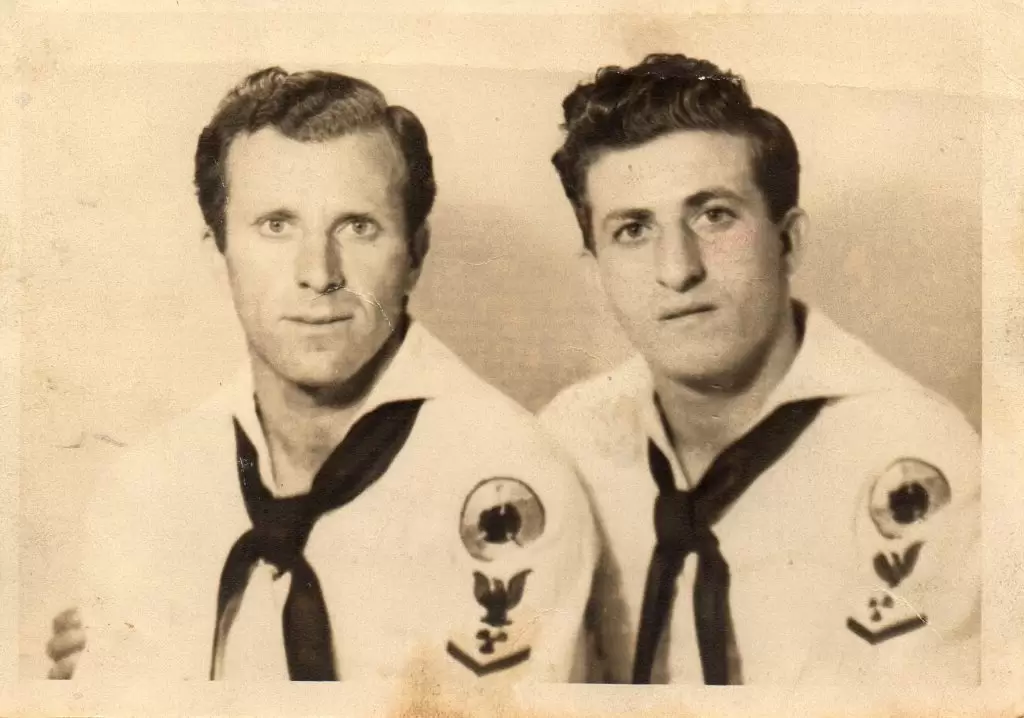
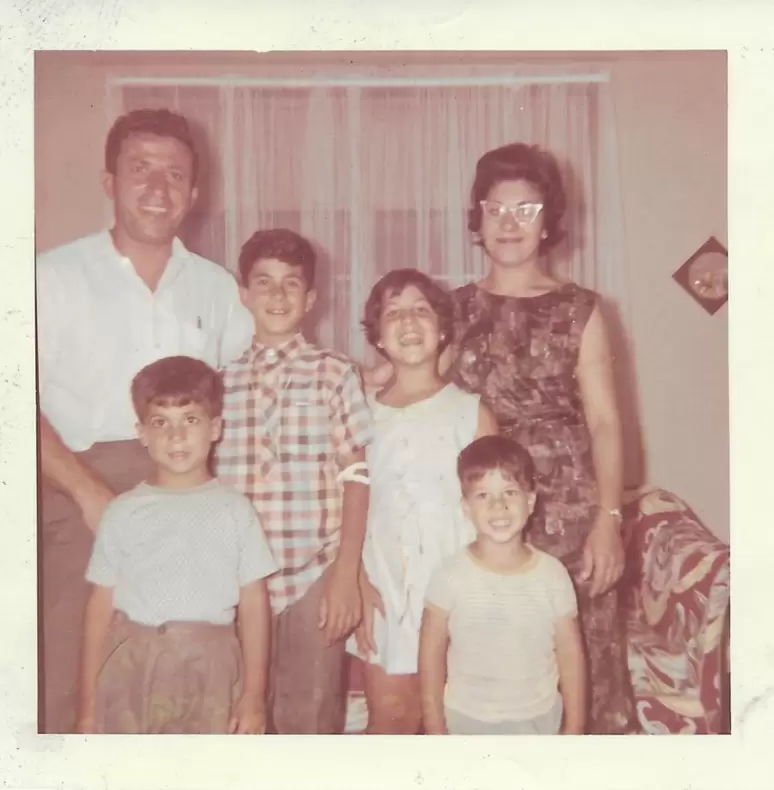
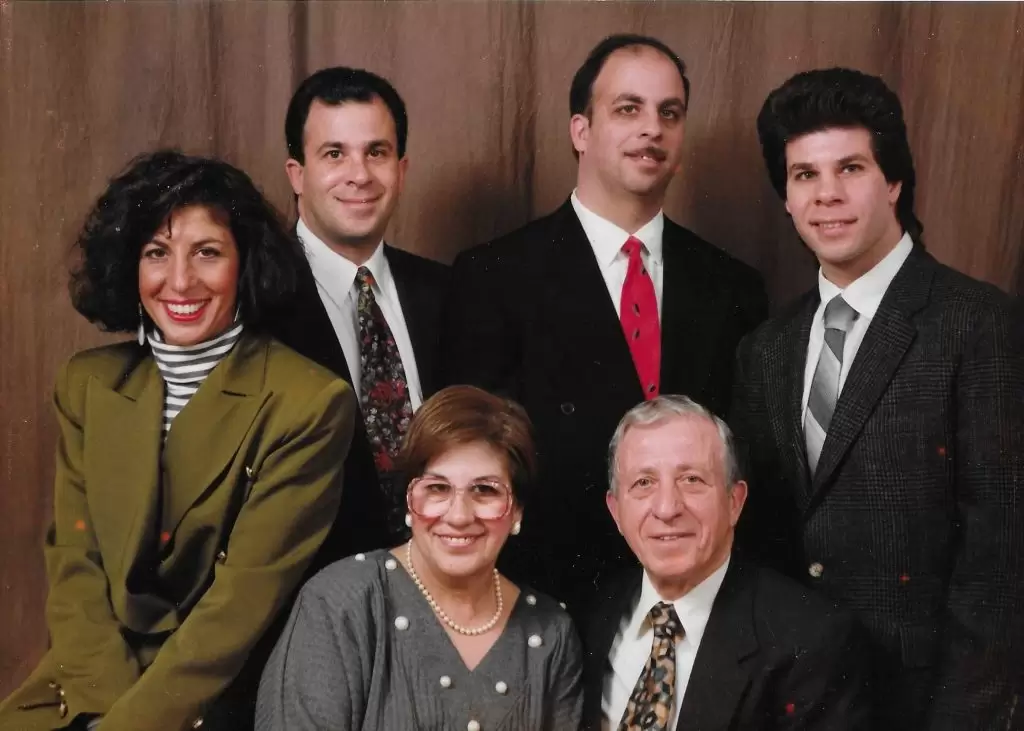
Marra with family circa 1991.
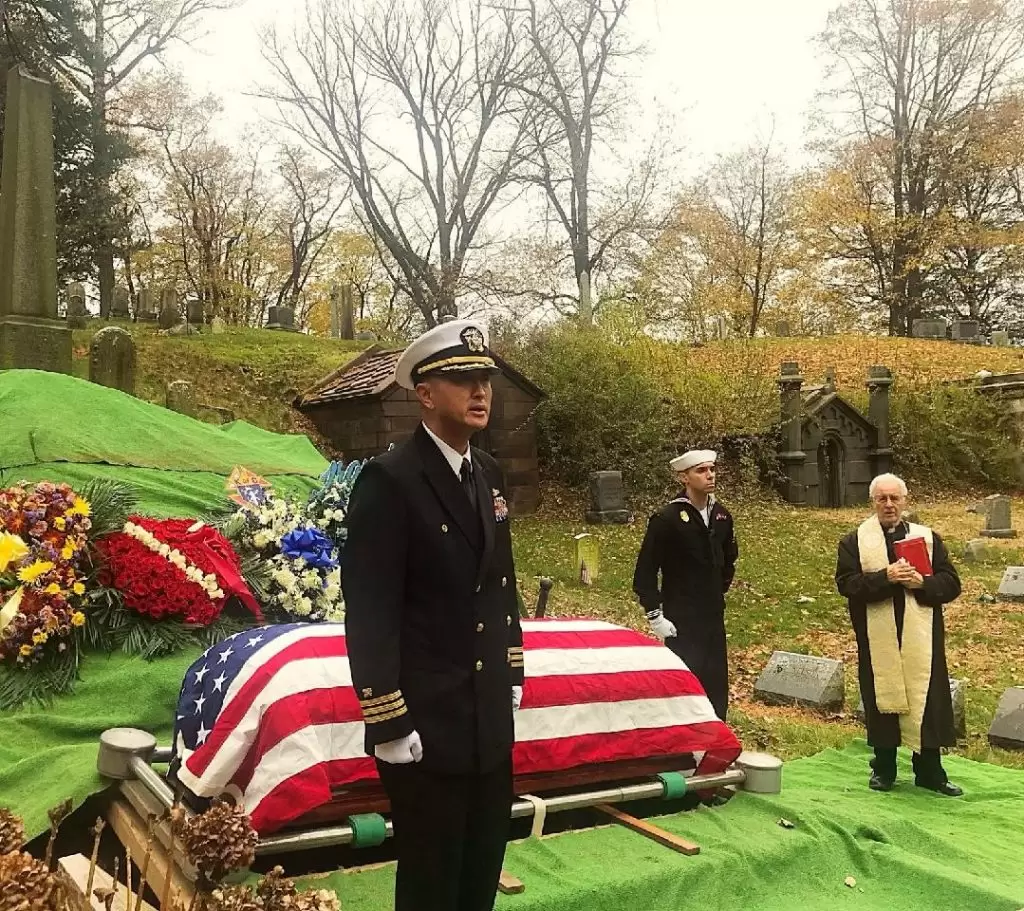
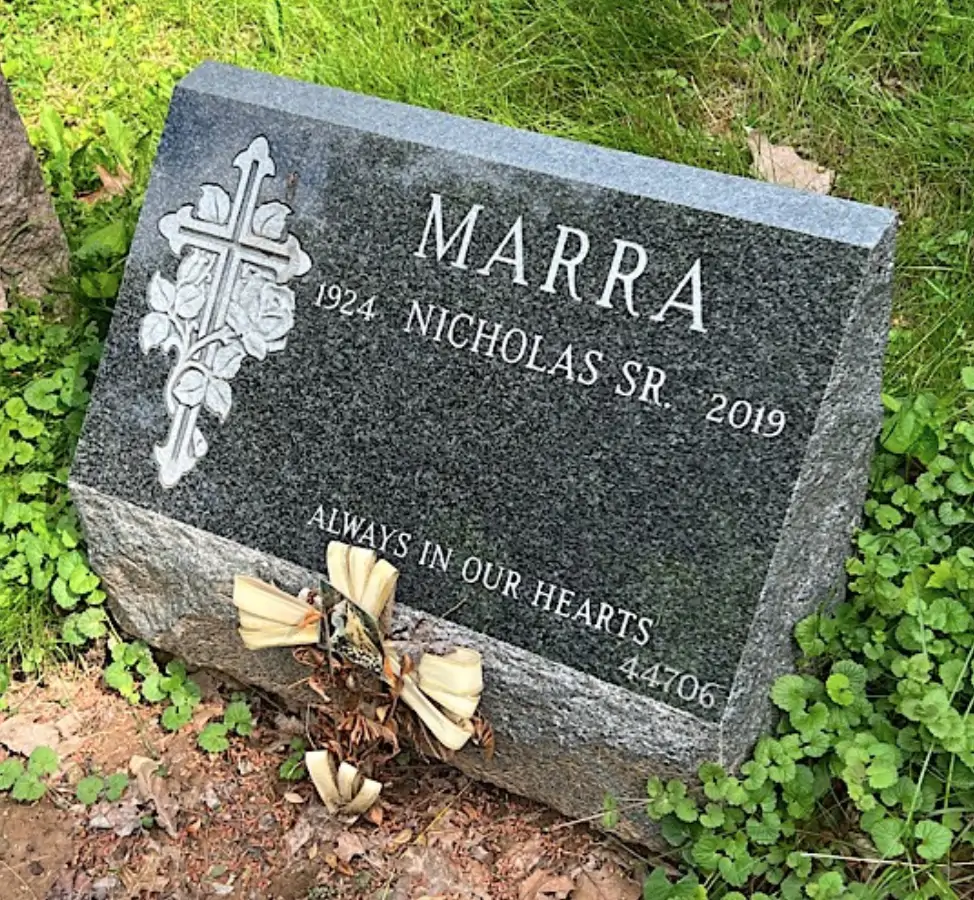
MARRANO, VITO (1926-2017). Private, 331st Regiment, Company A, 83rd Infantry Division, United States Army. Marrano was born in Brooklyn. As per the 1930 census, Vito’s parents, Dominick and Jenny, were born in Italy and had immigrated to the United States in 1913; Dominick, 41, was a paperstock junkman. Vito was the seventh of eight children, ranging in age from one to sixteen, all of whom were born in New York City. At that time, the family was living on West 9th Street in Brooklyn. The 1940 census reports that the family included a new daughter and a married daughter and her daughter, Josephine. The Marranos were living on West 7th Street. Vito’s father and older brother were in the junk business and two older sisters worked in the apron business; Vito and his two younger sisters were in school.
In 1944, Marrano filed his draft registration card. He was living at 3139 West 7th Street, had no home phone, and listed his father, with whom he lived, as his emergency contact. Vito then worked for Chatam Export at 40 West 20th Street in New York City. He was 5′ 8″ tall with brown hair, brown eyes and a light complexion. On April 21, 1944, he enlisted as a private in the United States Army at Camp Upton in Yaphank, Long Island, and was identified as single with a grammar school education. He served with the 331st Regiment, part of the 83rd Infantry Division.
According to websites about the 83rd Infantry Division, the unit was first activated in the fall of 1917 and was deployed to France in 1918 during World War I. Its insignia patch was “Ohio,” where its personnel were raised for World War I service. By 1945, the new nickname was “Thunderbolt,” chosen in a contest and representing the nationwide origin of its troops.
During World War II, the 83rd landed on Omaha Beach on June 18, 1944, 12 days after D-Day and advanced into France; previously, the division had been in England as of April 16, 1944, and had trained in Wales. After moving into Luxembourg, it took part in the Battle of the Bulge, then captured the German city of Halle on April 6, 1945. At war’s end, with a bridgehead on the Elbe River, the 83rd liberated Langenstein, a sub-camp of the Buchenwald concentration camp, where they found 1,100 prisoners in very poor physical condition. To halt sickness and death at the camp, the 83rd ordered the German mayor to find food and water, requisitioned medical supplies from the United States Army’s 20th Field Hospital, and recovered documents for use by war crimes investigators. The 83rd Spearhead was a newsletter published by the division which highlighted its efforts and the progress of the war.
Marrano had several hospitalizations during his service. He was admitted in January 1945 with frostbite of the foot and was released the next month. He was admitted again in April 1945 with a bullet wound in the buttock which hit his sciatic nerve. Hospital records note treatment with penicillin. On May 8, his medical records indicate that he was to be moved to an Army hospital in the United States. His was discharged in August 1945.
As per his grand-nephew, Marrano participated in battles in Germany in the Hurtgen Forest and in Belgium in the Battle of the Bulge, also known as the Ardennes Counteroffensive. The 83rd Division suffered heavy losses in the aforementioned battle; 3,275 were killed and 11,060 were wounded.
Marrano was interviewed about his wartime experiences by Military History Magazine (December 2004). The interview titled, Brooklyn Boy’s Brief Combat, notes that his first hospitalization occurred during the Battle of the Bulge and then he returned to combat in the Hurtgen Forest where he incurred his second injury which was both “embarrassing” and ended his wartime service; that injury continued to disable him throughout his life. At the time of the interview, he had recently celebrated his fiftieth wedding anniversary, was president of the Purple Heart Association and was a volunteer at the Veterans Hospital near his home in Brooklyn. When asked, “What was it like when you arrived overseas?.” Marrano replied:
When I first got into the service, I was a wild one. I didn’t know how to take orders. Anvbody gave me an order, I didn’t know how to accept it. I was always on kitchen police. They put you on KP if you didn’t listen to the sergeant or your orders. I was mostly in the kitchen. I became an expert at cleaning the stove. The stoves they had there, they called ‘em potbellied stoves. After you cleaned them, you had to wipe them down with bacon, oil ‘em down. I had a good time. I enjoyed it. I had a nice bunch of guys I worked with. Any New Yorkers that came up, anybody from Brooklyn, the Southerners didn’t go for us. And me, I didn’t tolerate them. So we would just have a fight, fight, fight.
Marrano was asked about what he thought about General George Patton, commander at the Battle of the Bulge. He replied:
A lot of people didn’t like him because, like I said, he shed a lot of blood-our blood. But he got the job done. He was one of those guys that wouldn’t take orders. He decided what he wanted to do and he did it. He was a good general. Crazy, but good.
The interviewer asked what it was like when he arrived at the Battle of the Bulge. Marrano replied:
The Army don’t tell you nothing. I knew we were going into the Battle of the Bulge. Did I know what the Battle of the Bulge was? What did I know? I was a young kid. I didn’t know nothing….When I first came up it was ice-cold, snow all over the place. We had these little things to heat up water you know, if you wanted to make a cup of tea. We lived strictly on rations, like bouillon soup. We used to get water from melting snow. I had no water and I went to the ditch. Nothing but mud….I went into the service weighing 204 pounds and. I came back weighing 116 pounds. So they put me on a real diet.
Marrano then related that after about 10 or twelve days, he was hospitalized for frostbite. His feet were never dry. He had a rifle but didn’t like firing it. He wondered why he was awarded a Purple Heart when his injury was frostbite and said he was no hero and that the war was not like what was pictured in the movies. Five days after returning to action in the Hurtgen Forest, he described his gunshot wound:
A burning sensation. I didn’t know what it was. After I got hit, the sergeant runs out and the BAR team follows him. So I tried to get up and run with him. But, like I said, I got hit, I had a nerve injury-I didn’t know what it was, but I couldn’t run. So I crawled on my hands and knees. I crawled about two hundred yards. I got behind a big tree. When you’re in the the forest, the forest looks like burning…all the black shifting all over the place. I finally get behind this big tree. The Germans were right near us. And this one German-bing-bing, I saw him shooting his rifle at me. And he hit the tree…four shots, boom, boom, boom! He almost hit me. Then they had a Tommy gun-they fired! I put my hands over my helmet, and in my fatigue pocket, I pulled out photos of my girlfriend, my mother, my father, and I learned every prayer there was, ‘cause I’m Catholic.
Marrano then relates how Americans came, carried him out, flew him to England and then transported him by ship to Hollerin Hospital on Staten Island, which he described as a beautiful place. He still has the bullet as a souvenir. He noted that he still wears a brace on his leg because of that injury. In addition, Marrano related to the interviewer that Bob Hope and others entertained the troops, that he did not know while he was fighting about the atrocities that the Nazis committed, and that he now gives back by being active in military organizations.
His grand-nephew noted that Vito read his military service awards at a 1997 ceremony honoring veterans. Marrano was awarded numerous medals honoring his service: Bronze Star, Purple Heart with Bronze Oak Leaf, Good Conduct Medal, American Campaign Medal, European-Africa-Middle East Campaign Medal with three Bronze Service Stars, World War II Victory medal, Combat Infantry Badge, and New York State Conspicuous Service Cross with three Silver Service Devices.
His grand-nephew notes that Marrano married Gloria Carna on August 1, 1954. The couple had two children, Peter and Dominic. Vito Marrano worked in the garment industry for 29 years and was part owner of a fruit store for eight years. Section 129, lot 39081, grave 1.
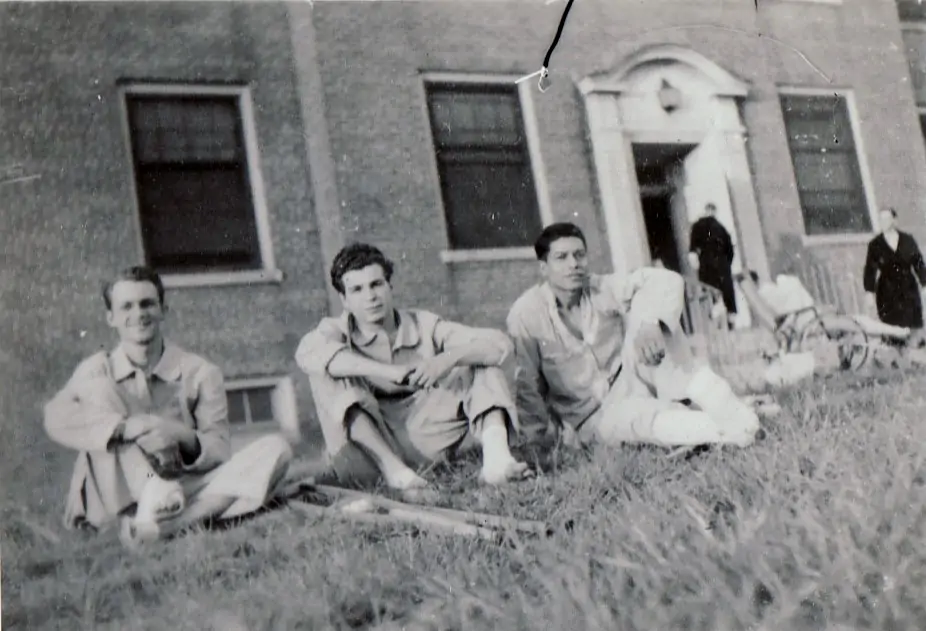
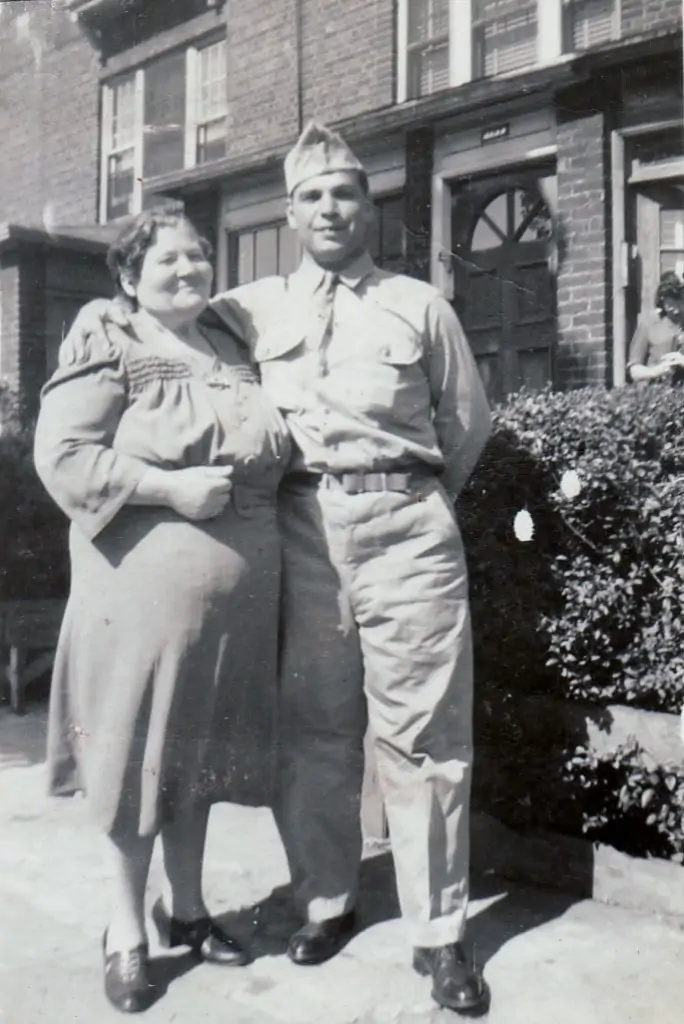
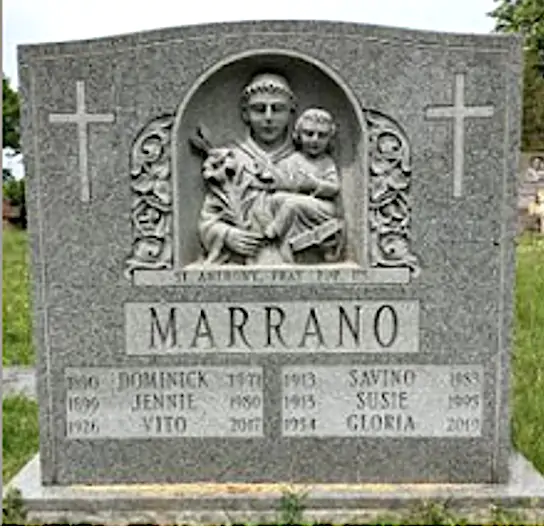
MARSILLO, ALFONSO (1921-2012). Private, United States Army. Alfonso was born in Cantalupo nel Sannio, in southern Italy, and arrived in the United States in April 1936, according to the manifest of alien passengers for the SS Rex. He was 15 years old, and headed to New Jersey to join his father, Giuseppe. Alfonso was described as 5′ 3″ tall, with chestnut-colored hair and eyes.
In February, 1942, 21-year-old Alfonso Marsillo registered for the draft, listing his middle name as Addolarato, his address at 591 18th Street in Brooklyn, and his employer as the New York Dock Railway, with offices on Montague Street. (The New York Dock Railway was located along the dockyards, moving cargo to and from ships, local warehouses, and factories, as well as moving entire trains across the water by car float.) He was described as 5′ 4″ tall and weighing 140 pounds. By December of that year, Marsillo was inducted into the Army. His civilian occupation was listed as “brake inspector, railway.”
Marsillo was discharged from the army on December 1, 1945. A few months earlier, on July 5, 1945, Alfonso had married Rose Caputo. The couple raised four children: Joseph, John, Mary Ann, and Carmela.
He became a naturalized citizen of the United States on November 11, 1946, at the age of 25, according to records. He died in March 2012, at the age of 90. He was predeceased by his wife, Rose, who died in 2007 and is interred with him. Marsillo was survived by his four children, nine grandchildren, and two great-grandchildren. Section 132, lot 38759.
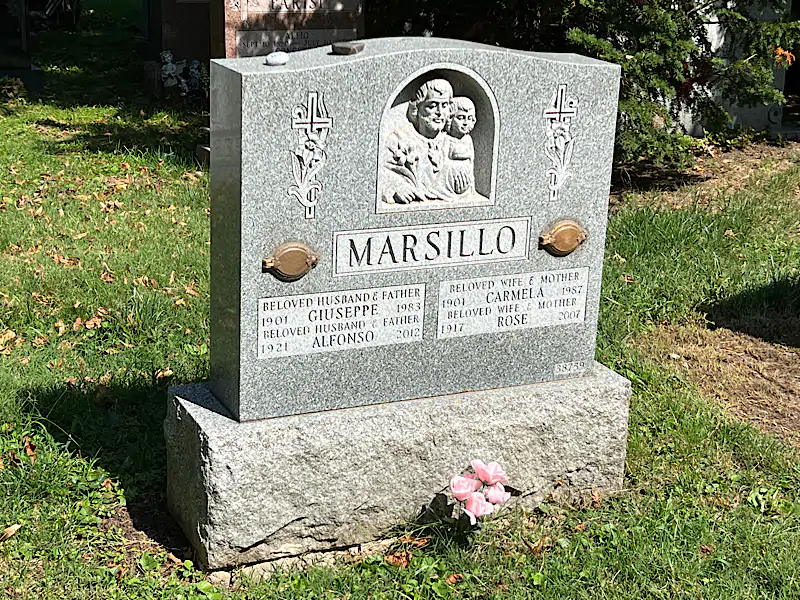
MASTERSON (or ANDERSON), FRANK (1918-1996).Sergeant, 151st Infantry, Company H, 12-man machine gun company, United States Army.Frank was born Frank W. Anderson in Warren, Pennsylvania, to Vern and Ellen Anderson. He had two older siblings, Veronica and Leonard. When Frank was six years old, his father died. In 1929, when Frank was about 11 years old, his mother married James Patrick Thomas Masterson. According to the 1930 federal census, Frank and his family were still living in Warren, Pennsylvania. The family included his step-father, James, a steel foundry machinist; his mother, Ellen; siblings Veronica, 15, and Leonard, 13; and his half-sister, one-year-old Betty.
By April 1940, according to that year’s federal census, the family was living in Brooklyn, at 510 17th Street. The three older children are employed (Veronica as a typist; Leonard as a bottling worker; Frank as a helper in a cooperage, or barrel-making business, in Williamsburg), and still going by the surname Anderson. By then, a half-sibling—John, age 9—was part of the household.
Frank registered for the draft in October, 1940, when he was 22 years old, using the surname Masterson. He was described as 5′ 6½” tall, weighing 137 pounds, with a light complexion, blue eyes, and brown hair.
Frank enlisted on January 5, 1942, at Fort Dix, New Jersey. His educational level is marked “grammar school;” he probably left school around age 14.
Masterson served in the Pacific Theater as part of a 12-man machine gun unit, Company H, of the 151st Infantry Regiment. The 151st was an antitank, heavy artillery group of the 38th (“Cyclone”) Infantry Division, nicknamed “The Avengers of Bataan.” With the 38th, Frank took part in several crucial operations in 1944 and 1945, notably in Luzon, Leyte, New Guinea, Manila, Zig Zag Pass, Philippines, and Guam.
Frank was wounded by an artillery shell in May 1945, and hospitalized with a fractured arm and shrapnel wounds. After a period of convalescence, Frank was released in August and discharged from the Army in November of that year.
For his service, Masterson was awarded two Purple Hearts and a Bronze Star, as well as Good Conduct, American Campaign, Asiatic Pacific, World War II Victory, and Combat Infantry Medals, according to his niece and son.
Frank married Marion T. Ducey in the spring of 1950. The couple raised four children: Franklin, Ursula, Michael, and Marion. Masterson worked for 38 years in the United States Postal Service, according to his niece and son. He died in 1996, at the age of 77. Section K 57, lot 46000.
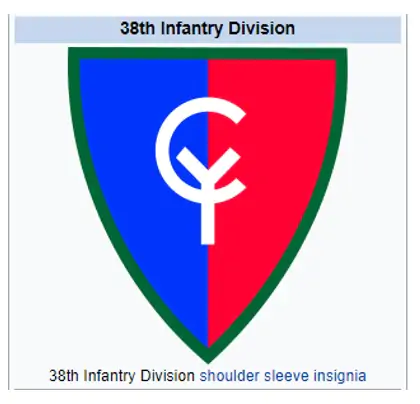
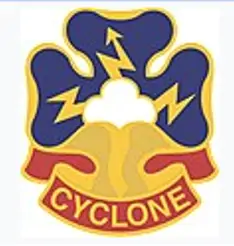
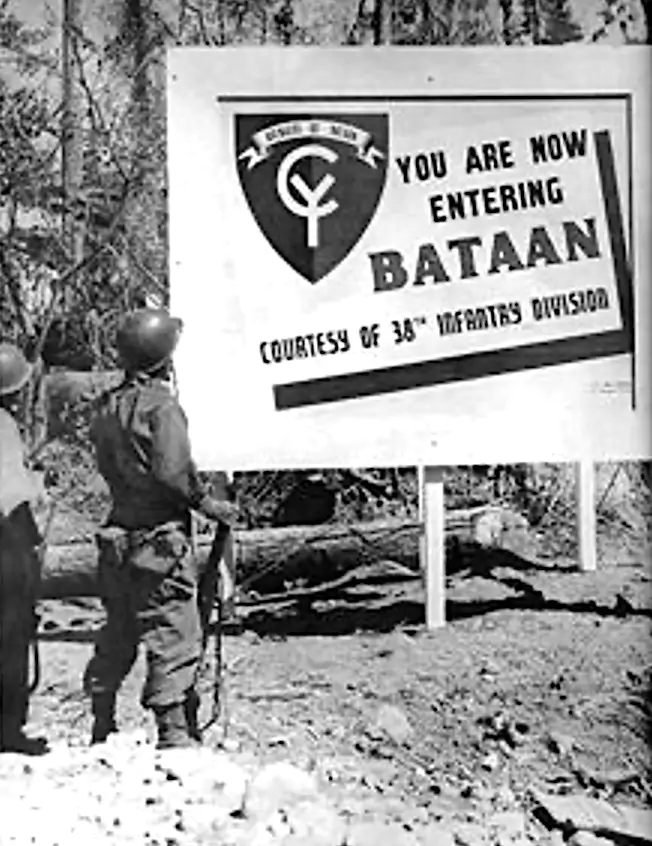
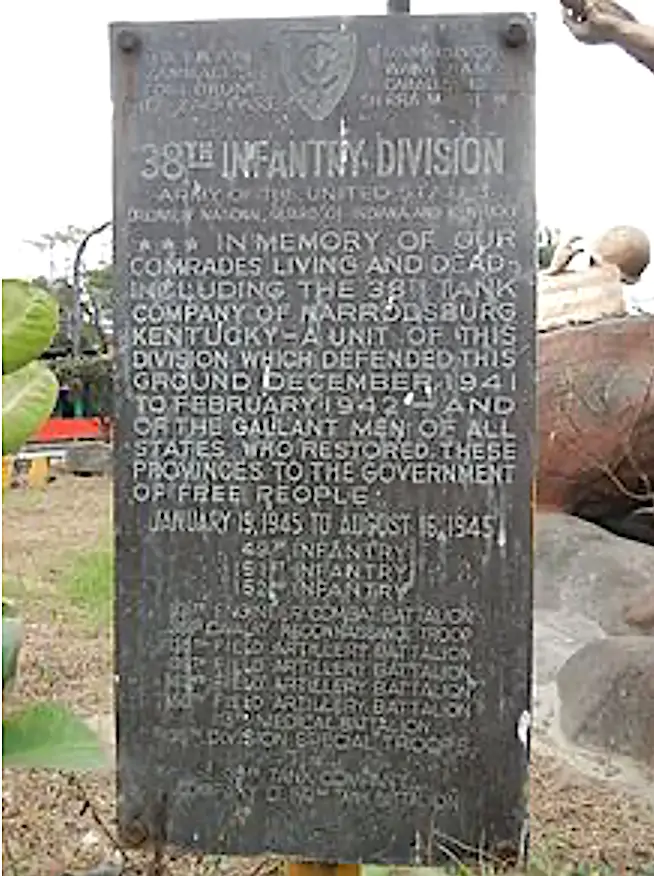
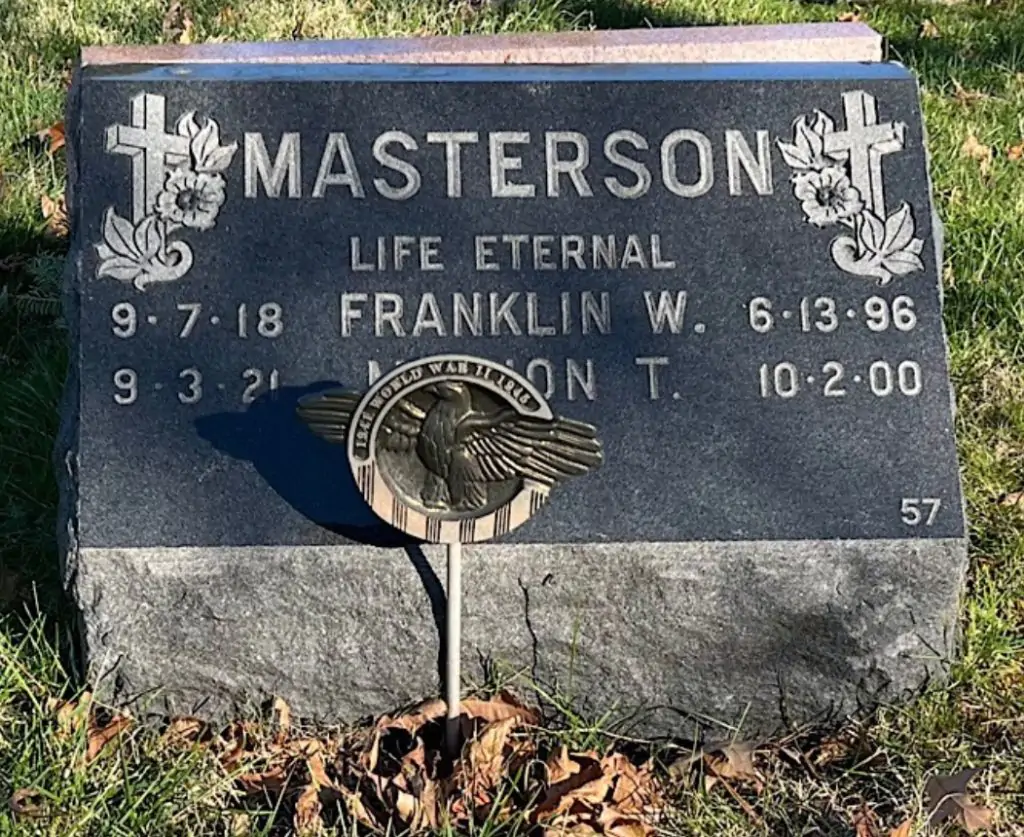
MATNEY, ARTHUR (1916-1998). Private, United States Army. According to the 1925 New York State census, he lived with his mother, Eva, and three siblings at 204 Baltic Street, Brooklyn. All members of the family, including Matney, were born in Syria. His mother is listed as the head of household and she was a house worker. His name appears in a 1932 newspaper article announcing 31 graduates who received a diploma with first honors in scholarship from the Manual Training High School (now the John Jay Educational Campus). The school is located at 237 Seventh Avenue in Brooklyn.
Matney’s World War II draft registration card documents that he was twenty-four years old, lived at 211 Clinton Street and was not a citizen of the United States, but had his “first papers” on file. His employer was A. Chopman and his place of employment was located at 413 South 4th Street in Brooklyn. As per the registrar’s report, Matney registered on October 16, 1940. He is described as 5′ 6½” tall and 140 pounds with brown eyes, black hair, and a dark complexion. United States Naturalization Records Indexes indicate he became a naturalized citizen on November 7, 1940. His Army enlistment record, dated December 1, 1942, states he had completed four years of high school, was single, and his civil occupation was “semi-skilled machine shop and related occupations.” His rank was private. Little is known about his service career other than that he served in the Pacific.
After the war, as per the New York Marriage License Indexes, he married Laurice Grayeb on October 14, 1946. According to the 1950 federal census, he was 34 years old and worked as a storekeeper for an Army/Navy surplus company. His residence was in Kings County, New York and his wife, daughter, mother, and fraternal aunt lived in the household. The October 25, 1956 issue of the Caravan reported that he and his wife had celebrated their 10th wedding anniversary.
He founded a cosmetic company, Arthur Matney Co., and also applied for at least five patents at the United States Patent and Trademark Office. A New York Times article, from its May 13, 1984 issue, entitled “Bush Terminal’s Tenants Are Taking on More Space: Internal Growth a Major Plus for Brooklyn Facility,” states: “There have also been new leases of late, including one signed two weeks ago for the largest amount of space taken at Bush Terminal in almost 20 years. The tenant is Arthur Matney Company, makers of Artmatic Cosmetics, coming from 250,000 square feet at 360 Furman Street in Brooklyn Heights. Matney took 300,000 square feet at Bush on a 15-year lease.”
Matney was successful in his personal life as well as his business life, according to his obituary in the New York Times, dated February 12, 1998:
A native of New York, passed away after a long illness. He was the Founder and CEO of Arthur Matney Co., Inc., which for over fifty years has sold a full line of cosmetics worldwide under the names Artmatic, Tropez, Aristocrat and Emerge. His corporation was honored by the Mayor of NYC as one of the leading employers in the Borough of Brooklyn, employing over 500 people. He was well-recognized within the cosmetics industry for his technical contributions, receiving many honors and awards for his achievements. His generosity encompassed numerous political and religious causes. His philanthropy particularly benefited both Long Island College Hospital and Our Lady of Lebanon Cathedral, as well as various Jewish organizations. He was a veteran of W.W. II, serving in the Pacific. He continued to serve his community throughout his life. He was honored by Pope John Paul II, earning a Knighthood in the Catholic Church. Additionally, he received the Apostolic Blessing and was inducted into the Order of St. Gregory.
According to the Social Security Death Index, Matney’s last residence was in Atlantic Beach, Nassau County, New York. He was survived by his wife, his four children and ten grandchildren. Section 42, lot 44627, grave CAT.


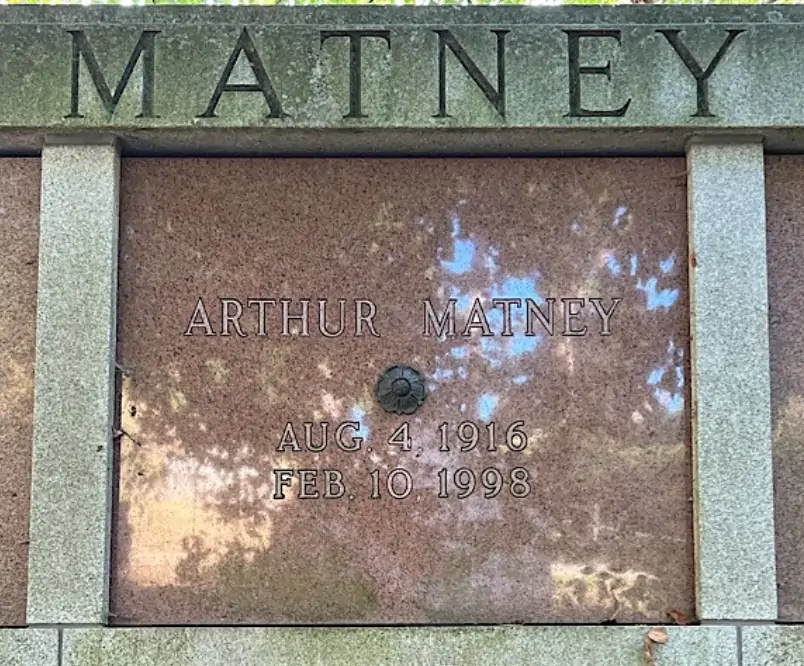
MATTEO, NICHOLAS (1921-2008), Private, C Company, 82nd Engineer Battalion, United States Army. According to the 1920 federal census, Nicholas, just days old, and his brother, Morris, 6 years old, were living with their grandparents, Giacalone and Anna Matteo, and two of their sons, Michael and Joseph, as well as two of their daughters, Lena and Kathryn. They lived on Heyward Street in South Williamsburg. Both of Nicholas’ parents were born in Italy. Nicholas was born in New York.
On his World War II draft registration card, signed on February 15, 1942, Matteo reported that he lived at 570 President Street in Gowanus, Brooklyn. He was 20 years old, 5′ 8″ tall, 140 pounds with brown eyes, brown hair, and a dark complexion. He was unemployed. “Name And Address Of Person Who Will Always Know Your Address” was listed as his mother, Kate, at the same address. Matteo enlisted on July 14, 1942, at Fort Jay, Governors Island, in New York City. According to the United States World War II Army enlistment records from 1938-1946, his highest education received was grammar school, and he was semiskilled in machine shop and related occupations. His daughter, Irene Fratangelo, reports that he attended Our Lady of Peace and completed the 6th grade. During the war, as per his daughter, Nicholas served in Normandy, Northern France, Central Europe, and the Rhineland in Western Germany. He was a private in C Company of the 82nd Engineer Battalion of the Army. He received the American Service Medal, European African-Middle Eastern Service Medal, and World War II Victory Medal. According to the Department of Veterans Affairs, he was discharged from service on November 25, 1945.
Nicholas married Josephine Pepe in December 1947. By 1950, they lived on 3rd Avenue in Brooklyn, and Nicholas worked as a truck driver for a sand trucking company. They had two children, Nicholas Matteo and Irene Matteo Fratangelo, and three grandchildren, Michael, Ashley, and Nicole. The Matteos lived on 3rd Avenue and near Coney Island throughout their lives. He passed away on June 12, 2008. Josephine passed away in January 2012. They are interred together. Section 132, lot 39295.
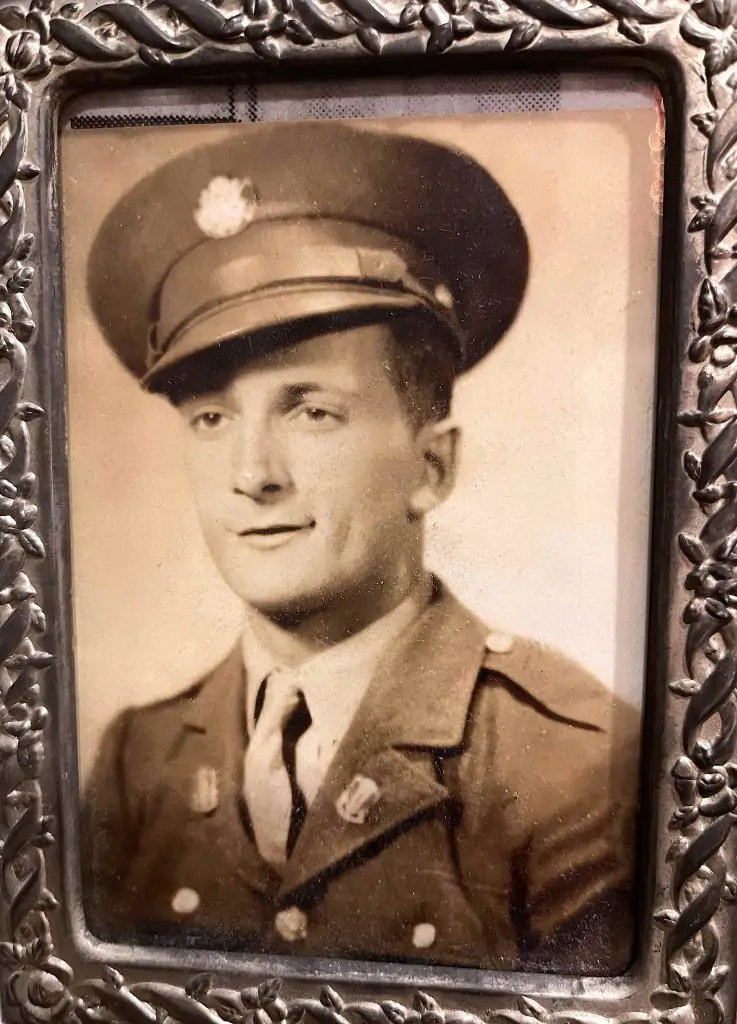
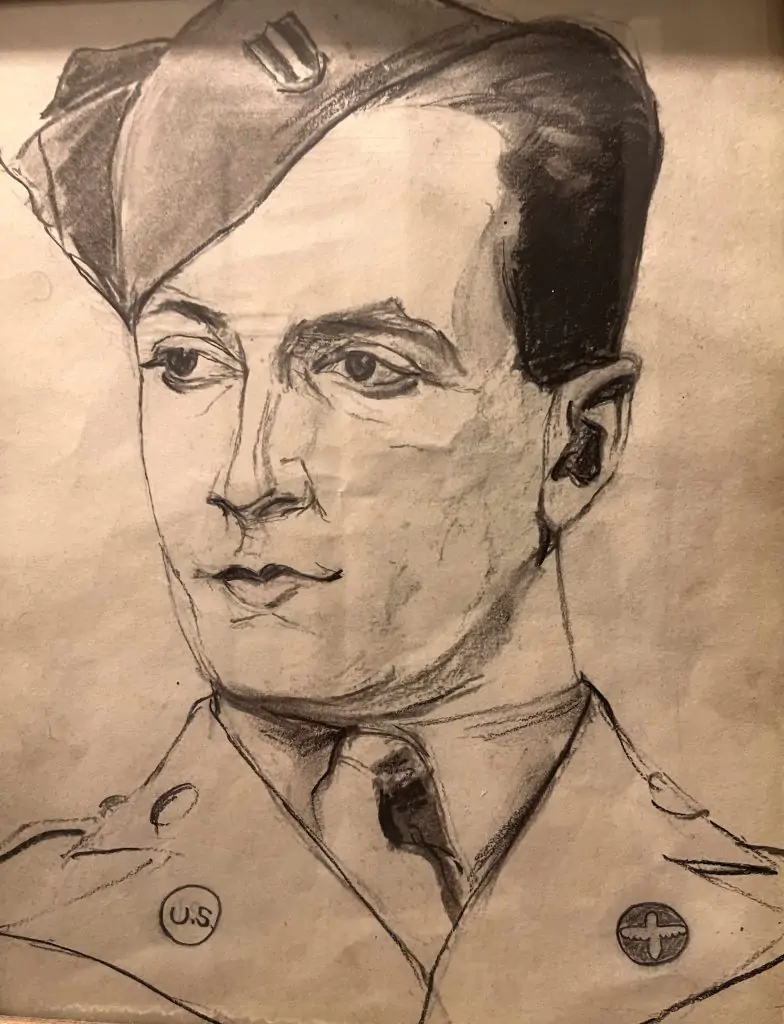
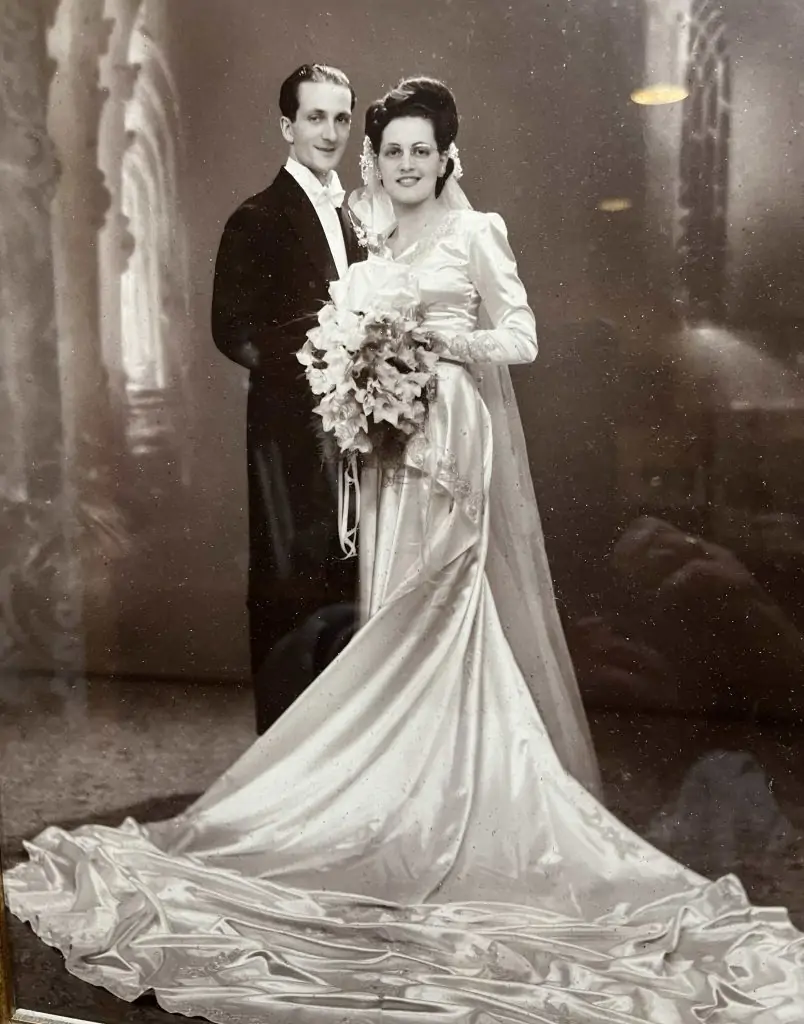
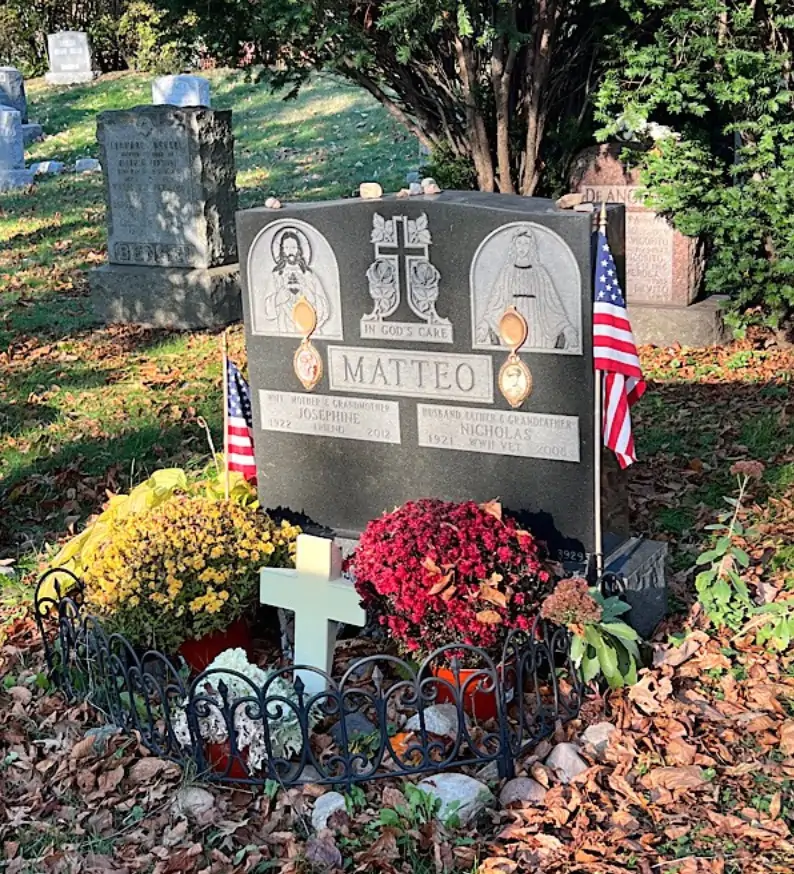
MAYORS, ROBERT ORROCK (1920-1943). Sergeant, Royal Montreal Regiment, Royal Canadian Infantry Corps. According to Canadian Active Service records, Robert Orrock Mayors was born in Glasgow, Scotland. He moved with his parents, Harry Mayors and Helen Orrock Mayors, to New York City when he was five years old.
Helen Mayors’s arrival record shows that she sailed aboard the SS Transylvania from Glasgow, Scotland, to New York, leaving Glasgow on May 15, 1926. Listed as Helen Wilson Mayors, she traveled with her two sons, Henry, age 10, and Robert Orrock, age 5. Her sister, Mrs. Jean Thomson, was her nearest relative in Scotland, living in Edinburgh. Helen Mayors was traveling to meet her husband, Henry Mayors, who lived at 408 West 57th Street, Manhattan. The document reports that Robert Mayors had blue eyes and brown hair.
Mayors’s mother filed a Declaration of Intention to become an American citizen on November 14, 1928. At that time, she was a housewife who had been born in Edinburgh, Scotland, on June 2, 1891, and resided at 537 West 158th Street in New York City. Her husband, Henry, was also born in Scotland and they resided together. Helen Mayors confirmed that she arrived in New York on the vessel Transylvania on May 24, 1926.
Per a newspaper article published soon after Robert Mayors’s death, he attended the Professional Children’s School in New York City, “and was on the stage for eight years, playing in such productions as the Dead End Kids.” Playbill lists some of his other stage appearances: “The Little Black Book,” 1932; “Wednesday’s Child,” 1934; “Come What May,” 1934; “Remember the Day,” 1935; “Lend Me Your Ears!” 1936; “But for the Grace of God,” 1937; and “Dance Night,” 1938. He also did radio work with Jack Pearl, a vaudeville performer and star of early radio, on the Baron Munchausen program.
Robert Mayors signed a Canadian Active Service Force attestation paper on October 4, 1939, well before the United States entered World War II late in 1941. He went to Montreal, Canada at the outbreak of war in 1939, and was living at 62 Arlington Avenue in the enclave of Westmount. He listed his occupation as actor, his religion as Presbyterian, and his mother as next of kin. Helen Mayors was living at 126 Dyckman Street, Manhattan, at that time.
Mayors went overseas in November 1939. He left Canada as a corporal and was promoted while overseas to sergeant. He saw action at Dunkerque (Dunkirk) and was wounded during a commando raid in Norway. He was transported to a hospital in Canada where he passed away two years later, on April 10, 1943, from “tubercular meningitis,” per the American Foreign Service’s Report of the Death of an American Citizen, or “generalized tuberculosis,” according to a Circumstance of Casualty document, Canadian War Graves Registers. He died at Sainte Anne’s Hospital in Anne de Bellevue, Quebec. Mayors had been with the Royal Montreal Regiment.
At the time of his death, Mayors’s parents were still residing on Dyckman Street in New York City; his brother, Harry Mayors Jr., was living in Huntington, New York. J.W. Orrock, of Arlington Avenue in Westmount, Canada, was his uncle. The funeral was held in Montreal and Mayors’s body was taken later that same day to New York. A military service was later held in the Second Presbyterian Church and Mayors’s body was then interred at Green-Wood. Section 14, lot 7677.
McGUGART, LEO HAMMOND (1921-1978). Private, United States Army. Leo Hammond McGugart was born in Pennsylvania to Leo M. and Marie H. McGugart. He spent his early years living in Queens, New York, but by 1940, according to the federal census, the 18-year-old Leo was living with his parents and younger sister, Marie R., on Knickerbocker Avenue in Bushwick, Brooklyn. He had finished high school and was working as a messenger.
His draft registration card lists the 20-year-old McGugart as working for F.W. Woolworth on Fulton Street in Brooklyn. At the end of September 1942, he was inducted into the Army at Fort Jay, Governors Island, New York, as a private. He served in the Army through the rest of the war, and was discharged on March 12, 1946, according to government records.
On May 5, 1948, McGugart and Celeste Pace applied for a marriage license in Brooklyn. In the years that followed they had two children, Leo and Linda. Section 56, lot 43749, grave 2.
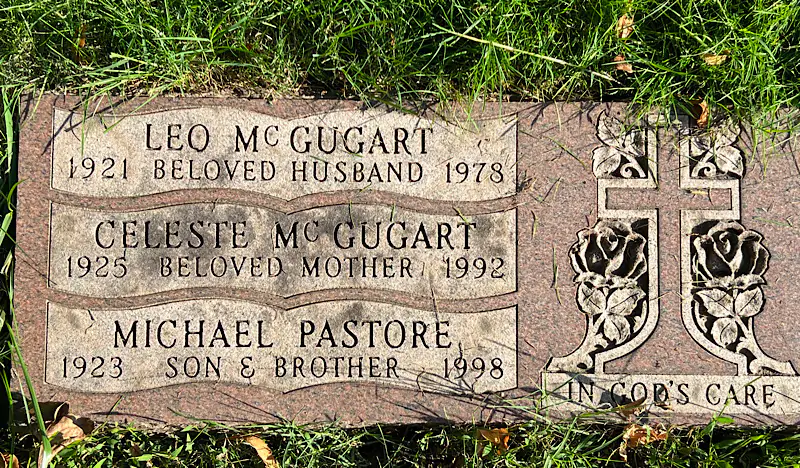
McKEON, PETER ALOYSIUS (1920-1977). Private first class, United States Army. Peter was born in Manhattan to Patrick and Margaret (Bannon) McKeon. According to the 1925 New York State census, his father was born in the United States and his mother was born in Ireland. Peter had five older siblings living at home. The next year, Peter’s father, Patrick, died at age 43, when Peter was six years old.
By 1940, according to the federal census of that year, only Peter, age 20, and his brother Paul, age 28, were still living with their widowed mother on 10th Avenue in Manhattan. Paul was employed by the Work Projects Administration, a Depression-era government program. Peter is listed as a “new worker,” meaning he was looking for work and had no previous full-time work experience.
McKeon registered for the draft in July, 1941, when he was 21 years old. He is described as 5′ 6″ in height, weighing 140 pounds, with blue eyes, brown hair, and a ruddy complexion. His occupation is listed as “none.”
In November, 1941, McKeon was inducted into the Army. His education level is recorded as “grammar school;” he probably left school at the age of 14. According to his daughter, Pat, he served in the Pacific Theater of the war, and participated in the Battle of Luzon, in the Philippines, in 1945, and in the New Guinea campaign, which lasted from 1942 until the end of the war in August 1945. Peter received the Good Conduct, American Service, World II Victory, and Asiatic Pacific Service Medals. He was discharged from the Army in January 1946.
In 1951, McKeon married Concetta M. Barbieri in Brooklyn. In civilian life, according to his daughter, Peter was employed in a number of different jobs, including truck loader, bookbinder, elevator operator, and janitor. He was survived by two children: Patricia and Peter, and one grandchild, Amanda. Section R, lot 43419, grave 1.
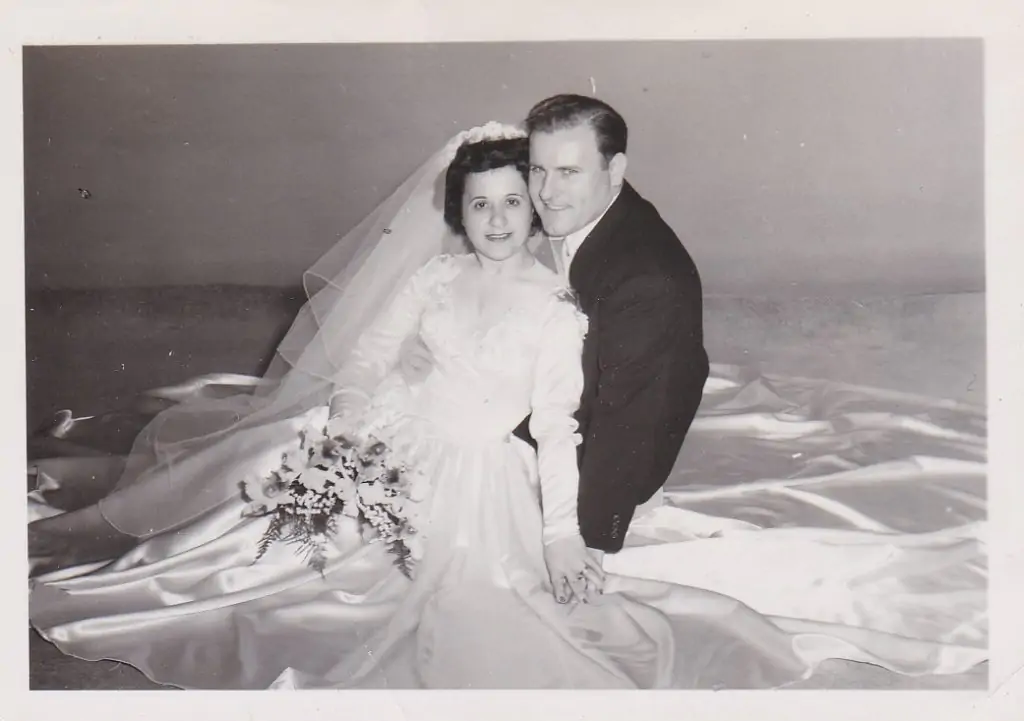
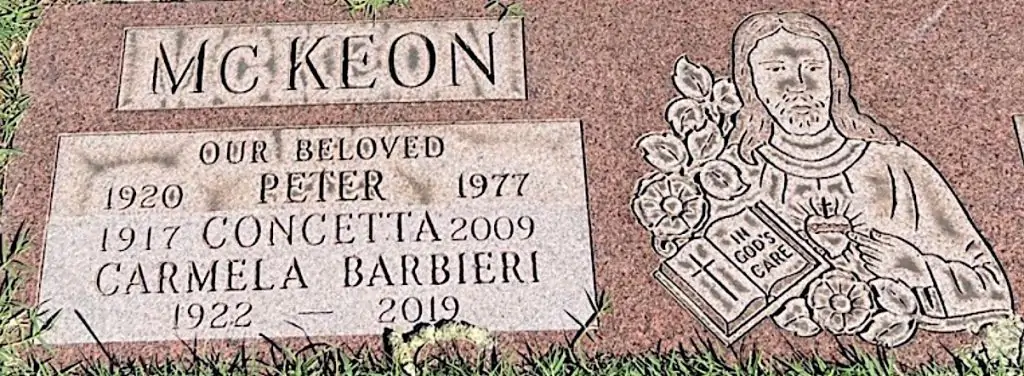
McMEEKAN, JR., WALTER (1920-1986). Sergeant, unit unknown, United States Army Air Force. Walter was born in Brooklyn on June 26, 1920, to father Walter McMeekan Sr., and mother Lillian Maude McMeekan (née Bunting). According to the 1930 federal census, Walter and his family lived at 1394 Elmore Place, today known as East 22nd Street in Midwood, Brooklyn. Walter was 10 years old and had an older sister, Dorothy, 15 years old. His father worked in real estate. By 1940, Walter was 19 years old, and living at 1354 Bedford Avenue in Crown Heights. He had graduated from Polytechnic Preparatory Country Day School in Brooklyn.
On October 3, 1940, Walter applied for membership in The Empire State Society of the National Society Sons of the American Revolution.
Walter’s World War II draft registration card, signed July 1, 1941, stated that he was a student enrolled at Williams College in Williamstown, Massachusetts. He lived in Morgan Hall and was 21 years old. He was 5′ 8″ tall, 133 pounds, with brown eyes, brown hair, and a light complexion. “Name And Address Of Person Who Will Always Know Your Address” was listed as his father, Walter McMeekan Sr., at the family home in Midwood. McMeekan enlisted into the United States Army Air Force on August 28, 1942. Where Walter served in World War II is unknown, but he was discharged on March 17, 1946 and completed college in 1946. He then attended and graduated from Harvard Law School in Cambridge, Massachusetts in 1949.
By 1950, McMeekan was living with his parents at 1394 East 22nd Street, and working as a lawyer with his father in the real estate business. He was 29 years old. According to the Brooklyn Daily Eagle, published November 23, 1952, Walter was engaged to marry Eleanor Adele Sauer of Fairfield, Connecticut. She had worked for United Air Lines and graduated from Middlebury College in Middlebury, Vermont. He continued working as a lawyer and real estate broker for Sackett Realty Company for 33 years. He retired in 1983 and relocated to Plainfield, New Jersey, where he was near his sister, Dorothy McMeekan Hierl, and where he was a member of the Plainfield Historical Society and East Jersey Old Town Village, an open-air museum in Piscataway, New Jersey. Section 137, lot 28282.
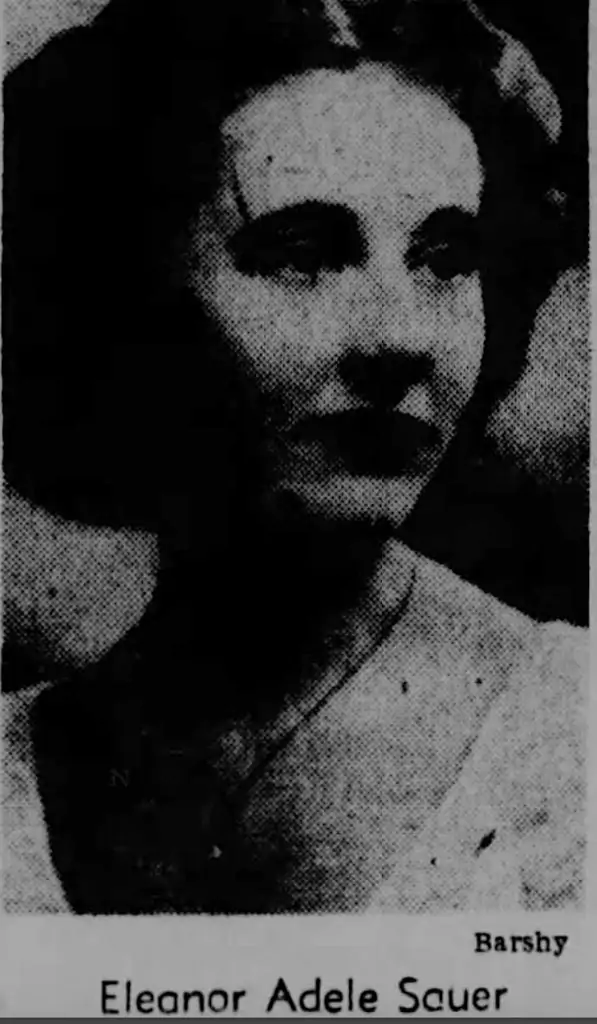
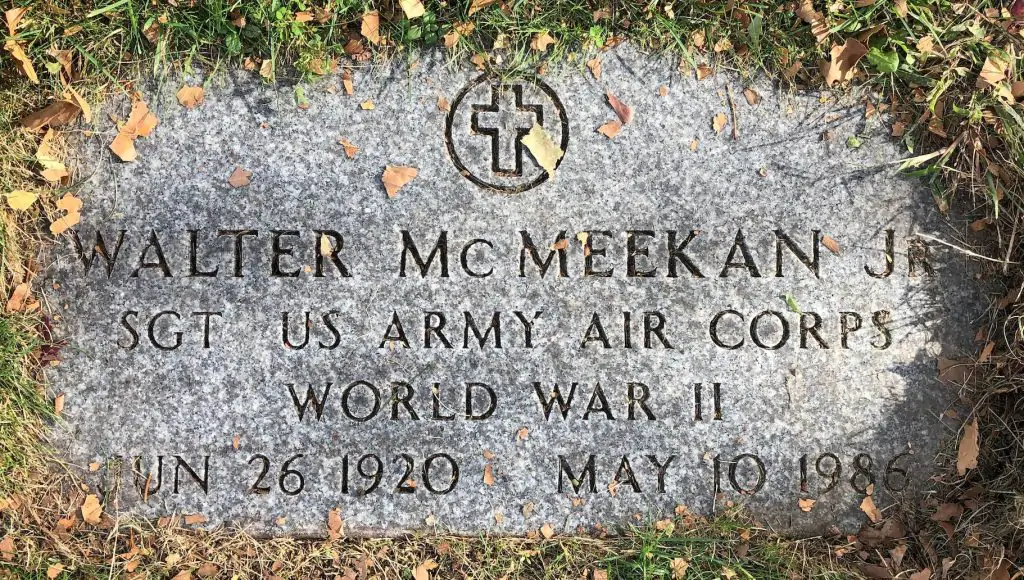
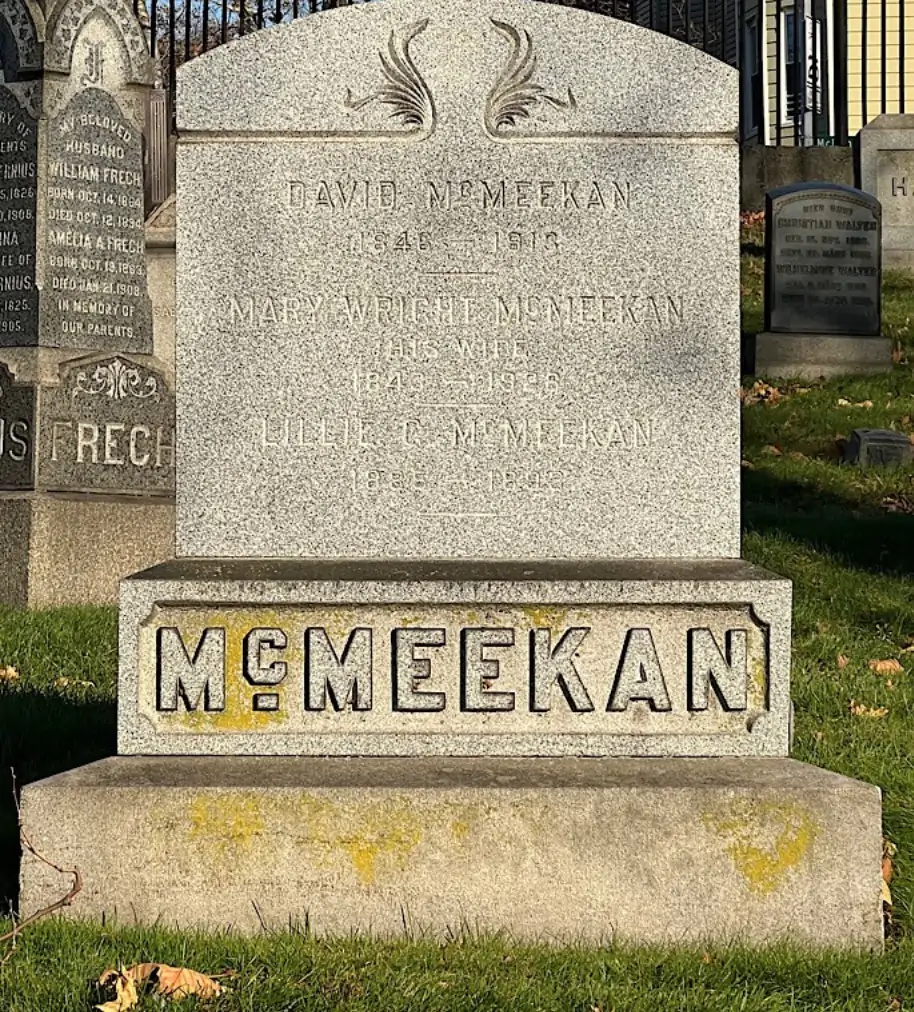
McNEVIN, ARTHUR JOHN (1925-2009). Radioman third class, USS Harding (DD625), United States Navy. McNevin was born in Brooklyn. The 1930 federal census notes that he lived with his father and mother, George and Clara, and his older brother, George Jr., on 121st Street in Queens. All family members were born in New York and his father was a chauffeur in the truck industry. At the time of the 1940 federal census, the McNevin family still resided on 121st Street.
The World War II Navy records that his enlistment date was December 29, 1942 and that he boarded the USS Harding (DD625), on September 27, 1943, at a receiving station in New York. His rank was radioman third class (RM3cr) and it was noted that he was from the United States Navy Reserves Volunteers (USNR V-6). As per his obituary, published in the New York Times on October 23, 2009, “…he spent four years as a radio man on a destroyer seeing action from Normandy to Okinawa.” In his book, Radio Communications, Kenneth Howland writes that “the radiomen of the United States Navy were responsible for transmitting and receiving radio signals, and processing all forms of communications through various transmission media aboard ships, aircraft and shore facilities.” Since McNevin was onboard the SS Harding from September 1943 through November 1945, he most likely took part in the following events as described in the Naval History and Heritage Command website:
After escorting battleship Texas on training exercises, Harding sailed 18 April (1944) with a convoy for Europe, and began her first great combat operation, the Normandy Invasion. She spent the month of May training with other ships between Plymouth and Clyde. Then, early on the 6th of June 1944, Harding joined other naval units in the historic assault. Harding was assigned fire support station, and delivered close gunfire support to the troops ashore for the first hours of the lauding. Her accurate gunfire destroyed pill boxes and machine gun emplacements, blasting a way for the troops. Harding also sent a boat ashore at Point Du Hoe to take supplies to the intrepid rangers and bring out prisoners and wounded. She continued operations in the assault area until 16 July, protecting against air attack and assisting several transports in distress.
Shifting her operations to the Mediterranean, Harding sailed 1 August for Oran, Algeria, and from there proceeded 15 August to the southern France assault area, as a screening ship. She sailed almost immediately to Corsica, later returning to take up patrol station outside the assault area in southern France. On the night of 17 August she detected a downed German plane, and after recovering bodies, proceeded to investigate an unidentified contact. As Harding’s signalman sought to illuminate the stranger, a burst of machine gun fire extinguished the light and revealed the presence of four enemy E-boats.
In company with three other destroyers, Harding began a running, twisting battle with the four boats, illuminated by starshell fire, and despite their superior maneuverability all four were sunk; three by Harding’s accurate batteries. She brought survivors ashore and resumed her patrol until 24 August.
Harding joined a convoy of LCI’s en route to Oran, Algeria, 24 August, returned to spend another week in southern France until 6 September, and sailed for New York 25 September 1944. Arriving New York 3 October she proceeded to Boston for conversion to a destroyer-minesweeper; Harding was reclassified DMS-28, 15 November 1944. Emerging 1 December for her trials, Harding underwent training until 30 December and sailed for the Pacific. She arrived San Diego via ‘the Canal Zone 15 January 1945, and continued her training in mine-sweeping techniques.
Sailing 10 February via Pearl Harbor, Harding arrived at Ulithi 9 March to prepare for the invasion of Okinawa, the last and largest of the giant Pacific amphibious assaults. She departed for Okinawa 19 March and began her minesweeping operations in the surrounding areas 24 March. During the initial landings 1 April 1945 Harding served as an outer screening ship, and continued this dangerous duty during the savage air attacks which followed. After a near miss by a horizontal bomber during the first heavy raids of 6 April, Harding was assigned to provide fire support to forces ashore the night of 8 April. She returned to screening duties next day and 16 April was attacked with other ships by four suicide planes. One was driven off, another shot down, but a third steered directly for Harding’s bridge. As gunfire ripped into her, the aircraft splashed close aboard to starboard, tearing a huge gash in Harding’s side from keel to main deck when her bomb exploded.
The stricken ship backed toward Kerama Retto, counting 14 men killed, 8 missing, and 9 wounded. She repaired at Okinawa, and arrived Pearl Harbor 22 August via Saipan.
From Hawaii Harding transited the Panama Canal via San Diego and arrived Norfolk 17 September. She was decommissioned 2 November 1945.
With the decommissioning of the USS Harding, McNevin was assigned to the USS Hugh Purvis (DD709). According to the December 1945 muster roll, he was still an RM3cr and he boarded the destroyer from the receiving station in Norfolk, Virginia. The Hugh Purvis was commissioned on March 1, 1945, and took part in training exercises in Hawaiian waters after the close of World War II.
The United States Department of Veterans Affairs BIRLS (Beneficiary Identification and Records Locator Subsystem) Death File states that he enlisted on February 5, 1943. This is a discrepancy from the USS Harding muster roll that records his enlistment as December 29, 1942. The BIRLS Death File notes that McNevin was discharged on February 10, 1946. He re-enlisted in the Navy and his World War II draft card notes that he was 20 years old. McNevin wrote “Returning Vet” under employer’s name and address. His registrar’s report, dated February 15, 1946, describes him as 5′ 11″ and 150 pounds with blue eyes, brown hair, and dark complexion.
After his service, he applied for a marriage license with Doris Krause on November 7, 1946, as per the New York City Marriage Indexes. The 1967 Yearbook from John Jay College of Criminal Justice, Justitia, states, “With two children already in College, Art is just a step ahead of them. He also has two children in public school. Formerly a radioman in the Navy, he is now a Lieutenant in the New York Police Department (NYPD). Art enjoys reading and fishing and his future plans include studying for a Master’s Degree.” An August 22, 1969 article in a Connecticut newspaper, the Bridgeport Post, reports that McNevin was among eight police officers to take the New Milford Police Chief’s exam. There is no follow-up report referring to this event.
According to the New York Marriage License Indexes, he and Patricia A. O’Donnell registered for a license in 1983 in Manhattan. On December 17, 1986, the New York Daily News reported that McNevin was promoted to Assistant Chief and would become the Commanding Officer for Manhattan South Patrol. Although there is no official date of McNevin’s retirement from the NYPD, an article in the February 20, 1997 issue of the New York Daily News states that he had held and had retired from a security post for billionaire Ronald Perelman.
As per the United States Public Record Index, McNevin resided in Staten Island and Brooklyn before moving to Las Vegas, Nevada, in November of 1996. From 1998 to 2002, he resided on Spring Ranch Parkway in Las Vegas. McNevin passed away on October 18, 2009 in Las Vegas. He was survived by his wife, Patricia, and his four children. Section 128, lot 36477 grave 2.
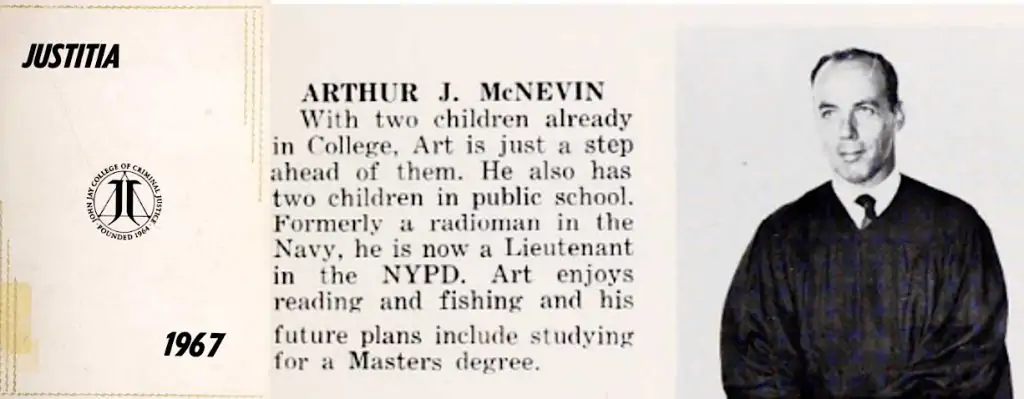
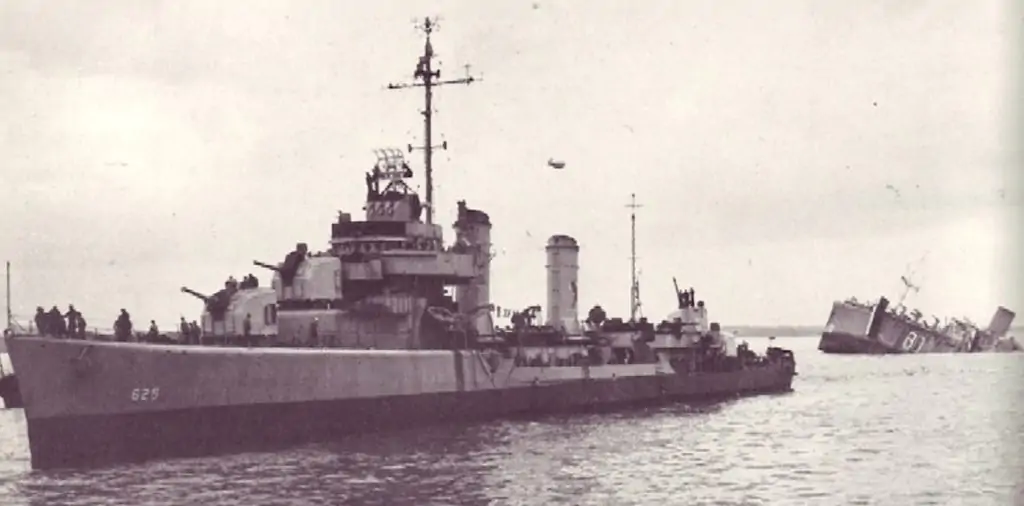
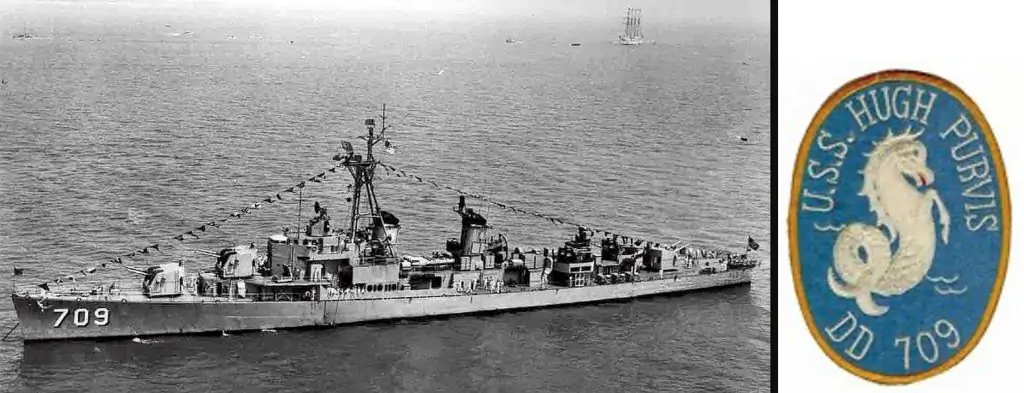
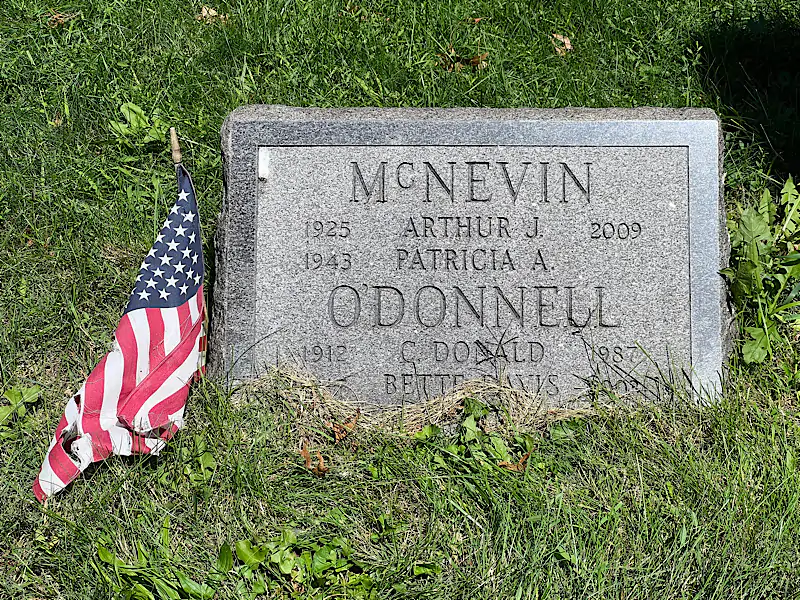
MIGLIACCIO, GIORGIO (1922-2008). Italian Army. There is no official documentation regarding the life and military service of Migliaccio. An unnamed source, perhaps a Brooklyn neighbor, provided the information regarding some details of his life. Migliaccio was born in Italy on November 2, 1922. He served in the Italian Army during World War II and was stationed in North Africa. He was a prisoner of war, captured by the British Army. Perhaps his capture was a result of some of the obstacles the Italian soldiers faced as outlined in the article by Justin Demetri, “Italians in World War II”:
The widespread belief seemed to be that the Italians were cowards, with disasters such as the failed takeover of a much weaker Greece and ineffective fighting in North Africa used as evidence. While these and other military mistakes by Italy do stand out, these debacles were not due to soldiers’ cowardice: what the Italian military lacked during their offensive campaigns was not bravery, but modern weaponry and good leadership, along with a clear lack of desire to achieve Mussolini’s goals…
Italy’s artillery included vestiges of the previous century, with a contingent of horse artillery and many leftovers from World War I. The new models, while very effective, were never made in large enough numbers. Modern tanks were virtually non-existent at the start of Italy’s war effort, as all that was available were lightly armored vehicles and “tankettes.”
Small arms, such as Beretta pistols and automatic rifles were very capable, but several machines and sub-machine gun types were often poorly made…The Italian shipyards produced (or retrofitted) fast and well-designed ships, but they had fatal flaws of being light in armor and without radar…Italian airpower looked good on paper, but was virtually non-existent, with only a few thousand aircraft at the start of the war, many of them bi-planes…
Of all the major military forces involved at the start of World War II, Italy had by far the least competent high command. Mussolini, the leader of Italy during WW2, filled the officer positions with men whose only “qualification” was loyalty to Il Duce.
Migliaccio was predeceased by his wife. According to his wife’s obituary, posted in the New York Daily News on March 31, 2001, he and Giuseppina had three children. Section 3156C, Hillside Mausoleum, Phase III.
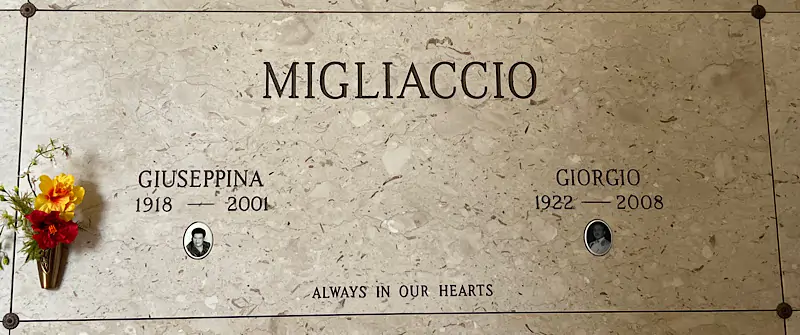
MONDELLA, RALPH T. (1924-1995). Corporal, United States Marine Corps. Mondella was born in Brooklyn. The 1925 New York State census documents that his father, Arthur, was born in Italy, immigrated to the United States around 1917, and was a confectioner. His mother, Josephine, was born in the United States and was a housewife. The couple had three children: Louisa, Ralph, and Robert. Also residing at the 120 Union Street household was Ralph’s maternal grandmother, Anna Meresca. As per the 1930 federal census, the Mondellas owned their house at 536 Hicks Street in Brooklyn. His father was a hatter and the couple had had a fourth child, Anna. The 1940 federal census documents that his father became a naturalized citizen and was a foreman for a fruit market. Louisa had graduated high school and was a bookkeeper.
Mondella’s World War II draft registration card details that he was 18 years old and lived at 211 Carroll Street in Brooklyn. His mother, residing at the same address, was named next of kin. He was employed and worked for a company located in New Jersey. The registrar’s report, dated June 30, 1942, describes him as 5′ 7″ tall and 130 pounds with hazel eyes, black hair, dark complexion with a scar over his left eye.
As per the April 1943 muster date from the United States Marine Corps, Mondella’s date of enlistment was April 8, 1943. He entered the corps as a private and was stationed at First Recruit Battalion, Recruit Depot, Marine Barracks, Parris Island, South Carolina. The July 1943 Marine Corps muster rolls documents that he was stationed at Headquarters and Support, School Battalion, Training Center, Camp Elliott, San Diego, California. The October 1943 muster rolls reports that he was stationed at Headquarters Squadron 32, Marine Air Group 32, 333rd Mas, fmf, Oak Grove Field, Polloksville, North Carolina. According to his wife, Antoinette, he served in the Pacific Theater during the war. Since Mondella was assigned to Mag-32, he may have taken part in some of these events as described on the marines.togetherweserved.com website:
Marine Aircraft Group 32 was commissioned on 1 February 1943 at Marine Corps Air Station Cherry Point, North Carolina. They trained there until January 1944 when they moved to the West Coast to prepare for follow on movement to the South Pacific. The group next went to Marine Corps Air Station Ewa, Hawaii where they remained until October 1944. November saw them move to Emirau as they prepared to support the campaign to recapture the Philippines.
MAG-32 arrived on Mangaldan on 27 January 1945 where they became part of Marine Air Groups, Dagupan (MAGSDAGUPAN) along with Marine Aircraft Group 24 (MAG-24). MAGSDAGUPAN fell underneath the 308th Bombardment Wing of the United States Army Air Forces which was supporting the 6th Army on Luzon. Portions of the group went ashore with the assault troops on Zamboanga on 10 March 1945. Two days later they were operating out of an expeditionary airfield. During this time, they became part of Marine Air Groups Zamboanga (MAGSZAM) along with Marine Aircraft Group 12 and Air Warning Squadron 4 (AWS-4). The SBD Dauntless aircraft of MAG-32 arrived on 23 March and began providing close air support. The first major operation that they supported was the landing of the 41st Infantry Division on Jolo Island on 9 April. Forty-four dive bombers from MAG-32 were directed against Japanese positions by tactical air control parties. The group also went on to cover amphibious landing on the islands of Parang-Cotabato, Sibago, Macajalar and Sarangani.
MAGSZAM was finally dissolved on 30 August 1945. During the recapture of the Philippines beginning in January 1945, MAG-32 and MAG-24 would fly a total of 8,842 combat sorties and drop more than 19,000 bombs as part of the Fifth Air Force in support of the Sixth Army.
As per the October 1945 Marine Corps muster rolls, Mondella’s rank was corporal and his station was Mwss-9, 9th Maw, Fmf, U.S. Marine Corps Air Station, Cherry Point, North Carolina. An article in the Brooklyn Daily Eagle, dated November 16, 1945, reports that Mondella of 435 Clinton Street, was “back to private life after overseas service.”
After the war, Mondella and his father co-founded Dell’s Maraschino Cherries Company. The business website states that “Dell’s Maraschino Cherries was founded by Arthur Mondella Sr. and his son Ralph Mondella in 1948 in a small 1,500 square foot store front in Brooklyn, New York.” His wife shares that he was the manager of the company and worked there at least forty years.
According to the Certificate of Marriage from the Commonwealth of Virginia, Mondella and Antoinette Cammareri were married on July 1, 1955 in Fauquier, Virginia. The certificate records that Mondella was 31 years old, resided at 1115 81st Street in Brooklyn, and was a foreman at a fruit market. Antoinette was 21 at the time of their marriage and was a switchboard operator. The couple had two children: Joann, born January 31, 1956, in Brooklyn, and Arthur Ralph, born June 25, 1957, in Brooklyn. Mondella’s obituary appeared in the New York Daily News.
A final note: In 1930 Ralph, age 6, lived at 536 Hicks Street in Brooklyn and his neighbor was Dominick Fontana (see), age 16, at 540 Hicks Street. They continued to be neighbors with Dominick moving to 571 Hicks Street, as per the 1940 census. Both boys would become World War II veterans interred at Green-Wood Cemetery. Section 177, lot 44715, grave 3.
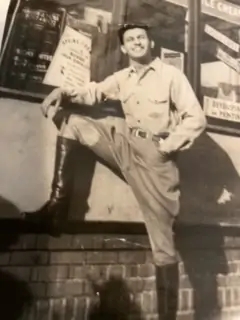
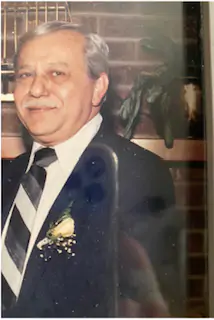

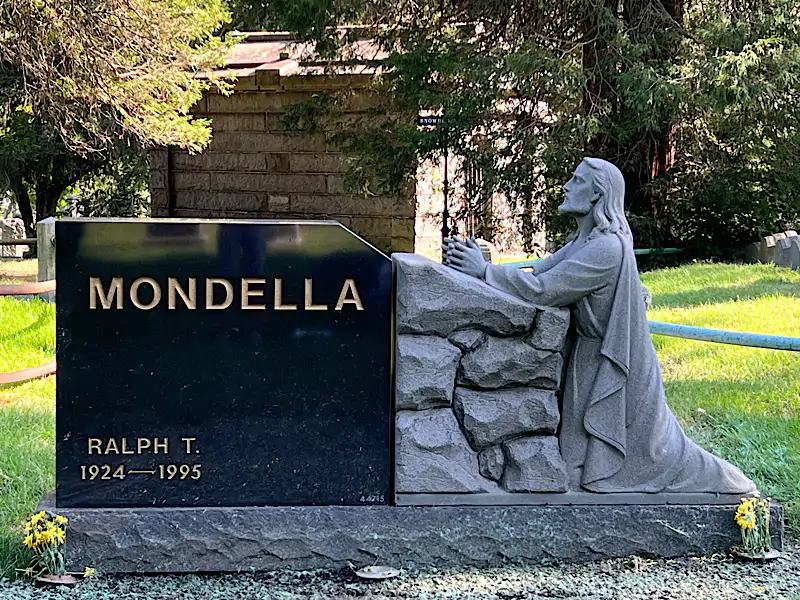
MONTALTO, JOSEPH FRANK (1918-1990). Sergeant, 130th Infantry, 33rd Division, K Company, United States Army National Guard. Born in New York, Montalto was the first son of Italian immigrants Luigi Montalto and Anna Perri. Luigi Montalto immigrated to the United States in 1912 and worked as a laborer in the paper and rags industry, and Anna Perri immigrated in 1915.
As per the 1930 census, at the age of 12, Montalto was living in Brooklyn, at 38 Henry Street with his parents, two younger brothers, Nunzi and Frank, and his paternal grandmother Philamena. By the 1940 federal census, Montalto had completed his first year of high school, was 21 years of age, and was living with his parents, two younger brothers, and two younger sisters, Lena and Fanny, at 100 Washington Street in Brooklyn. His father worked as a junkman while Montalto worked as a commercial printer with an income of $624.
Registered on October 16, 1940, Montalto’s World War II draft card describes him as white with a light complexion, brown hair and blue eyes, 5′ 5 ½” tall, and 164 pounds. He was 22 years old and employed by Keller Printing Company at 297 Lafayette Street in New York City. Montalto’s mother, Anna, was listed as his next of kin. On March 9, 1942, Montalto entered into service as a private at Fort Dix, New Jersey, as per his enlistment records; that same document describes Montalto as single without dependents, a pressman and plate printer, and 155 pounds.
Montalto served as a sergeant in the infantry, 33rd Division, K Company. As reported by his son, he trained in Hawaii and fought through the South Pacific. Montalto was a rifleman. He departed for service on June 19, 1943, and on November 8, 1945, to the Western Pacific Theater of Operations. Montalto’s company helped liberate the Philippines (fighting in Luzon) and New Guinea and went on to occupy Japan at the war’s end.
In January 1945, at age 26, Montalto was admitted to hospital, after suffering a blast injury to his ear from an artillery shell, according to World War II hospital admission card files. As per his son, he was treated for perforated ear drums suffered as a result of being blown out of a foxhole and was diagnosed with otitis media. He was discharged in February 1945.
On September 2, 1945, Montalto received his lapel button. He was honorably discharged on December 2, 1945, at Fort Dix, New Jersey. The discharge document describes him as white with blue eyes and brown hair, 5′ 5”, 145 pounds and lists 100 Washington Street, Brooklyn, as his address. It also indicates that Montalto received $216.58 in payment, had four dependents, had completed two years of high school, and was a printer machine operator.
For his service, Montalto was given the Asiatic-Pacific Service Medal, Good Conduct Medal, World War II Victory Medal, and the American Service Medal. His son reports that the Purple Heart Medal won in the battle for Luzon, is not included in his father’s records because the hospital in which he was treated was destroyed by the Japanese Army; his Purple Heart was awarded many years later.
After the war, Montalto was a printer for the United States Post Office for over ten years, as per his son. On September 29, 1990, he died at the age of 72 at West Hudson Hospital in Kearny, New Jersey. He suffered from hypertension and the immediate cause of death was acute myocardial infarction due to arteriosclerotic heart disease. His home address at the time was 169 Minna Avenue, Brooklyn. However, the New Jersey Death index lists his residence as Kearny, New Jersey. The funeral services were held by Cerasso-Generalli Funeral Home in Brooklyn. His wife Marie, who died 2005, is buried beside him. Section 6, lot 39340, grave 588.
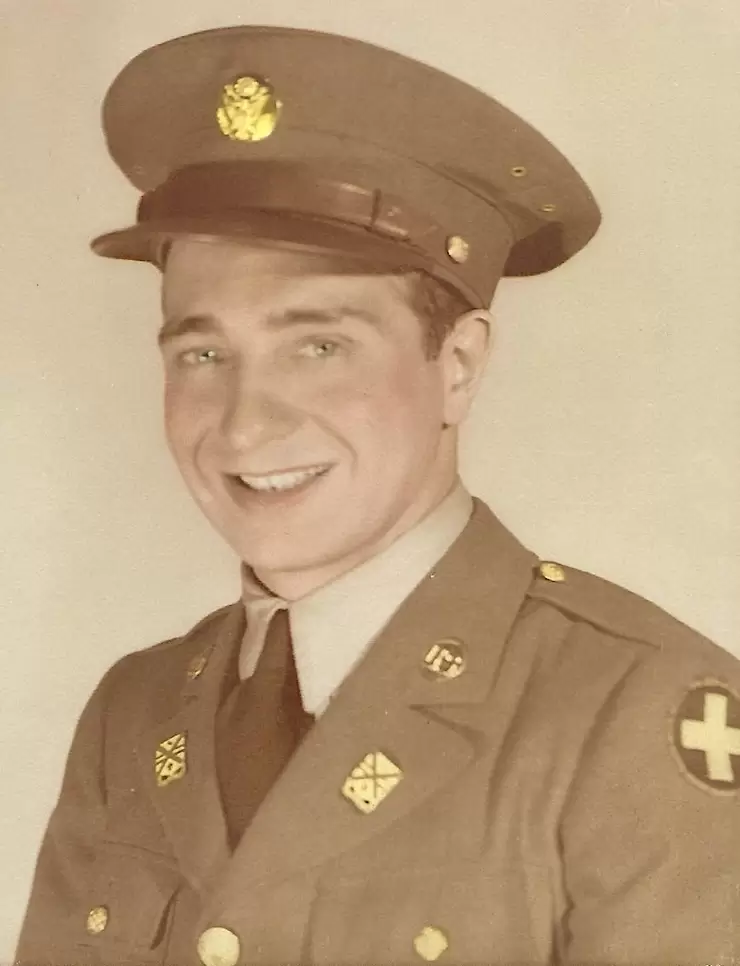
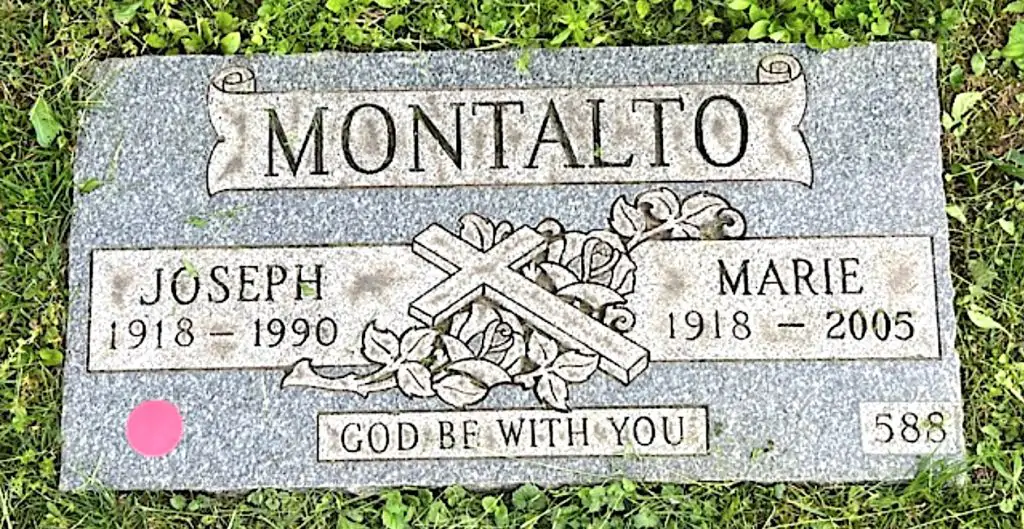
MONTEMARANO, CHARLES A. (1918-1981). Staff sergeant, 301st Bombardment Group, 419th Squadron, United States Army. Born in Brooklyn, the 1930 federal census reports that he resided with his parents, Gaetano and Angelina, at 6204 10th Avenue in Brooklyn. Both parents were born in Italy and his father worked as a superintendent of apartments. He was the sixth of eight children. The family’s last name was recorded in that census as “Monternarano.” An article published in the Brooklyn Daily Eagle on July 6, 1932, reported that graduation exercises were held on July 5, 1932, at Public School 176; Montemarano was one of the listed graduates. On June 26, 1936, the Brooklyn Daily Eagle reported that 970 students graduated from New Utrecht High School. The article, “970 Diplomas Are Awarded to New Utrecht Graduates: Members of Outgoing Class, One of the Largest Classes in History of Institution, Are Addressed by Dr. Vittorio Ceroni of Hunter College,” listed Montemarano among the 970 graduates.
According to the 1940 census, the family’s residence was 6404 10th Avenue. This address might be incorrect, as the prior census recorded the street number as 6204 and Charles entered 6204 10th Avenue as his residence on his draft card. The census taker also listed him, incorrectly, as “Charlie Montemavano.” The census records that he had completed four years of high school, was working as a checker in a cotton mill, and his income was $364.00. His draft registration card records his age as 22 years old. His employer was James Colt, and his place of employment was at 360 Furman Street, Brooklyn. Montemarano designated his father, residing with him, as the contact person. His registrar’s report, dated October 16, 1940, describes him as 5′ 8″ tall, 154 pounds, with brown hair and brown eyes, and light complexion. His World War II Army enlistment record reports that he enlisted in the Army on October 10, 1941, at Camp Upton in Yaphank, New York. His civil occupation conveys that he was skilled in the manufacture of textiles. His rank was private, and he was single with no dependents.
According to his eldest son, “My father was a waist machine gunner on a B17 Bomber.” His son also shared that Montemarano engaged in battles in the Italian, North African, and German campaigns. According to a notification to his commanding officer, he was assigned to the 301st Bombardment Group, 419th Squadron. As indicated on the Army Air Corps Museum website, the 301st Bombardment Group was comprised of four bomb squadrons: the 32nd, 352nd, 353rd, and 419th. Given his unit, Montemarano is likely to have taken part in bombing raids on docks, shipping facilities and railroad yards in Tunisia, Sicily, and Sardinia. Another website, Faces Beyond the Grave, describes his bombardment group as follows: “The 301st Bombardment Group was a highly decorated groups of B-17 Flying Fortresses that served primarily in Africa and Italy.” A war diary of a veteran of the 419th Bomb Squadron, 301st Bomb Group, described the raid of January 7, 1944, in which Montemarano took part and was wounded:
Eleven crews and nine planes of the 419th Bomb Squadron plus two planes borrowed from the 352nd Squadron participated in a mission to bomb Montpellier/Frejorgues A/D, France with the other Squadrons of the 301st Bomb Group. The bomb load of 12 – 500 lbs. each plane was dropped from an altitude of 23,500 feet with very satisfactory results. Heavy moderate flak was encountered but no enemy fighters. Three planes received minor damage and one major damage. First wave was led by Lt. Col. Barthlemess with planes from our Squadron with Lt. Markel as navigator and Lt. Wallace, bombardier (Group). The second wave was led by Major Neal with Lt. Silberman, navigator, and Lt. Anderson bombardier. Plane #3166, Lt. Graves and crew completely disappeared. Plane #0347 and crew reported down safely at Naples. Plane #7964 landed at Sardinia with waist gunner Sgt. Montemorano [sic] injured. Sgt. Montemorano [sic] was taken to 60th Station Hospital with the loss of right eye by flak.
As per the World War II Hospital Admission Card Files, he was admitted to the hospital in January 1944. The diagnosis was: “First Location: eyeball, generally; Second Diagnosis: contracture, other; Second Location: Eye, not elsewhere classified.” His medical treatment was: “Enucleation, simple, eye (removal).” He was discharged from the hospital in October 1944. Montemarano would be readmitted to two additional World War II hospitals for follow-up treatment on his eye. The first re-admittance was in December 1944 and the second was in May 1945. On March 1, 1944, his Commanding Officer was notified that “Under the provisions of par 3, Cir No 126, NATOUSA, dated 2 July 1943, a Purple Heart is awarded to Sgt CHARLES A. MONTEMARANO, 32175668, 419th Sq, 301st Bomb Group, for wounds received as a result of enemy action (German) over France on 27 January 1944. Number of medal: 431944. SO #37, Headquarters 60th Station Hospital, APO 763, 6 February 1944.” As per the March 7, 1944, issue of the Brooklyn Daily Eagle, he was promoted to the rank of staff sergeant in the 15th Army Air Force. In addition to the Purple Heart, he was awarded the Air Medal Decoration and Bronze Oak Leaf Cluster on March 13, 1944.
According to the New York Marriage License Bureau, he married Betty Walker on October 26, 1944. The couple had three children: Thomas, Carole, and James. As per the Department of Veterans Affairs BIRLS (Beneficiary Identification and Records Locator Subsystem), his discharge date was June 4, 1945. In civilian life, he worked for the United States Postal Service for twenty-six years. Section 39, lot 38325, grave 2387.
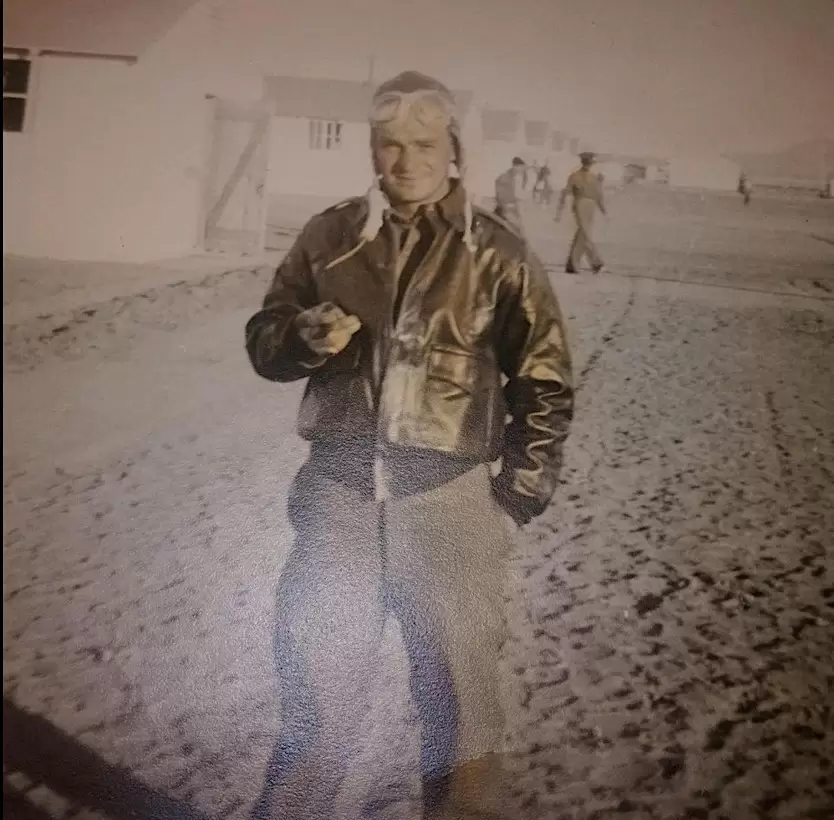
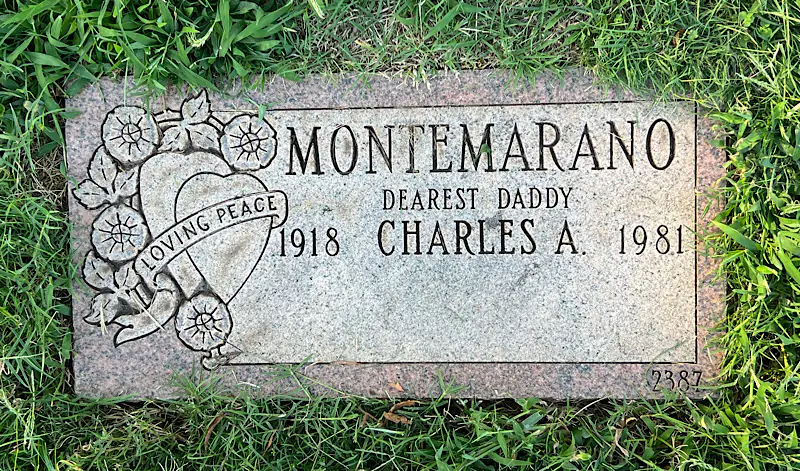
MONTEMARANO, GENNARO JOHN (1914-2012). Sergeant, 342nd Search Light Battalion, United States Army. Montemarano was born in Brooklyn. The 1915 New York State census documents that his father, Antonio, was born in Italy, immigrated to the United States in 1900 and was a porter in a saloon. His mother, Rose, née DeSanto, was born in Italy around 1890. The couple lived with their sons, Vito, Gennaro, and Pasquale (see) at 25 Garfield Place in Brooklyn. All the children were born in the United States. As per her death certificate, Montemarano had a younger sister, Maddelena, born on November 18, 1916. She passed away due to complications from pneumonia on March 22, 1918, and is buried in Holy Cross Cemetery.
According to the 1920 federal census, the family rented their 278 1st Street home. Montemarano’s father, who was unable to read or write English, was a laborer for a coal company and had applied for citizenship. His mother could neither read, write nor speak English and is recorded as an alien. In addition to the three sons, a girl, Catherine, was born into the family. The family surname is erroneously spelled as Montamarano in this census. The 1925 New York State census states that the family continued to reside at the 1st Street address, and a 5th child, Donato (Thomas) had been born. Montemarano’s father was a driver and the three older siblings, Vito, Gennaro and Pasquale, attended school. The children were mistakenly listed as residing with neighbors, Frank and Rose DeMuria, in the census.
As per the 1930 federal census, the family was renting the 1st Street residence for $22.00 per month. Monemarano’s parents are both documented as naturalized citizens, and although able to speak English, they were unable to write or read. Three more children were born to his parents: Matteo, Mary and Frank. At this time Gennaro was fifteen years old, attended school, and also worked as a delivery clerk for a grocery. The death certificate for his youngest brother, Frank, a little over one year old, documents that he passed away on June 23, 1930 due to bronchopneumonia. By the 1940 federal census, the family had moved to 276 1st Street and was paying $18.00 a month rent. His father worked in the clothing industry and all the children resided with their parents. Gennaro, now 24 years old, had attended school to the 8th grade and worked in the paper box industry.
Gennaro’s World War II draft card details that he was 26 years old, lived at the 1st Street address, and his mother was next of kin. He was employed by John Feaerstein, located at 81 Union Street, Brooklyn. The registrar’s report, dated October 16, 1940, describes him as 5′ 8″ and 150 pounds with brown eyes, brown hair and dark complexion. Two of Montemarano’s brothers had enlisted in the service. Pasquale enlisted in the army on February 24, 1941, was hospitalized twice due to combat injuries, and was discharged on August 12, 1945. William (Vito) enlisted in the army on August 6, 1943, earned the rank of Marine sergeant, and was discharged on April 12, 1946.
Unfortunately, there are no records detailing Montemarano’s enlistment or discharge. According to his obituary in The Journal News, dated April 16, 2012, he was “a proud World War II veteran and served in the United States Army from 1941 to 1946 at Fort Randolph in the Panama Canal Zone.” His son, Anthony, shared that Montemarano’s rank was sergeant, his unit was the 342nd Search Light Battalion, he served in the Coastal Artillery Corps, Panama Canal Zone, and Fort Randolph, and suffered two non-combat injuries in the Canal Zone. Fort Randolph was a Coast Artillery Corps fort built on Margarita Island, constructed to defend the northern end of the Panama Canal. According to the World War II Database website:
Just prior to the US entry into WW2, the Panama Canal Zone was assigned under the Caribbean Defense Command, and a major effort to improve the poor communication systems (and other less-than-ideal infrastructure) began mid-year. When the tension with Japan mounted, all Japanese ships were forced out of the canal zone by 22 Jul 1941. The canal zone was well-defended due to its strategic importance. Protecting the nearby waters were anti-torpedo nets and naval mines. On the ground, the defenses included chemical smoke generators, anti-aircraft gun positions, two long range radar (one on each coast), 634 search lights, 30 aircraft warning stations, 11 16-inch coastal gun batteries, and finally troops stationed at Colón, Margarita Island, and Toro Point (Fort Sherman). Although hostile submarines did venture near the canal, it was never in serious harm.
Montemarano’s son also shared that his father received a Marksmanship Badge and Good Conduct Medal and was a disabled veteran.
As per the New York Marriage License Indexes, Gennaro Montemarano and Grace Montecalvo applied for a license on February 17, 1944 in Brooklyn. However, their son documents their marriage date as January 28, 1944. The couple had two sons, Anthony and Louis. According to the 1950 federal census, Gennaro worked as a car mechanic and earned $2,340 per year. He and his immediate family lived at 276 1st Avenue, 4th floor. His parents and some of his siblings also resided at that address, but on the 2nd floor. According to his son, Montemarano worked for the United States Postal Service for 30 years. His obituary in The Journal News of White Plains, New York, states that he was a mechanic for the postal service. He died in West Haverstraw, New York, at 98 years old. His obituary also reports that “Poppy’s (nickname) favorite things in life were auto repair, the Yankees, professional boxing and most important to him – family.” Section Yard, lot 39000, grave 194.
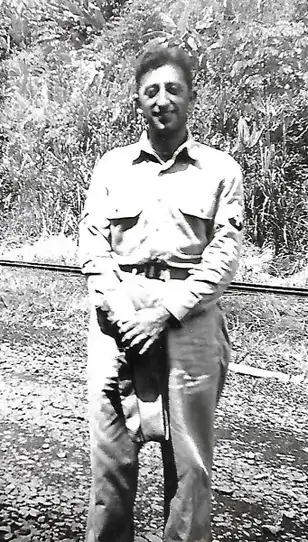
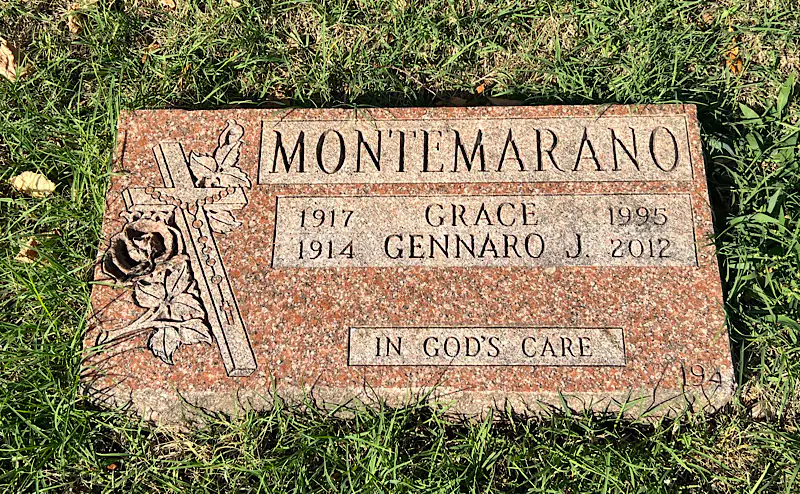
MONTEMARANO, PASQUALE JOSEPH (1915-1991). Staff sergeant, 4th Infantry Division, United States Army. Pasquale was born in New York to Anthony (Tony) and Rosa (Rose) Montemarano, both immigrants from Italy. By the time of the 1920 federal census, five-year-old Pasquale was the third of four small children. The family lived on 1st Street in Brooklyn. By the time of the 1930 federal census, 14-year-old Pasquale was working as a delivery clerk in a shoe store. The family had grown to eight siblings. Ten years later, according to the 1940 federal census, 25-year-old Pasquale was working as a longshoreman, having completed at least one year of high school.
Montemarano registered for the draft at age 25, giving his mother’s name and their shared address as his permanent contact. He listed his employer as Jule Sottnek & Co., of Manhattan. Pasquale was inducted into the Army in February, 1941. His height was listed as 5′ 3″, and his weight as 125 pounds.
According to his son, Michael, Pasquale was joined in the wartime armed services by his three brothers: Gennaro (see), Donato, and Matteo. Pasquale served in the 4th Infantry Division, rising to the rank of staff sergeant. The 4th, or “Ivy,” Division was the major American invasion force to land on Utah Beach in Normandy on June 6, 1944. After 299 days in combat in Europe, the division had suffered more than 21,000 casualties.
Pasquale was injured and hospitalized twice during this time: the first time, with wounds to his neck from artillery shell fragments during battle in June, 1944; then, in November, he was struck by a Jeep during battle and wounded in his back. Both times, he was released from the hospital and went back on duty. After four and a half years in the army, Montemarano was discharged in August, 1945, at the age of 30. According to his son, he received a Bronze Star for valor on Utah Beach; a Purple Heart with clusters; and the World War II and American Defense Service Medals.
In September 1949, he married Marie T. Manco in Brooklyn. Together they raised three children: Richard, Joan, and Michael. Montemarano worked for 35 years for the United States Postal Service. He earned his high school equivalency diploma in 1977, when he was in his 60s. Pasquale died a month short of his 76th birthday. Section 114, lot 40803, grave 1.
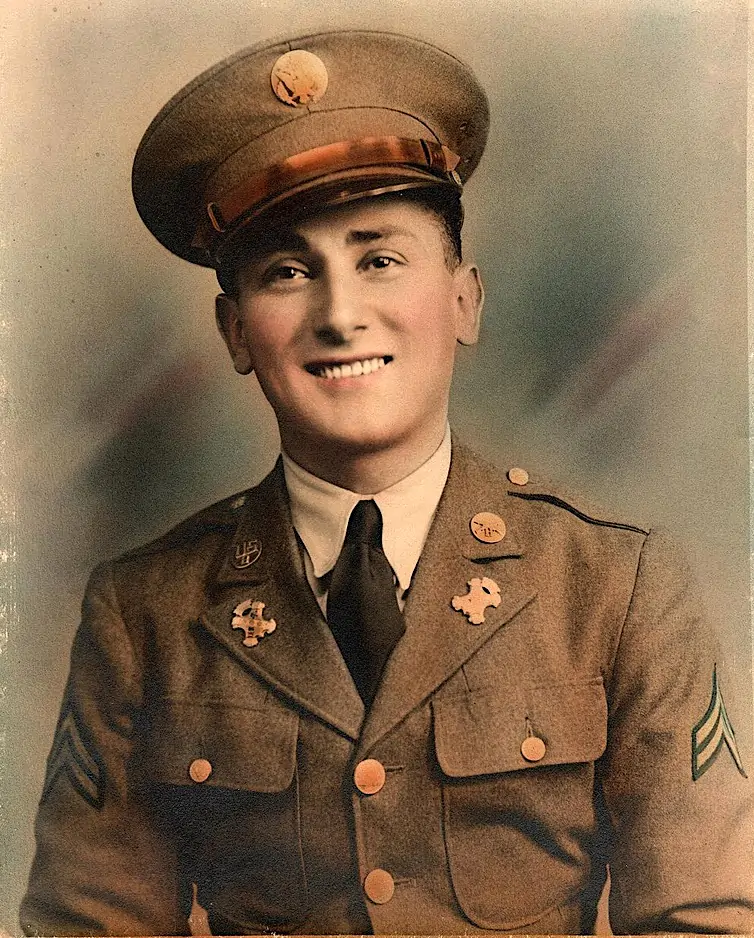
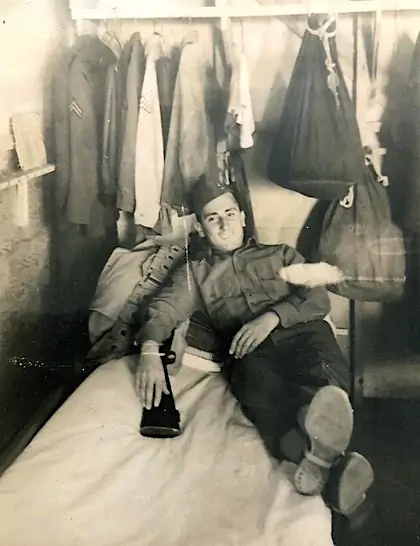
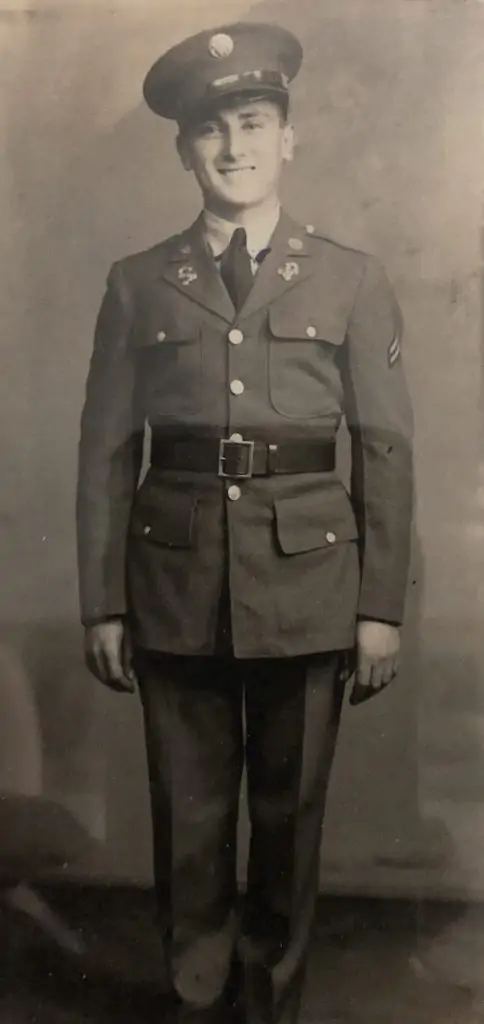
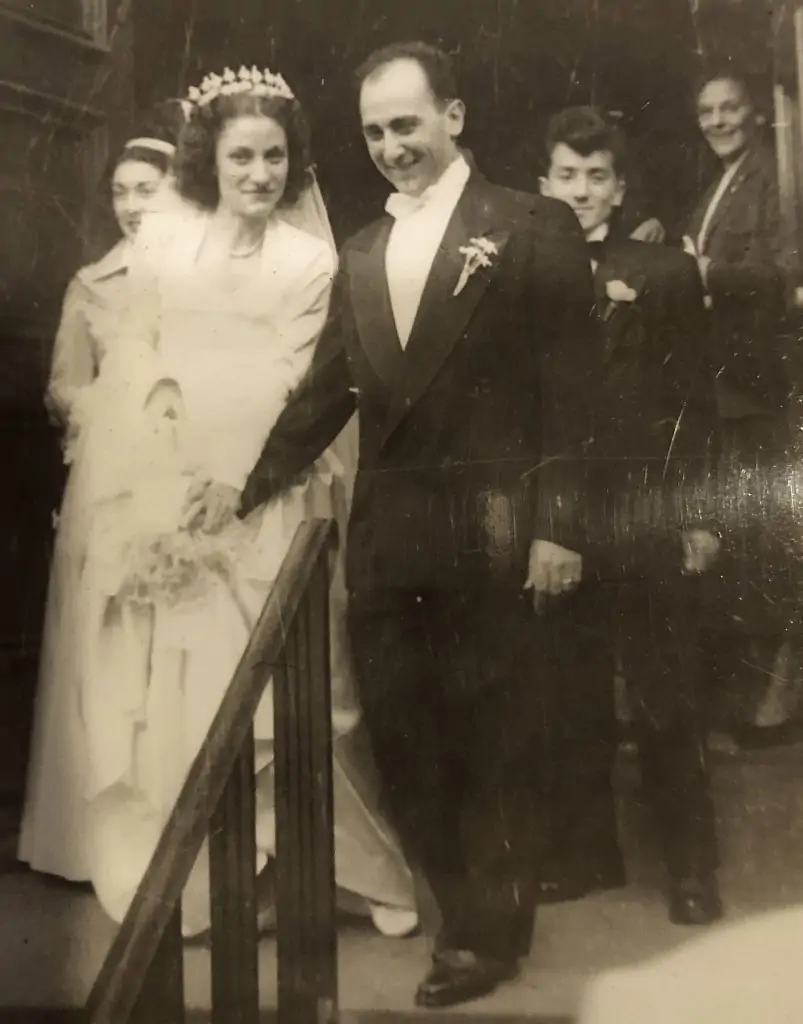
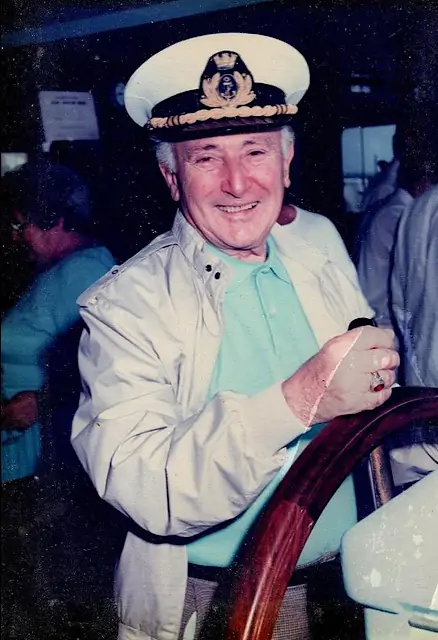
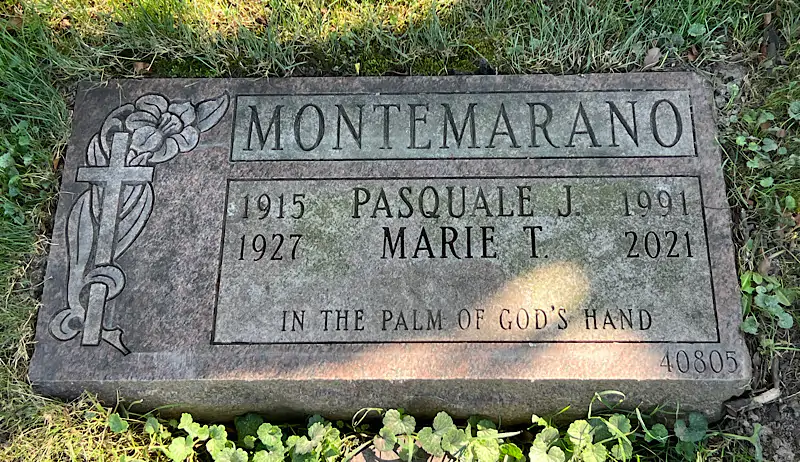
MORABITO, DAMIAN A. (1926-2014). Rank unknown, unit unknown, United States Army. Born in Brooklyn, the 1930 census reports that the four-year-old Morabito lived with his parents, Vincent and Maria, at 176 18th Street in Brooklyn. His father was born in Pennsylvania and his mother’s birthplace was Italy. The census taker recorded his name as “Damiano Marakto.” He was the sixth of seven children. As per the 1940 census, the family still resided at the 18th Street address. His name was recorded as “Domano Morabit” and he was in the seventh grade. He was now one of eight siblings. As per his niece, Morabito graduated from Brooklyn Technical High School on January 25, 1944. He briefly attended Cornell University before his military service.
His World War II Army enlistment record notes that he enlisted on June 20, 1944, at Fort Dix, New Jersey. He attended four years of high school and was single, without dependents. According to his niece, he was called to active duty on June 20, 1944, and arrived in Europe on February 8, 1944. He served in the Central Europe Rhineland Campaign and took part in the occupation of Germany. As per his niece, “He crossed into Germany in a tank destroyer in the final campaign. He was in Germany at the time of the surrender and remained there for the next year with the Army of Occupation.” Morabito departed Europe on May 20, 1946, and was discharged from the United States Army on June 4, 1946. He received the Army of Occupation Medal, the European-African-Middle Eastern Campaign Medal, the Good Conduct Medal, and the World War II Victory Medal. On September 19, 1950, he enlisted in the United States Air Force. His niece states that he was “an Air Force career man and retired as a sergeant.” Upon his retirement from the Air Force, Morabito served as a government employee at the Fort Hamilton Army Base in Brooklyn. Section 31, lot 44902, grave 26.
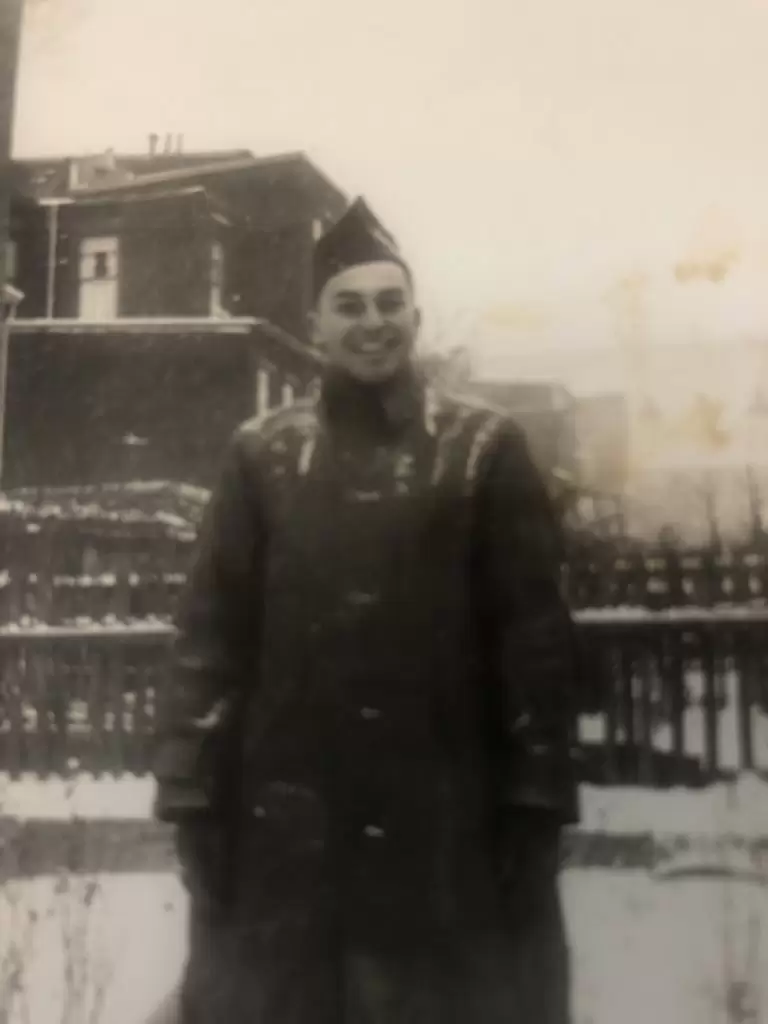
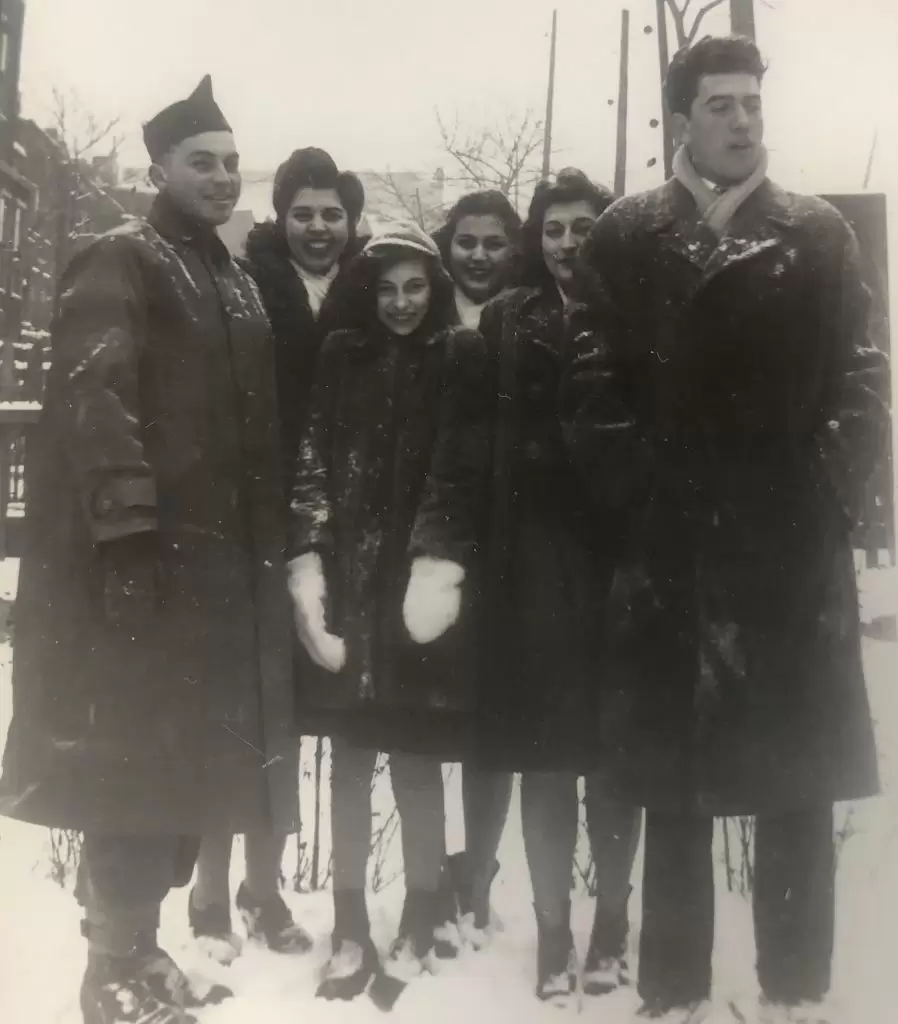
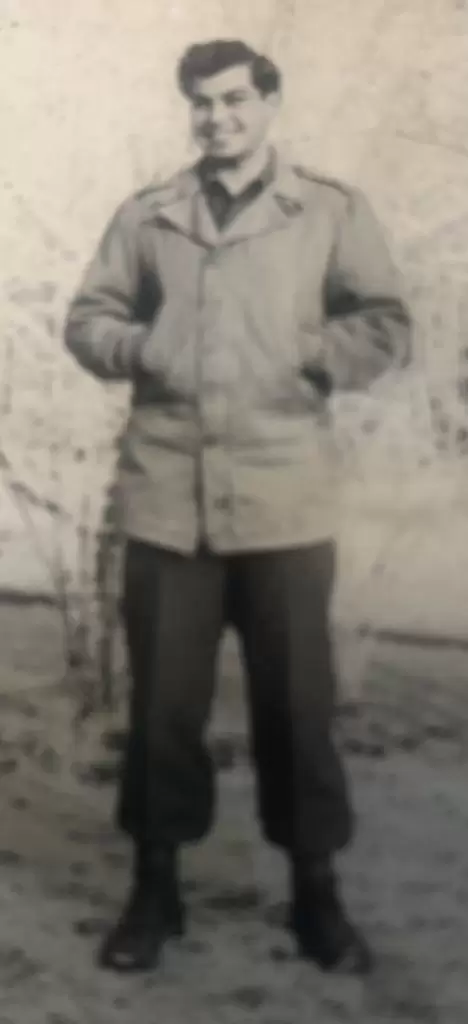

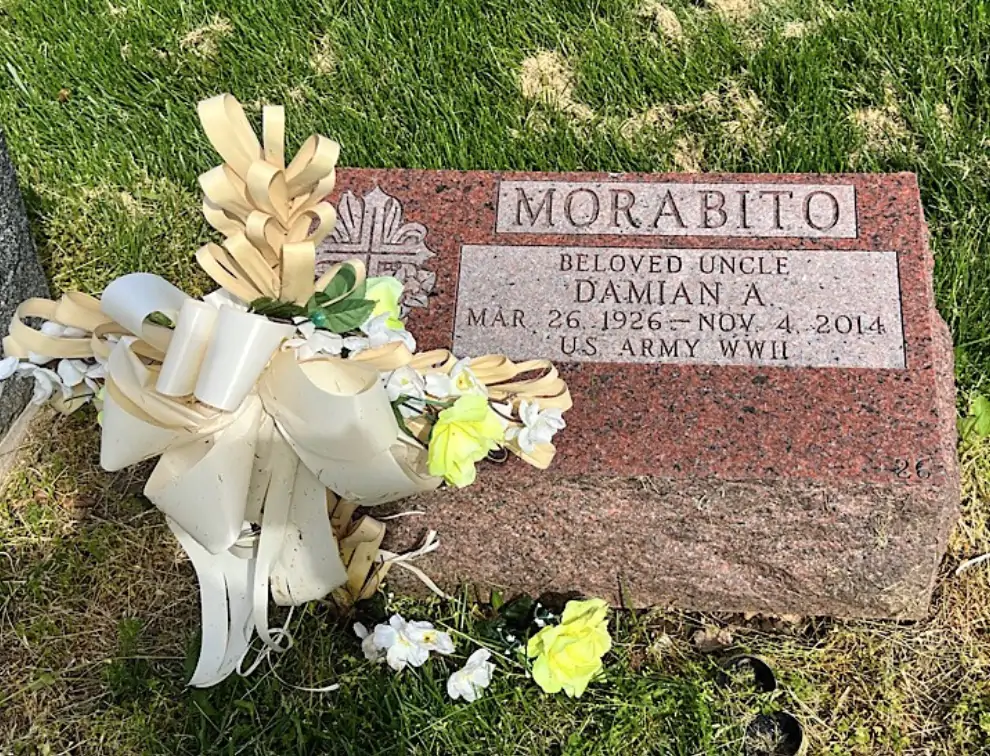
MORELLO, ALBERT G. (1924-1989). Private, Infantry Cavalry, United States Army. According to the 1925 New York State census, the one-year-old Morello resided on West 9th Street in Brooklyn with his father and mother, Porfirio and Catherine, and eight older siblings: Conchetta (19), Mary (15), Joseph (12), Alfred (11), Louis (9), Pauline (7), Anna (3), and Salvatore (2) (see). His parents were born in Italy and all the children were born in the United States. His father worked in a grocery store and his eldest sister was a grocery clerk. The 1930 federal census records that the family still resided on West 9th Street and Albert and five of his siblings still lived in the household. The family surname is misspelled on the census as Moriello, and also misspelled in the transcription as Morallo. There are discrepancies regarding his father’s first name. On the 1925 census, his father’s name is spelled Porfirio, but is spelled as Profilio on the 1930 census. On the transcription of Morello’s Social Security application, his father’s first name is spelled Proifrio.
Morello’s World War II draft registration card notes that he was 18 years old, lived at 439 Columbia Street in Brooklyn and was unemployed. His mother, residing at the same address, was named next of kin. His registrar’s report, dated December 14, 1942, describes him as 5′ 9″ tall and 175 pounds with brown eyes, black hair, and dark complexion. As per his World War II Army enlistment records, he enlisted on March 6, 1943 as a private. He had completed two years of high school education and his civil occupation was a stableman.
According to data provided by Geraldine Palumbo Marcinkiewicz, Morello served in the Army Infantry Cavalry. The March 21, 1945 issue of the Brooklyn Daily Eagle provides a picture of Morello and four soldiers with the caption: “Combining duty with pleasure, GIs of the 7th Army borrow a horse and buggy for transportation on their way to lay wire communications system.” Regrettably, there is no additional information as to where Morello was assigned, nor what action he took part in. If he was assigned to the Infantry Cavalry and, specifically, to the 7th Army, then Morello may have served in the 7th Cavalry Regiment. This regiment has a long and interesting army history. According to William H. Boudreau on the 1cda.org website, the regiment can trace its history back to the Civil War. With regard to the regiment’s participation in World War II, Boudreau writes:
At 8:00 hours 04 March 1944, 7th Regiment, as a part of the combat reinforcements of the Admiralty Campaign landed, unopposed, in the Los Negros Islands at the northeast corner of the Momote Airdome. Their first significant resistance was encountered on 05 March. By 10 – 11 March, mop up operations were underway all over the northern half of Los Negros Island and attention was being given to a much bigger objective immediately to the west – Manus Island.
The Manus Island invasion commenced at dawn 15 March, with heavy shelling, naval bombardment and air attacks. Soon afterward, the 2nd Brigade, under the command of Brigadier General Verne D. Mudge, surprised the enemy by swarming ashore at two beaches near the Lugos Mission Plantation. By dusk the 1st Squadron of the 8th Cavalry regiment had advanced past snipers and scattered resistance and dug in on the western edge of Lorengau Airdrome, the last airfield controlled by the Japanese. 16 March was a day of heros – and casualties – as Troopers charged or crawled through heavy machine gun fire to wipe out the enemy positions. Lorengau Airdome was captured the next day, after the 7th Cavalry moved up to relieve the weary 8th Cavalry fighters.
On 18 March, the 2nd Brigade crossed the river in force and drove the enemy from Lorengau Village. The objectives were Rossum, a small village south of Lorengau and Salsia Plantation. By 21 March, the 8th Cavalry had won control of most of the plantation, but the battle for Rossum was slowed by heavy jungle which the Japanese used to their advantage. After 96 hours of bitter combat the 1st Squadron, 7th Cavalry was relieved by the 1st Squadron, 8th Cavalry. The final push to Rossum was made behind heavy artillery fire and air bombardment. On 28 March, the battle for Los Negros and Manus was over, except for mopping up operations.
The Admiralty Islands campaign officially ended on 18 May 1944. Japanese casualties stood at 3,317 killed. The losses of the 7th Cavalry Regiment included 43 dead, 17 wounded and 7 died of non-battle injuries. Training, discipline, determination and ingenuity had won over suicidal attacks. The 7th Cavalry Troopers were now seasoned Veterans.
After a period of 5 months in rehabilitation and extensive combat training, the 7th Cavalry Regiment received instructions on 25 September, to prepare for future combat operations. On 20 October, the regiment began the assault of Leyte Island. The first wave landed at White Beach at 10:00. The 7th Cavalry was assigned the mission of securing the Taeloban Airstrip. During the Leyte Campaign, the regiment suffered 52 killed, 204 wounded while inflecting 1,390 losses on the enemy. On 02 January 1945, the evacuation of Villaba began. Upon arrival in Tunga, the entire regiment devoted its time to establishing a camp, re-equipping and rehabilitation.
After his service, Albert applied for a marriage license with Anna Garguilo in 1955 in New York City, as per the New York City Marriage Indexes. According to an obituary for the couple’s son, posted on Legacy.com, Morello and his wife had five sons. The United States Department of Veterans Affairs BIRLS (Beneficiary Identification and Records Locator Subsystem) Death File records that Marello passed away from natural causes, Section 505D, Crypt, Crestview.
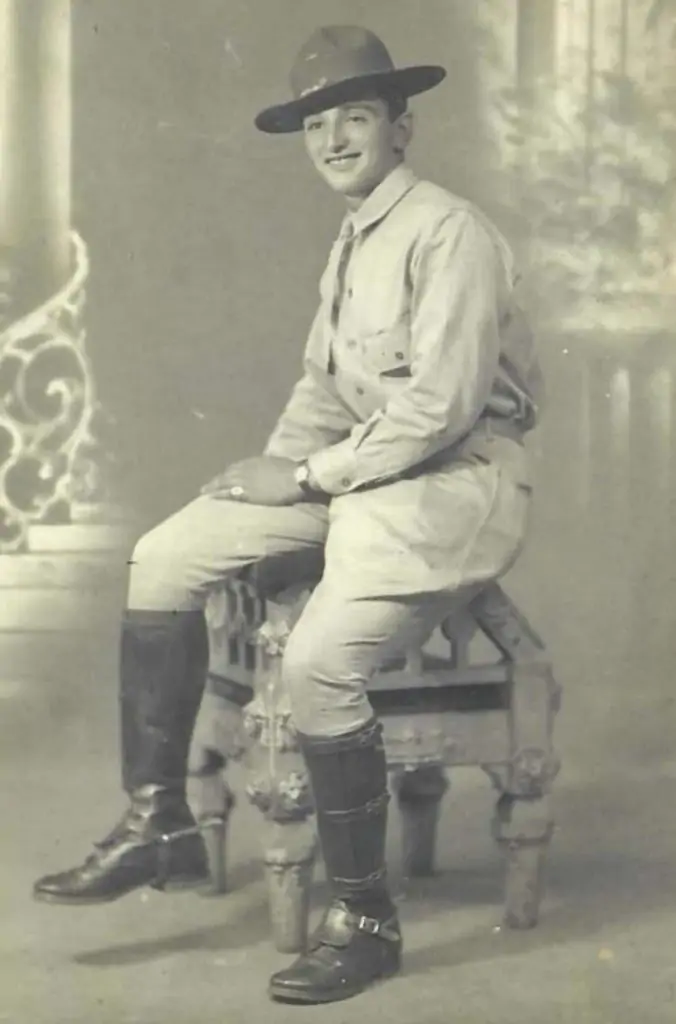
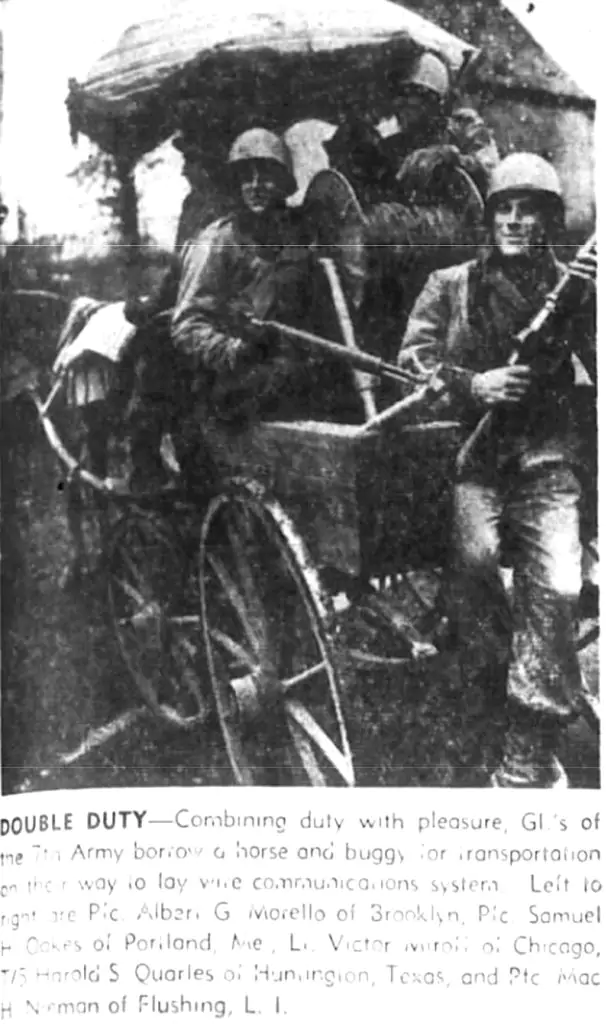
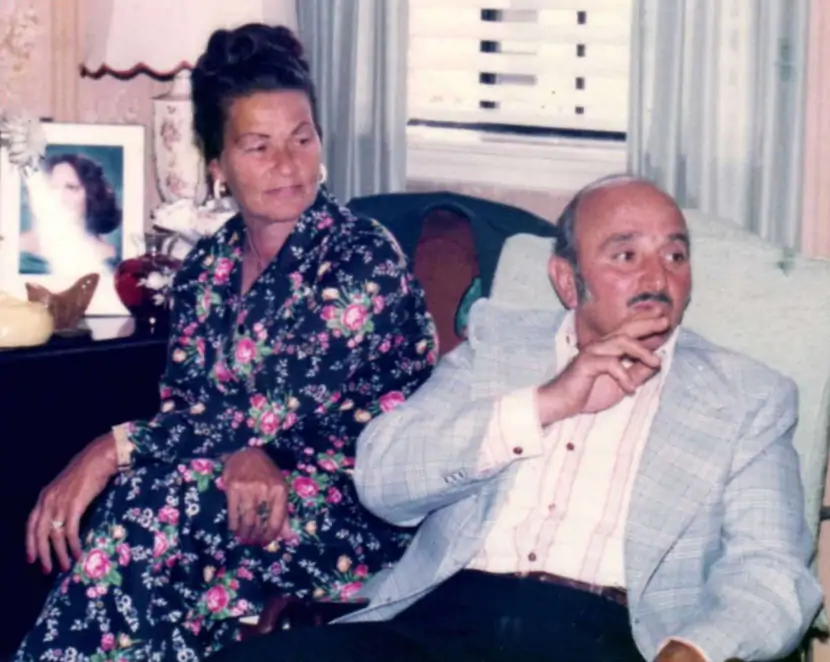
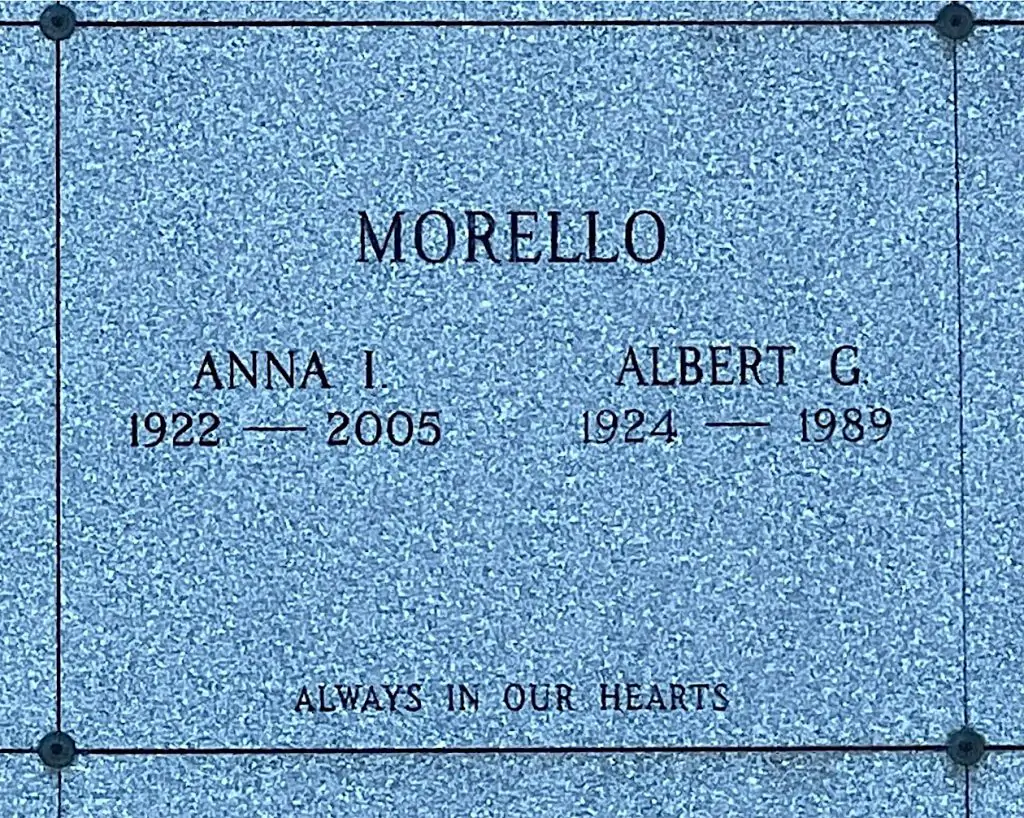
MORELLO, SALVATORE THOMAS (1923-1996). Staff sergeant, 390th Bomb Group, United States Army Air Force. According to the 1925 New York State census, two-year-old Salvatore lived in Brooklyn with his Italian-born parents and eight siblings: Concetta, Mary, Joseph, Alfred (later Ralph), Louis, Pauline, Anna, and Albert (see). All nine children were born in the United States. His father, Porfirio, owned a grocery store. By the time of the 1940 federal census, 16-year-old Salvatore was living on West Ninth Street with his parents and five of his siblings. He had finished his first year in high school.
Salvatore Morello registered for the draft in 1942, soon after his 19th birthday. He gave as his home address 439 Columbia Street (possibly the location of the family grocery store), as did his four brothers on their draft registration cards. He stated that he was unemployed. Salvatore is described as 5′ 9″ in height, weighing 150 pounds, with brown hair and eyes and a dark complexion. He enlisted in the Army in January 1943.
According to a family member, Salvatore served with the Army Air Force in the European Theater. He was with the 390th Bomb Group, a waist gunner on B-17 Flying Fortresses based in Framingham, Suffolk, England. An archival photograph taken in September, 1944, shows Salvatore as part of the crew of the B-17 “I’ll Get By.” An article in the August 16, 1944 issue of the Brooklyn Citizen noted that Staff Sergeant Salvatore T. Morello was awarded the Air Medal for meritorious achievement in air combat. He was discharged from the Army in September 1945.
By the time of the 1950 federal census, 26-year-old Salvatore was living with his parents and two of his brothers on West Ninth Street and working as a truck driver in the produce trucking industry. His older brother Ralph was running the family grocery store.
A marriage between a man named Salvatore T. Morello and a woman named Rose Mazza was recorded in Brooklyn on October 10, 1951, but it’s not confirmed that this is the same man as in this biography. He last lived in the Bath Beach section of Brooklyn. Section 197A, lot 39451, grave 1.
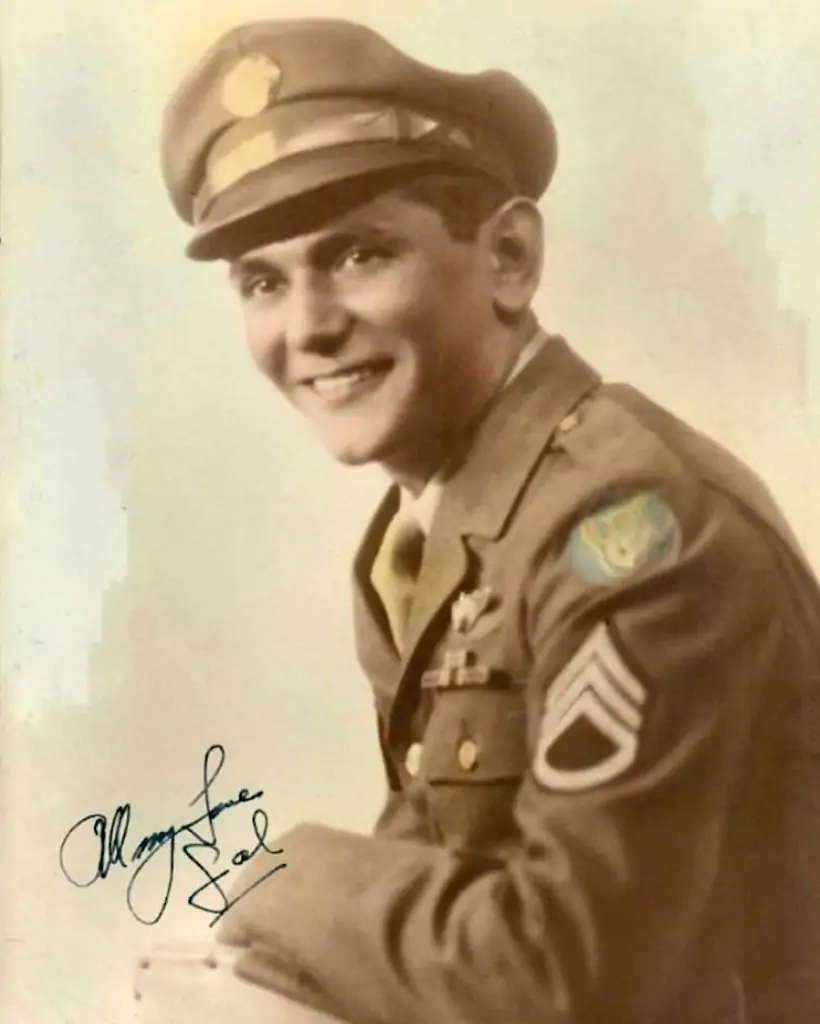
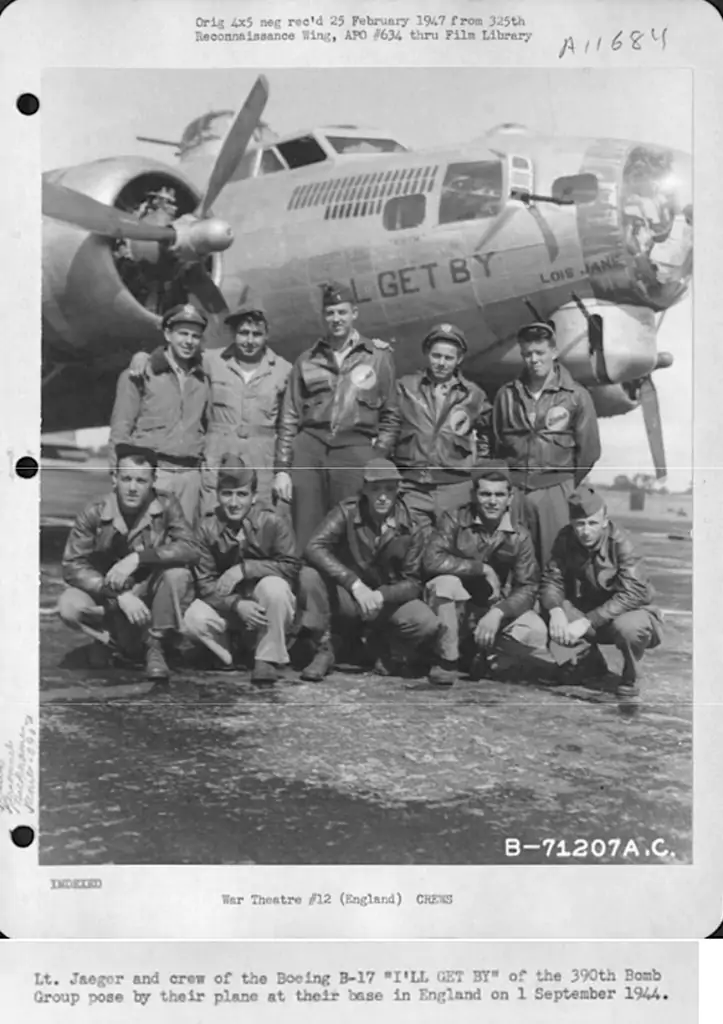
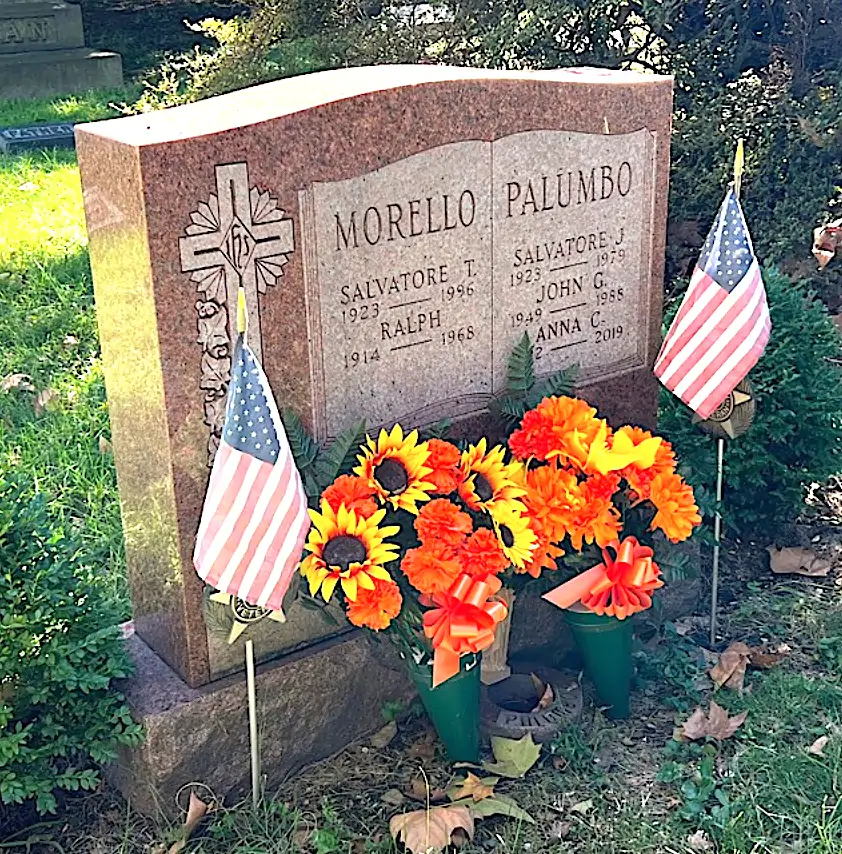
MORENO, SALVATORE JOSEPH (1922-2015). Sergeant, 590th Maintenance Division, Army Air Force, United States Army. According to Ancestry.com, he was born in Manhattan to Nicola and Maria Moreno, and was one of six siblings. The family lived in Brooklyn as early as 1930. In 1933, his mother gave birth to a boy, but the child passed away the same day. As per the 1940 census, the seventeen-year-old Moreno lived with his family at 2714 Glenwood Road in Brooklyn. He was an apprentice and his income was $600 for the year. He had completed two years of high school and had six siblings. In the transcription, his first name is spelled “Salvadore” and Leroy Concert, age 47, is listed as a sibling.
Moreno registered for the armed forces on June 30, 1942, at the age of 19. As per that registration, he was 5′ 11″ tall, 160 pounds, with brown eyes, brown hair, and a dark complexion. His place of residence was 2006 60th Street, Brooklyn. He listed his sister, Antoinette Massa, as his contact person. His employer was Mapleton Park Moving Van, located at 6324 20th Avenue in Brooklyn. According to his granddaughter, he served in England from October 1943 to January 1946. She shared that, “While serving in England, he met his future wife, Winifred, at the Plaza Dance Hall in Manchester. They married at St. Patrick’s Catholic Church of England on October 13, 1945, and traveled to Kendall, Scotland, for their honeymoon. Thereafter, she traveled with him.”
No documentation can be located regarding the Army Air Force 590th Maintenance Unit. In fact, Moreno might have been assigned to the Royal Air Force Burtonwood/United States Army Air Force Station 590. If so, his duties were likely the maintenance of aircraft needed to attack German cities and industry. A notation on his draft card records that he was honorably discharged on February 1, 1946. As per his granddaughter, he received the World War II Victory Medal.
Moreno and his wife had three children. According to his obituary in the Asbury Park Press, he was the proprietor of Oscar’s Restaurant at the Golden Gate. Upon his retirement, he moved to Holmdel, New Jersey. His last place of residence was in Edison, New Jersey. Section 135, lot 42699, grave 7.

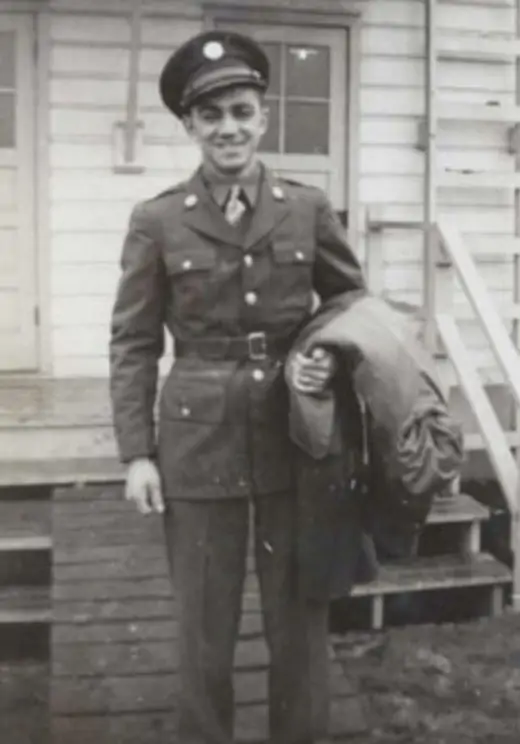
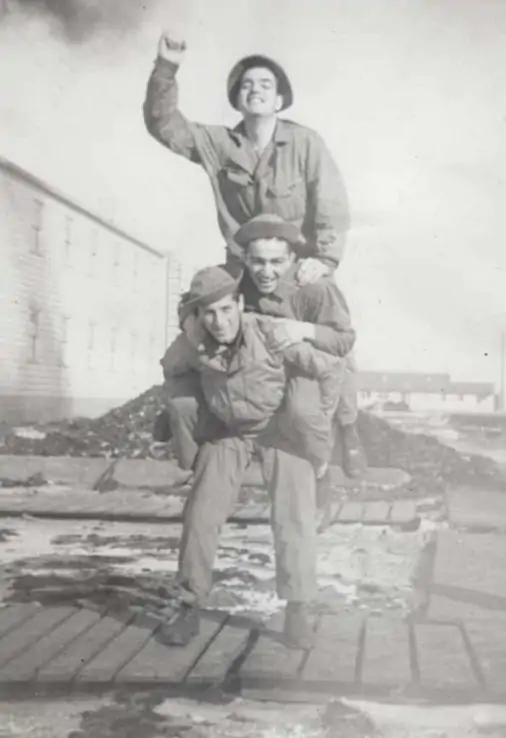
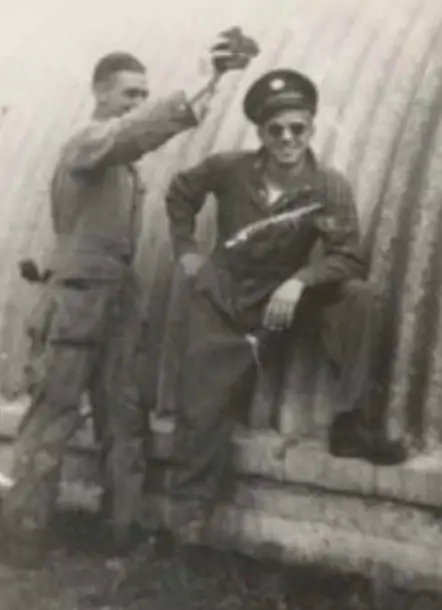
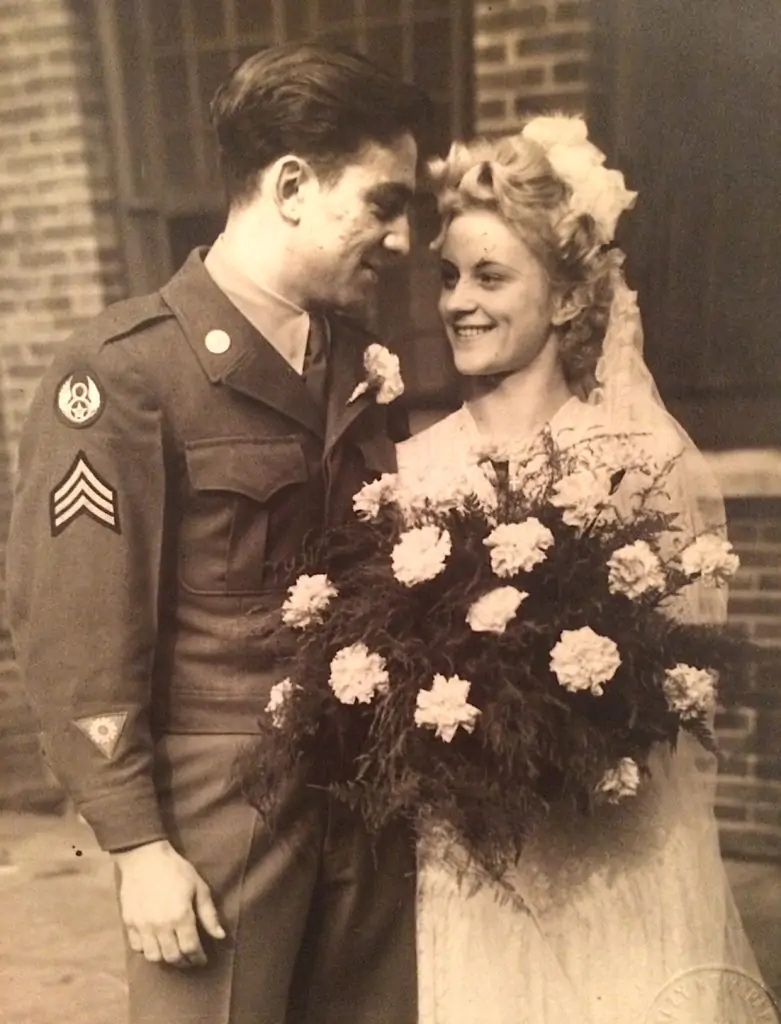
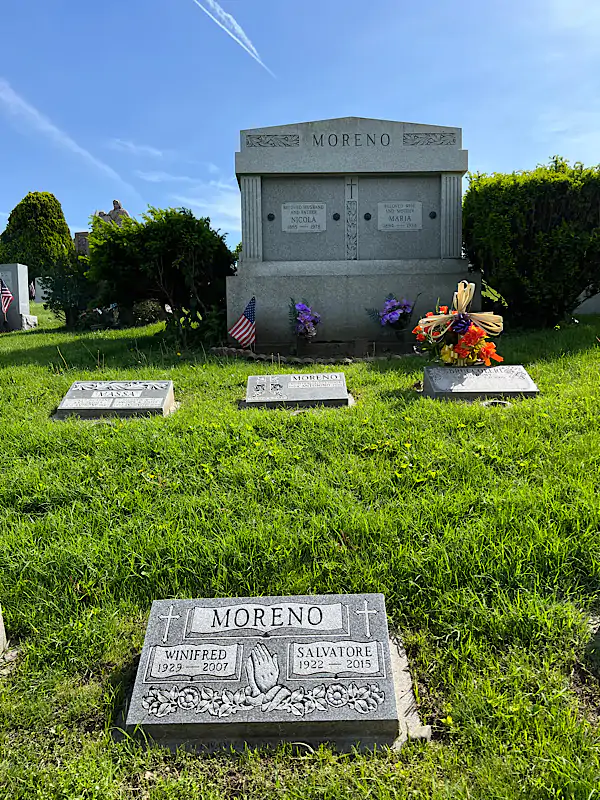
MORGAN, HOWELL A. (1905-1968). Private, Engineers, United States Army. According to the 1910 federal census, Morgan lived on New Utrecht Avenue in Brooklyn with his father and mother, Joseph and Elizabeth, and two older brothers, Kenneth and Raymond. Both parents and siblings were born in New York and Morgan was born in New Jersey. His father is listed as head of household and was a painter. As per the 1915 New Jersey census, the family was living in Palisades, New Jersey. His father, 51 years old, was a painter. Both brothers were working at the time, Kenneth as an accountant and Raymond, a painter. This census documents he had a younger sister, Elizabeth. The 1920 federal census records that the family lived on Asbury Street in Palisades Park, New Jersey. Morgan’s father owned his own paint business and his two brothers were house painters. Morgan was attending school at the time and there is no documentation regarding his sister. By the 1930 federal census, the family had moved to River Edge Manor in New Milford, New Jersey. His father, brothers, and Howell were house decorators. There is no mention of his sister in this census, nor subsequent ones. As per the 1940 federal census, his father had passed away and his mother is listed as head of household. Living on Monmouth Avenue in New Milford, he and both brothers resided with their mother.
His World War II draft registration card details that he was born in Jersey City. His mother was named next of kin. Both lived at 308 Monmouth Avenue in New Milford. Morgan recorded his employer as JW Morgan & Sons located at the same address where he was living. The registrar’s report, dated October 16, 1940, describes Morgan as 5′ 6″ and 160 pounds with brown eyes, brown hair and light complexion.
According to his World War II Army enlistment records, he was single and his civil occupation was a semiskilled painter. His enlistment date was November 2, 1942 and his enlistment place was Newark, New Jersey. There is no official documentation of his military history regarding where he was stationed or his discharge date.
As per his obituary in the Hackensack Record, he lived at the same address in New Milford for the last 40 years of his life, worked for the local Department of Public Works, and served as chief of the New Milford Volunteer Fire Department. He was a member of the Exempt Firemen’s Association, American Legion Post 217, and the Ridgefield Park Elk’s Lodge. His obituary confirms his service in the Engineers during World War II. Green-Wood Cemetery’s online burial search erroneously spells his surname as Morgann. The local chapter of the Elks placed a notice in the Hackensack Record announcing his death and noting that services would be held at the Norman Funeral Home in Oradell. Section 51, lot 11174, grave 117.
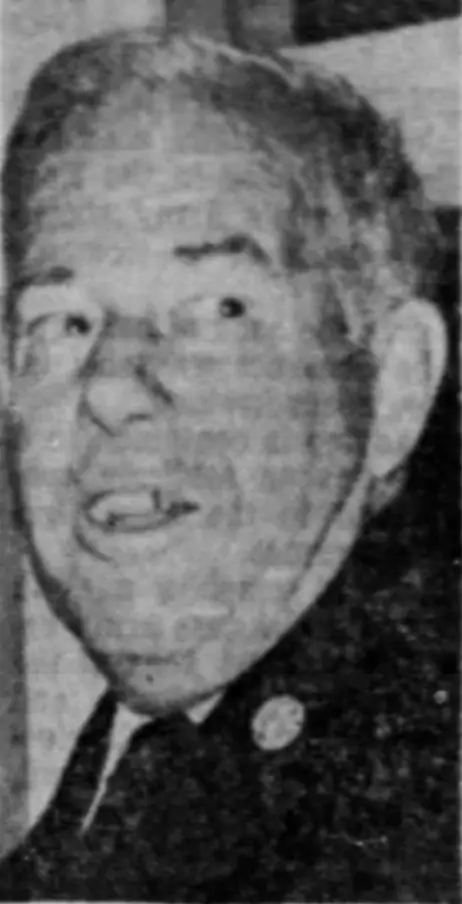
MULIA, NUNZIO (1923-2010). Private 1st class, 452nd Ordnance Evacuation Company, United States Army. Nunzio Louis “Prep” Mulia was born in New York to Stephen Mulia and Genevieve di Somma, immigrants from Italy, according to the 1925 New York State census. He was the fourth of what would be seven siblings, and may have been the first one born in the United States. The family lived in the neighborhood of Rosebank, Staten Island, which was then a destination for Italian immigrants. His father worked as a hotel cook. By the time of the 1930 federal census, the family was living at 529 Carroll Street in Brooklyn; seven-year-old Nunzio attended Our Lady of Peace Grammar School nearby. By 1940, according to that year’s census, the family lived at 282 Fourth Avenue; sixteen-year-old Nunzio worked as a stamper, probably in a metal fabrication factory, having left school after the seventh grade. His father was no longer with the family, but his maternal grandmother, Nunzia Somma, had moved in.
At the age of 19, in 1942, Nunzio Mulia registered for the draft. He listed his address as 158 Garfield Place and the person who would always know where he was as Jerry or Terry Pepe of 290 Third Avenue (perhaps a relative of his future wife, Minnie Pepe). His employer, according to his draft card, was Benny Orowitz at 528 Carroll Street; interestingly, that address was right across the street from the Mulia family residence of the 1930 census.
Mulia served in the 452nd Ordnance Evacuation Company in the European Theater of the war, placing him in the campaigns of Northern France, the Rhineland, and Central Europe (July 1944 to May 1945). According to Army documents of the time, the Ordnance Evacuation Company “ … is designed to transport tanks forward to the combat zone and to evacuate unserviceable tanks from the combat zone to repair shops.” For his service, Mulia received the American Service Medal-World War II Victory Medal; the European-African-Middle Eastern Service Medal, and the Good Conduct Medal.
After the war, Mulia worked as a truck driver in the vending industry for 35 years. He married Philomena (“Minnie”) Pepe in New York City on January 12, 1947. They had three children in the succeeding years—Stephen, Michael, and Marianne—according to his obituary. Section 126. lot 38812, grave 2.
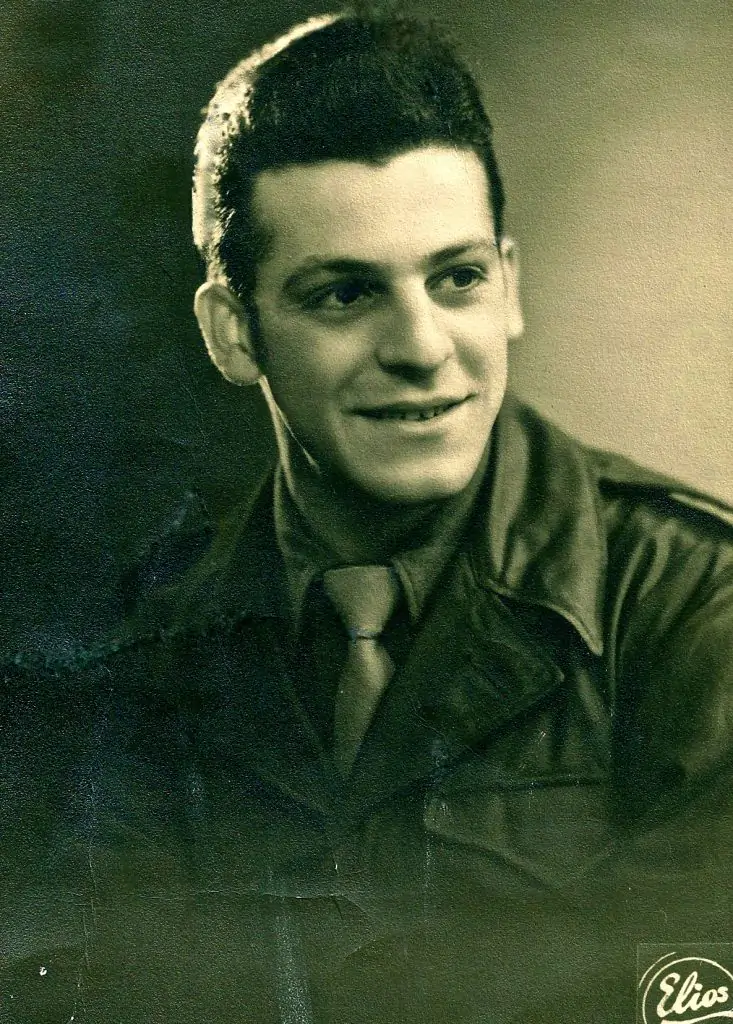

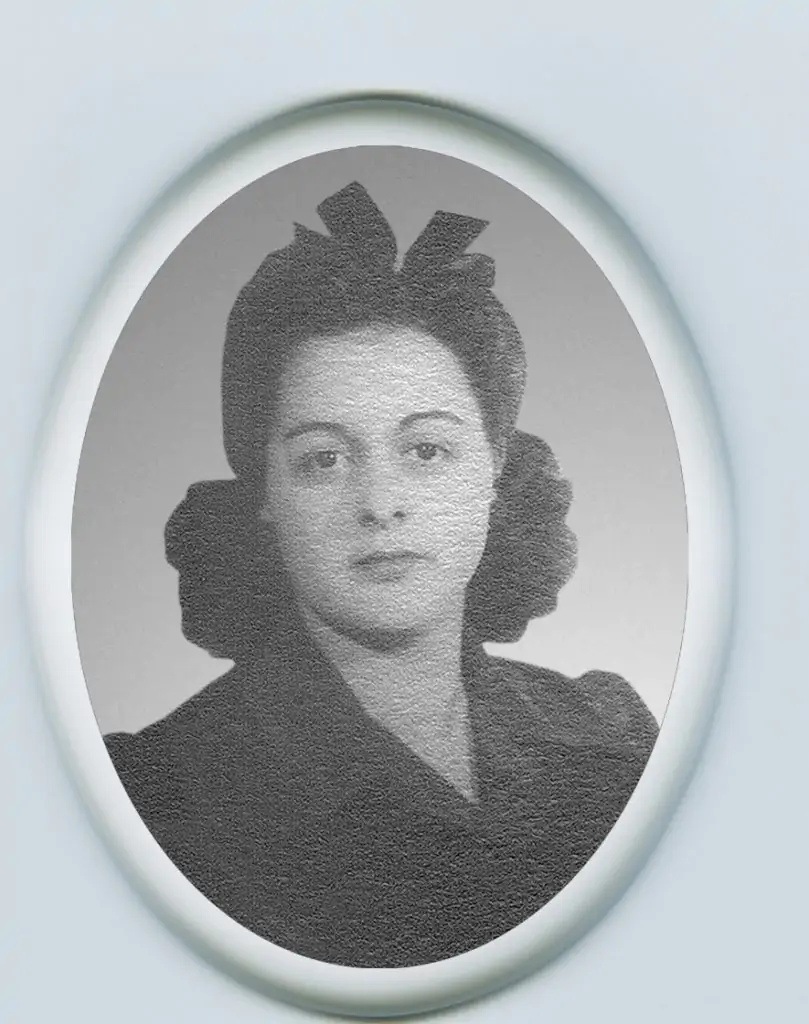
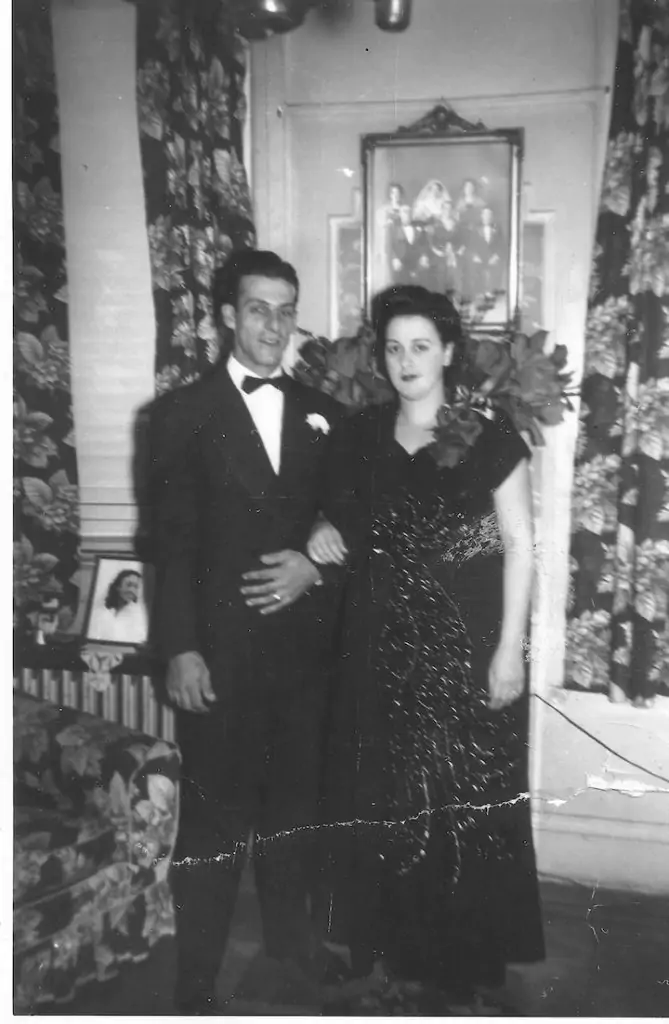
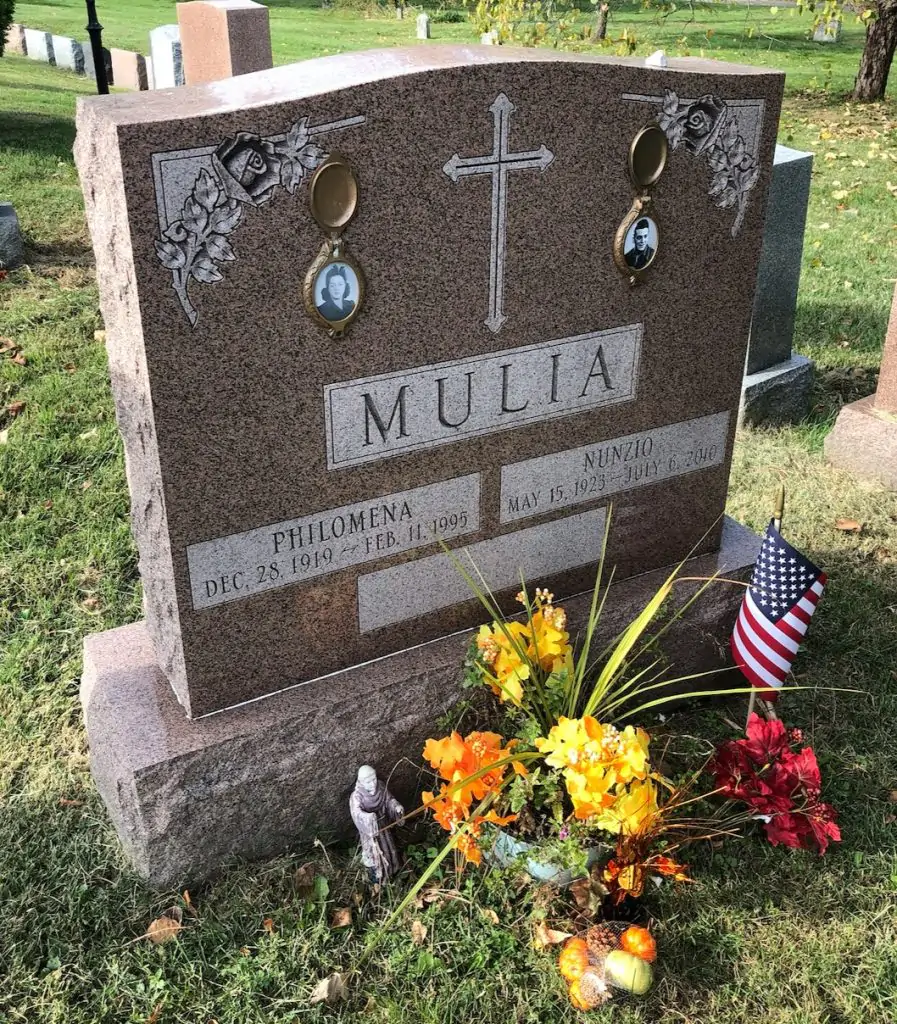
MURRAY, PATRICK J. (1917-1996). Private, Unit 44 Engineer Combat Battalion, United States Army. According to his son, Edward, Patrick was born in Brooklyn. As per the 1920 federal census, he lived on 5th Avenue in Brooklyn with his father and mother, John and Margaret, and two older brothers, John Jr. and Cornelius. His father was born in New York and his mother immigrated from Ireland. His maternal uncle, John Ryan, resided in the home and was a fireman. As per the 1925 New York State census, the family resided at 301 5th Avenue. His father had passed away and his mother was listed as head of household. Murray and his brothers, ranging in age from 8 to 15, attended school and his uncle still lived with the family. By the 1930 federal census, the family had moved to 2nd Street in Brooklyn. His elder brother, John (documented as James), was a carpet cleaner. Murray’s uncle is not recorded, but a boarder, Edward Mallory, resided in the household.
Murray’s World War II draft registration card details that he was 23 years old and lived at 252 12th Street. His brother, John, was named next of kin. For employer’s name, Murray wrote “none – discharged CCC enrollee”—an apparent reference to the Civilian Conservation Corps, a New Deal employment program. The registrar’s report, dated October 16, 1940, describes Patrick as 6′ tall and 160 pounds with gray eyes, brown hair and light complexion.
According to his World War II Army enlistment records, he was single, had completed two years of high school and entered the service as a private. His enlistment date was April 20, 1942. As per his son, Murray was assigned to Unit 44 Engineer Combat Battalion and served in Italy and Germany during the war. These are some of the responsibilities and activities the Army Corps of Engineers were assigned in during the war as per a military history website of the U. S. Army:
During World War II, Army engineers placed floating and later fixed bridges across the rivers of Italy, France, and Germany, supporting hotly contested crossings of the Rapido, Roer, and Rhine rivers. Engineer troops prepared and developed beaches for assault landings, both in Europe and the Pacific. On the beaches of Normandy, engineer troops, operating under heavy enemy fire, cleared lanes for landing craft by destroying the mine-bearing steel structures that the Germans had implanted in the intertidal zone and bulldozed roads up the narrow draws through the cliffs lining the beaches. During the Battle of the Bulge, quick engineer actions destroyed critical bridges in the path of advancing German forces, slowing and diverting them while Allied forces regrouped.
The Department of Veterans Affairs BIRLS (Beneficiary Identification and Records Locator Subsystem) Death Index documents that Murray was discharged on September 21, 1945. After the war, he and Catherine T. McQuillan applied for a marriage license on November 2, 1946, according to the New York Marriage License Indexes. They were married at Guardian Angel Church on November 16, 1946. By 1950, as per the 1950 federal census, the couple had four children and lived on East 26th Street. Murray was a pipefitter at the Utility Gas Company. His son shares that Murray worked for the Brooklyn Union Gas Company for 40 years. According to an obituary in the New York Daily News, Murray had seven children. Section 207, lot 21347, grave 474.
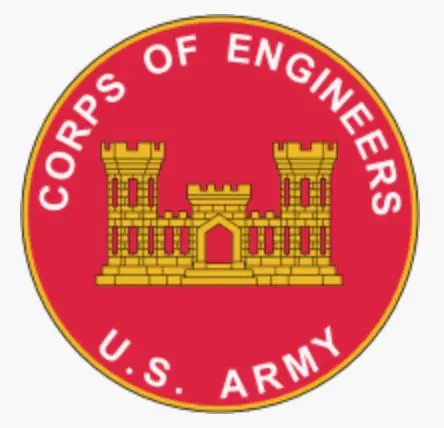
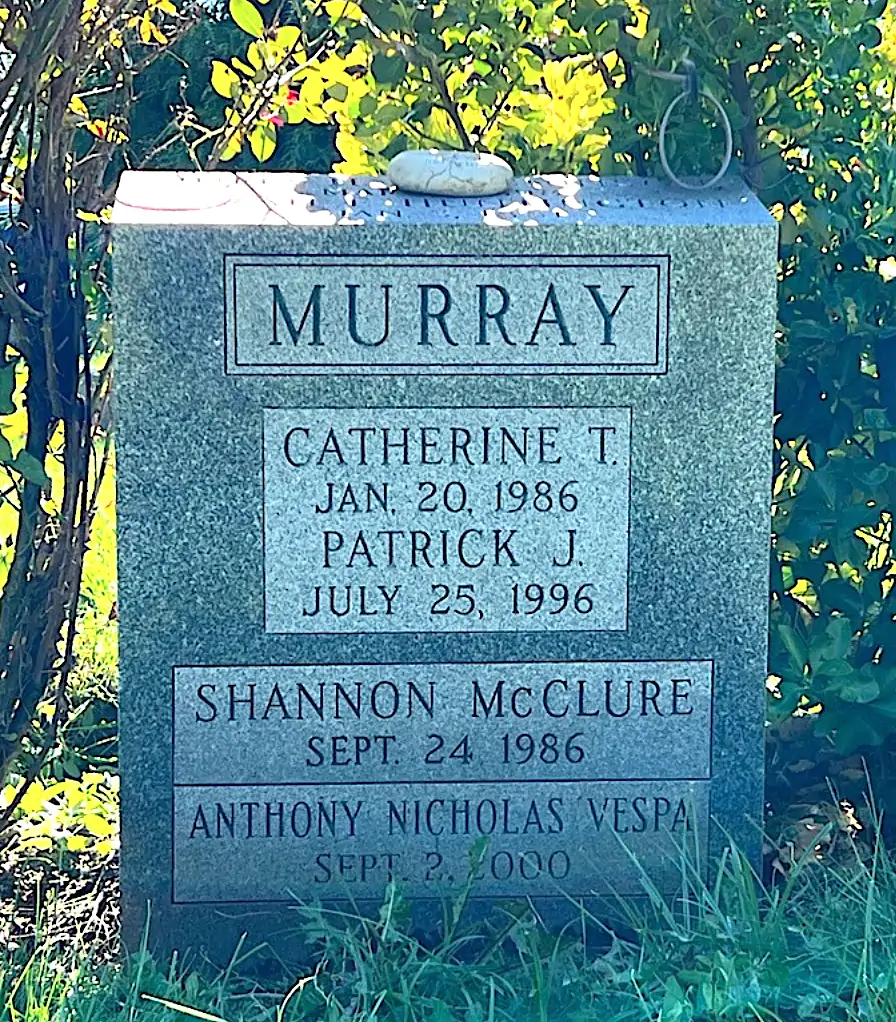
NADDEO, WILLIAM J. (1924-2018). Rank unknown, 556th Signal Corps, United States Army. According to his daughter, Laura Raziano, Naddeo attended Our Lady of Guadalupe Elementary School. As per the 1930 federal census, William lived at 1566 72nd Street in Brooklyn with his father and mother, Amerigo and Olympia, and two younger siblings, Helen and Vincent. His father was born in Italy, immigrated to the United States in 1922, and was a tailor. His maternal grandparents and uncle also resided in the home. By the 1940 federal census, the family still resided on 72nd Street and his father was the proprietor of a tailor shop. The family had grown to five children with the births of Charles and, five years later, Robert. Naddeo’s grandmother is listed as living with the family. Naddeo attended New Utrecht High School, located at 1601 80th Street. His picture appears in the 1941 Yearbook with the inscription, “He finally made it successfully.”
Naddeo’s World War II draft registration card details that he was 18 years old and lived at the 72nd Street address. His uncle, Silvio Batteli, was named next of kin. Naddeo wrote Newark, New Jersey, as his place of birth. His place of employment was S.H. Schonbrunn, located at 17 Water Street in New York City. The registrar’s report, dated June 30, 1942, describes him as 5′ 10½” tall and 180 pounds with brown eyes, brown hair and light complexion. According to his daughter, Naddeo served in the 556th Signal Corps and was stationed in Saipan, one of the Mariana Islands in the Western Pacific Ocean.
According to an article, “Signal Corps in World War II” by Susan Thompson, “The Signal Corps had responsibility for one of the most important systems used during World War II – radar….Other WWII Signal missions included the homing pigeon program – pigeons proved particularly useful in places like the Pacific jungles where it was difficult to string wire…”
The 25th Infantry Division Association details the following:
The 556th Signal Company was constituted on 3 February 1944 in the Army of the United States as the 556th Signal Depot Company and activated on 1 April at Camp Pole, Louisiana. During WW II the 556th served in Hawaii and on Saipan Island, returning to Hawaii in 1946 where it was inactivated on 31 October 1946. For its WW II service, the company was awarded a Meritorious Unit Commendation.
In addition, Naddeo may have been stationed on Saipan during the Battle of Saipan, described by history.com as follows:
On June 15, 1944, during the Pacific Campaign of World War II (1939-45), U.S. Marines stormed the beaches of the strategically significant Japanese island of Saipan, with a goal of gaining a crucial air base from which the U.S. could launch its new long-range B-29 bombers directly at Japan’s home islands. Facing fierce Japanese resistance, Americans poured from their landing crafts to establish a beachhead, battle Japanese soldiers inland and force the Japanese army to retreat north. Fighting became especially brutal and prolonged around Mount Tapotchau, Saipan’s highest peak, and Marines gave battle sites in the area names such as “Death Valley” and “Purple Heart Ridge.” When the U.S. finally trapped the Japanese in the northern part of the island, Japanese soldiers launched a massive but futile banzai charge. On July 9, the U.S. flag was raised in victory over Saipan.
After the war, Naddeo and Diana Viscuse applied for a marriage license in Brooklyn on July 30, 1947, according to the New York Marriage License Indexes. They married on August 17, 1947. As per the 1950 federal census, the couple lived on 11th Avenue in Brooklyn. Naddeo worked for Penn Railroad and Diana worked as an office clerk for a telephone equipment company. An article in the February 17, 1962, Catholic newspaper, The Tablet, reports that Naddeo was the dance committee chairman for the Knights of Columbus which “held its third annual dance at the Cotillion Terrace, 18th Avenue and 73rd Street.” The article also reports that Naddeo resided at 2172 West 12th Street. Their daughter shares that Naddeo and his wife had four children and he was a foreman time-keeper at Grand Central Terminal. His obituary was posted on Dignity Memorial. Section 36, lot 42161.
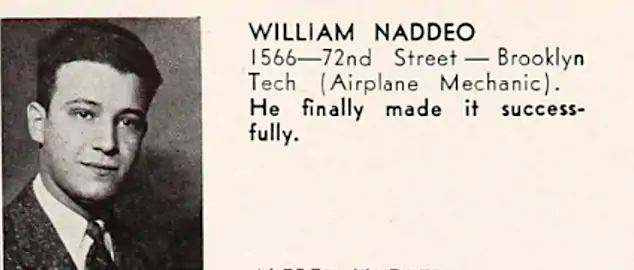
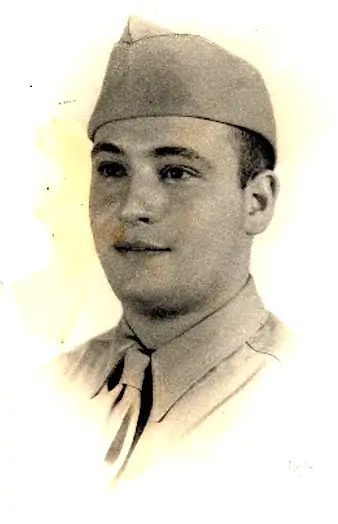
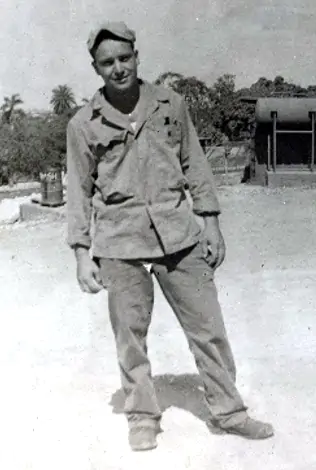
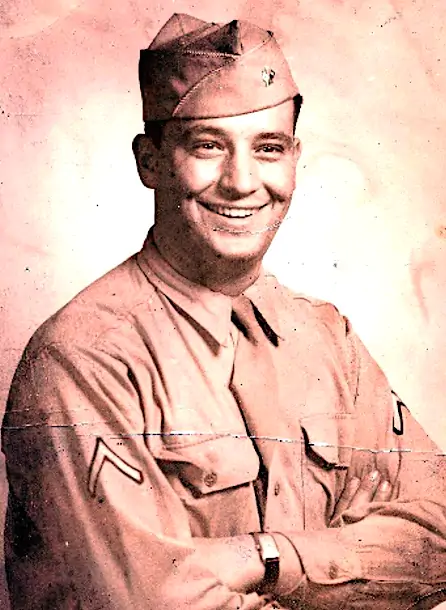
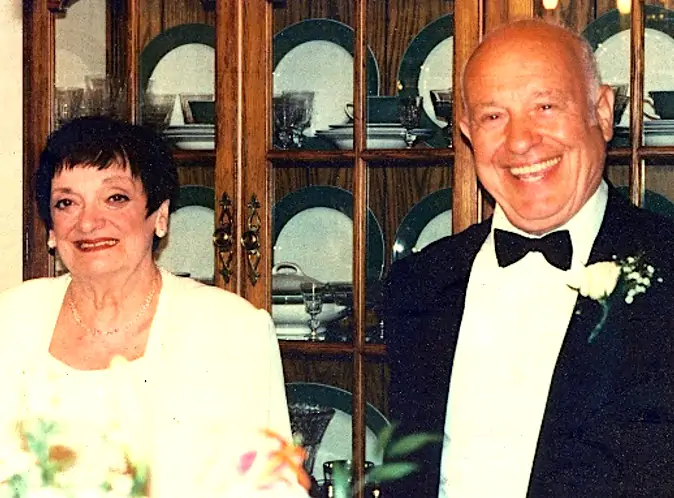
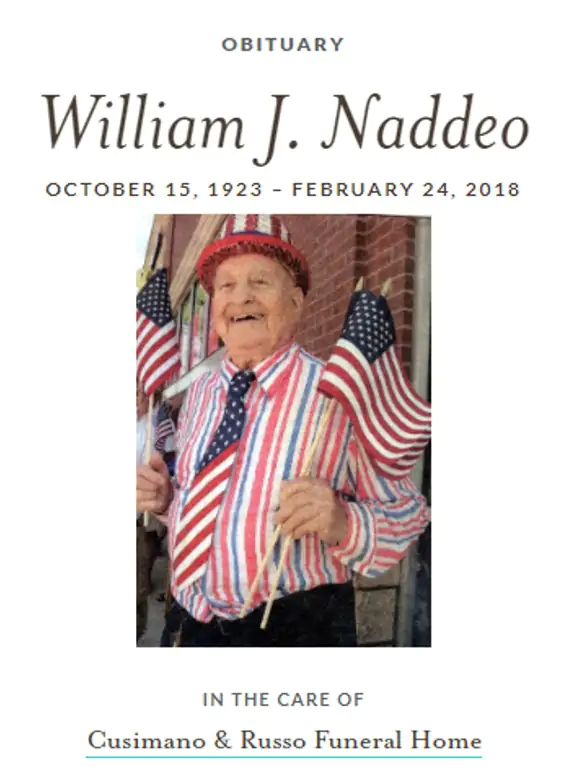
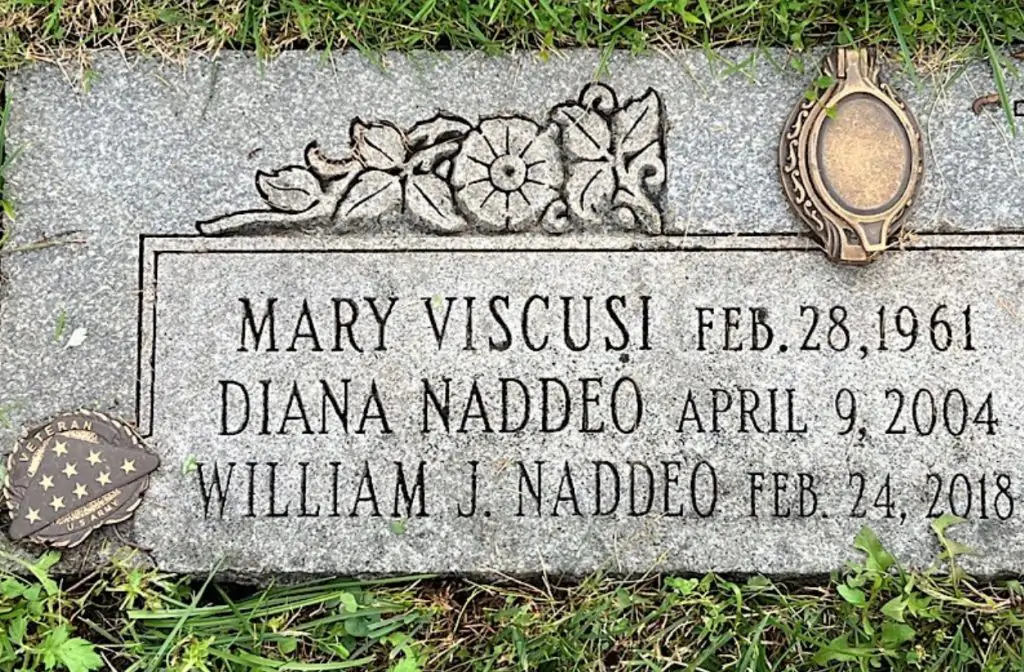
NEALE, III, JOHN HENRY (1927-2006). Technician, 4th Grade, United States Army. A native of Brooklyn, Neale’s address at the date of his birth was 435 Hancock Street. His father, who bore his name, served in World War I and was the American director of the Ellerman shipping line, a British steamship company. The son was raised in Larchmont, New York.
As per his son, John A. Neale, the subject of this biography served as technician, 4th grade, in the United States Army during World War II. He also served as a postal clerk and was awarded a World War II Victory Medal for service in the Pacific Theater. His Enlisted Record and Report of Separation indicates that he lived on Maple Hill Drive in Larchmont, New York, was 6′ tall with blue eyes, brown hair and weighed 160 pounds. That record confirms his son’s information. An undated newspaper article, source unknown, reports that Neale’s parents watched from a tug boat as their son, Private First Class Neale, sailed off from New York Harbor. He was honorably discharged on August 3, 1947. As per his father’s Wikipedia biography, John Henry Neale III was married at the Plaza Hotel, a premier wedding venue. He last lived in Berkeley Heights, New Jersey, where he died. Section 45, lot 31351.
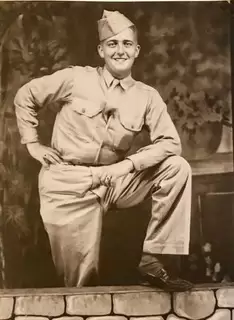
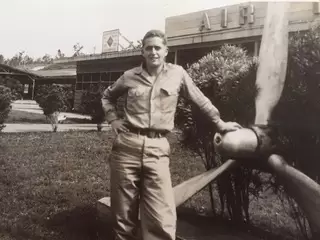
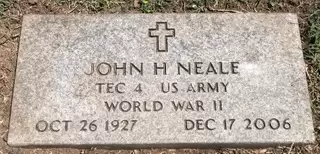
NEHEMIAS, JOSEPH EDWARD (1922-1988). Rank unknown, unit unknown, United States Army. Nehemias was born in Brooklyn. As per the 1925 New York State census, he lived with his parents, Abraham and Mary, and three siblings, in Brooklyn. His father worked as an export packer. The 1930 federal census records that the family resided at 463 17th Street in Brooklyn. Both parents were reported as born in New York and his father’s occupation had not changed. With the birth of two siblings, Joseph was the second oldest of six children. In the transcription, his middle initial is recorded as “G.” However, according to other documents, his middle initial is “E” for Edward. The 1940 census records the eighteen-year-old Nehemias as having completed two years of high school and documents him as “a new worker.” The census lists seven children in the family and his father’s occupation as a department head in the paint manufacturing industry. The transcription erroneously spelled his last name as “Nachmias.”
His draft registration card notes that he was twenty years old and lived at 506 Prospect Avenue. His contact person was his mother who resided at the same address. The Atlantic and Pacific Manufacturing Company, located at 124 Atlantic Avenue, Brooklyn, is listed as his employer. The registrar’s report, dated June 30, 1942, describes Nehemias as 5′ 10″ tall, 140 pounds, with brown eyes, brown hair, and a ruddy complexion. As per his World War II enlistment record, his date of enlistment was November 14, 1942. He was assigned the rank of private, was single, without dependents, had completed two years of high school, and his civil occupation was a shipping and receiving clerk. A notation on his draft card states that he was discharged on January 11, 1946. According to the Social Security Death Index, his last place of residence was in Brooklyn. Section 72, lot 44602, grave 1.
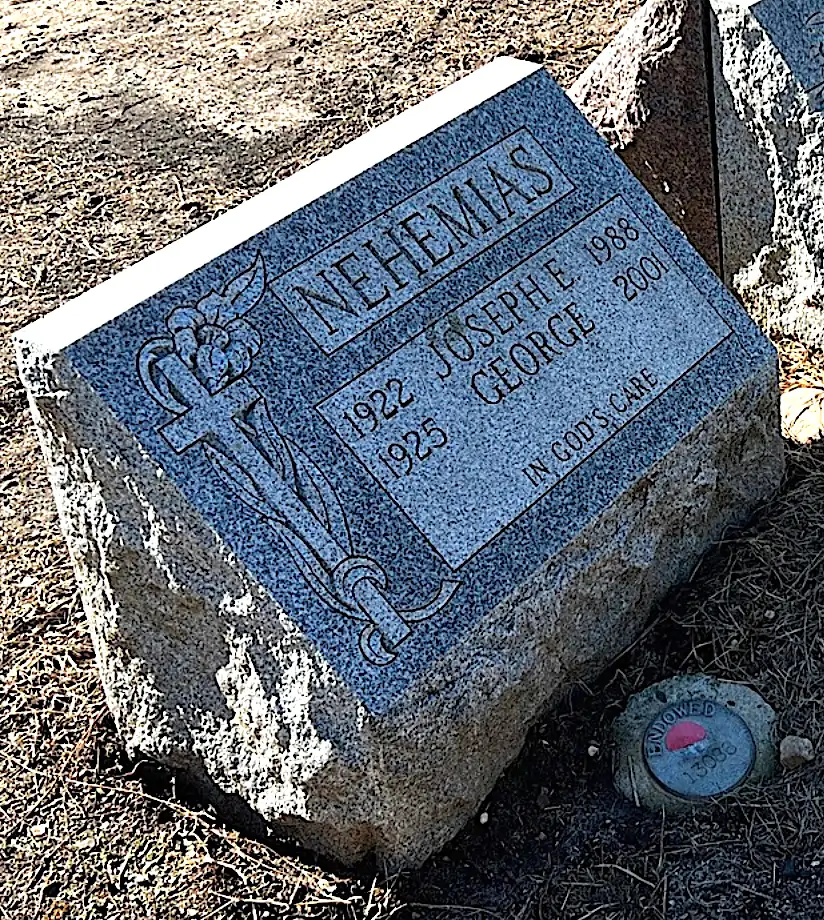
NELSON, HAROLD A. (1925-1996). Private first class, 180th Infantry, United States Army. Nelson was born in Brooklyn. No official documents were located regarding his early life.
As per his World War II draft registration card, he was 18 years old and lived at 26 East 3rd Street in Brooklyn. Miss Anna Mailitor was designated his next of kin. His employer was Mergenthaler Linotype Company, located at 28 Risen Street in Brooklyn. Invented by Ottmar Mergenthaler, the linotype is a typesetting machine that, according to the Smithsonian Institution, revolutionized the printing industry. Nelson’s registrar’s report, dated February 3, 1943, describes him as 6′ tall and 180 pounds with brown eyes, brown hair, and light complexion. An appendectomy scar is listed as an obvious physical characteristic. According to his Army enlistment records, his civil occupation was a machinist, his rank was private, and his enlistment date was July 28, 1943. Nelson’s World War II hospital admission card states that he was admitted in May of 1944 for a line of duty battle injury. Data on the card documents that he was in the infantry, his diagnosis was “Buccal Cavity Teeth; Causative Agent – Artillery shell fragments” and his treatment was a tooth extraction. He was discharged from the hospital on an unspecified date in July 1944.
According to his daughter, Denise Nelson Freeman, Nelson served in the Company F of the 180th Infantry Mil Occ Spec Rifleman 745 unit. He was stationed in Italy, France and Germany and fought in battles in Rome-Arno, southern France and the Rhineland. She shares that he was wounded twice in battle while in Italy. His first injury occurred on March 21, 1944 and the second on May 28, 1944 (as detailed above). As per the Department of Veterans Affairs BIRLS Death File, he was discharged on May 24, 1946. Since Nelson’s service dates range from July 28, 1943 to May 24, 1946, he may have taken part in the following battles as detailed in the book 180th Infantry: A Regiment of the 45th Infantry Division, by Norbert Salpeter and Carl Salter:
Sicily – On July 10, 1943, the 180th Infantry Regiment made its debut into the war when it landed at H-Hour in the vicinity of Biscari, Sicily. For three bitter days the regiment fought against elements of the crack Hermann Goering Division until it captured the town and airport of Biscari, thus enabling our forces to secure an air base for future operations…
Southern Italy – On September 10, 1943, the regiment landed at Paestum, in the vicinity of Salerno, Italy, where they acted as security against any possible enemy counterattacks from the flanks or sea…
Anzio – The period from January 30, 1944, to the liberation of the City of Rome early in June, has been written with the “blood and guts” of many a soldier from the 180th Infantry Regiment. The horrors of the Anzio Beachhead, the stopping of the German counterattack in mid-February, plus the long weary months of incessant shelling and animal-like living, have been so publicized that it is needless to write more…
Southern France – On August 15, 1944, the 180th Infantry Regiment landed near St. Maxime, France, and launched its attack on “Fortress Europa.” While one battalion cleared the coastal road and beaches of enemy, two battalions raced inland to tie up with the paratroops who had been dropped in the vicinity of Vidauban…
Alsace & Rhineland – By September 21st, 36 days after landing in Southern France, the regiment was about to launch its attack on the City of Epinal, which high-lighted the fighting in France to that date…Despite the determined enemy resistance, and the fast-flowing Moselle River, Epinal was taken by the doughboys of the 180th Infantry on September 24th. By breaking through these fortifications, the regiment forced the enemy to abandon large stores of equipment, and it was able to start the partial breakthrough into Germany. From Epinal, the regiment pushed on into the heavily wooded Vosges Mountains, last natural obstacle to Germany. Here for over a month, the regiment met fanatical enemy resistance. This, combined with the inclement weather and lack of rest, slowed the advance. Nevertheless, the Mortagne River was crossed and the regiment fought up to the outskirts of Raon I’Etape where it was relieved on November 9th. It is interesting to note that to this date the regiment had been in combat for 86 consecutive days, which at that time was a record for sustained combat…
Germany East of the Rhine – After three days of regrouping and general reconnaissance of the area where the crossing of the Rhine was to be made, the regiment forced a crossing on the morning of March 26th. By nightfall of the first day, the main highway running north and south had been cut, the beachhead across the Rhine was secured. Continuing to push northeast, the regiment seized Bensheim on the 27th, and by nightfall of the 28th, had reached the Main River. This time the doughboys crossed the river on the railroad bridge at the outskirts of Aschaffenburg and continued to attack the enemy, while other elements of the Division cleared the city of fanatical resistance… Nuremberg was captured, but only after it was taken block by block in some of the most difficult fighting the regiment had ever participated in. Infantry supported by tanks and tank destroyers methodically blasted the stubborn defenders from their positions. As the attack progressed, and when the SS and Gestapo defenders were killed, the Wehrmacht defenders began to surrender in large numbers. By 2215 hours, on April 20th, the city was completely in the hands of American troops…Once again the race was resumed, this time the objective was Munich, third largest city in Germany, and the largest German city to be attacked by American forces. The tactics employed in the attack were the same as those used in the attack on Nuremberg, but unlike Nuremberg, Munich did not offer too great resistance… Munich fell on the 1st of May, and with its fall, the 180th Infantry Regiment concluded its combat in the European Theater of Operations…For a period of 22 months, the 180th Infantry Regiment participated in all types of combat, including amphibious assault landings, attacks on fortified areas, river crossings, pursuit and defense. This combat took place in all conditions of terrain and weather, and the uniform success is a tribute not only to the outstanding qualities of leadership of its three Commanding Officers, Col. Forrest E. Cookson, Brigadier General Robert l. Dulaney, and Lt. Col. Everett W. Duvall, but also to the individual soldier who carried out the orders of his superiors, knowing that at times it meant certain death.
According to his daughter, Nelson was awarded the following commendations: Army Occupational Medal (Germany), Purple Heart with 1 Oak Leaf, European, African, Middle Eastern Theatre Ribbon, and World War II Victory Ribbon.
After the war, Nelson and Joan M. Carr applied for a marriage license on September 3, 1949 in Brooklyn, as per the New York Marriage License Indexes. The couple was married on September 17, 1949 and had five children. The 1950 federal census documents that the couple lived on East 3rd Street in Brooklyn. Nelson was twenty-five years old at the time and worked as a porter for New York Life Insurance Company. His daughter also relates that he was an IBM operator. Section 143, lot 29467, grave 3.
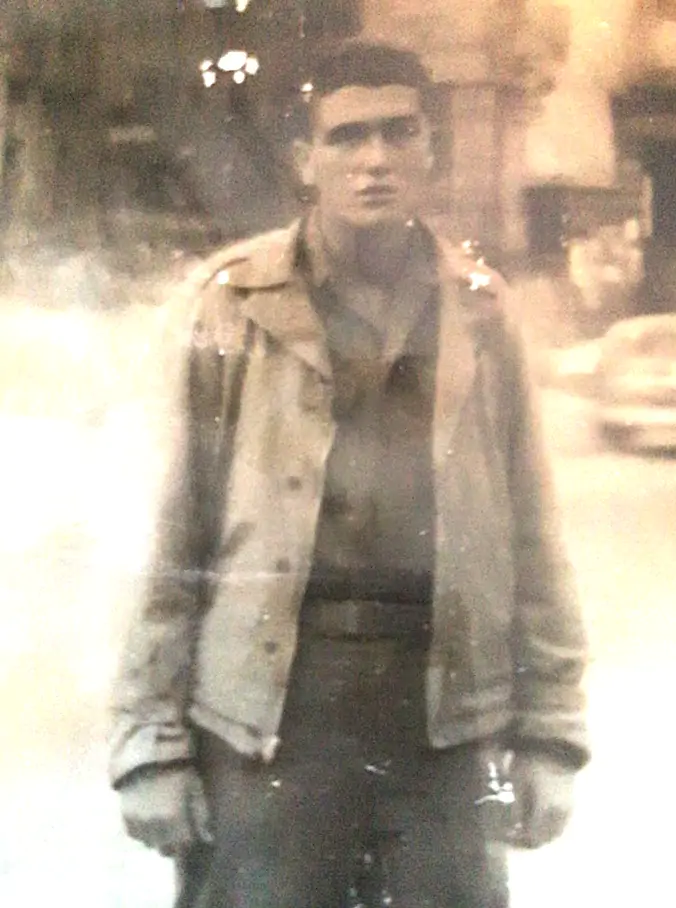
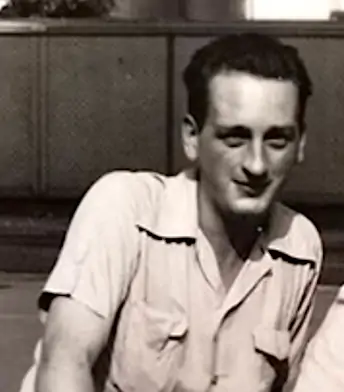
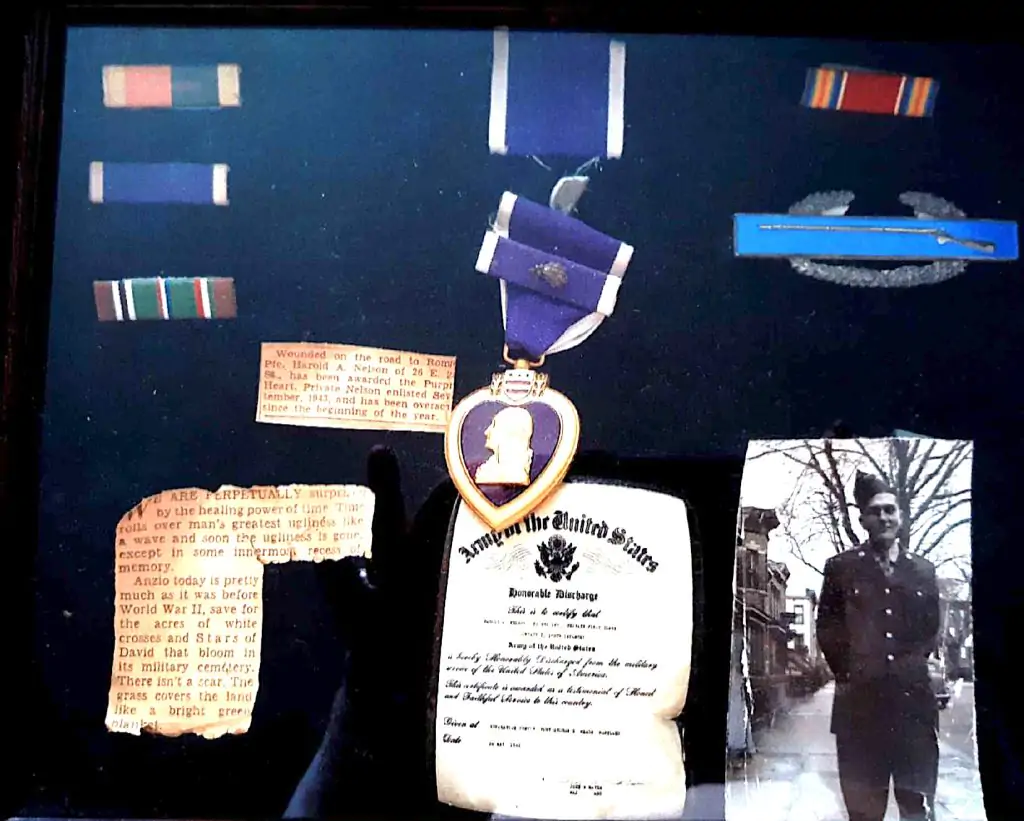
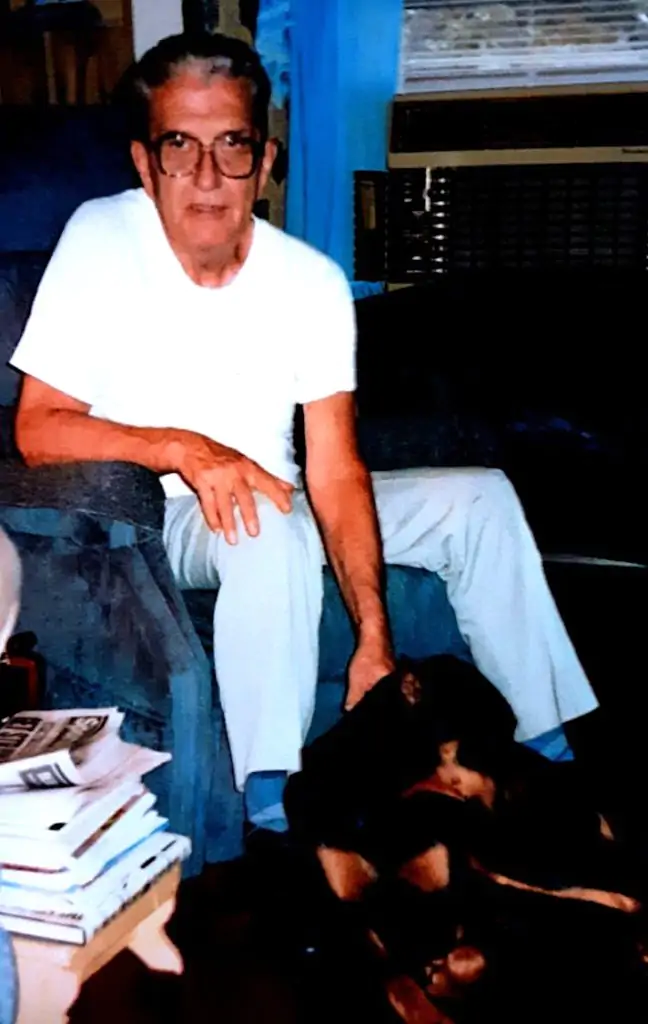
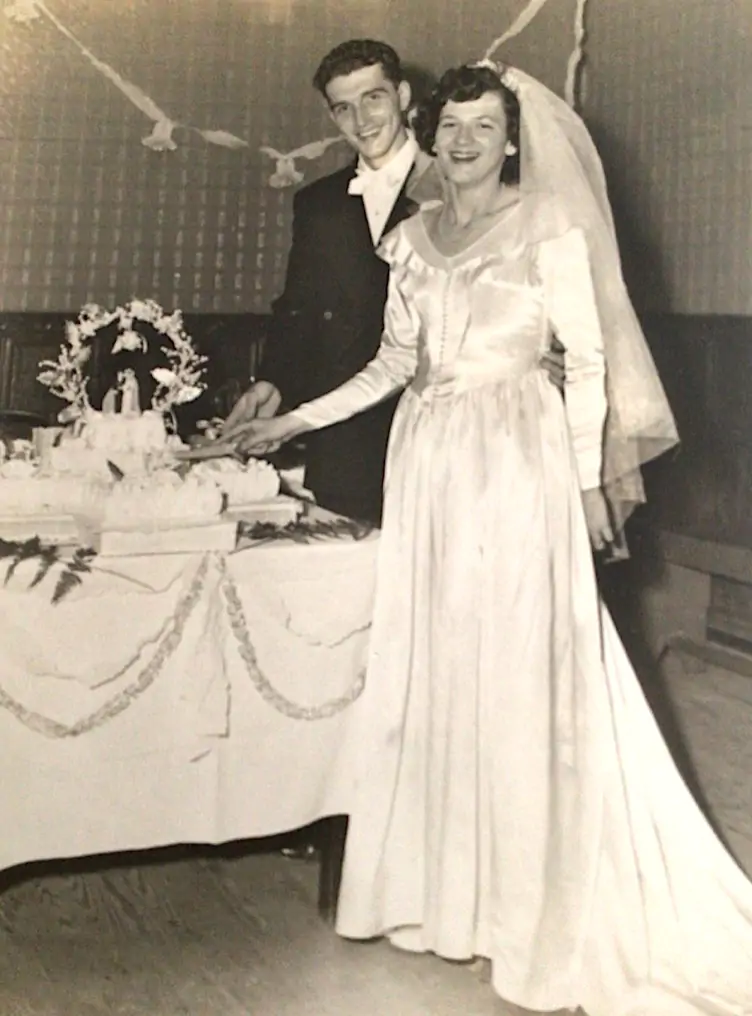
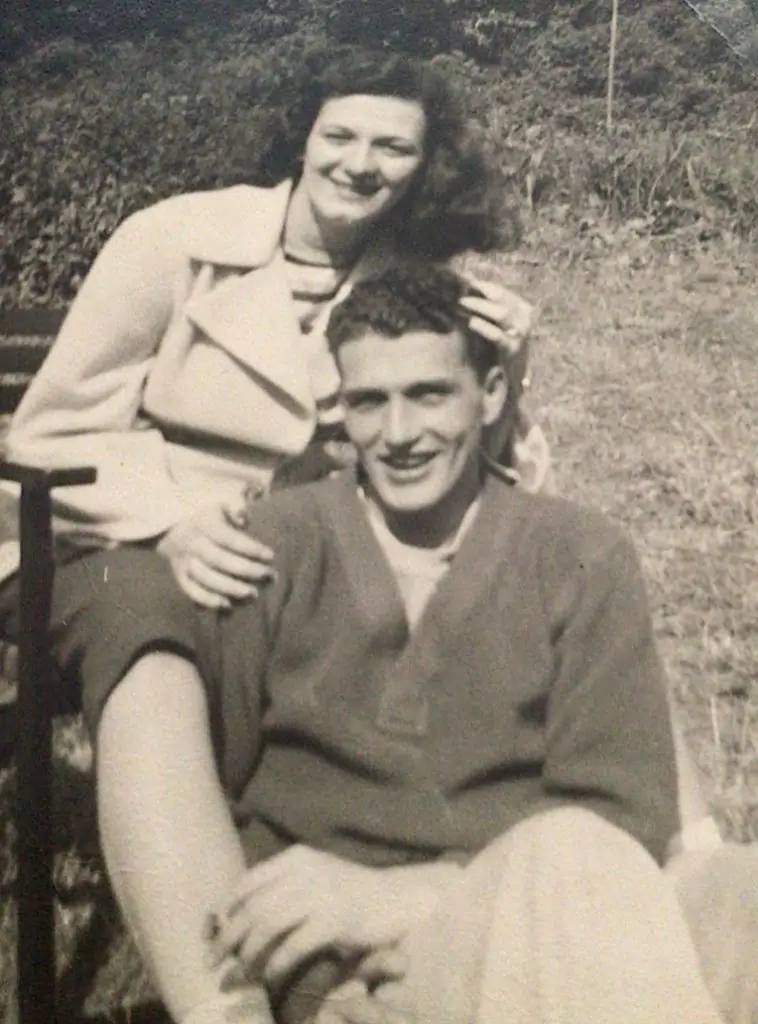
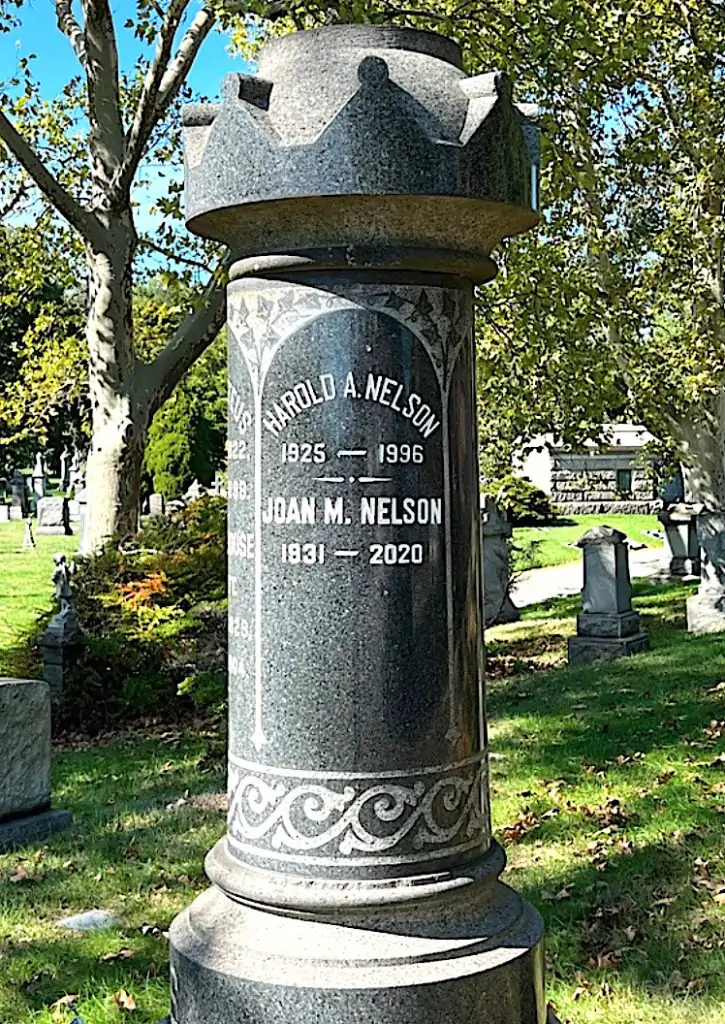
NEUSTADT, FRANK J. (1904-1977). Private, United States Army. According to the State of New York Certificate and Record of Birth, Frank was born on April 2, 1904 in New York City; his given name was Francis. Initially he resided with his parents, George and Margaret, at 234 East 27th Street in Manhattan. His father was a clerk and the certificate reports that the couple had two previous children. As per the 1905 New York State Census, Frank, his parents, and his older sister, Mary, lived with his maternal grandparents, James and Mary Bly in Manhattan. His father was a chemist and his grandfather was a Parks Department foreman. The 1910 federal census records that his father and mother were born in New York. The Neustadt family, no longer residing with the Blys, lived on Hollis Avenue in Queens, New York. Frank’s father had his own real estate office and the family had grown with the birth of another son, John. The New York Extracted Death Index records that Frank’s father died on July 23, 1914, at the age of 45. Records show that his father’s had a will and designated two friends as executors and guardians of his three children. There is a possibility that Frank’s mother had passed away before 1914 as there is no recorded documentation of her after the 1910 federal census.
The State of New York Certificate and Record of Marriage certifies that Frank, thirty-one years old and a clerk, married Helen Elizabeth Gordon on June 22, 1935. The 1940 federal census documents that Frank and Helen lived on Gramatan Avenue in Mount Vernon, New York. Frank was a financial statistician and Helen was a secretary in a law firm.
Neustadt’s draft registration card records he was thirty-seven years old and lived at 485 Gramatan Avenue in Mount Vernon. His wife was designated next of kin. As per his registrar’s report, he was 5′ 10″ and 140 pounds with blue eyes, brown hair and light complexion. According to his World War II Army enlistment records, Frank was married, had attended college for three years, and was an accountant. He enlisted in the United States Army as a private on September 21, 1942. There is no further documentation regarding Frank’s World War II military service. His Department of Veterans Affairs BIRLS (Beneficiary Identification and Records Locator Subsystem) Death File states he was discharged on June 22, 1945. However, it is noted on his registration card that he was honorably discharged on May 23, 1945.
After the war, Frank worked in investments, as per a 1954 directory listing by G.H. Walker & Company Investments which states, “We take pleasure in announcing that Frank J. Neustadt is now associated with us.” It appears that Frank and Helen renewed their wedding vows as documented by the New York State Marriage Index. This record shows that Frank and Helen were married on April 26, 1956 in Pelham, New York. According to the 1955 and 1958 City Directories, Frank and Helen resided in New Rochelle. The Social Security Death Index documents that his last residence was in Carmel, Putnam, New York. Section 187, lot 17131, grave FRC.
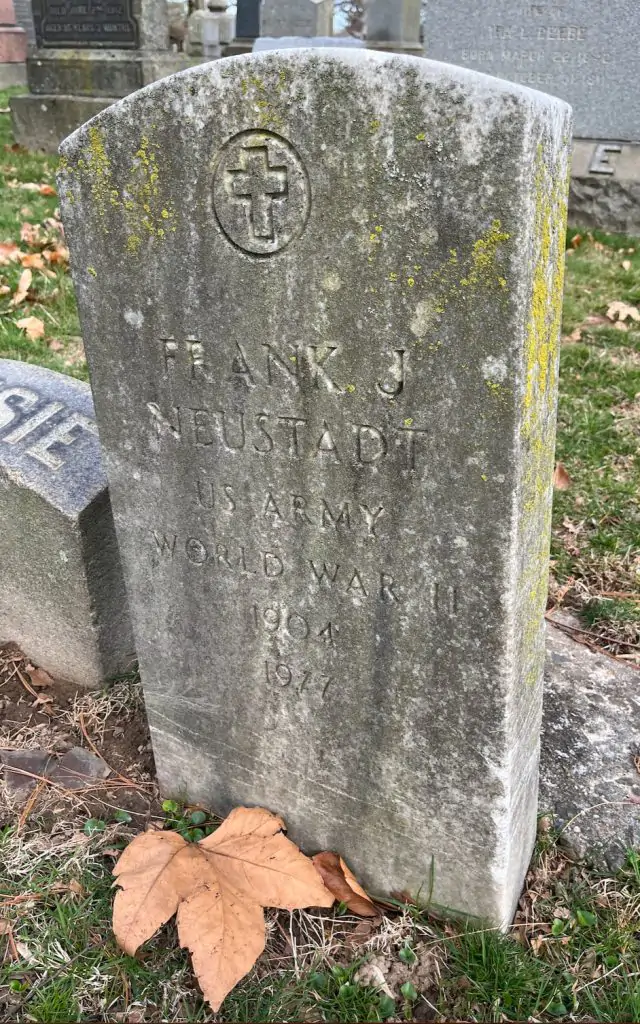
NOVAK, MICHAEL (1919-2020). Private, United States Army. Michael Novak was born in Franklin, Pennsylvania. His father Daniel, a coal miner, and his mother, Tessie, were both immigrants from Czechoslovakia. Novak had three sisters, Anna, Tessie and Martha, and four brothers, John, Nick, Joseph and George.
Novak lived in Pennsylvania until at least 1930 before moving to New York City. He worked as a busboy alongside his siblings at the restaurant in Manhattan. On his draft registration card, he stated that he was a busboy at Sieburg’s Restaurant at 33 Maiden Lane in Lower Manhattan. He listed his sister, Catherine, as the person who would always know his whereabouts. He was 5′ 6″tall, 145 pounds, with brown eyes and hair, and a light complexion.
After his service, he attended New York University, from which he graduated in 1946. Novak married Barbara Danatsko in New York City in 1950. They had two children. For thirty-seven years, he worked at Texaco. His wife passed away in 2007 and is interred with him. Section R, 43538.
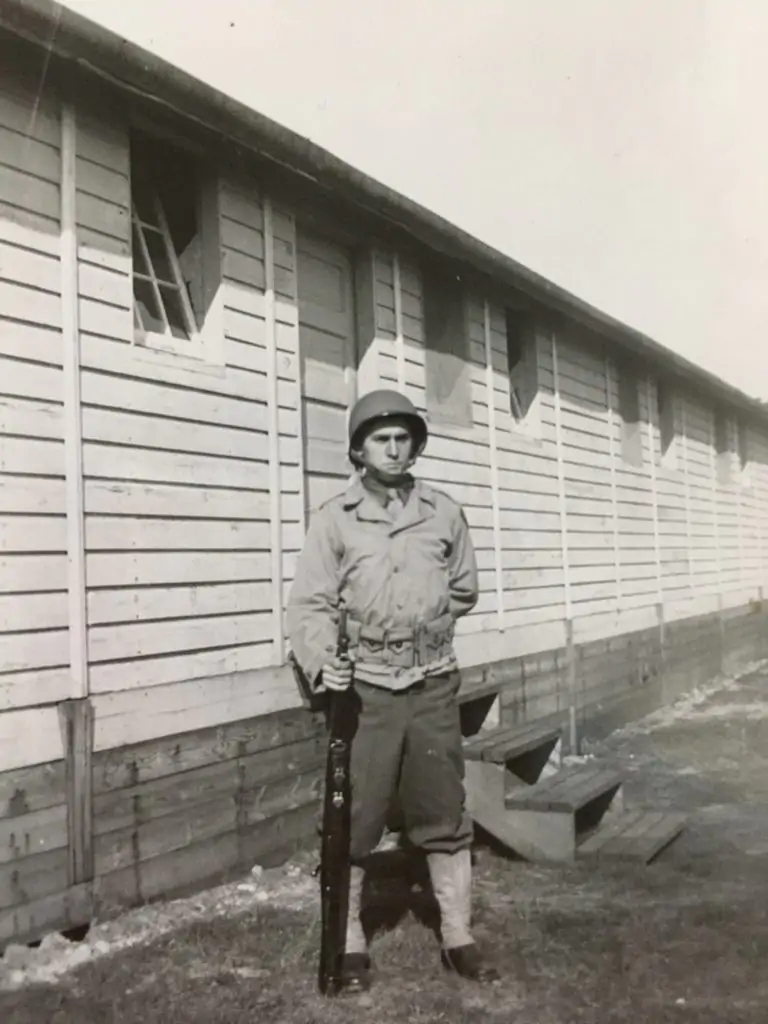
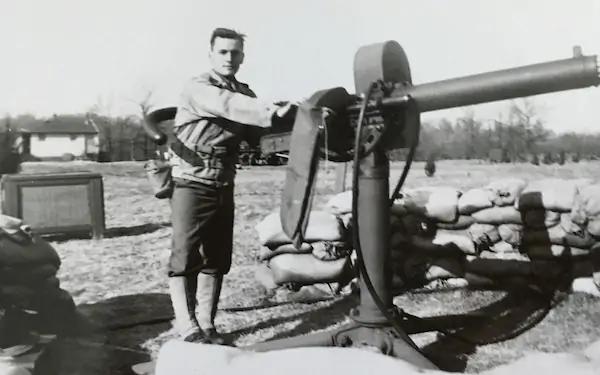
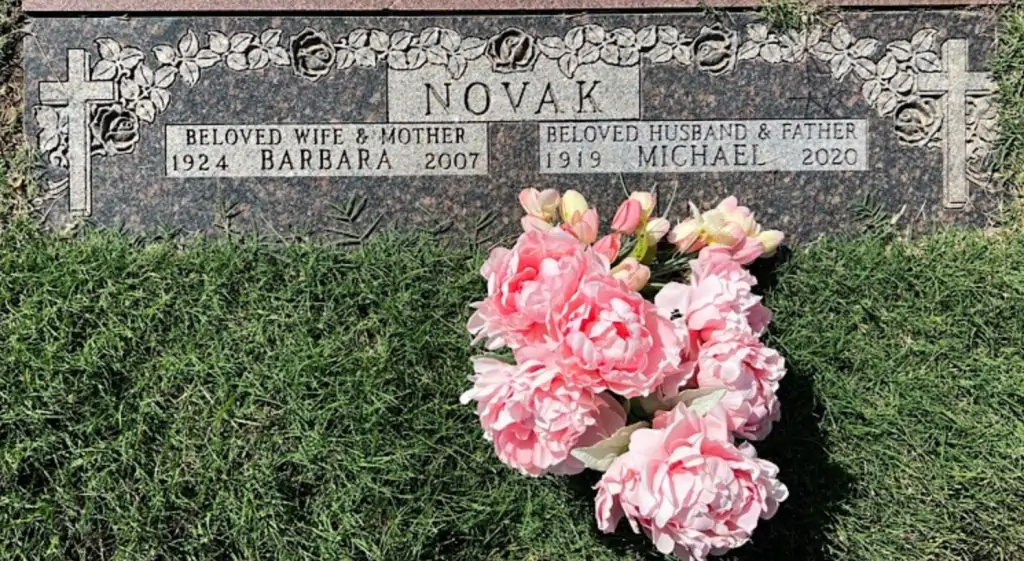
OBERLE, GERARD T. (1910-1994). Private first class, Signal Corps, United States Army. Gerard was born in Brooklyn. As per the 1920 federal census, his father, Samuel, a widower, was born in New York and was a foreman for the Parks Department. Gerard had five siblings, two older brothers, an older sister, and two younger brothers. The family lived on 39th Street in Brooklyn with a housekeeper. The 1930 federal census records that the family lived on Bay Ridge Avenue in Brooklyn. His sister is documented as married and living in the household, but there is no record of her husband. Gerard’s father still worked for the Parks Department and the eighteen-year-old Gerard was a runner at a stock brokerage. Three of his brothers also lived in the residence. As per the 1940 federal census, Gerard still lived with his father and a younger brother, but the family had relocated to a home on Bay Ridge Parkway. Gerard was a bookkeeper at a stock brokerage.
Oberle’s World Word II draft registration card records that he was twenty-nine years old and worked for F. W. Woolworth and Company, located at 111 8th Avenue in Manhattan. His address, initially recorded as 230 75th Street, was crossed out and had been updated to 7040 Colonial Road. His father was designated next of kin. As per his registrar’s report, dated October 16, 1940, Gerard was 5′ 8″ and 165 pounds with hazel eyes, brown hair and a ruddy complexion. He had a small scar over his left eye.
According to his World War II enlistment records, Oberle entered the Army on May 2, 1942 as a private. He was single, had completed grammar school, and his civilian occupation was clerk. While in the service, Gerard and Mildred McComb applied for a marriage license on July 17, 1943 in Brooklyn. According to Mildred’s obituary, “In a great American love story, she married the love of her life, Gerard T. Oberle, while he was on a three-day pass from World War II.”
There is little documentation regarding Oberle’s military history. According to his World War II Hospital Admission card, the thirty-four-year-old Gerard was admitted to a hospital at Fort Dix, New Jersey, during the month of August in 1945. The card records that Gerard’s military branch was the Signal Corps. His diagnosis is described as “arthritis, type unspecified; acute or chronic not specified.” The card further states that his type of illness was “Disease, Injury Type 2 – not a traumatism.” He was discharged from the hospital during November 1945: “Discharged or Retired for Disability, Line of Duty, Yes; Final Result: Discharge/retirement: med reasons-but not for any residual condition w/a code.” His discharge is validated by the Department of Veterans Affairs BIRLS (Beneficiary Identification and Records Locator Subsystem) Death File which records his discharge date as November 3, 1945. The inscription on his gravestone cites that his rank was private first class and he was awarded a Purple Heart.
Mildred Oberle, his wife, also made a contribution to the World War II effort like the eponymous Rosie the Riveter, a woman who helped the United States grow its industrial might. Her obituary noted: “After Gerard returned to the War, Millie served her country by making radios and other military equipment.” Mildred née McComb was born in Brooklyn in 1921; her father was a butcher and her mother a housewife. The 1925 New York State census records that Mildred was the youngest of five children, ranging in ages from four to fifteen. The family lived on 16th Street in Brooklyn. The 1930 federal census documents that the McCombs owned their house on 16th Street. Mildred, age 10, attended school, as did her two older sisters, Eleanor and Madeline. Her twenty-year-old brother, Walter, was a clerk at the Stock Exchange and her seventeen-year-old sister, Charlotte, was a clerk at a public utility. Her maternal grandmother lived with the family. The 1940 federal census finds the family still residing on 16th Street, but Charlotte no longer lived with the family. At the time of the census-taking, Mildred’s parents had had their sixth child, Josephine.
After the war, according to the 1950 federal census, Gerard, his wife and their daughter lived on the second floor at a residence located on Windsor Place in Brooklyn. Gerard, a postal clerk, is listed as head of household. His father and youngest brother, Cyril, lived on the first floor in the same house. His father still worked for the Parks Department and his brother was married and had two sons. According to Mildred’s 2022 obituary, she and Gerard had another child, a son. Gerard died in 1994. Her obituary states that “Mildred Oberle, 101, of East Brunswick, passed away peacefully on October 25th, 2022…Her two children, six grandchildren, and three great grandchildren were the joy of her life. Millie’s love for life was contagious and she brought a smile to everyone she encountered. She enjoyed a good burger, jelly donuts and most of all, spending time with her family.” Mildred is not interred at Green-Wood; Gerard is interred in section J, lot 36125, grave FRC.
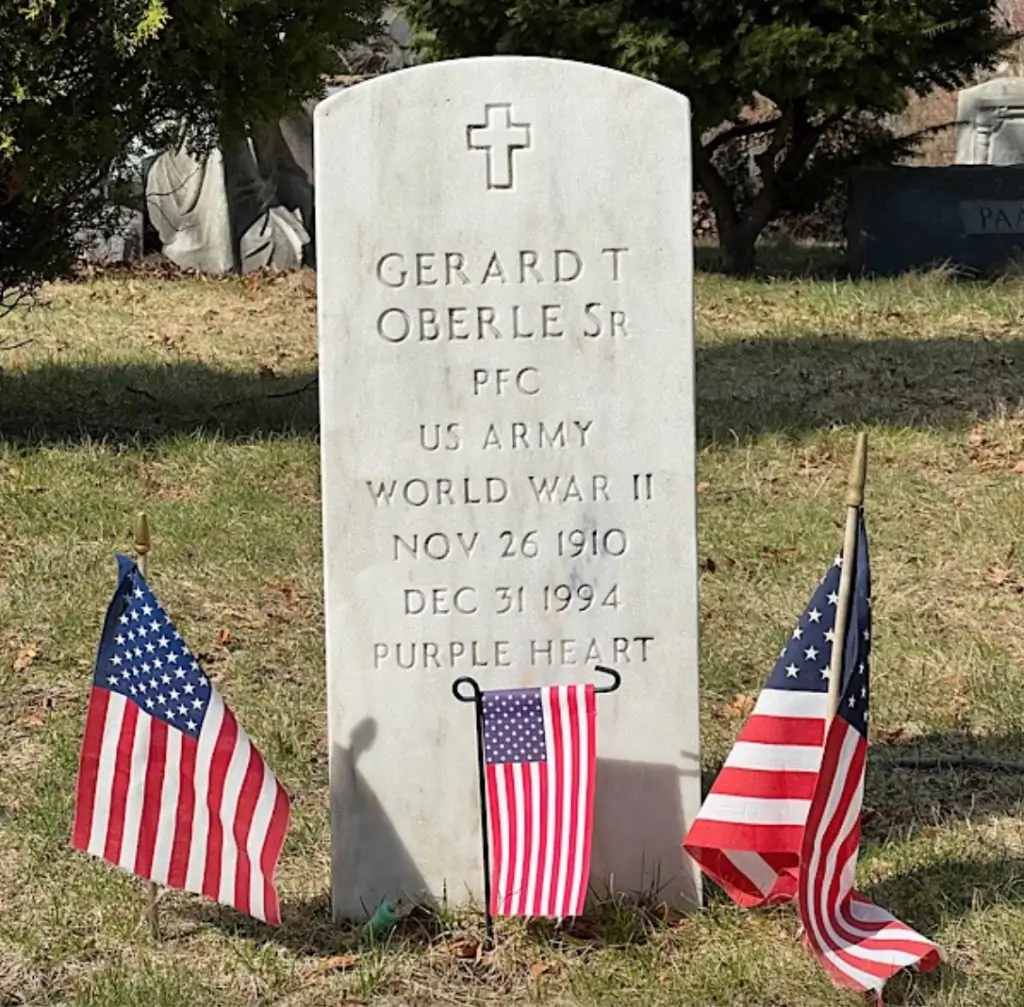
OBERMAYER, EMMA E. (1882-1951). Red Cross Volunteer. According to the 1900 federal census, Emma was born in New York during September of 1882. She lived with her parents, Ward and Mary Williams, and two siblings, Ward Jr. and John, on Putnam Avenue in Brooklyn. Her father was born in Maine and worked for an insurance company. Her mother was born in New Jersey. Ward Jr, 19 years old, Emma, 17, and John, 14, attended school at the time of the census. A servant was also living in the household. As per the 1905 New York State census, the family continued to live on Putnam Avenue and Emma’s father was still employed by an insurance company. Her older brother, Ward Jr., was a lawyer, she was a clerk, and her younger brother, John, a stockbroker.
The New York Marriage License Indexes document that Emma Williams and William Obermayer applied for a license on May 26, 1908 in Brooklyn. The June 4, 1908 issue of the Brooklyn Daily Eagle reports that the young couple was married on June 3 at her parents’ home, with about fifty people in attendance. A reception with nearly 200 guests followed. According to the article, “Miss Williams had a pink wedding throughout, a wedding of June effects. Pink roses in profusion decked the drawing rooms of her home…Miss Williams’ wedding gown was a princess frock of white satin, worn with a bouquet of white roses.” The Obermayers’ marriage was also announced in the Brooklyn Life news on June 13, 1908.
As per the 1910 federal census, Emma and her husband lived in her father’s home on Putnam Avenue. Her father, designated as head of household, was a widower and the vice president of an insurance company. Emma did not work and her husband was a secretary at a savings bank. Her younger brother lived in the residence and was a stockbroker. The 1920 federal census documents that the family continued to live on Putnam Avenue and her father, sixty-six years old, held the same job. Emma’s husband worked at a bank and the couple had a son, William Jr. Two servants, a cook and a nurse-maid, lived with the family. According to the Brooklyn Daily Eagle of June 27, 1920, Emma’s father, who had gone to Florida for the “benefit of his health.” had passed away due to heart trouble while staying at the Hotel Gralynn in Miami, Florida.
A ship’s manifest documents that Emma, her husband, and their son sailed from Bermuda on October 28, 1927 and arrived at in New York on October 30, 1927. At the time of the 1930 federal census, Emma and William resided on East 19th Street in Brooklyn. Emma’s husband was a bank president and their son was attending school. A servant resided with the family. Sadly, on November 27, 1934, both the Times Union and the Brooklyn Daily Eagle reported the sudden death of Emma’s husband the day before. According to the Brooklyn Daily Eagle of January 9, 1935, Emma was named sole beneficiary of her husband’s estate. His personal property was valued at less than $5,000. The 1940 federal census details that Emma and her son continued to live on East 19th Street and that William Jr. was a lawyer at a savings bank.
William Jr. served in the military during World War II. On November 12, 1942, the Brooklyn Daily Eagle reported that “Private William Obemayer of Brooklyn is now stationed with the intelligence department at the army flying school at Pecos, Texas.” On April 28, 1943, the same newspaper reported that “Lieutenant William Obermayer is now stationed at Keesler Field, Mississippi. Prior to his commission, Obermayer was a Brooklyn attorney.”
There is little documentation as to where, when, or why Emma volunteered for service in the American Red Cross. The only documentation of her service is cited in her obituary in the Brooklyn Daily Eagle. On February 5, 1951 the newspaper reported that “She was a Red Cross worker during World War II.”
Perhaps Emma was involved in some of the activities described in the American Red Cross website:
The American Red Cross involvement in World War II preceded the entrance of the United States into the conflict. When hostilities began in Europe in 1939, the Red Cross became the chief provider of relief supplies for the civilian victims of conflict distributed by the Geneva-based International Red Cross Committee. In February 1941, the Red Cross responded to a request by the U.S. government to begin a Blood Donor Service to produce lifesaving plasma for the armed forces in anticipation of America’s entry into the war. After the attack on Pearl Harbor on December 7, 1941, the Red Cross quickly mobilized a volunteer and staff force to fulfill the mandates of its 1905 congressional charter requiring that the organization “furnish volunteer aid to the sick and wounded of armies in time of war” and to “act in matters of voluntary relief and in accord with the military and naval authorities as a medium of communication between the people of the United States of America and their Army and Navy.”
At home, millions of volunteers provided comfort and aid to members of the armed forces and their families, served in hospitals suffering from severe shortages of medical staff, produced emergency supplies for war victims, collected scrap, ran victory gardens, and maintained training programs in home nutrition, first aid, and water safety. Overseas, Red Cross workers served as field directors providing compassionate support for the troops they accompanied, operated clubs and club mobiles for the armed forces, and were attached to military hospitals, hospital ships, and hospital trains. At the peak of Red Cross wartime activity in 1945, 7.5 million volunteers along with 39,000 paid staff provided service to the military. Throughout the war years, the Red Cross served 16 million military personnel, including one million combat casualties. By the time World War II ended in September 1945, the American public had contributed over $784 million in support of the American Red Cross. Nearly every family in America contained a member who had either served as a Red Cross volunteer, made contributions of money or blood, or was a recipient of Red Cross services.
Following is a brief, but descriptive, explanation of other activities the Red Cross was involved in during the war effort:
The Second World War called upon the Red Cross to provide extensive services once again to the U.S. military, Allies, and civilian war victims. We enrolled more than 104,000 nurses for military service, prepared 27 million packages for American and Allied prisoners of war, and shipped over 300,000 tons of supplies overseas. At the military’s request, the Red Cross also initiated a national blood program that collected 13.3 million pints of blood for use by the armed forces.
According to a report in the Brooklyn Daily Eagle, Emma Obermayer passed away on February 3, 1951. She was survived by her son and two brothers. Section 189, lot 17732, grave VAULT.
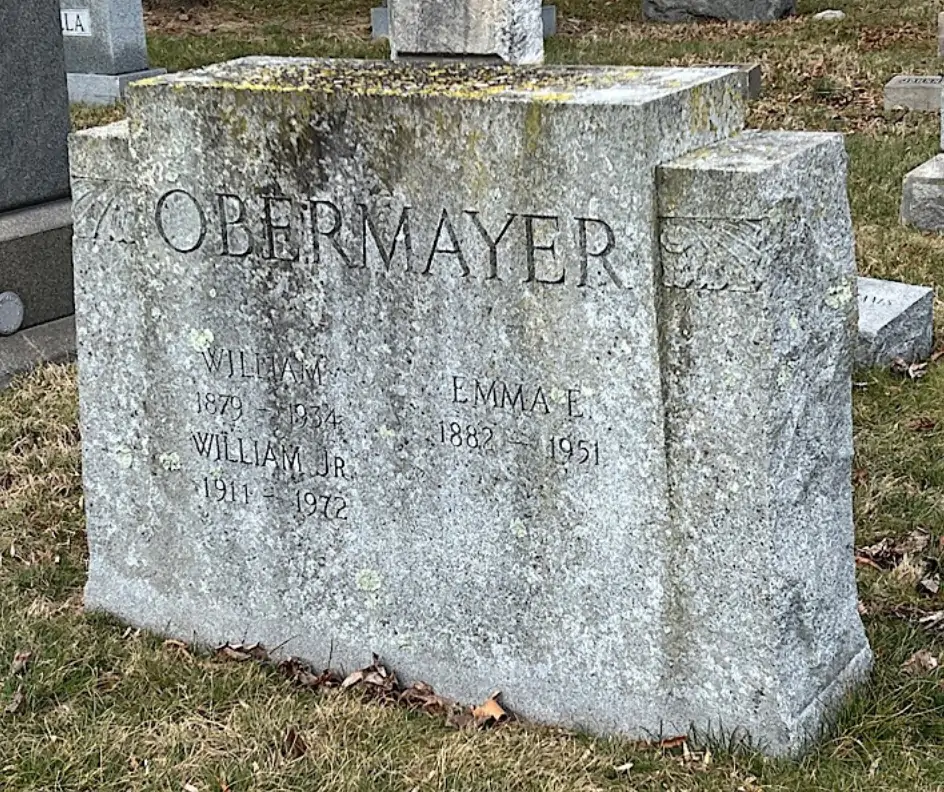
O’CONNOR, MAURICE BRENDEN (1923-1989). Unknown rank, 109th Anti-Aircraft Artillery Gun Battalion, Battery D, United States Army. Maurice was born in Brooklyn to parents John J. and Margaret J. O’Connor. Both parents were Irish immigrants who had arrived in the United States in 1912 and 1917, respectively. At the time of the 1930 census, they had been married for about seven to eight years and lived in a rented home at 112 Second Place in Brooklyn. John J. was thirty-six years old and worked as a porter at a produce warehouse. His wife, Margaret J., was thirty-four. The couple had three children including their son Maurice, who was six years old and attended school, a four-year-old daughter named Catherine, and a two-year-old son named Patrick K. All members of the family could speak English and read and write. The records also show that the family housed a boarder by the name of Timothy Scanlan, a twenty-seven-year- old Irish immigrant who had arrived in 1922 and also worked as a porter at a produce warehouse.
By the 1940 census, the family had moved to 492 Court Street. John J. O’Connor now worked as a porter at a furniture warehouse and had an annual income of $1,820. Maurice was sixteen years old, had completed eighth grade and had a fourth sibling, a sister by the name of Margaret who was seven. These records also tell us that both parents had completed their school education till the eighth-grade level, their son Patrick had completed the sixth grade and Margaret the second.
In 1942, just two months shy of his nineteenth birthday, Maurice B. O’Connor registered for service. His draft card describes him as white, 5′ 9″ tall, 140 pounds with brown eyes and hair, and a dark complexion. His mailing address was the same as his family home address on Court Street and his father was listed as his next of kin. Charlie Bunming, at 100 Reade Street in New York City, was listed as O’Connor’s employer.
As reported by his daughter, O’Connor served in England, France, Belgium, Luxembourg, and Germany before being discharged in 1945. His division, the 109th Anti-Aircraft Gun Battalion was part of the Third United States Army, commanded by General George S. Patton, which took part in the Battle of the Bulge, and fought its way across Europe.
In 1950, O’Connor married Iris M. Rochon in Brooklyn; their daughter Colleen, was born in 1955. O’Connor’s wife preceded him in death, passing away in 1984, while he himself died just five years later at the age of sixty-four. Section 129, lot 39025, grave 1.
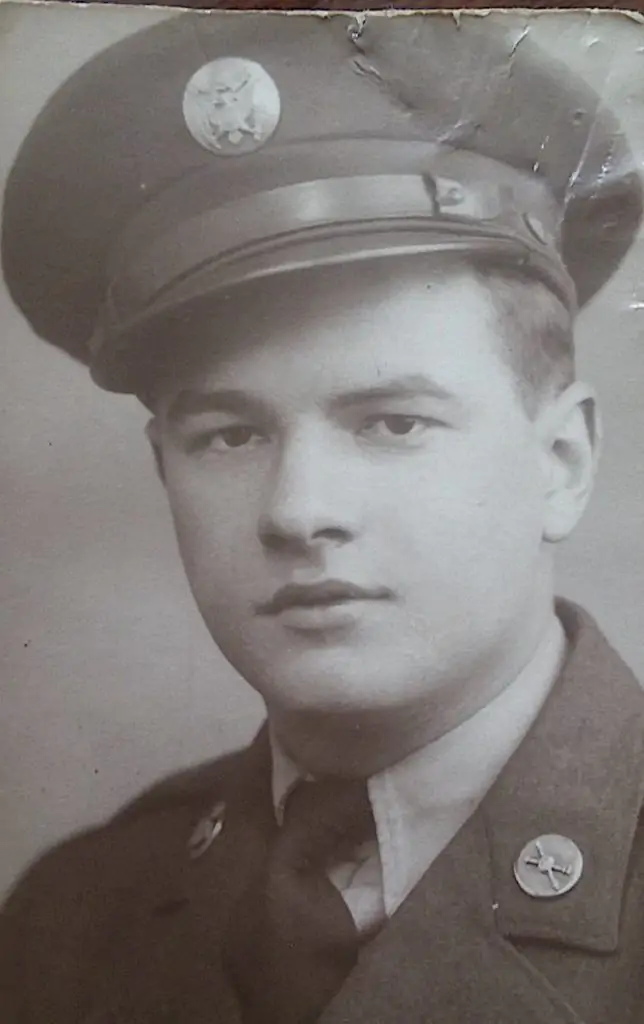
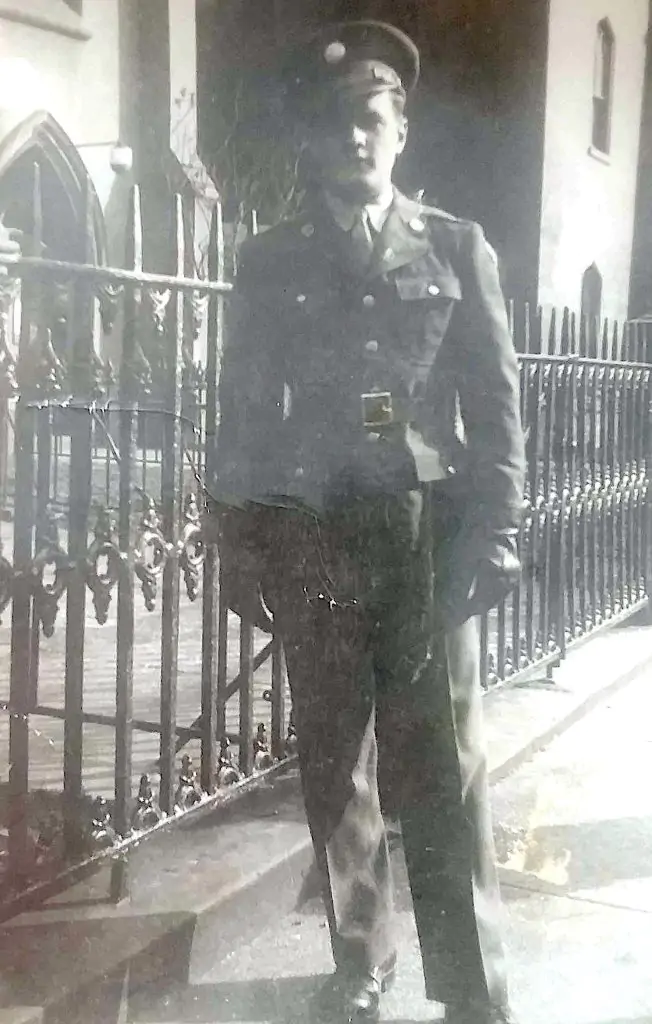
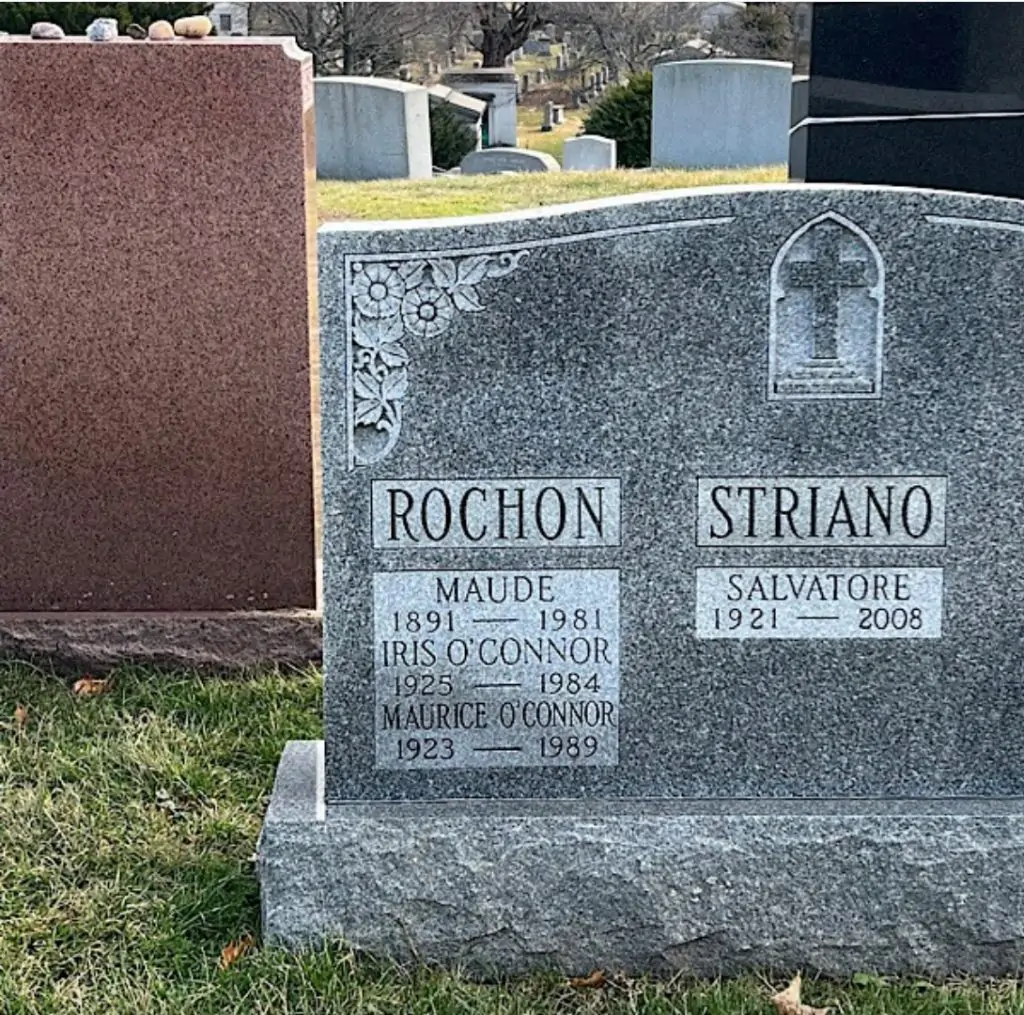
OLSEN, JOHN MELVIN (1918-1992).Infantry, 133rd Engineer Battalion, United States Army. John M. Olsen was born in Brooklyn to Norwegian-born parents John and Mathilde Olsen (Johansen) who immigrated to the United States in about 1905 and 1903, respectively. John was baptized at Our Savior’s Lutheran Church in Brooklyn and growing up, he and his family attended the Zion Church on 4th Avenue and 60th Street. For much of their lives, the family lived at 234 52nd Street in Sunset Park, Brooklyn. At the time of the 1925 New York State census, his father John Olsen was fifty-three; his mother, her name written as Matilda, was a housewife. John M. Olsen’s older sister, Olga, twenty-eight years old, was married and lived there too with her husband Sidney, also twenty-eight and working as a rigger. They had one daughter, Mildred, who was three. His sister Ruth was fourteen, John, who was seven, was the youngest child. Both Ruth and John attended school.
According to the 1930 census, John Olsen was a harbor boat captain and the owner of his home which was valued at $12,000. He was now a widower and lived with his daughter Ruth who was married to Henry F. Malloy, a laborer in the shipyard industry, his granddaughter Marilyn, who was one-year-old, and his son John, the subject of this biography, attended school. John’s oldest sister Olga and her family continued to live in the same building but were recorded as a separate household.
The 1940 census indicates that John lived with his sister Olga in the second household along with his brother-in-law Sidney, an elevator controller, and their children Mildred and Ronald (who was seven years old). By this time, John had completed five years of high school, worked fifty-two hours a week as a clerk in an insurance company, and had an income of $780. The same document also indicates that the other members of the Olsen family continued to live in the same building and were counted as separate households: John Olsen, who was now sixty-seven, worked sixty hours a week as the captain of a lighter boat had an income of $2080, and had three Norwegian roomers living with him; his daughter Ruth Malloy, who was now a widow and received a pension, and her daughter Marilyn, were listed as the third household.
In October of that same year, Olsen enlisted in the 133rd Engineer Battalion of the Maine National Guard of the United States Army at the age of twenty-two. His draft registration records describe him as white, 5′ 8″ tall, with a light complexion and brown eyes and hair. The document also recorded a scar on the right side of his back as a physical characteristic that would aid in identification. Olsen’s sister Olga, who continued to live at 234 52nd Street, was listed as his next of kin. His employer was listed as Standard Surety and Casualty Company of New York, at 80 John Street in Manhattan.
Multiple records indicate that Olsen served from 1943 to 1945. As per his daughter-in-law, Olsen was shot in Italy during his time in the war. His distinguished service is evident in his military decorations saved by his family. From these we learn that Olsen fought in the European-African-Middle Eastern Theater; he was awarded the Combat Infantryman Badge, a badge awarded to members of either the Infantry or Special Forces who fought in active ground combat, and the Purple Heart.
As per his family, Olsen met his wife Dagny Nicholsen in 1942 at the 59th Street Lutheran Brethren Church in Brooklyn, a church which was a very important part of their lives. They were happily married and had three children, two daughters, Phyllis and Doris, and a son, Richard. Olsen’s death certificate indicates he worked as a bookkeeper and 1270 67th Street in Brooklyn is recorded as his last address.
His daughter-in-law, Anna, reports that, near the end of his life, Olsen suffered from Alzheimer’s and after living with his son for some time, spent the year before his death at the Norwegian Christian Home and Health Center in Brooklyn. His funeral service was held by Edward C. Halverson Inc. and he is survived by his children and grandchildren. At the time of his death, he was awarded the Presidential Memorial Certificate signed by President George H. W. Bush. Section 104, lot 44606, grave 187.
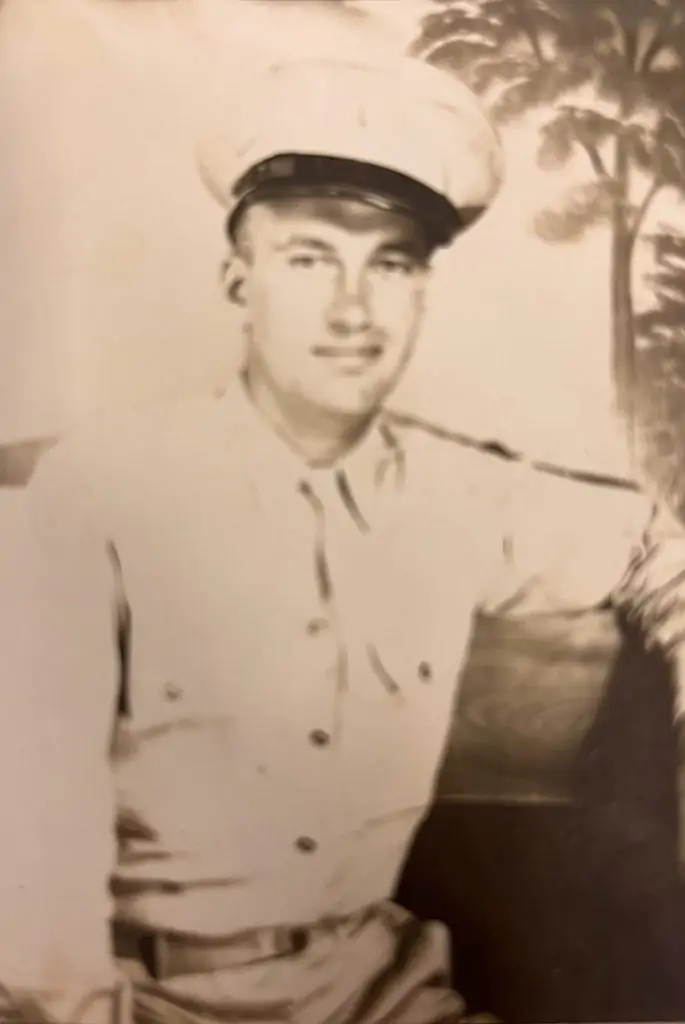
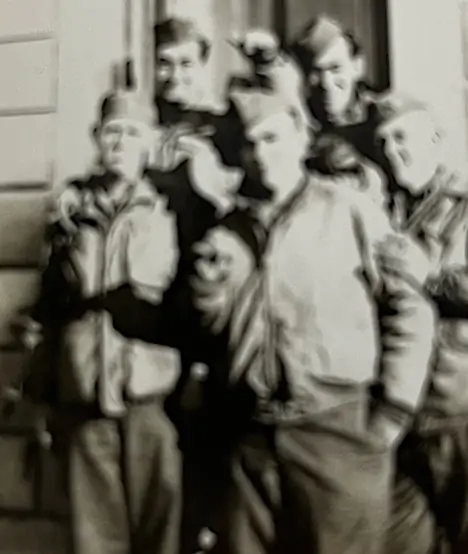
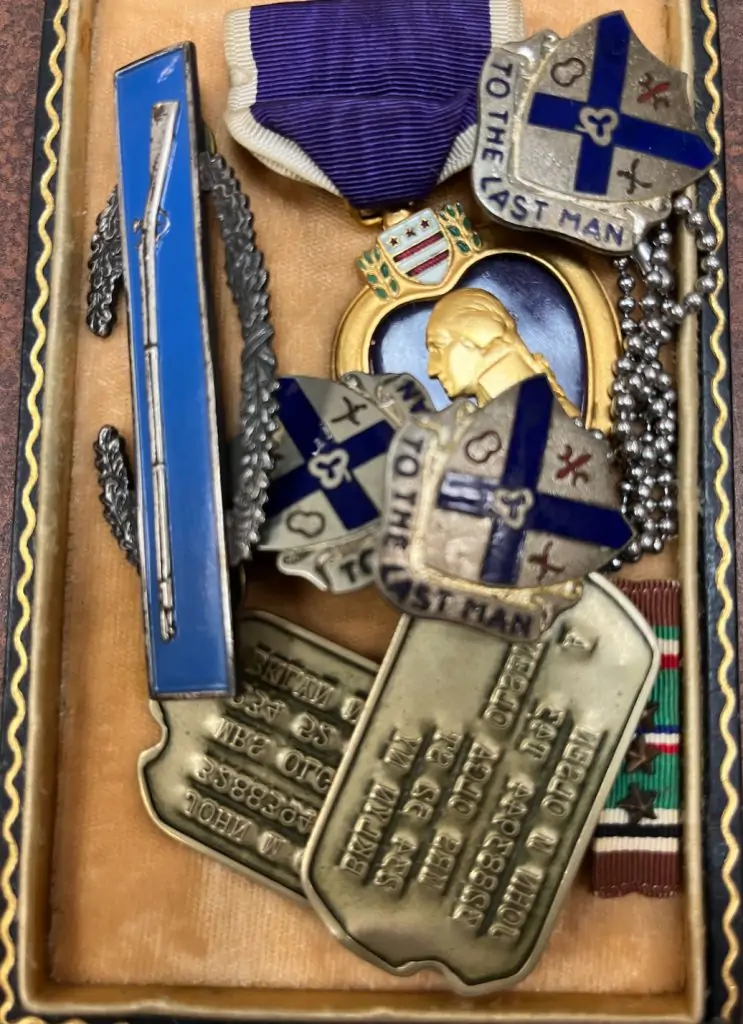
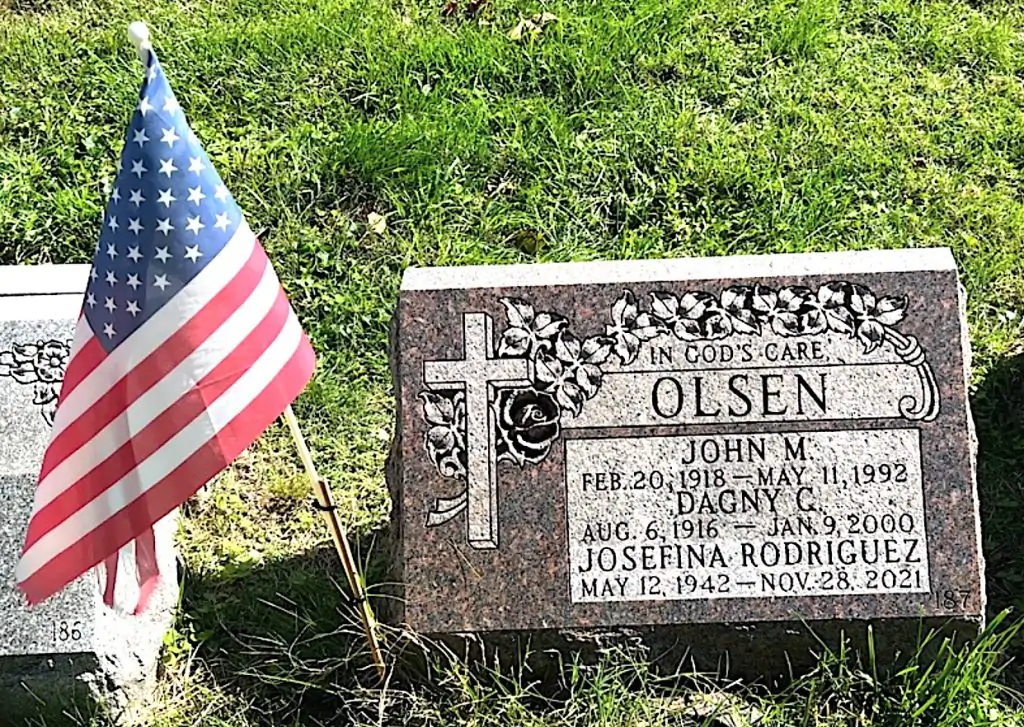
OLSEN, JR., THOMAS (1925-1998). Sailor 1st class (radioman), United States Navy. Thomas Olsen was born in Brooklyn to Joseph and Mary (McElroy) Olsen, the youngest of six children—four brothers and a sister. His father, according to the 1930 federal census, worked as a clerk at a steamship company, and the family lived at 209 14th Street, Brooklyn. Catherine Reynolds, age 65, was also a member of the household. Thomas was in the 8th grade at the time of the 1940 federal census. The family lived at the same address, but his two older brothers had moved out.
United States military records document Thomas as having enlisted in the Navy on July 8, 1943, two days after his 18th birthday. His draft registration card, dated March 22, 1946 and probably a replacement for a lost original, gave his home address as 654 77th Street in Brooklyn, the same as his father’s; his height as 5′ 9″; his weight at 164 pounds; with brown hair and eyes, and a light complexion. He had a scar on his right wrist.
Thomas was mustered aboard the USS John C. Butler, the lead ship of a class of destroyer escorts in the Pacific Fleet, on November 7, 1944. John C. Butler, launched in November 1943, participated in some of the fiercest naval actions of the war: at Leyte Gulf, Okinawa, Iwo Jima, and, particularly, the Battle off Samar, in October, 1944, one of the largest and most memorable naval battles in history. In 1980, Thomas received the Navy and Marine Corps Achievement Medal for Meritorious Action aboard the John C. Butler.
Thomas married Virginia Minikine in New York in 1969, and died in Ridgewood, New Jersey, in 1989, at the age of 64. He and his wife are interred together at Green-Wood. Section 27, lot 12417, grave 4.
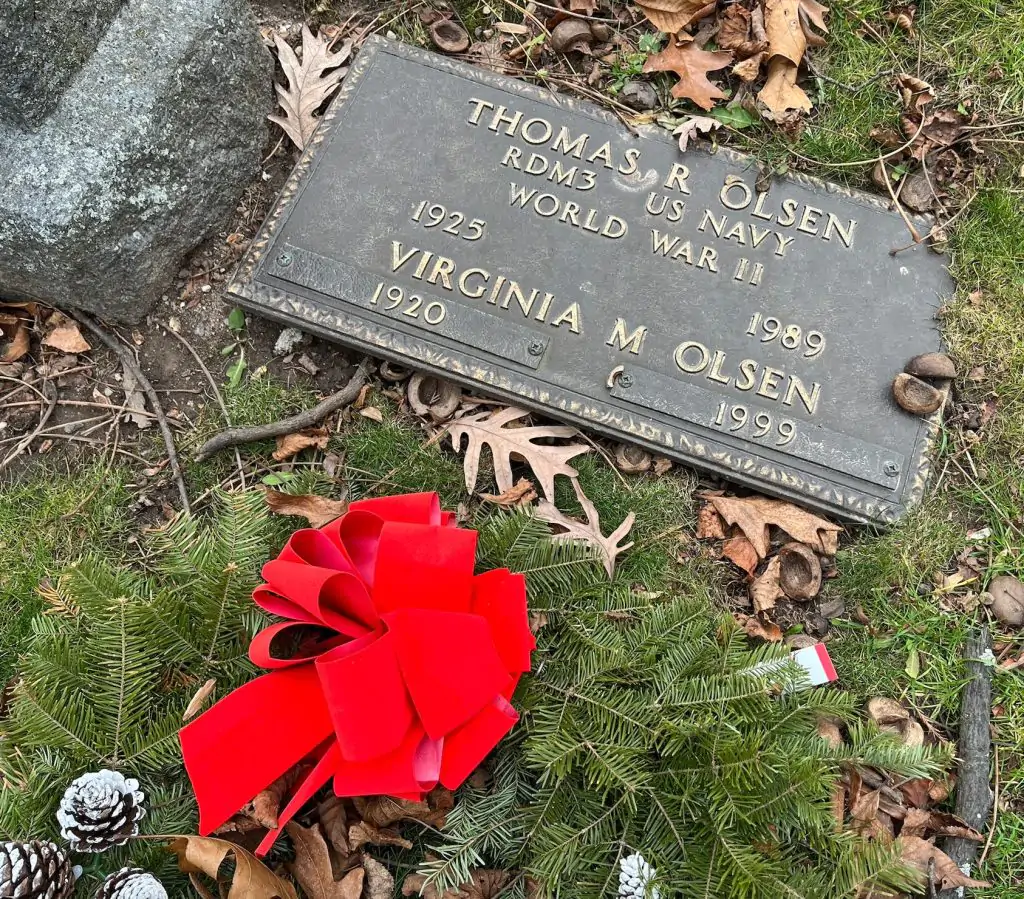
ORTNER, EVERETT HOWARD (1919-2012). Second lieutenant, United States Army. Ortner was born in Lowell, Massachusetts. As per the 1920 census, his father, Herman, was an Austrian-born naturalized citizen who owned his own grocery store; his mother, Anna, was born in New York. The family was living in Massachusetts and five-month-old Everett had a two-year-old sister, Juliette. By the time of the 1930 census, the family was living on East 8th Street in Brooklyn and Herman Ortner was employed as an insurance agent. The Brooklyn Public Library, which holds a collection of the Ortners’ papers, indicates that he attended both Jamaica High School and James Madison High School in Brooklyn, graduating from the latter in 1935. In 1938, Everett was a junior at the University of Arkansas and his home address was listed as Springfield Gardens, Queens; he graduated the following year. The 1940 census reports that the Ortners were living on Eastern Parkway in Brooklyn and Everett’s father was a proprietor of a food store. Everett had completed college and was seeking employment. His older sister, a college graduate, was a bookkeeper at what was listed as a flower manufacturing company and his mother’s niece, Lorraine Ehrenhaus, 25, who lived with them, was working as a bookkeeper.
Ortner filed his WWII draft card on October 16, 1940. He was living at 631 Eastern Parkway and identified his mother as next of kin. Unemployed at that time, he was described as 5′ 8″ tall, 190 pounds, brown eyes with brown hair and a light complexion. On April 11, 1941, Ortner enlisted in the New York State National Guard and was assigned to Company C of the 23rd Regiment. He then enlisted in the United States Armed Forces on June 22, 1942. He was still living at the same address on Eastern Parkway.
During World War II, Everett served in the Army in Europe. On April 21, 1943, the Brooklyn Daily Eagle, in an article headlined, “With Our Fighting Men,” noted that Ortner, commissioned a second lieutenant, was training at Fort Benning, Georgia. The article confirmed his Eastern Parkway address and his schooling at Jamaica High School and the University of Arkansas. Serving in France, he commanded a machine-gun platoon; he received a Bronze Star Medal for valor in 1948 as a result of that service. He was later wounded, captured and held as a prisoner of war by Germany from November 16, 1944 until the German surrender on May 7, 1945. A subsequent article in the Brooklyn Daily Eagle on September 12, 1945, “Meet Our Champs,” stated that Ortner was a veteran of campaigns in Normandy, Northern France and the Rhineland. The article indicated that Ortner was at the army ground and services redistribution station in Asheville, North Carolina, for two weeks of rest. His address was listed as 135 Eastern Parkway, the same address mentioned on his 1945 World War II Jewish serviceman card which highlighted the box designated “authenticated”; the other box on the card was designated “missing.”
As per the 1950 census, Everett was living with his parents on Eastern Parkway in Brooklyn and was working as a magazine editor. He and Evelyn Gelbman, who was trained as an interior designer at Pratt Institute, obtained their marriage license in New York in 1952 and married the next year. They lived in Brooklyn Heights in the early years of their marriage. In civilian life, he was an editor at Popular Science Magazine for thirty-three years from 1952 until his retirement in 1985.
However, Everett gained prominence through community involvement. Ortner and his wife were dynamic preservationists and leaders in the gentrification of “Brownstone Brooklyn.” The Ortners purchased a brownstone at 272 Berkeley Place in Park Slope in 1963 for $32,500. At that time, the neighborhood was redlined and it was difficult to get mortgages as the old brownstones were either rooming houses or were torn down as people fled to the suburbs. As per his obituary in The New York Times, which confirms his World War II service, the Ortners and other others successfully lobbied bankers to limit redlining. Five years after their purchase, the Ortners were among the founders of the Brownstone Revival Committee, an association that organized walking tours, block parties and open houses to encourage others to make Park Slope their home. The Times obituary noted that the Ortner’s house was adorned with its original mahogany woodwork and papier-mâché and linseed-oil wallpaper.
Among other initiatives led by the Ortners in their neighborhood was getting Brooklyn Union Gas to restore a brownstone, give grants for gaslights and other amenities, and hold fairs promoting the area. The Ortners were responsible for getting the Park Slope Historic District designated in 1973. The Ortners organized “Back to the City,” a conference promoting brownstone revitalization throughout the United States which was held from 1974 through 1983; Everett was the co-founder and president of that conference. As per his obituary in The New York Times, Ortner said, “Never again, never again, never again will houses of this quality be built for the middle class of the city. I suppose it’s agelessness. There’s a feeling of security in knowing it will look like this in the future.”
Other civic organizations in which Everett took an active role were: the Park Slope Civic Council as photographer and vice-president beginning in the 1960s, the Park Slope Betterment Committee of which he was a founder, the Montauk Club of which he was a board member and president, and the Brooklyn Historical Society/Long Island Historical Society of which he was a board member and vice-president. Evelyn Ortner was involved in many of these projects as well as being a board member of the Brooklyn Academy of Music, and president of the Community Committee the Brooklyn Museum. She also held leadership roles in numerous fine arts organizations. She was the founder of and chair of St. Ann’s Center for Preservation and the Arts and the Brooklyn Stained Glass Conservation Center.
The Ortners were the recipients of many honors including the Brooklyn Union Gas Company’s Cinderella Award in 1978, the Preservation League of New York State’s Excellence in Historic Preservation Award (2001), and the New York Landmarks Conservancy’s Lucy G. Moses Preservation Leadership Award (2005).
As per his obituary in “Green-Wood and Family” and Jeffrey Richman’s blog, “Preservationist Everett Ortner Dead at 92,” posted on May 31, 2012, the Ortners were active at Green-Wood Cemetery leading the Preservation Volunteers, modeled after a French association, a group that began working every summer beginning in 2002 to restore and clean gravestones and mausolea. The volunteers continued this tradition after Everett’s death. Evelyn Ortner died in 2006. Everett Ortner’s death was attributed to complications from a fall. There were no immediate survivors. Tranquility Garden, Niche, FO3-11B.
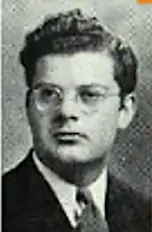
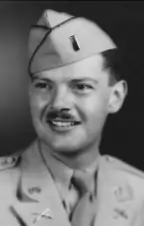
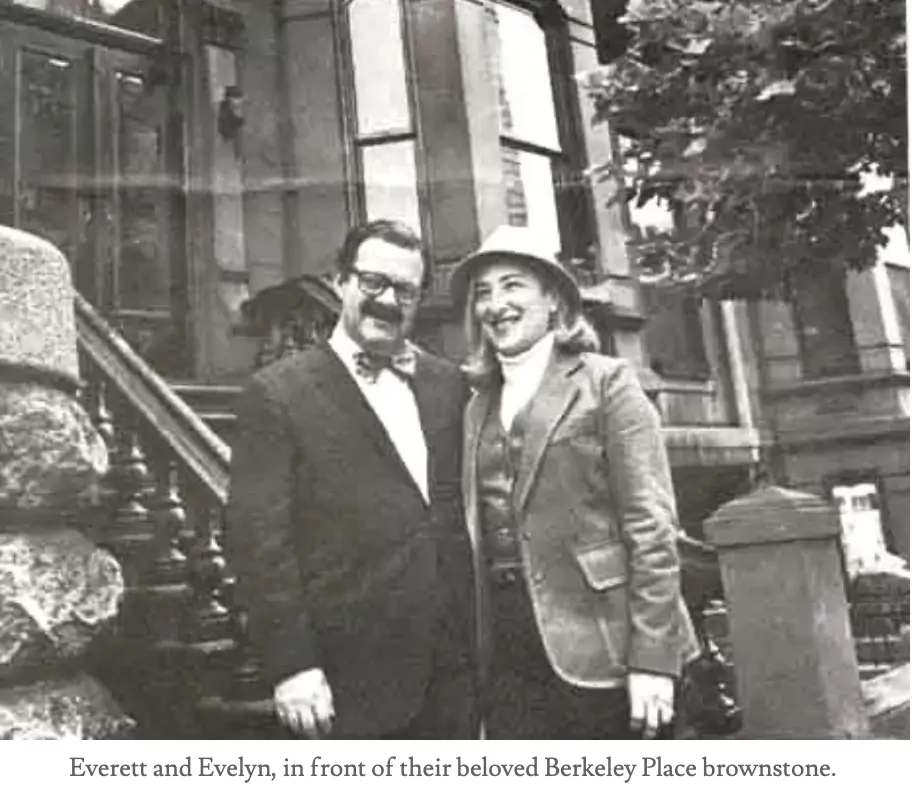
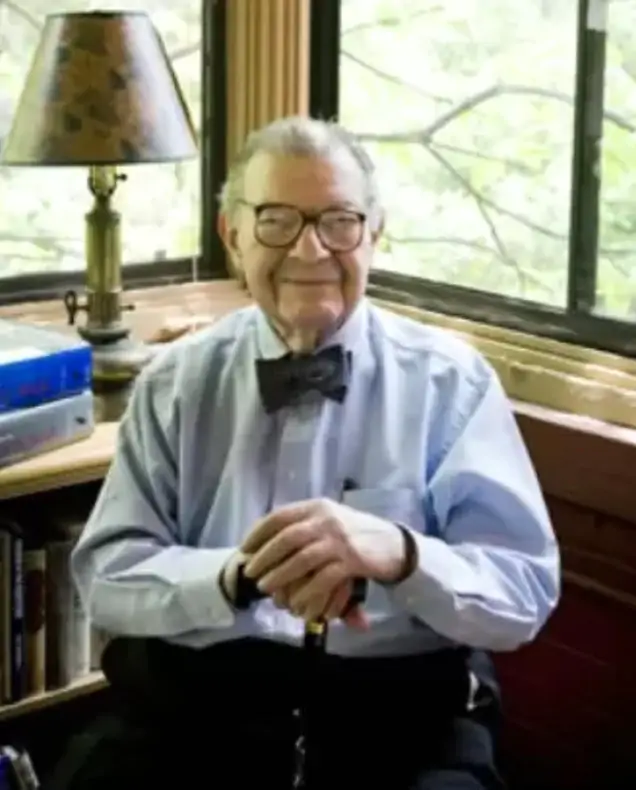
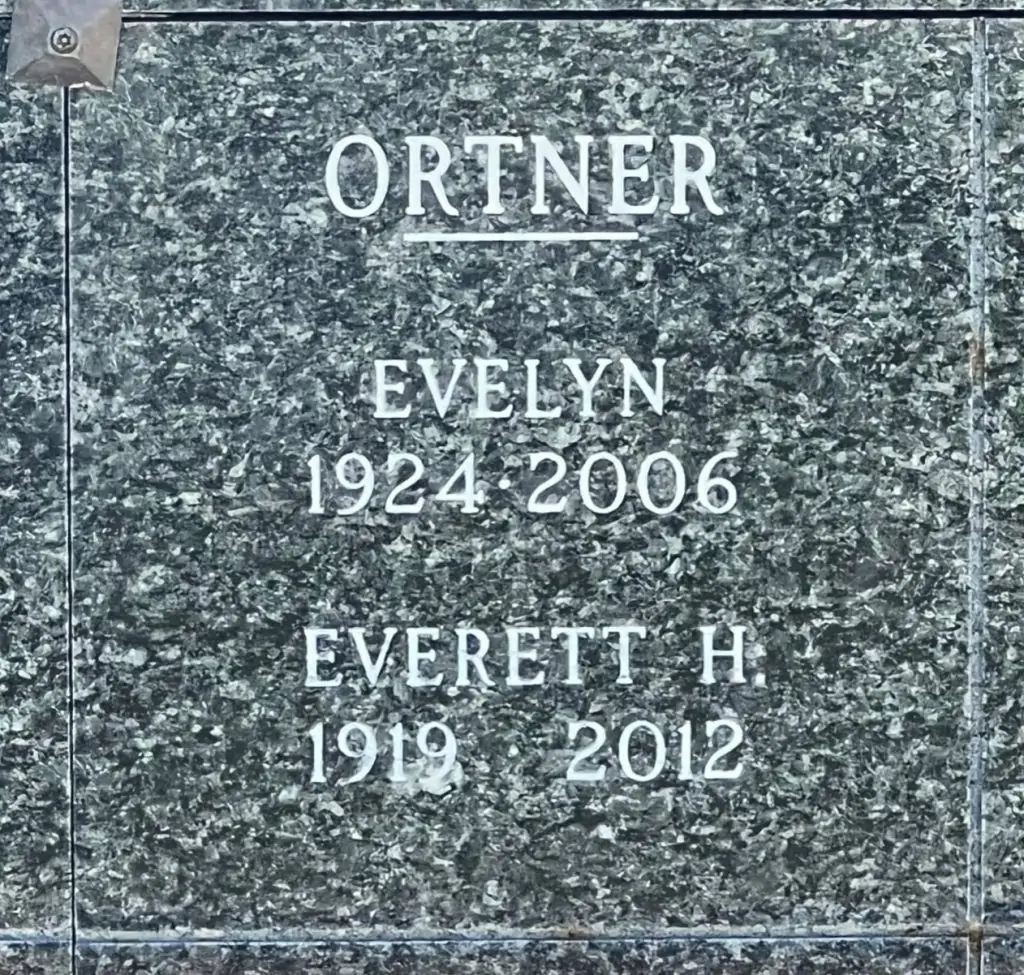
O’SHAUGHNESSY, DONALD E. (1912-1960). Technician 4th grade, 1052nd Engineers, Headquarters Company, Port Construction/Repair Group, United States Army. Donald was born in New York City to Edward D. and Florence E. O’Shaughnessy. At the time of the 1915 New York State census, the family was living on Union Street in Brooklyn. Donald’s father was working as a manager. Subsequent census reports tracked the family’s movements every five years, from Union Street to Bedford Avenue to Woodruff Avenue in 1925. Donald’s father’s listed occupation also changed, from manager to bank clerk to salesman. By the time of the 1930 federal census, 18-year-old Donald was working as a clerk in a brokerage house. Ten years later, according to the 1940 federal census, he was a department store manager, still living on Woodruff Avenue with his parents. Then came the war.
O’Shaughnessy registered for the draft in October 1940, at the age of 28. His employer was listed as the James McCreery Company, a well-known department store on 34th Street and 5th Avenue in Manhattan. He is described as 5′ 9″ in height, weighing 155 pounds, with brown hair, hazel eyes, and a sallow complexion.
On January 6, 1943, O’Shaughnessy enlisted in the United States Army. By September of that year, he was stationed in Australia with the Corps of Engineers and had been recently promoted to corporal, according to a notice in the Brooklyn Daily Eagle. Australia was a major base of operations for the Pacific Theater. His unit, HQ 1052nd Port Construction/Repair Group, supported combat troops and equipment by building and repairing bridges, ports, roads, and airstrips. By the time of his honorable discharge, on August 31, 1945, O’Shaughnessy had been promoted to the rank of TEC 4, the equivalent of a sergeant with specialized skills.
On April 25, 1946, Donald and Mildred R. Murphy applied for a marriage license in Brooklyn and married on May 4. According to the application and certificate, Donald was still living at the family home on Woodruff Avenue and worked as a training supervisor. Mildred, who had been previously married, worked as a secretary. By the time of the 1950 federal census, Donald and Mildred were living on Atlantic Avenue. He was working at a department store, and Mildred worked as a credit manager.
O’Shaughnessy died at age 48, on September 1, 1960. According to the application for a military veteran’s headstone for Donald, filed several months later, Mildred was then living at 279 Argyle Road. She died in 1986 and is buried next to him, along with his mother. Section 22, lot 9535.
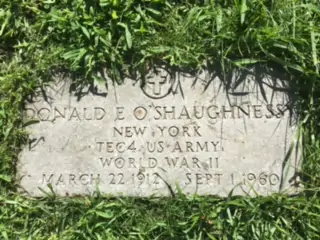
OSSWALT, JOHN FARR (1922-1944). Second lieutenant, 452nd Bomb Group/728th Bomb Squad, United States Army Air Force. Osswalt was descended from old Mayflower families, the Fullers and the Farrs, according to his death notice. His father, Oscar, served as a first lieutenant in the Army during World War I. Along with his mother, Alice, the family was living in Queens, New York, and Oscar was working as a broker at the time of the 1925 New York State census. By the time of the 1930 federal census, the family had moved to Great Neck, in Nassau County, and Oscar worked as a banker. Two years later, Oscar died.
According to the 1940 federal census, 17-year-old John, his mother, and his eight-year-old sister had moved to San Mateo, California. John was a high school student. After graduation, he enrolled at Stanford University before enlisting in the Army Air Force in June, 1942.
Osswalt’s draft registration card describes him as 5′ 11″ tall, weighing 138 pounds, with blue eyes, blond hair, and a scar on his right palm. He was 20 years old and stated that he was unemployed. He was living with his mother, who had married Henri Brevet, in Golf, Illinois. His enlistment record marked John’s civilian occupation as “actor” (civilian occupation code #002, according to the Army).
John was stationed at Ellington Field in Houston, Texas, training to be a navigator, when he became engaged to Mary Ingles, a Lake Forest College student, in February, 1943. They married on September 20 in Kansas City, Missouri. In December, 1943, John’s group, the 452nd Bombardment Group (Heavy), was assigned to the Eighth Air Force and was relocated to England. The 452nd flew B-17 Flying Fortresses in bombardment of strategic targets in Germany: marshalling yards in Frankfurt; aircraft assembly plants at Regensburg; and key factories in several other cities.
On March 20, 1944, Osswalt’s aircraft, “Passionate Witch,” was returning from a mission over Frankfurt when it was hit by heavy gunfire and shelling from eight German fighter planes. Punctured by some 2,000 bullets, the plane, with two wounded crew members and only three engines, managed to land at a British field. The details of this “wild ride” were recounted three days later in the Council Bluffs (Iowa) Nonpareil.
The “Passionate Witch” was repaired and ready to fly when a flak-damaged RAF Lancaster plane made an emergency landing and skidded into the B-17, wrecking her. John’s crew was given another plane, which they named “Passionate Witch II,” and took to the air on March 28, 1944. That day’s mission (the 452nd Group’s 24th) was a raid on the airfield at Chateaudun, about 30 miles west-northwest of Orleans, France. According to a written account drawn from military records, “Passionate Witch II” took a direct hit from German antiaircraft fire in its #4 fuel tank and exploded in midair. The right wing broke off and the plane spiraled down, crashing about a mile south of her target. Of the ten-member crew, four managed to bail out before the crash and were taken prisoner by the Germans. The other six airmen—including 21-year-old Second Lieutenant John Osswalt—perished.
Osswalt’s remains were returned to the United States and interred in October, 1948, according to an application for a military headstone. In 2015, a memorial plaque to the crews of “Passionate Witch II” and of another B-17, both of which crashed in Chateaudun, France, on March 28, 1944, was dedicated there by a grateful city. Section 177, lot 15965.
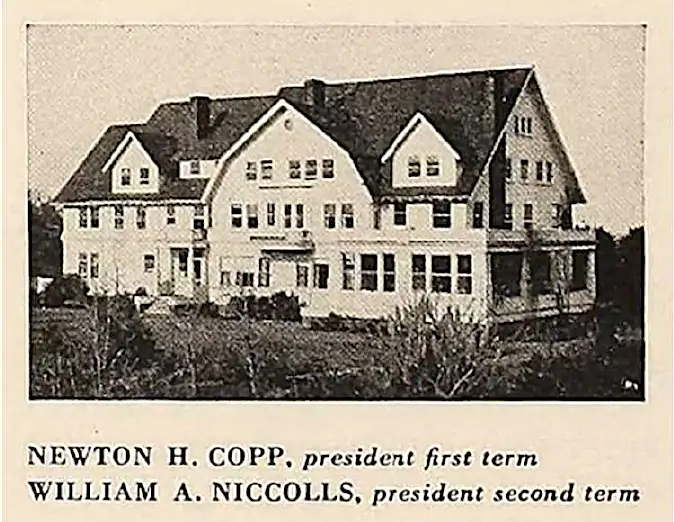
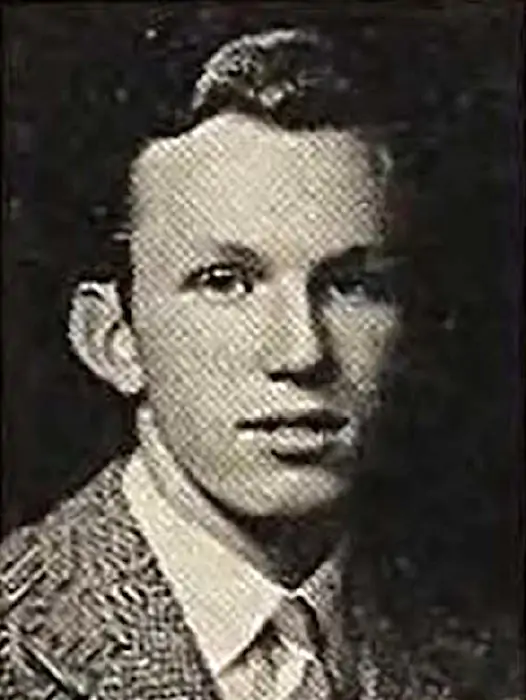
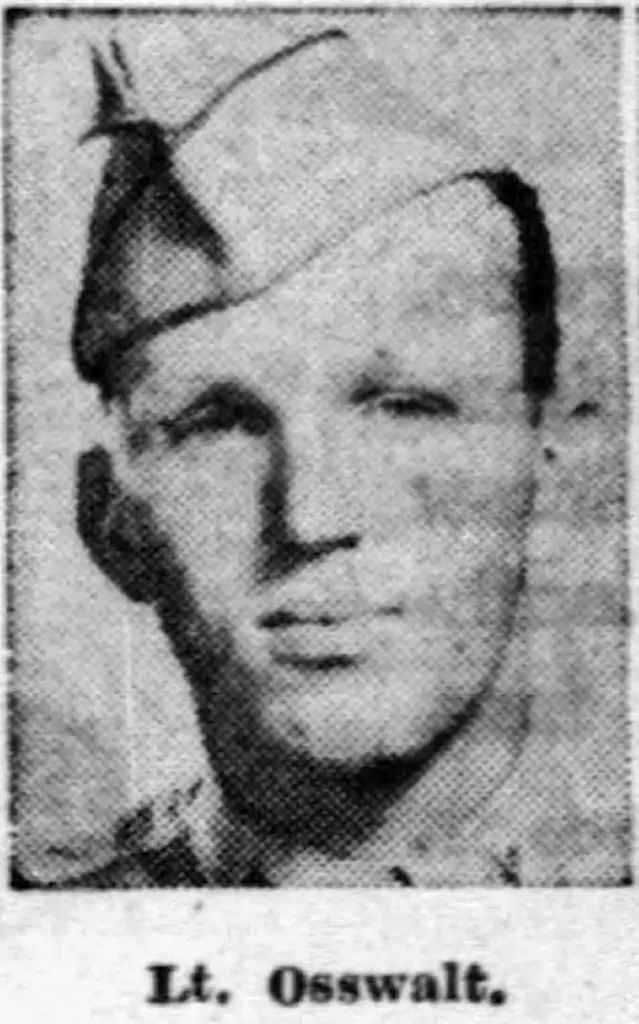
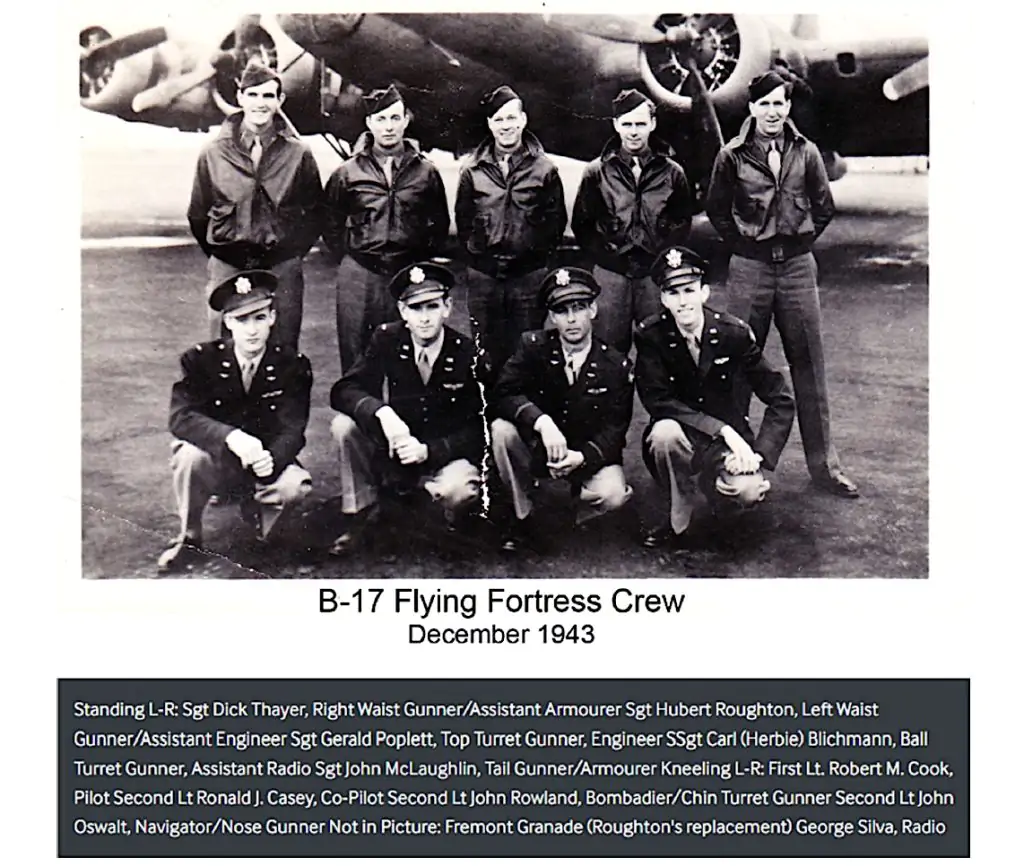
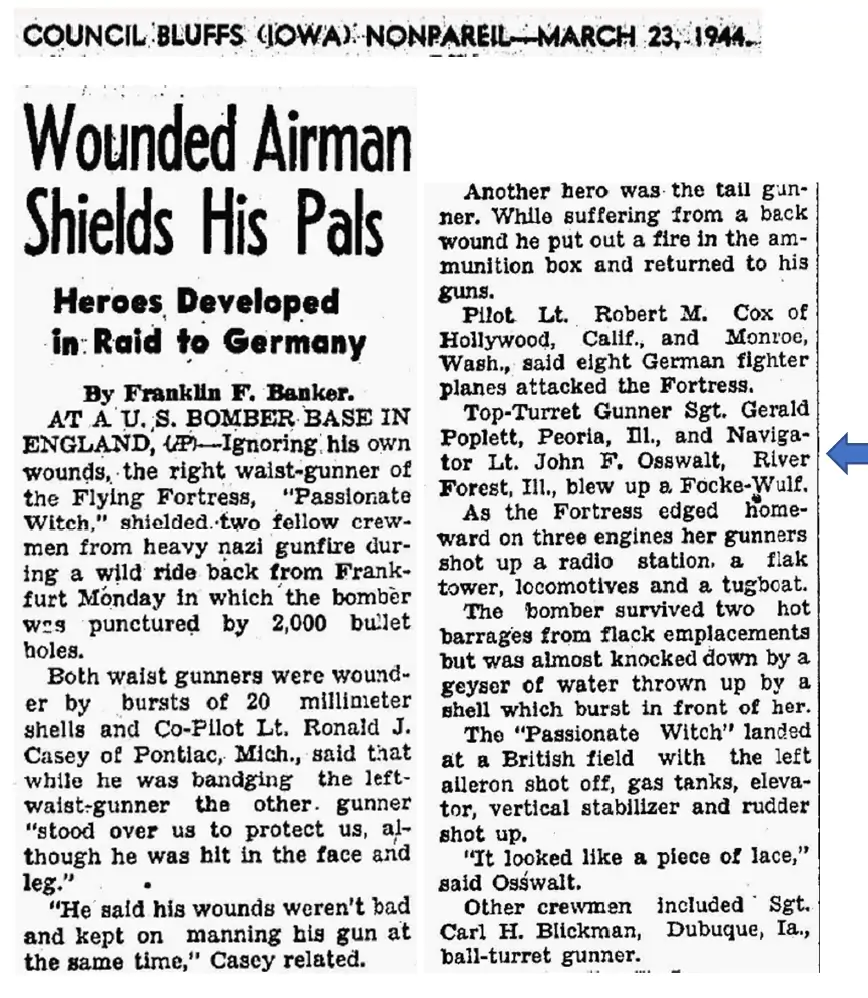
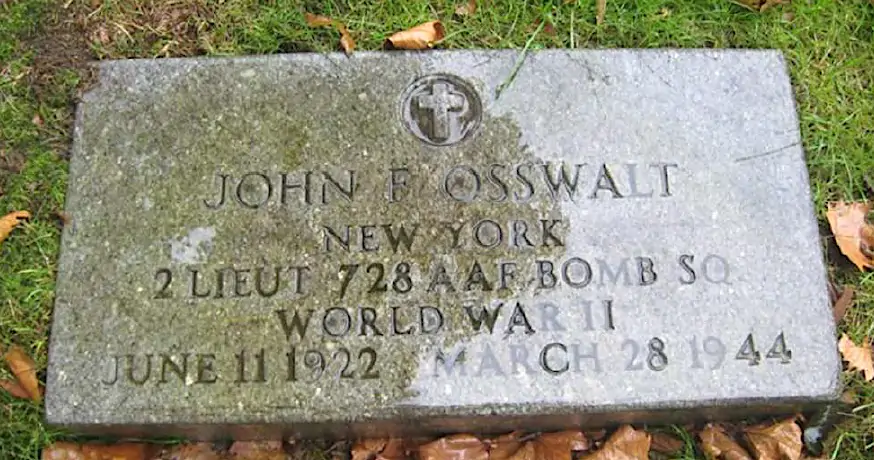
OST, ROBERT EUGENE (1919-1941). Corporal, 92nd Air Base Squadron, United States Army Air Force. Ost was born in Brooklyn. By the time of the 1925 New York State census, Robert was living in Staten Island with his parents, John and Marie, and five siblings. His father, who, along with his mother, was born in Finland, was a carpenter. By the time of the 1940 census, when Robert was 20 years old, he had completed four years of high school and was employed as a plumber. He still lived at the family home on Barclay Avenue in Annadale, on Staten Island.
Ost registered for the draft in October, 1940. He was described on his draft registration card as 5′ 8″ in height, weighing 145 pounds, with blue eyes, blond hair, and a light complexion. He named as his employer Larsen Baking Company, at Henry and 9th Streets in Brooklyn.
Several weeks later, on January 13, 1941, Ost enlisted in the Army. His civil occupation was categorized as “Firemen, fire department.” He was stationed at Pope Field, Fort Bragg, North Carolina, serving in the 92nd Air Base Squadron, an aircraft support unit serving troop carriers.According to an article inthe Lumberton, North Carolina, Robesonian, Robert and a fellow soldier from Fort Bragg, James M. Halley, were killed on October 12, 1941, when their motorcycle collided with an automobile and an army truck near Bynum, North Carolina. Ost was 22 years old and had been at Fort Bragg for less than five months.
Less than a month after his death, John J. Ost applied to the War Department for an upright granite gravestone to mark Robert’s grave at Green-Wood. That is the stone that, since 1942, has marked his grave. Section 16, lot 14888, grave 325.
PALMER, II, LOWELL MASON (1921-1959). Junior lieutenant, United States Navy. Lowell Palmer was born in Brooklyn, New York, to Carleton Humphreys and Winthrop Bushnell Palmer. Lowell’s paternal grandfather had co-owned E.R. Squibb & Sons, the Brooklyn-based pharmaceutical company, and by the time of the 1930 census, Palmer’s father was the company’s president. The family (including younger sisters Winthrop and Rosalind, as well as a servant) lived in Fairfield, Connecticut. By 1940, according to that year’s census, 19-year-old Lowell was living at home in New York, with his mother and father, his two siblings, a cook, and a maid.
In 1939, Palmer had entered Yale University and appeared in the school’s yearbook, where the Alpha Sigma Phi fraternity counted him as a member, class of 1942. Later in the decade he earned an MBA from Harvard, according to his daughter.
After graduation, at the end of 1942, with the war ongoing, Palmer joined the Naval Reserve as an ensign, earning a promotion to lieutenant junior grade, according to his daughter: “Initially assigned to the Pacific, my father later became captain of a PT boat [Torpedo Boat Squadron 15] and ran intelligence missions in the Mediterranean, for which he received [a] commendation.”
On Valentine’s Day in 1948, Palmer married Margaret Helen O’Dowd, a Boston nurse, in Manchester, New Hampshire, her hometown. By then, he was working in business management and lived at 35 East 72nd Street in Manhattan.
From 1951 to 1959, Palmer worked at American Metaseal Corporation. He died of cancer at age 37, at his home in Old Westbury, Long Island. Sadly, he didn’t live to see his family’s later notable accomplishments: his mother, Winthrop, became an important leader of Long Island University, where the School of Library and Information Science on the C.W. Post campus carries the family name. His sister Rosalind (who, during the war, was the inspiration for Rosie the Riveter) was an early supporter of public television, through the Rosalind P. Walter Foundation. Section 125, lot 26169.
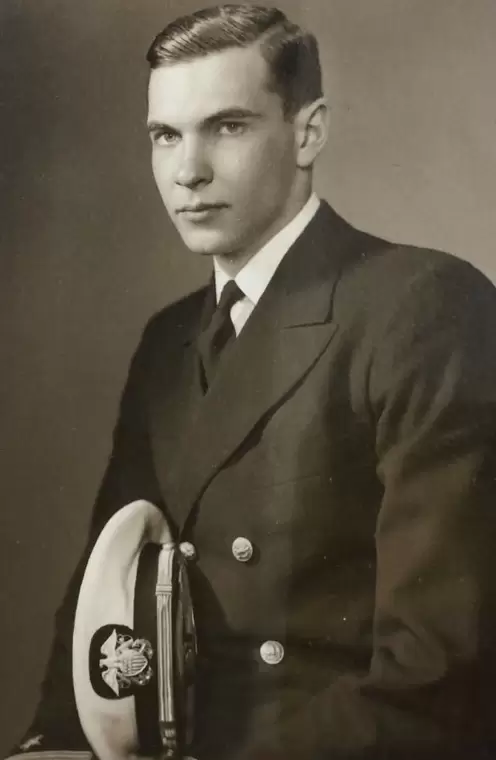
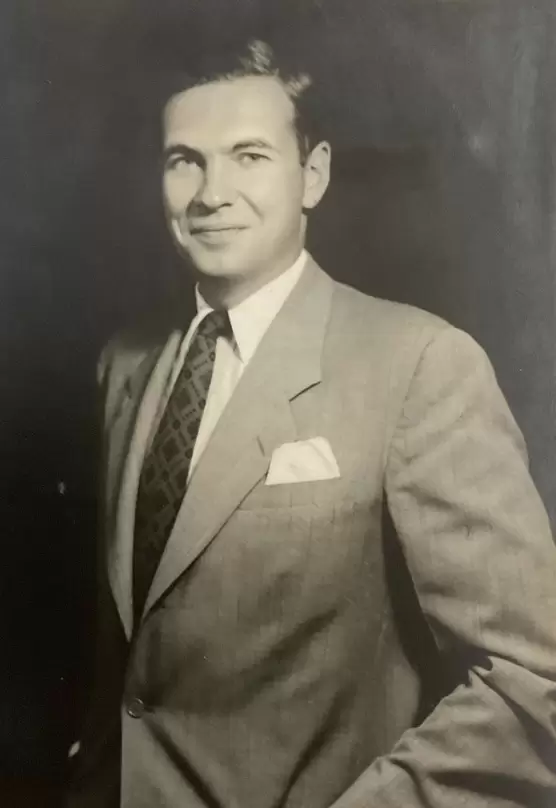
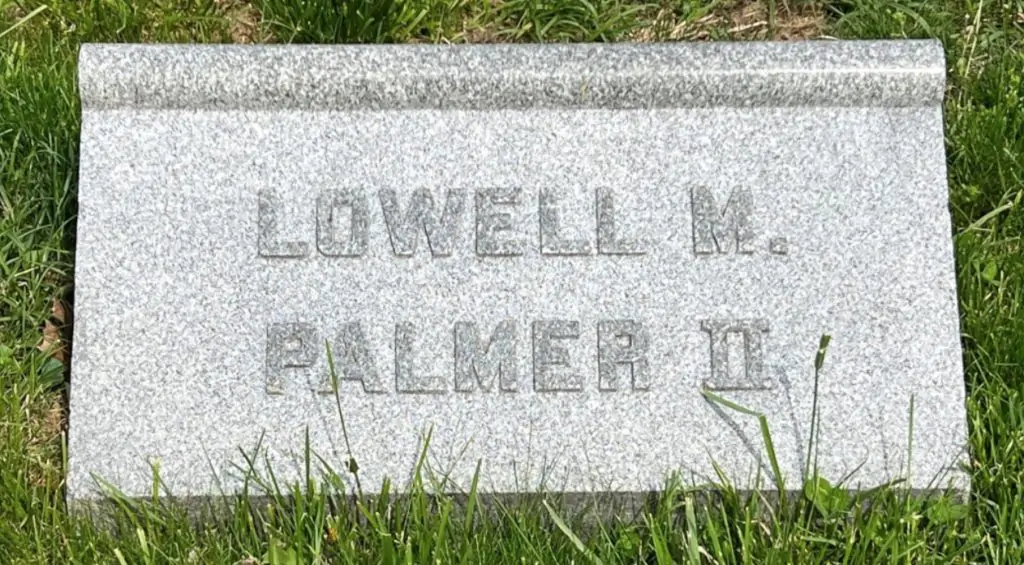
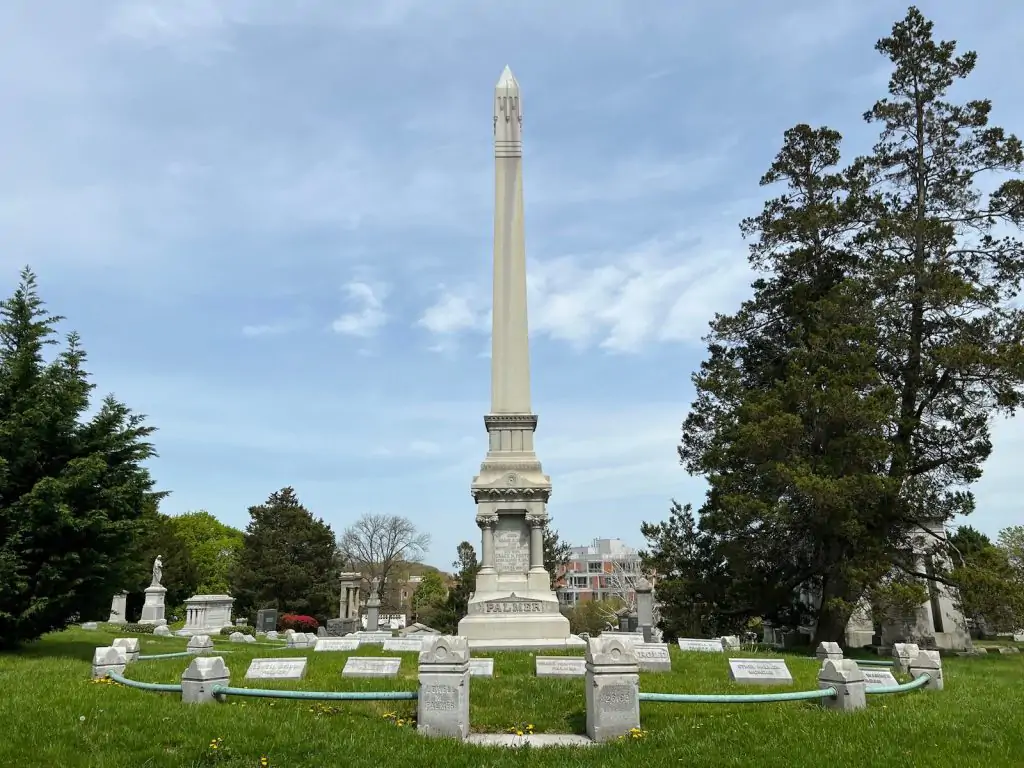
PALUMBO, SALVATORE J. (1923-1979). Corporal, United States Army Air Force. Salvatore J. Palumbo was born in Brooklyn to Giovanni (John) Palumbo and Gilda Consentino Palumbo, according to the birth records of the borough. Both of his parents were born in Naples, Italy. His younger brother, Joseph, was born in 1927. According to the 1930 federal census, the family lived at 10 First Place in what then was called Carroll Park (now Carroll Gardens) neighborhood with Gilda’s brother, Vito Consentino, and his family. Both Vito and Giovanni worked as longshoremen. By the time of the 1940 federal census, Giovanni (now John) Palumbo, was a naturalized citizen, and 17-year-old Salvatore had finished three years of high school.
Palumbo registered for the draft in June 1942, at the age of 19. According to his draft registration card, he was living in the family home. He listed his place of employment as 575 Henry Street, in the neighborhood, and his employer’s surname as Scotto, that of a neighborhood family that operated a successful funeral home, among other businesses, in the area. He was described as 5′ 7″ in height, weighing 190 pounds, with black hair, brown eyes, and a dark complexion.
Salvatore enlisted in the Army in February 1943. According to his daughter, Geraldine Palumbo Marcinkiewicz, he served as a corporal in the Army Air Force. He was discharged in February 1946. No other details of his service are available.
By the time of the 1950 federal census, Palumbo was living at 93 First Place in the old neighborhood with his wife, Anna, and infant son, John. He was employed as a driver for the United States Postal Service. His daughter, Geraldine, was born in 1952.
Palumbo died on March 11, 1979, according to his death notice in the Daily News. The Daily News also recorded the passing of his son, John, in 1988, as well as his wife, Anna, at age 97, in 2019. By the time of Anna’s passing, there were four Palumbo grandchildren and three great-grandchildren. Section 197A, lot 39451.
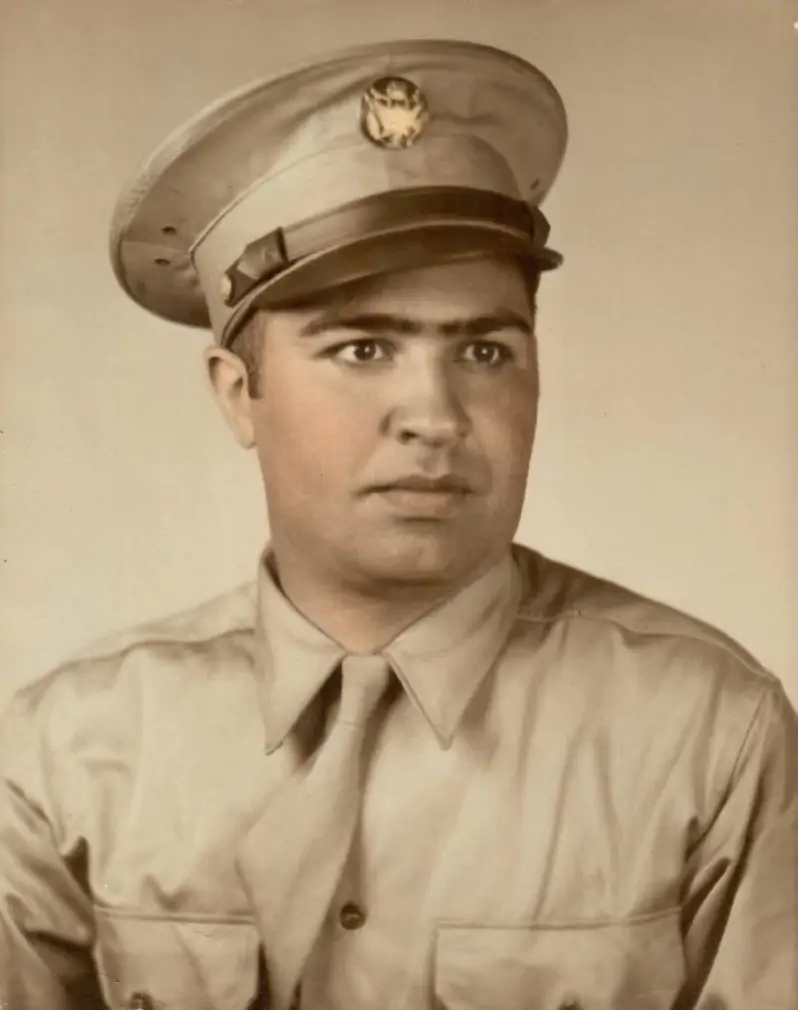
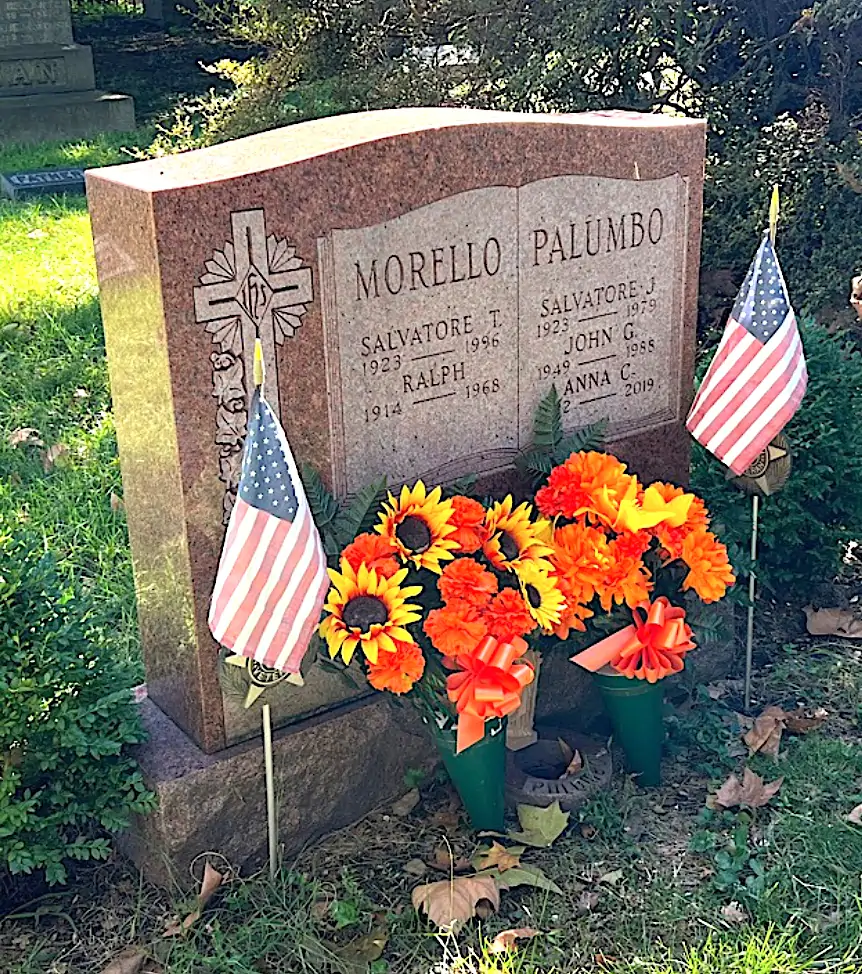
PARASCONDOLA (or PARASCONDOLE), INNOCENZO (1926-2020). Private first class, Company B, 357th Regiment, 90th Infantry Division, United States Army. Innocenzo was born in Brooklyn to Nicholas and Mariana Nardiello Parascondole. Both parents were natives of Naples, Italy. His father came to the United States in 1911 and worked at various jobs on ships and the docks. By the time of the 1930 federal census, the family, including four children—Carmela, Angelina, Michael, and Innocenzo—was living on Hicks Street.
As often happened with immigrant families, the surname was misheard and misspelled on census records: Parascandola, Parascandole, Parascondolea and even Pasicarydello. As well, individuals often changed their given names as the years passed, to make them shorter or more American-sounding. His father, born Nicolangelo, became Nicolo, then Nicholas, and finally Nick. His mother went from Marianna to Mariana, and finally Marion. Innocenzo kept his birth name, even though the census records didn’t always get it right.
By the time of the 1940 federal census, the family was living on Nelson Street and the household had grown to include a fifth and sixth child; Salvatore and Josephine. Nicholas was working as a grocery clerk, his two older daughters worked in a dress factory, and Innocenzo, age 14, was in the eighth grade. According to his daughter Marion, he went on to complete two years at Brooklyn Vocational High School.
Innocenzo Parascandola registered for the draft on April 20, 1944, the day after his 18th birthday. He was unemployed at the time. He listed his mother, now living on President Street, as the person who would always know his whereabouts. He was described as 5′ 9″ in height, weighing 146 pounds, with brown hair, black eyes, and a sallow complexion.
He was inducted into the Army in August, 1944. He joined Rifle Company B of the 357th Infantry Regiment, 90th Infantry Division, according to company photographs from the time. As a rifleman, he was no doubt involved in close combat as his company moved through Europe in the last year of the war.
In a declassified report from SHAEF (Supreme Headquarters, Allied Expeditionary Force), which was a joint U.S. and British military organization created in England in 1944 to carry out the invasion of Western Europe, Parascandole’s name appears in a list of personnel of the Currency Section, which is concerned with the recovery, transportation and storage of gold, art and patents in Germany prior to the war’s end.
During his time in the Army he rose to private first class and, according to his daughter, was awarded a Bronze Star Medal for his service in Central Europe. He was discharged from the Army on July 1, 1946.
At the time of the 1950 federal census, Innocenzo was still living at home with his parents. The notation on that census that he was unemployed is incorrect, his daughter notes that he was in fact a sewing machine and television repairman and had been working in that trade for several years. (At that time, televisions had tubes.) On April 29, 1950, he married Rachel Ann Brancato. Together they raised five children. According to his daughter, his primary employer after the war was the United States Post Office. In that position, he drove 18-wheeler trailers from the main Post Office to local post offices. He also worked part-time as a driver for the City of New York. He died of Covid on June 27, 2020 at the age of 94; his cremated remains were interred at Green-Wood in July 2020. Crematory Atrium, niche N55D.
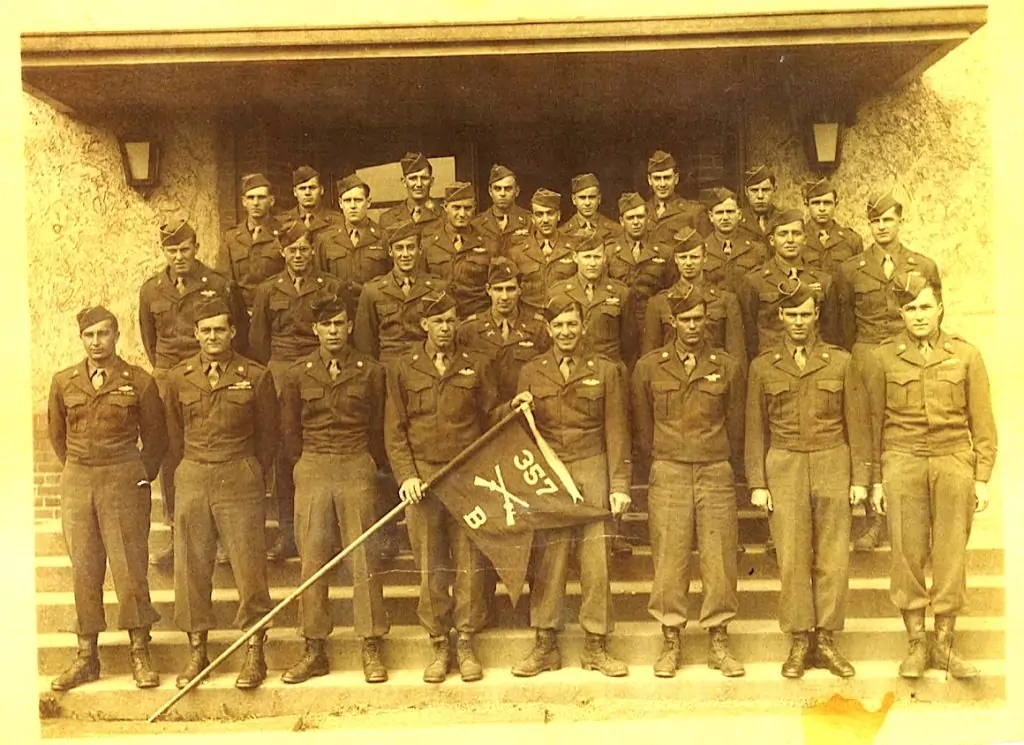
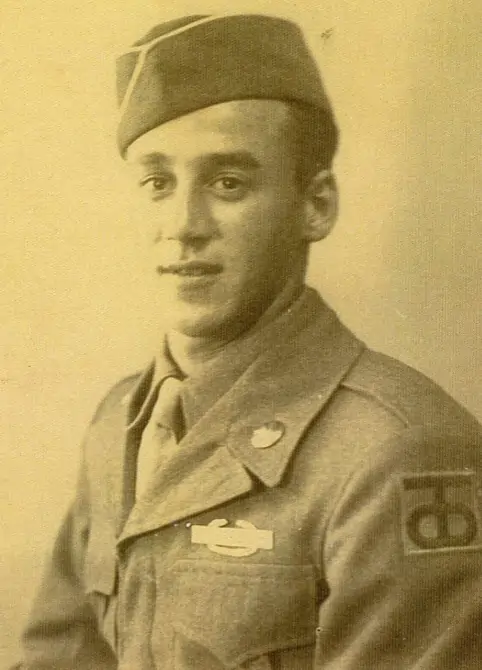
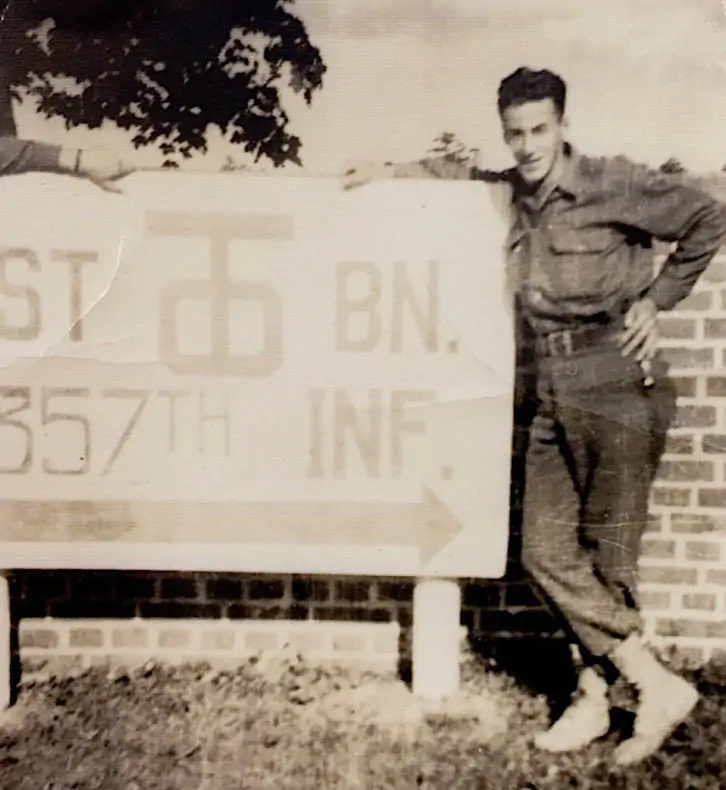
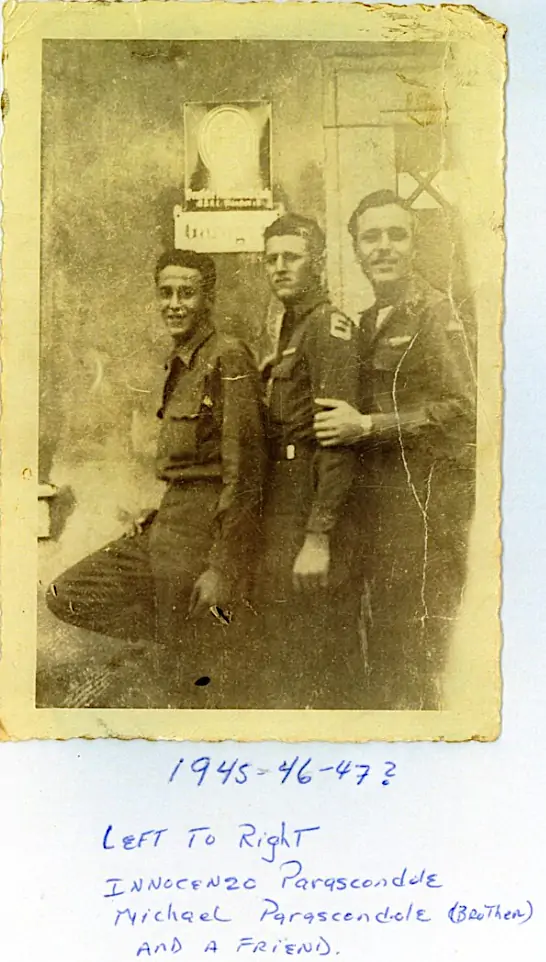
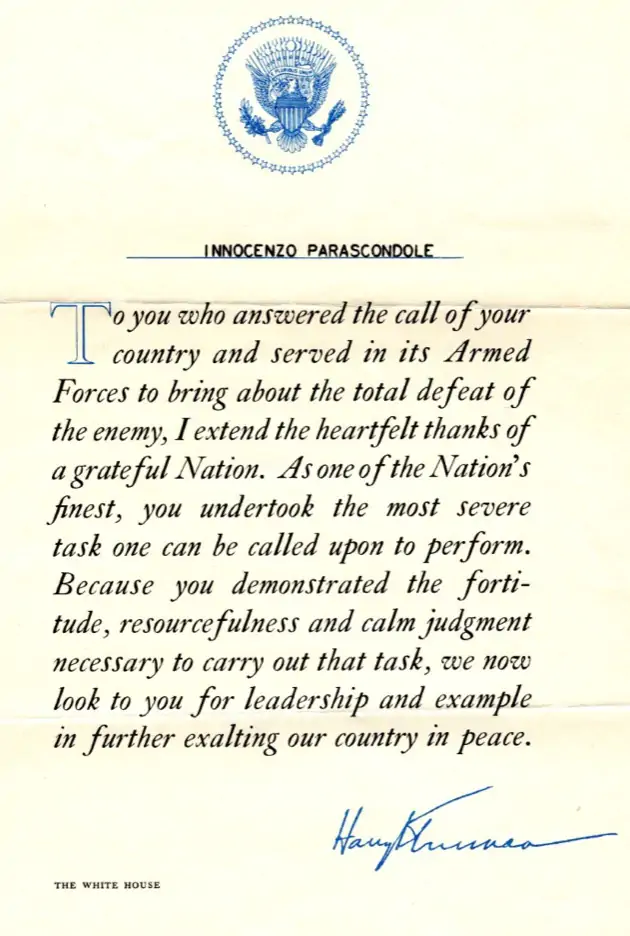
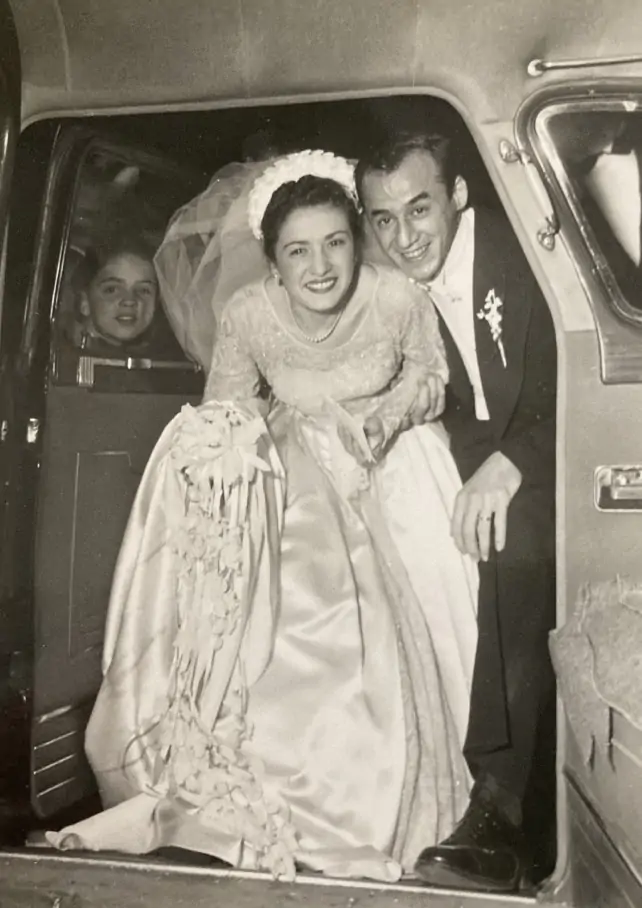
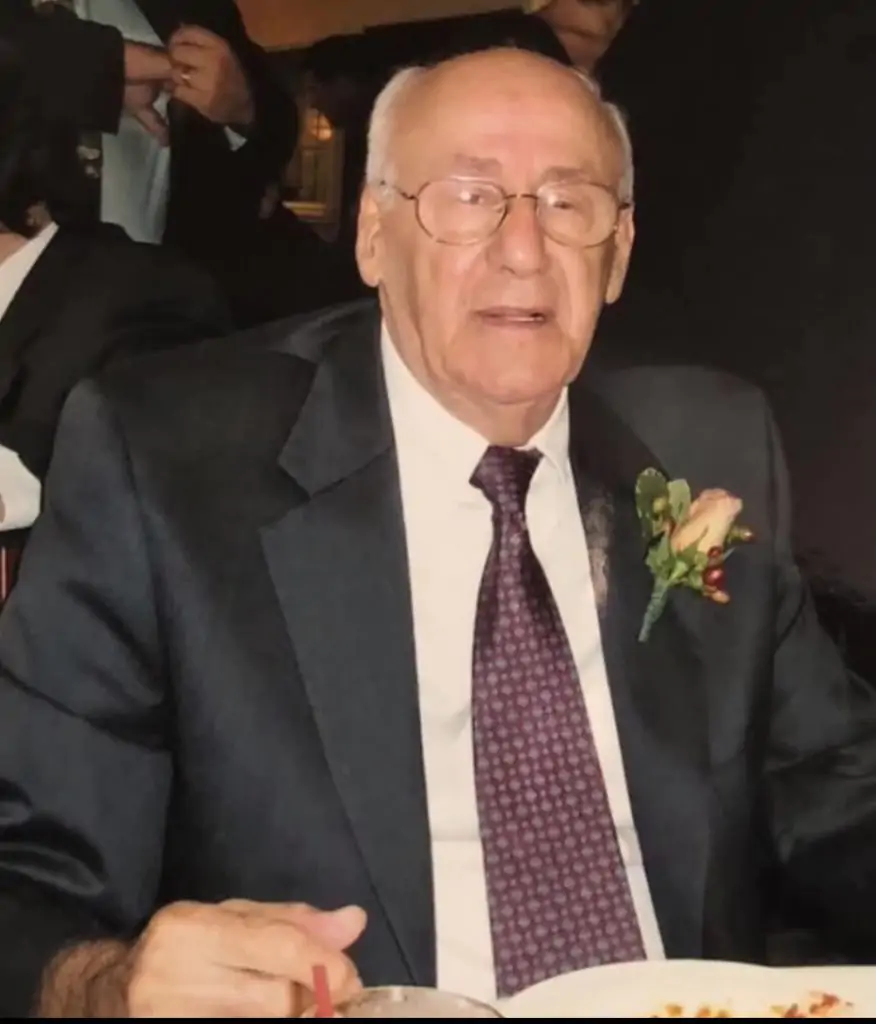
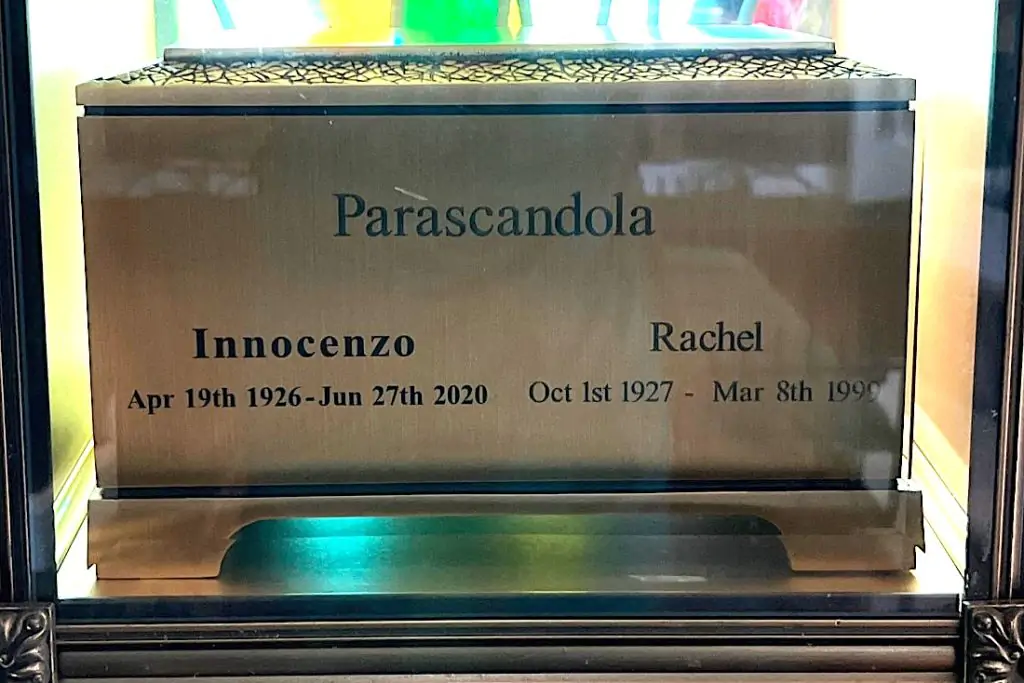
PARISI, JOSEPH (1919-1959). Machinist’s mate third class, Seabee Construction Battalion, United States Navy. Joseph was born in Brooklyn to Joseph and Jennie Parisi. Both parents were from Italy. According to the 1920 federal census, the household was a truly blended family. In addition to baby Joseph, the census records three other sons with the surname Parisi: Angelo, 16, Salvatore, 12, and John, 2; and three more stepchildren with the surname Puglisi: Rocco, 12, Joseph, 10, and Camella, 9.
By the time of the 1940 federal census, 20-year-old Joseph, having completed the 8th grade, was working as a laborer and living with his parents, his older brother John, two younger sisters, and a four-year-old cousin. His father was working as a tailor.
Parisi registered for the draft at age 21, in October 1940. He listed his mother as the person who would always know his whereabouts and his employer as Allegra Scrap Company. His draft card describes him as 5′ 9″ in height, weighing 170 pounds, with black hair, brown eyes, and a dark complexion.
In June 1943, Parisi enlisted in the Navy and served with the Seabees, the Naval construction battalions that built and repaired ports, bridges, and airstrips across the islands of the South Pacific Theater of war. At the time of his discharge in December 1945, his rating was MM3C, or machinist’s mate third class, tasked with operating, maintaining, and repairing engines, turbines, pumps, and other mechanical systems. He was awarded the American Theater and Asiatic Pacific Victory Ribbons.
Joseph married Grace G. Breglia in Brooklyn on October 14, 1946. Together they had two daughters, Jennie and Carolann. He died in 1959, just short of 50 years of age. Just fifteen days after his death, his wife, Grace, applied for a Department of the Army flat granite marker with a Latin cross to mark his grave. Grace Parisi lived until 2010, when she joined her husband at Green-Wood. Section 39, lot 38325, grave 583.
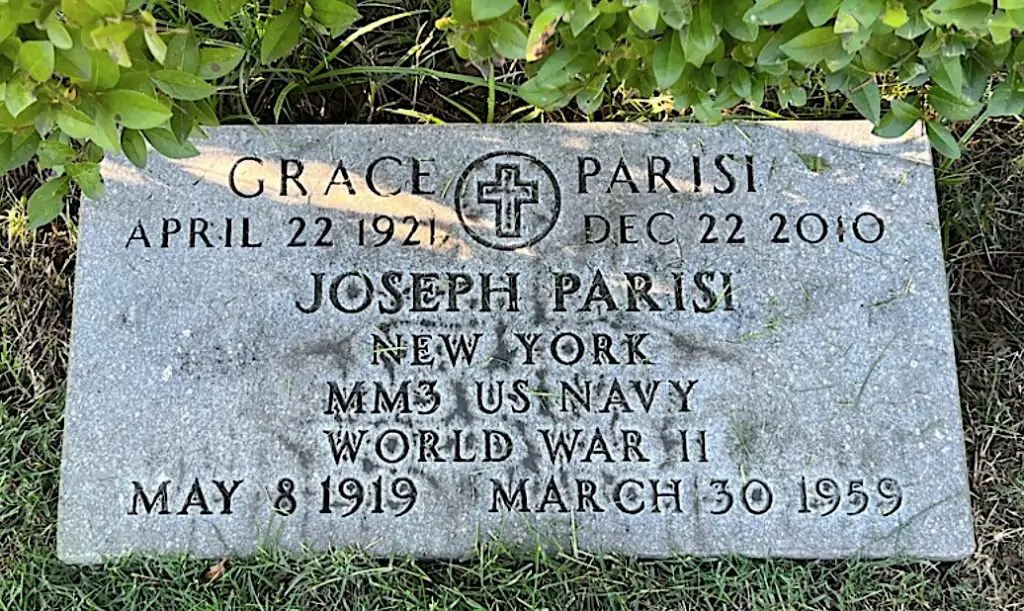
PARSONS, RALPH PETERS (1915-1948). Lieutenant, United States Army. Ralph was born in Atlanta, Georgia, to Argyll Rosse Parsons and Eleanor Hartshorn Peters Parsons. According to the 1920 federal census, Ralph lived with his older sister, Eleanor Parsons, and two younger brothers, Douglas Van Ness Parsons and William Goodman Parsons (see), in Garden City, Long Island. Two servants were also part of the household.
Ralph’s father was a founder, with Douglas Elliman, of a successful real estate firm that is still in business more than a century later. Ralph’s mother, Eleanor, according to her obituary in the Asheville Citizen-Times, was the daughter of a president of the Long Island Railroad and the granddaughter of the Atlanta, Georgia, developer who donated the land for Georgia Tech and founded Sewanee (Tennessee) University.
Ralph graduated from Princeton University in 1937 and was working for the Corn Exchange Bank in Manhattan when he registered for the draft at the age of 26, in October 1940. He was living at his parents’ home in Rye, New York, at the time. His draft card described him as 5′ 11″ in height, weighing 165 pounds, with brown hair and eyes, and a light complexion.
Sometime after he registered for the draft, Ralph married Hazel Ruth Jencks, of Rhode Island.
Parsons was inducted into the Army at the end of 1943 and served as a corporal in a field artillery unit based at Camp Campbell, Kentucky. In early 1944, his brother, Lieutenant William G. Parsons, was lost while flying a P-38 escort plane on a bombing mission in the Pacific Theater.
Ralph rose to the rank of lieutenant and was serving in Germany with the occupation forces when he was killed in a plane crash on January 6, 1948. The Parsons family saw all the men of that generation—four sons and one son-in-law—in military service during and after the war. Two sons died in the line of duty.
Ralph’s paternal grandfather was Albert Ross Parsons, who, with his wife, Alice Van Ness Parsons, built Green-Wood’s notable Van Ness Parsons tomb in the style of an Egyptian pyramid. Along with other members of his extended family, Ralph is buried next to the pyramid. Section 124, lot 30279.
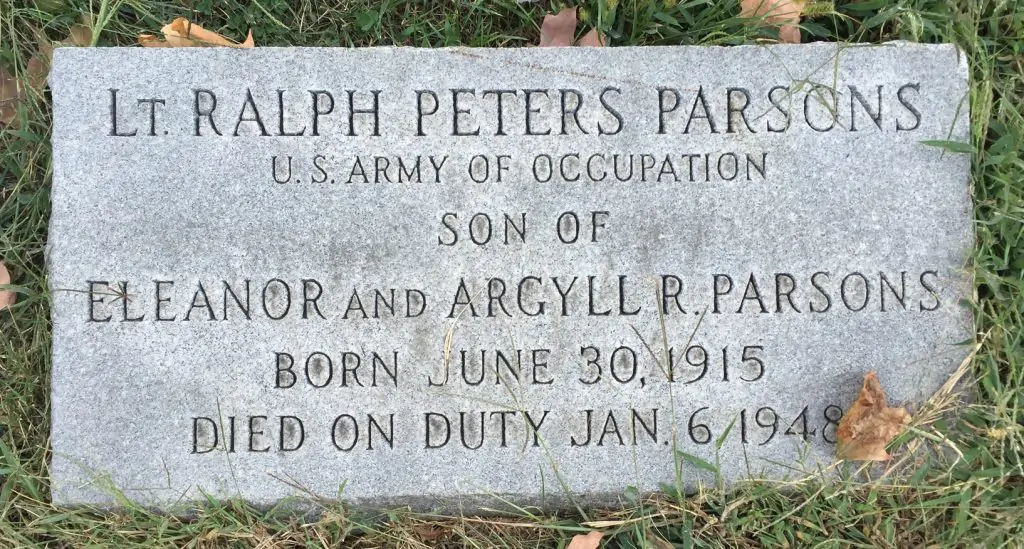
PARSONS, WILLIAM GOODMAN (1919-1944). First lieutenant, 27th Fighter Squadron, 1st Fighter Group, United States Army Air Force. William Goodman Parsons was born in Hempstead, New York, the youngest of five children to parents Eleanor H. and Argyll Ross Parsons. William’s mother and father were born in Ohio and New York, respectively. At the time of the 1920 census, the Parsons family was living at 42 Hilton Avenue in the town of Hempstead on Long Island, along with Sarah McDermott and Paula Shevlin, who were listed as servants. Argyll Parsons was a vice president in the real estate industry.
By 1930, the Parsons had moved from Long Island to Westchester and now resided on Millwood Road, in Chappaqua, New York. As recorded in the 1930 census, the family employed a butler, servant, chauffeur, and cook by the names Bernard and Anna Sudholt and John and Sophie Kracke. William attended school and his father was working as a real estate broker.
William attended Pawling High School, in Pawling, New York, graduating in 1938. William or “Willie” as he was known by many of his classmates according to the yearbook, was very active in his school’s extracurricular activities, especially sports. During his senior year, he was a captain of the school’s football team and competed on the varsity basketball team, track team, and tennis team, and was a member of the Athletic Association. William was also a literary editor for the Pawling High School yearbook, “The Scroll,” and served as a prefect as well as a member of the Dance Committee.
According to a Pawling High School publication, the “Senior Class Frame,” William spent most of his free time with his friend, Charles “Si” MacDonald. His intended occupation was listed as banker, but his classmates noted, perhaps jokingly, that his probable occupation was a professional tennis player.
In 1941, Parsons, age 21, registered for the draft in Mamaroneck, New York. He was working in the advertising field at the firm of Kenyon and Eckhardt, located at 247 Park Avenue in New York City, but still lived with his family in Westchester on Guion Road in Rye, New York. Argyll, his father, was listed as his next of kin. Information on the draft registration indicated that William had blue eyes and blond hair, and was white with a light complexion. His height and weight were not listed. In 1943, William married Betty Jo Holland in Maricopa, Arizona.
Parsons served in the United States Army Air Corps 27th Fighter Squadron, in the 1st Fighter Group. This group was the recipient of two Distinguished Unit Citations (DUCs). He held the rank of first lieutenant and his service ranged from continuous combat in North Africa to flying reconnaissance and escort missions around the Mediterranean. In August 1943, the 1st Fighter Group and its 85 other fighters conducted a fighter-bomber attack against the airfield complex at Foggia. The result was the damage or destruction of 88 German aircraft, with only two of the 65 P-38 attacking airplanes lost.
Five days later, the group flew 44 aircraft in escorting B-26 bombers to the railroad marshalling yards at Aversa, Italy, and were opposed by approximately 75 to 100 German fighter planes Outnumbered two to one, the group engaged the Luftwaffe airplanes for 40 minutes, enabling the bombers to strike their target and return to base without loss. But in doing so, the United States Army Air Force lost 13 fighter planes, with 10 pilots killed.
The 1st Fighter Group was stationed in Italy that December, now part of the recently created Fifteenth Air Force. They were based at several airfields until the base at Salsola Airfield was ready for use on January 8, 1944. One month later, on February 24, 1944, the P-38 escort plane William was flying was shot down over Austria, during a bombing mission that was targeting a Messerschmitt factory in Regensburg, Germany. Parsons was reported missing in action; his body was never found. William Parsons’s Squadron was the top-scoring unit of the 1st Fighter Group in World War II. William’s military honors include the World War II Victory Medal, Air Medal with three oak leaf clusters, Purple Heart, American Campaign Medal, Army Presidential Unit Citation, and Army Good Conduct Medal.
Though William’s body was not recovered, he is memorialized with a stone marker in a lot adjacent to the Van Ness-Parsons mausoleum in Green-Wood. The Van Ness-Parsons mausoleum, in the form of an Egyptian pyramid, is one of the most photographed mausolea in the cemetery. Entombed there are William’s grandfather, Albert Ross Parsons, Albert’s wife, Alice Schuyler Van Ness; Albert’s mother-in-law, Deborah Van Ness; Albert’s daughter and son-in-law, Viola and Raymond Griffin; and Albert’s grandson, Donald C Vaughan, Jr.
In the portion of the lot area next to the mausoleum, there are stones memorializing William and his brother, Ralph Peters Parsons (see), as well as two of William’s uncles and one of his cousins. William’s father, Argyll Parsons, is buried in Asheville, North Carolina. Section 124, lots 30729-30732.
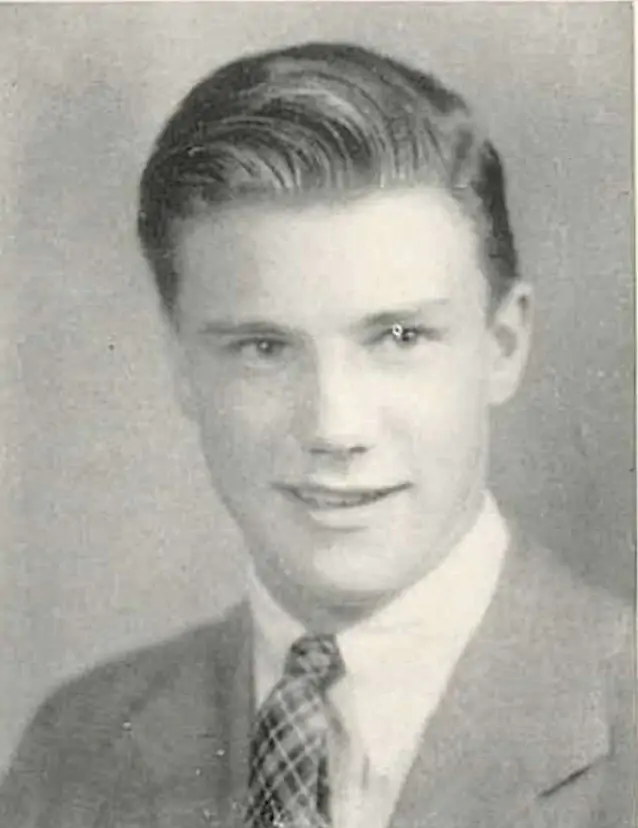
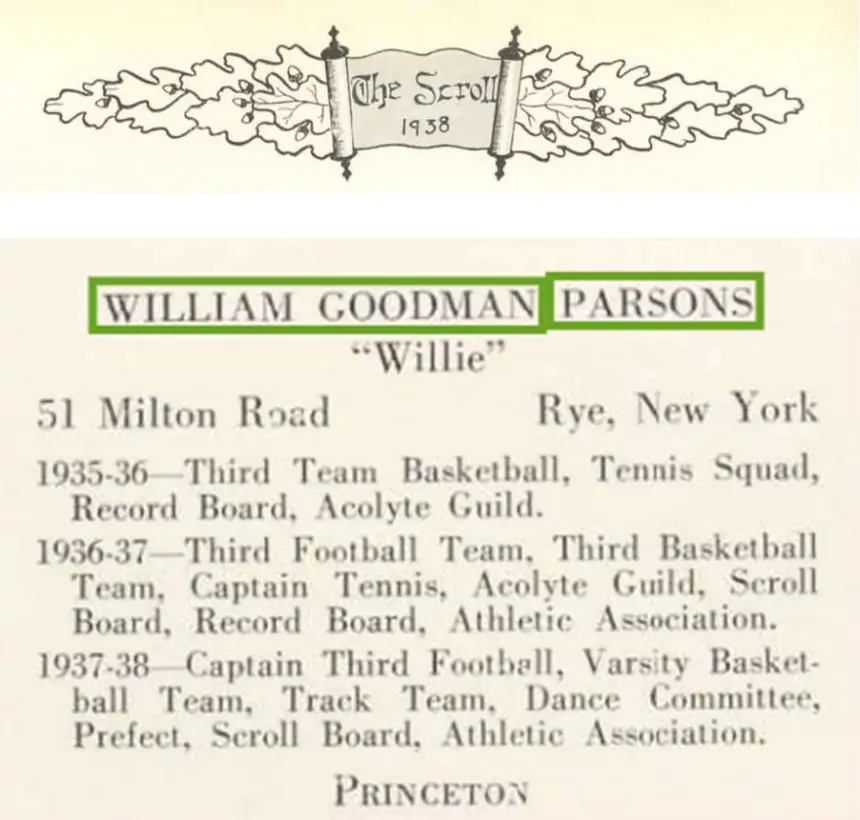
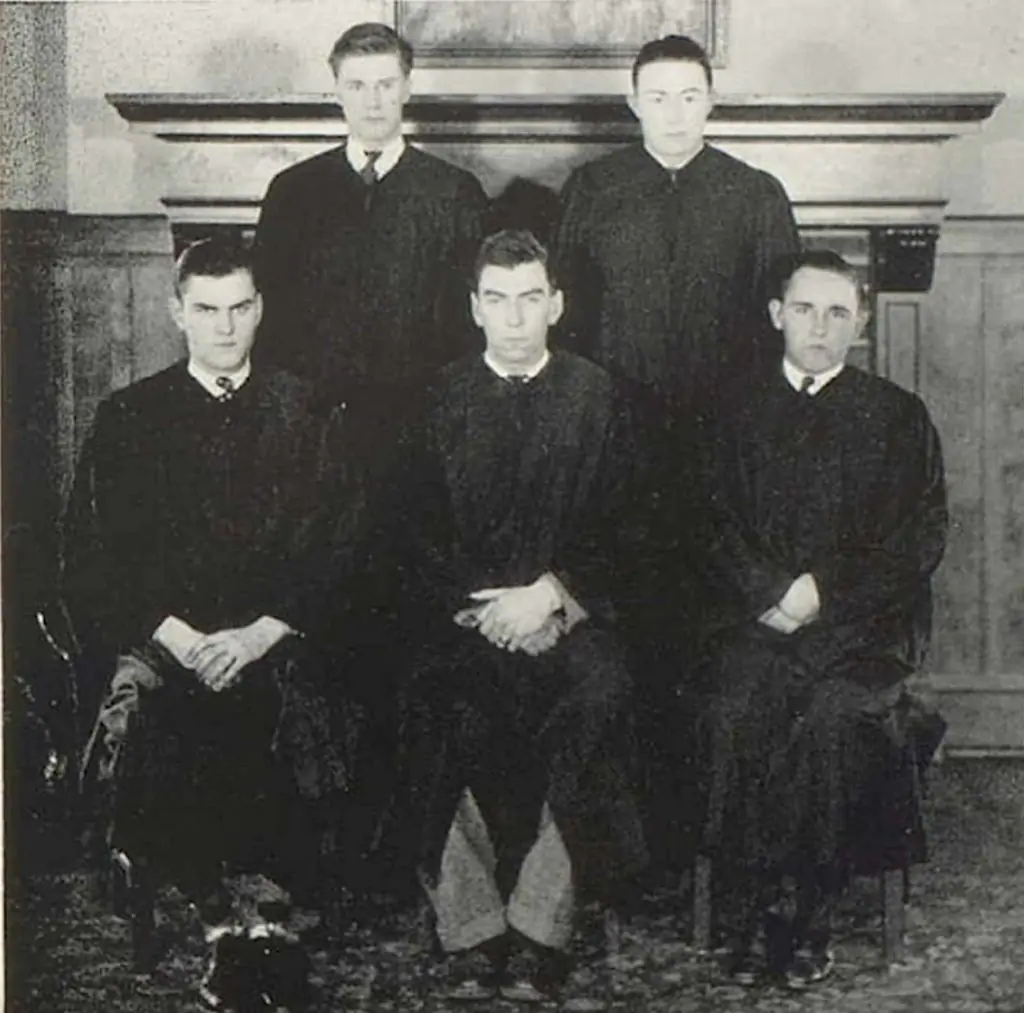
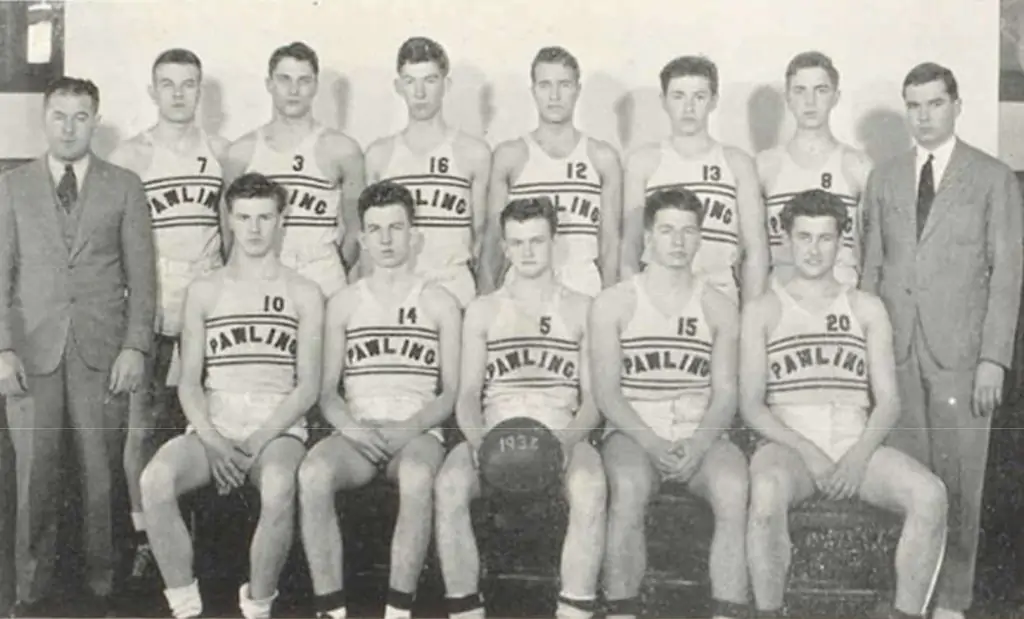
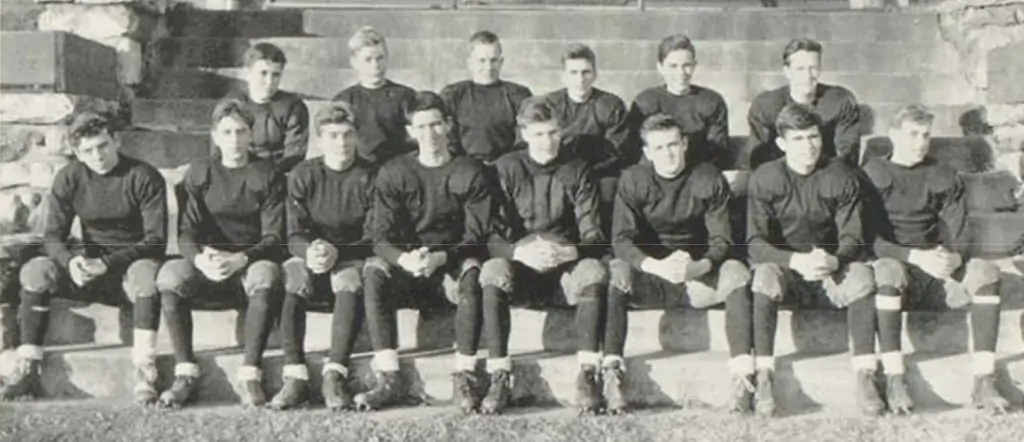
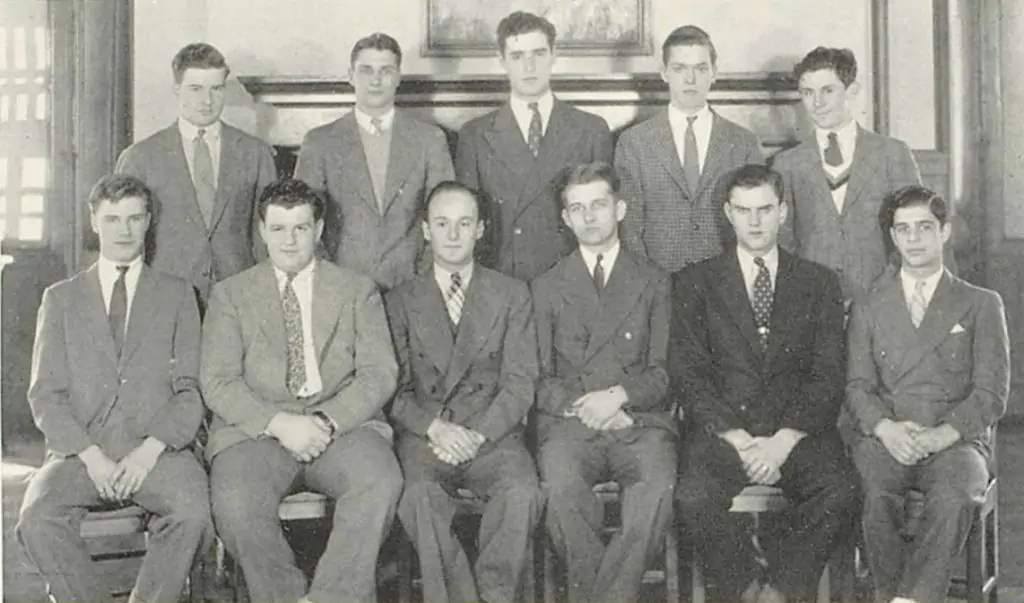
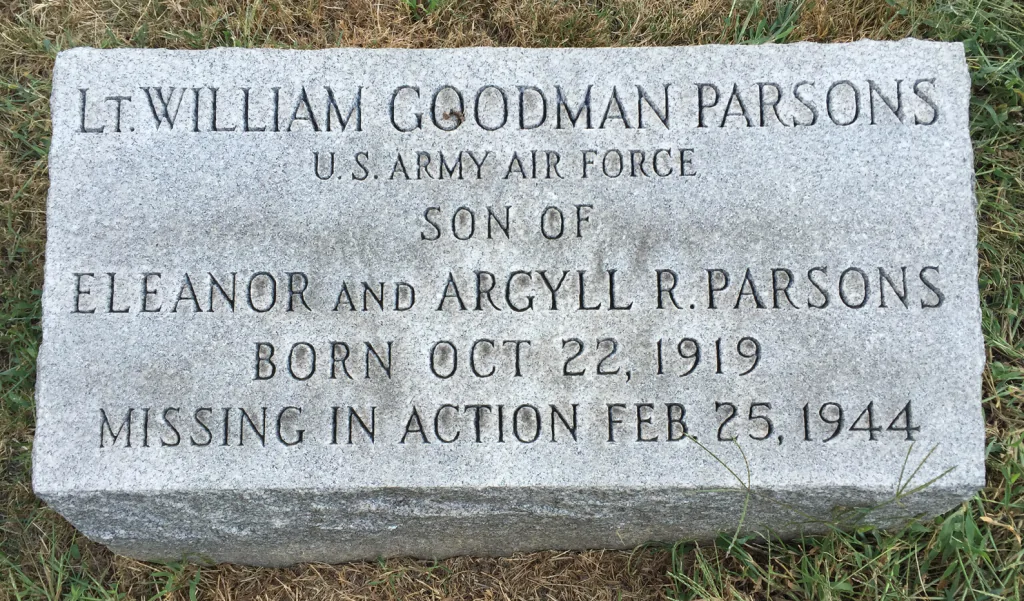
PASTORE, JOSEPH (or GIUSEPPE) ANTHONY (1916-2009). Corporal, 187th Field Artillery, United States Army. Born in Brooklyn, the United States birth index records his first name as Giuseppe. Records from the 1920 Kings County federal census report that he resided on 21st Street with his parents, Nicholas and Josephine, and a younger sister, Louise. Both parents were born in Italy and his father was a tailor in a factory. Pastore’s first name is recorded there as Joseph. The 1930 census relates that he and his parents still resided at 156 21st Street and his father was a tailor in a tailor shop. Pastore was thirteen years old, attended school, and was the oldest of six siblings. As per the 1940 census, Pastore was twenty-three years old, had completed four years of high school, and worked as a laborer in a bottle cap factory. His parents and their eight children, namely, Joseph, Louise (recorded as Luisa), Thomas, Michael (see), Celeste, Nicholas Jr., Eugene, and Anthony resided at 595 3rd Avenue.
His U.S. World War II enlisted men’s card records his name as Joseph A., and his enlistment as on June 12, 1939, in Company H, 14th Infantry. His residence was 733 46th Street, Brooklyn. The card also reflects that on February 3, 1941, he enlisted in the 187th Field Artillery. His draft card is dated February 3, 1941. He printed his name as “Joseph Anthony Pastore” but signed it as “Joseph A. Pastore.” His residence was 595 3rd Avenue, and his mother was listed as the contact person. His employer was Ferdinand Gutman & Company, located on 14th Avenue between 36th and 37th Streets in Brooklyn. The registrar’s report, dated October 16, 1940, notes he was white, 5′ 5½” tall, weighed 136 pounds, had blue eyes and brown hair, and a dark complexion. Pastore’s World War II Army enlistment record indicates that he was single and his civil occupation was plasterer. His rank was private first class, and he was assigned to the field artillery. As per his obituary published in the Staten Island Advance on April 25, 2009, he achieved the rank of corporal, served in the war from 1941 to 1945, and participated in the Battle of the Bulge. The Harry S. Truman Library and Museum website provides detailed information about the Battle of the Bulge with access to a map (https://www.trumanlibrary.gov/maps/m639-map-187th-field-artillery-group) illustrating the route of the 187th Field Artillery. He separated from active service on September 28, 1945.
According to the marriage license records, Pastore married Helen Dominski on July 5, 1941. Pastore continued his military service after the war by serving in the Army National Guard from February 1949 to August 1950. NPastorePenrod posted a copy of Joseph’s Staten Island Advance obituary on Ancestry.com on April 27, 2009. The obituary gives insight to Pastore’s life after the war: “A Brooklyn native, Mr. Pastore moved to Huguenot in 1977…Mr. Pastore was a letter carrier along Brooklyn routes for 38 years. After retiring in 1972, he worked another 10 years as a security guard at U.S. Trust in Manhattan. He was a member of the Knights of Columbus and the Veterans of Foreign Wars. Mr. Pastore enjoyed reading, solving crossword puzzles and visiting Atlantic City.” Section O, lot 42391, grave 1.

PASTORE, MICHAEL J. (1923-1998). Rank unknown, unit unknown, United States Army. Born in Brooklyn, the 1925 New York State census reports that the one-year-old Pastore lived with his parents, Nicholas and Josephine, and his three siblings, Joseph (see), Louisa, and Gaetano. His parents were from Italy and his father worked as a tailor. The family resided at 213 22nd Street, Brooklyn. The census of 1930 records that Pastore and his family moved to 156 21st Street in Brooklyn. With the addition of Celeste and Nicholas, Jr., the family grew to six children. His brother, Gaetano, was listed as Thomas. As per the 1940 federal census, the family’s residence was 595 3rd Avenue, Brooklyn. His parents had had two more children, Eugene and Anthony. The census notes that his father’s occupation was a tailor and three of his siblings were working – Joseph in a bottle cap factory, Louisa (listed as Luisa) in a flower factory, and Thomas in an undesignated factory.
Michael Pastore registered for the draft on June 30, 1942, at the age of eighteen. His draft registration card details that he lived at the 3rd Avenue address, and he named his mother as the contact person. His employer was Paulson Electric Beauty Repair Company located at 48 Smith Street, Brooklyn. His registrar’s report describes him as white, 5′ 3½” tall, 135 pounds, with brown eyes and hair, and a dark complexion. It also notes he had a scar on his right leg. In an article from the Brooklyn Daily Eagle, dated November 4, 1951, Pastore and other veterans were thanked for making an event for the Army & Navy Union a success. Section 106, lot 36368, grave 2.
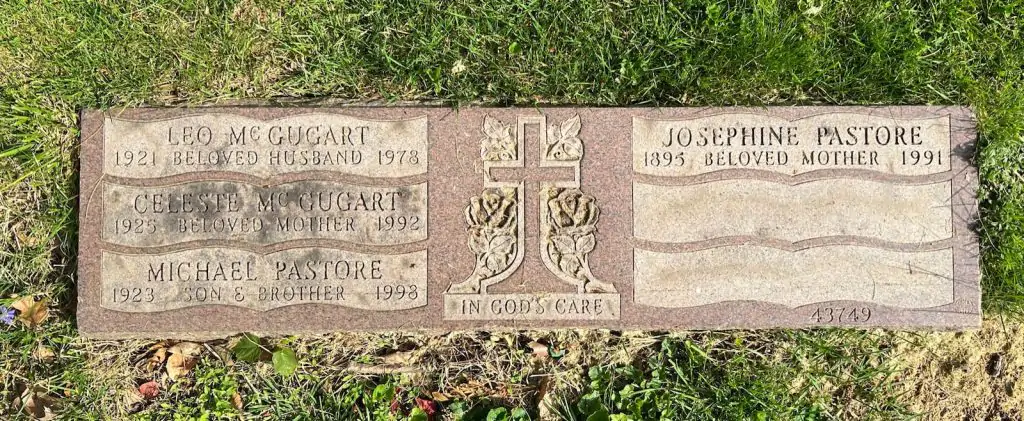
PAYNE, JR., ROBERT W. (1927-1999). Sergeant, United States Army. Robert Payne was born in Brooklyn to Robert, a brokerage clerk, and Vera Payne. According to the 1930 census, the family included younger brother Jack. By the time of the 1940 census, the family had moved to West 107th Street in Manhattan.
Payne did not become eligible for the draft until June, 1945, by which time the war was almost at an end. His draft card describes him as 6′ 4″ tall, 180 pounds, with blue eyes and blond hair, living on Cortelyou Road in Brooklyn. He lists his grandmother, Mrs. Lavinia Payne of Dahill Road, as his contact, and his employer as Antin Press of 82 Beekman Street in Manhattan.
According to his daughter, Payne was in the very last draft of World War II. “While his troop transport was going through the Panama Canal it developed a serious leak, leaving the vessel not seaworthy. It was repaired on the Pacific side of the canal.” In August 1945, while the ship was being repaired, two atomic bombs were dropped on Japan, ending the war.
“You don’t get sent home, though,” continued his daughter. “You serve out your time. Dad guarded Japanese prisoners of war in New Guinea. He finished his hitch in California, where he was on “The Rock” (Alcatraz) during the [May 1946] prison riot.”
On February 11, 1956, Robert married Anna Hughes of Brooklyn. Together they raised four children, and by the 1990s were living at the same Dahill Road address given for Robert Payne’s family on his draft card. He worked for 15 years at the Bayside Fuel Company. He is buried next to his wife, Anna. Section 168, lot 39160, grave 2.
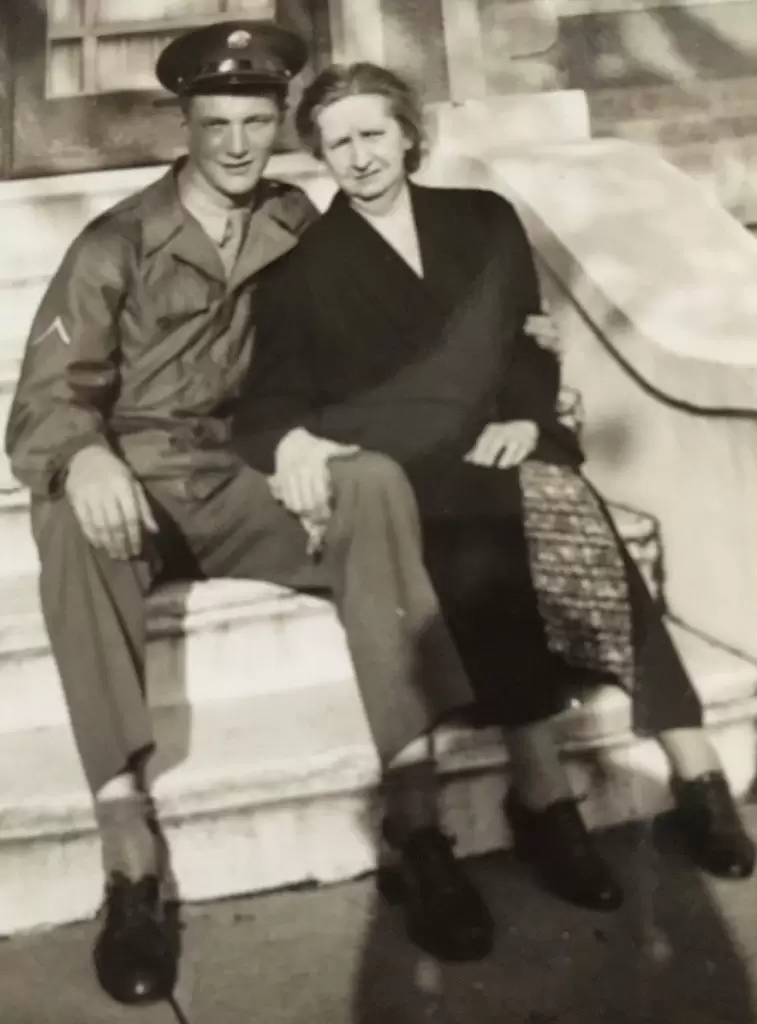
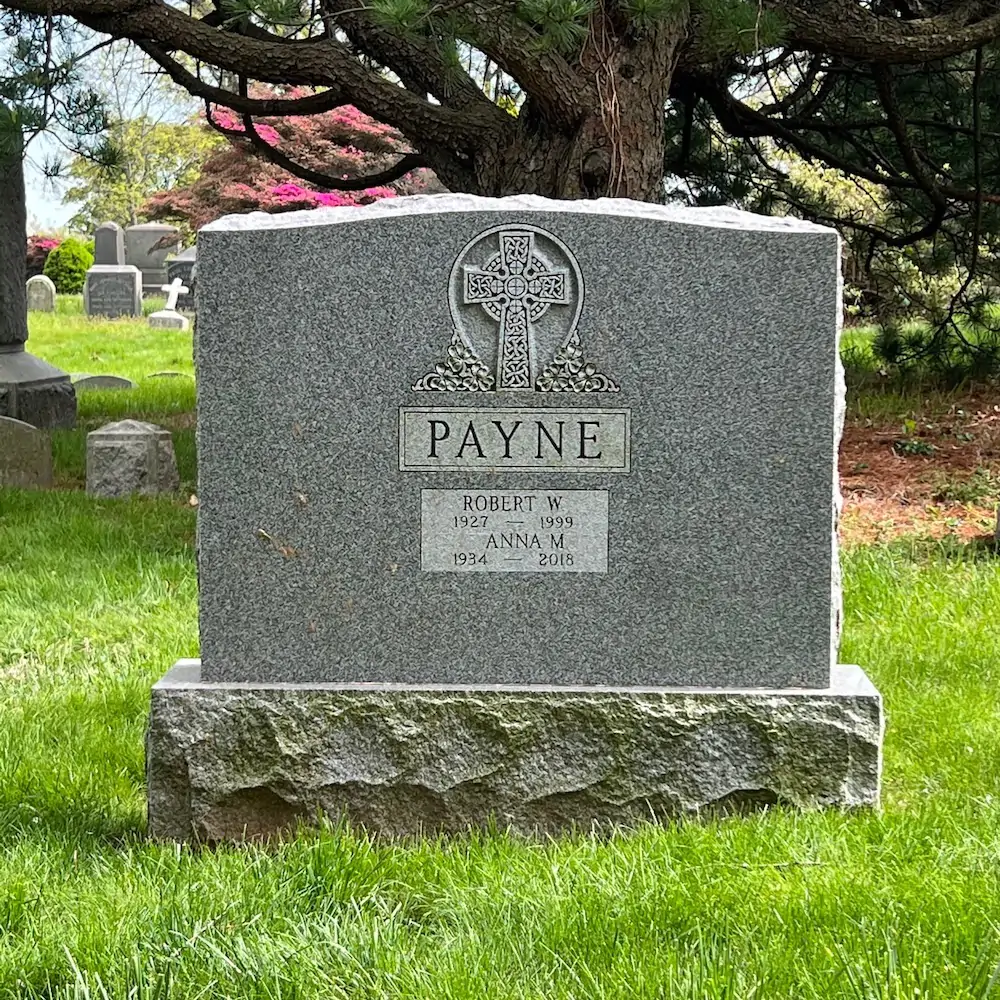
PEARSALL, SAMUEL II (1920-1944). First lieutenant, 301st Bombardment Group (Heavy), 353rd Bomber Squadron, United States Army Air Force. Born in Brooklyn, four-year-old Samuel was living in Walton, New York, with his parents and two younger sisters at the time of the 1925 New York State census. His father, George M. Pearsall, was working as a physicist. By 1930, according to that year’s federal census, nine-year-old Samuel, his mother and two sisters were living in Hamilton, New York, without his father; George Pearsall had apparently moved back into his own parents’ home in Brooklyn.
Pearsall attended college at the Lowell Textile Institute in Lowell, Massachusetts (now UMass Lowell). In the 1940 federal census, he was living as a lodger in a house with other young men attending the college. He is listed as part of the class of 1942 in “The Pickout,” the 1940 yearbook of the Lowell Textile Institute.
In February, 1942, while still a student, Samuel registered for the draft in Hamilton, New York. He listed as his permanent contact his father, George M. Pearsall, who was then living in Manhattan. Samuel was described as 5′ 11″ in height, weighing 154 pounds, with blue eyes, brown hair, and a light complexion.
In the same month, the new 301st Bombardment Group was activated and assigned the four-engine, B-17 Flying Fortresses. That summer, the 301st was stationed in England, from which it would fly combat missions over Europe. By November, the group had moved to North Africa with the Twelfth Air Force, and from those bases, bombed enemy industrial targets in Tunisia, Sicily, and Sardinia, as well as Axis shipping in the Mediterranean.
In September 1943, Pearsall married 18-year-old May Simmons Lord, in El Paso, Texas, According to their marriage license, the couple resided at Biggs Field, an Army air base near Fort Bliss. May served in the WAVES (Women’s Naval Reserve). It seems likely that marriage may have occurred then because Samuel had recently finished training and was soon to ship out as part of a dangerous assignment to a replacement crew for the 301st.
On June 23, 1944, Pearsall’s plane crashed into the Adriatic Sea off Dulcigno, Yugoslavia, and he was killed. He was 23 years old. Samuel, along with his crew, was awarded the Air Medal with two oak leaf clusters, as well as the Purple Heart. He is buried at sea in his aircraft.
Pearsall’s name is listed in the Tablets of the Missing in the Florence American Cemetery, Via Cassia, Italy. A cenotaph memorializing him is at Green-Wood in the Martin-Pearsall family plot. Section 150, lot 30463.
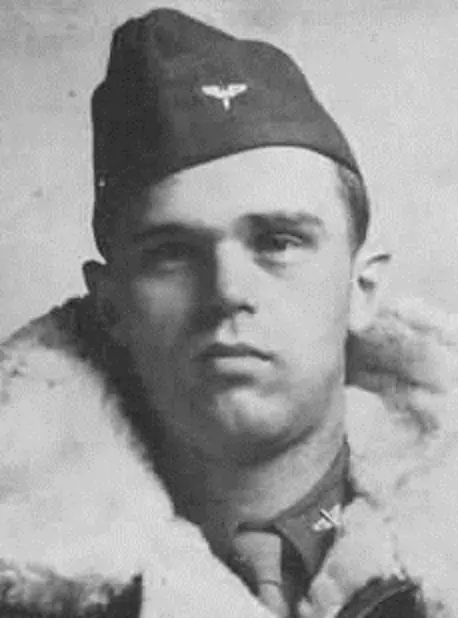
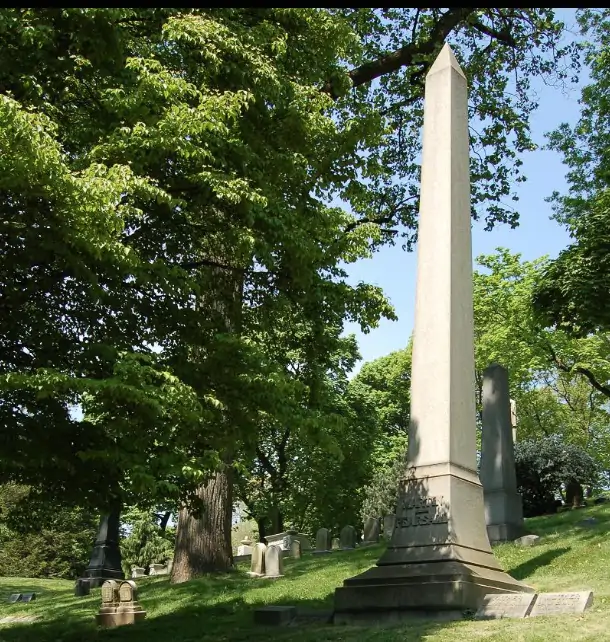
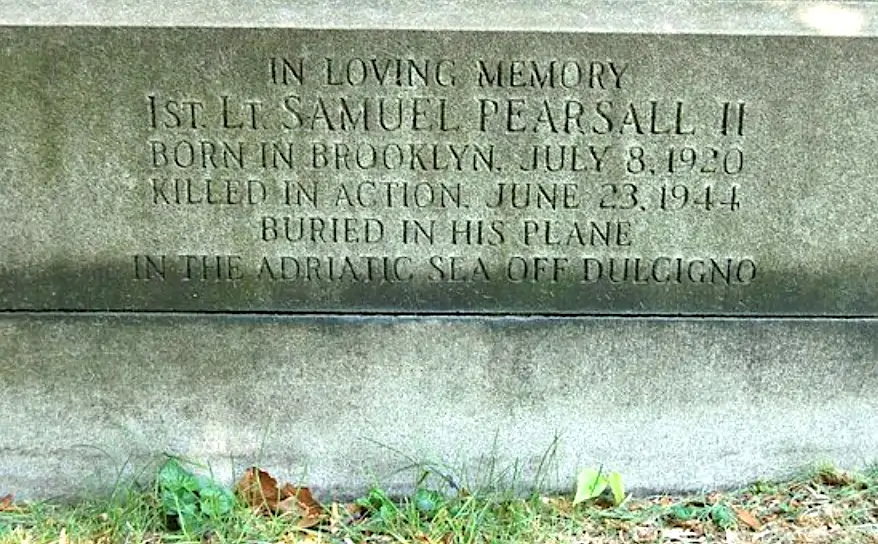
PEARSALL, JR., WILLARD HALL (1923-2009). Private, United States Army Air Force Weather Service. Pearsall was born in Brooklyn. The 1925 New York State census documents that his family owned the house at 1097 East 17th Street. His father, Willard, was the head of the household and a bank president. His mother, Marilla, was a housewife. Also residing in the household were Pearsall’s maternal grandmother, Mary Pratt, and a servant. As per the 1930 federal census, the Pearsall family continued to live in their East 17th Street home. The census documents that his parents were born in New York. His maternal grandmother, Mary, is listed as head of household and was born in Alabama. The family retained a servant. The couple now have two sons: Willard Jr. and Gilbert. According to the 1940 federal census, the family still resided on East 17th Street. His father is documented as an executive at a bank and, once again, is listed as head of household. Residing in the house were his grandmother, a maid, Willard (16 years old), Gilbert (11 years old), and a third son, Otis (7 years old).
Pearsall’s World War II draft registration card details that he was 18 years old; his father was named as next of kin. He was unemployed, but attending Williams College in Williamstown, Massachusetts. The registrar’s report, dated June 29, 1942, describes him as 6′ 2″ and 165 pounds with blue eyes, blond hair, and light complexion.
As per his World War II enlistment record, Pearsall enlisted on August 28, 1942. He entered the Army as a private and had completed two years of college. According to his obituary in The Florida Times-Union, he served three years in the Army Air Force Weather Service. In the history section of its fact sheet, the Air Force Weather Agency states: “Weather and warfare have been linked together throughout our history… Weather services have been vitally important during times of war and contingencies…The World War II-era accomplishments include critical weather forecasts for the D-Day invasion and first atomic bomb mission.” His brother, Otis, shares that he was stationed in the South Pacific, and specifically on Iwo Jima. According to the Department of Veterans Affairs BIRLS (Beneficiary Identification and Records Locator Subsystem) Death Index, Willard was discharged on February 22, 1946. Since Pearsall served from August 1942 through February 1946, he may have been on Iwo Jima during the military campaign that took place between February 16 to March 16 of 1945. According to Chapter 11, entitled “The AAF Weather Service” from The Army Air Forces in World War II:
Although weather could significantly affect a variety of military operations and was especially important to the success of an amphibious landing, weather had its greatest continuing importance for air operations….In the Pacific, as in Europe, combat commanders found it necessary to supplement normal weather services with special reconnaissance flights to determine more exactly weather conditions over specific target areas…Activated in August 1944 and fully in place by the spring with an advanced echelon on Iwo Jima, the unit was redesignated the 55th Reconnaissance Squadron (VLR) Weather in June 1945.
After the war, Pearsall married Paula Mae Miller on January 31, 1948. As per an announcement in the February 1, 1948 issue of the Brooklyn Daily Eagle, the ceremony took place at St. John’s Episcopal Church. Both of Willard’s brothers were in the wedding party: Gilbert was the best man and Otis, an usher. The 1950 federal census documents the couple was living in Jacksonville, Florida. Willard was a sales administrator for a fertilizer manufacturing company and his wife was a service representative at a telephone company. The November 30, 1952 issue of the Brooklyn Daily Eagle reports that Willard was an usher at his brother Gilbert’s marriage.
His obituary from The Florida Times-Union details his life:
Born in Brooklyn, NY, he graduated from Poly Prep Country Day School, Williams College and Harvard Business School. His years at Williams were interrupted during WW II when he served for three years in the Army Air force Weather Service in the Pacific arena. In 1953, he began a forty-five-year career with Florida Machine and Foundry Company, a Jacksonville based steel foundry as Chief Accountant and later became Chairman and Chief Executive Officer. In 1968, he participated in the organization of The State Bank of Arlington in Jacksonville, which later became a subsidiary of SunTrust Banks. He served as a director of the bank and eventually as a Director Emeritus of SunTrust North Florida for a combined thirty-nine years. He was a member of Financial Executives International for forty years, serving a term as President of the Northern Florida Chapter. He was an organizing Director of the Jacksonville Chapter of the National Association of Accountants and was a past president of the Harvard Club of Jacksonville. He was an aficionado of the 1920’s through 1940’s jazz music and was a lifelong passionate Dodger fan. Throughout his life, he treasured the summers spent with family and friends in Bridgehampton, New York. He was an exceptional and dedicated husband, father, brother and uncle.
At the time of his death, he was survived by his wife of 61 years, his daughters, Marilla and Katharine, and his son, Willard. Section 47, lot 13097.
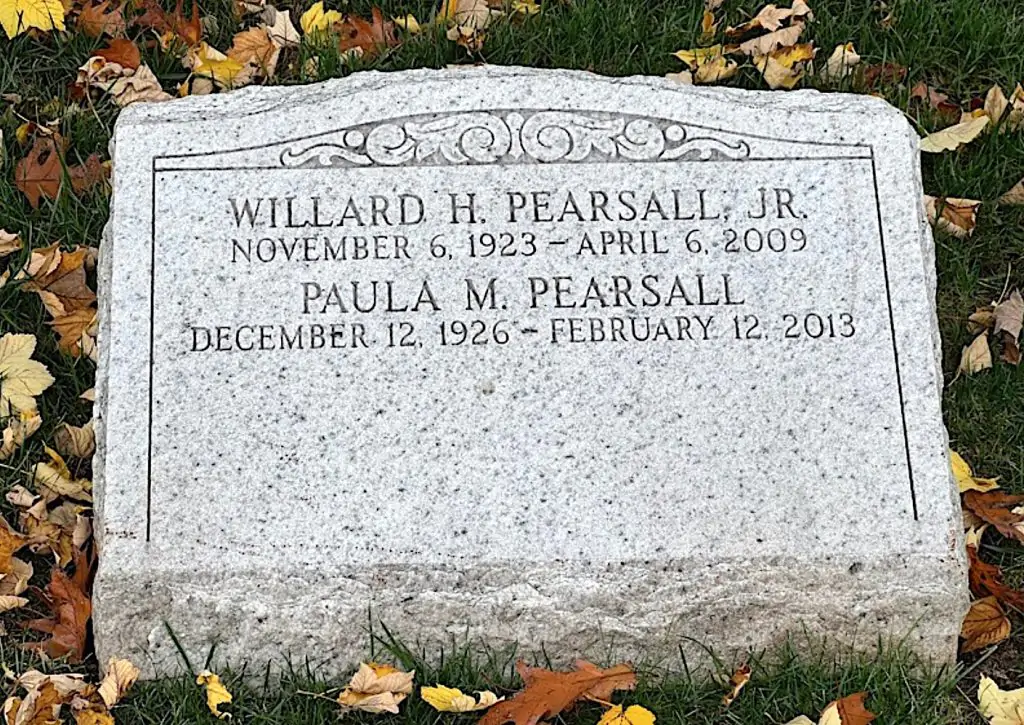
PECORA, JR., LOUIS WILLIAM (1926-2000). Sergeant, 3rd Reconnaissance Troop, United States Army. Louis Pecora Jr. was born in Brooklyn to Louise Lotito and Louis Pecora Sr. According to the 1930 federal census, the son was living with his divorced father, who was then 26 years old and worked as a plumbing contractor. Also living in the same Brooklyn household on Henry Street were Louis’s paternal grandparents, Ignazio, age 59, and Carmella, age 57. Ignazio was employed as a watchman and rented their home for $25 per month, while Carmella was a housekeeper. Their mother tongue was Italian, and neither was able to speak, read, or write English. Louis Sr.’s sister, Nancy, age 19, also lived with them and was employed as a doll dresser. Both siblings attended schools and could speak and were literate in English. All family members were born in Italy, except for Louis Jr.
Louis’s parents were divorced. His father, Louis Sr., was born on June 21, 1904, in Italy, and immigrated to the United States from Palermo, Italy, on November 24, 1906. His first wife – and Louis Jr.’s mother – was Louise Lotito, born in Manhattan, New York, on March 13, 1903. Their marriage license was dated August 15, 1925.
After Louis Sr. and Louise were divorced, Louis Sr. married Josephine Nunziato, who was born on September 22, 1917, in New York. Their marriage license is dated April 11, 1942. There was a boy born of that marriage, Gerald Pecora, in Brooklyn on February 3, 1943, and, later, in the early 1950s, a girl, Joan. Louis Sr. died on September 26, 1983, at age 79 and Josephine passed away on June 2, 2005, both in West Babylon, NY.
Louise Lotito, Louis Jr.’s mother, was born in Manhattan on March 13, 1903. She died in December 1978, and is buried in Green-Wood, along with her second husband – and Louis’s stepfather – Frederick A. Reeve, who was born in 1905 in England and died in March 1987 in Brooklyn. They married in Brooklyn on February 28, 1935. They are interred in Section 169, lot 42728, grave N1 for Louise and R1 for Frederick.
Louis Jr. was living at 32 Seeley Street, Brooklyn, according to the 1940 census, with Ignazio Pecora, his paternal grandfather, who was recently widowed. Ignazio, as head of the house, rented their home for $40 per month. At that time, he listed no occupation and had filed his papers for citizenship. Louis Jr.’s father, Louis Sr., was also living with the family, had not yet remarried, and had his own plumbing business. Louis Jr., at 13 years of age, was attending school and had completed 7th grade. Ignazio died at age 75 on December 15, 1945, in Brooklyn.
Pecora’s draft registration card, filed on August 16, 1944, shows Louis, then age 18, as 5′ 11″ tall, weighing 148 pounds, with a dark complexion, gray eyes, and brown hair, living at 862 41st Street, Brooklyn. He listed his father as his contact, at the same address, and indicated that he was working for Louis Pecora Plumbing at 213 Union Street in Brooklyn (likely his father’s business).
Louis enlisted in the Army on October 10, 1944. He rose to the rank of sergeant in the 3rd Reconnaissance Troop, serving in France and the Rhineland, as well as in Central Europe, including Germany and Austria. He received the Army of Occupation Medal, European- African-Middle Eastern Campaign Medal, the Good Conduct Medal, a Purple Heart decoration, and the WWII Victory Medal. Louis was discharged on August 8, 1946.
The 1950 federal census shows that Louis was then living with his mother, Louise, and his stepfather, Frederick Reeve, who was head of household, not an American citizen, and working as a tin smith for a chemical company, for a salary of $4,100 per year. Also listed at the address in Brooklyn was John Lotito and Madeline Lotito, Louise’s father and her sister.
In 1958, a marriage license was issued to Louis, then 31 years old, and Camille Cioffi, age 25, in Brooklyn, and they were married on February 8, 1958. This was Louis’s second marriage. Louis and Camille had a daughter, Susan M. Pecora, on February 2, 1965, in Brooklyn.
Pecora, who received a G.E.D., was employed by the United States Postal Service for 26 years. On September 24, 1983, Louis’s father, Louis Sr., passed away in Babylon, New York, at age 79. Louis Jr. died at the same age on January 5, 2000. Section 169, lot 42728, grave 2.
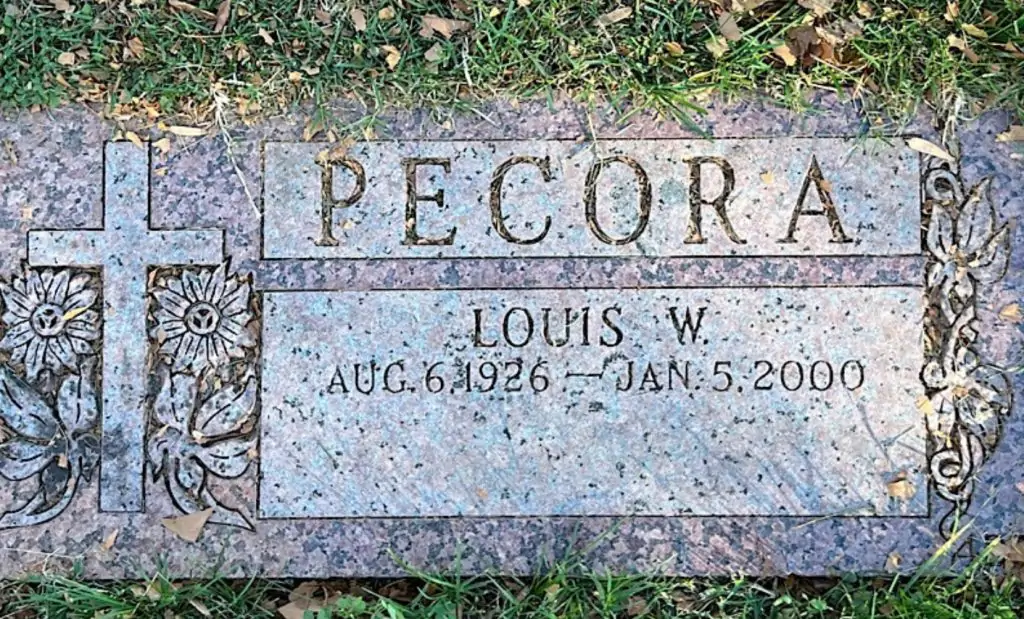
PENNINO, ANTHONY (or ANTONIO) PATSY (1925-2017). Petty officer 3rd class, United States Navy. Birth records indicate that he was born in Brooklyn and was given the birth name, Antonio. The New York State census, recorded in June 1925, about five months before Anthony Pennino’s birth, shows his father, Andrew, employed as a lantern maker and 25 years of age. He had been in the United States for 12 years and is listed as an alien. Anthony’s mother, Josephine née Ciarametaro, was a 25-year-old housekeeper, and an alien as well. They had a one-year-old daughter, Rose. Josephine’s sister Elizabeth, who lived with the family, was 31 years old and employed as a rose maker.
Andrew Pennino’s March 14, 1932 Petition for United States Citizenship shows that he then lived at 417 Clinton Street with his wife and their four children: Rose, Anthony, Vincent, and Joseph, all born in Brooklyn. He was born in Palermo, Italy, as Andrea Pennino on July 29, 1898. Per their own birth records, Vincent’s name at birth was Vincenza and Joseph’s was Giuseppe, while Anthony’s, as stated above, was Antonio. Josephine was also born in Palermo.
Anthony Pennino registered for the draft on November 22, 1943. According to his draft registration card, he was living at 417 Clinton Street and was employed by the Motor Express Company. His mother Josephine, at the same address, is listed as his contact. He was 5′ 8″ in height, weighed 138 pounds, and was light-complexioned.
He enlisted in the United States Navy, on June 6, 1944, and was received onboard the USS Carondelet as a seaman 2nd class. The Carondelet spent its wartime service entirely in the Southwest Pacific and Philippines and Anthony served on the ship through at least part of 1946, where he is listed as a seaman 1st class. His highest rank was petty officer 3rd class.
On March 26, 1949, a marriage license was issued to Anthony, then age 24, and Ida C. Deselich, age 22, in Brooklyn, and they were married on April 24, 1949. They are shown on April 4th in the 1950 federal census living with Ida’s parents, her brother Albert, age 24, and her cousins at 283 President Street in Brooklyn. Anthony was then employed as an automobile mechanic and earned $4,000 that past year. He had completed three years of high school. Their daughter, Diane (Rando), was born in Brooklyn when Anthony was 31 years old, and Ida was 30. They had four children in all. Later on, Anthony served as a New York City police officer for 21 years.
Anthony’s father, Andrew, died in Brooklyn, on September 22, 1970, at the age of 72 and his mother, Josephine, passed away, also in Brooklyn, at 80 years old, on December 16, 1979. It appears that there had been three other children born to them after Joseph: Thomas, Vivian, and Rita.
Pennino continued to live in Brooklyn, with his address in 1992 as 7116 10th Avenue. However, by 1994 he had moved to Cochecton, New York, near the Pennsylvania border, and lived there in his later years. His wife Ida (or Eda) died at the age of 89, on April 30, 2017, and Anthony passed away that year on December 21st, at 92 years of age. They are interred together at Green-Wood. Hillside Mausoleum Phase III, section 3149E.
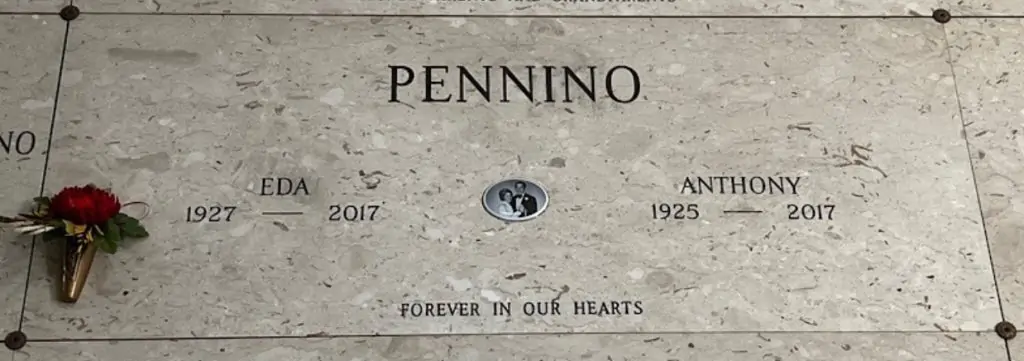
PERGOLIZZI, JOHN (1912-1944). Private first class, 60th Engineer Combat Battalion, Company B, 35th Division, United States Army. John Pergolizzi was born in New York to John Pergolizzi, Sr., and Anna Pergolizzi, immigrants from Italy. By the time of the 1930 federal census, seventeen-year-old John was living with his parents, three sisters, and a brother in Brooklyn, and working as a helper in a machine shop. According to a 1948 notice in the Brooklyn Eagle, he graduated from Manual Training High School (now John Jay Educational Campus).
John married Helen E. Aanouse on July 12, 1934, according to the state marriage index. He registered for the draft on October 16, 1942. His draft card records Anchor Lumber, at 5th Avenue and 38th Street, as his employer.
Pergolizzi was inducted into the United States Army in February 1943, according to a 1948 notice in the Brooklyn Eagle. By the autumn of 1943, he was overseas with Company B, 60th Engineer Combat Battalion, 35th Division, 3rd Army, in the European Theater. An engineer combat battalion is responsible for construction services, including laying and clearing mine fields, building pontoon bridges, and repairing roads, to support front line troops. It was also required to fight as infantry soldiers when necessary.
Pergolizzi’s platoon served in France as part of the Allied advance across Europe in 1944. On the night of October 10, his unit was north of the town of Ajoncourt, laying an anti-tank mine field, when an unexplained series of explosions blew up the mines in the field as well as the trucks carrying the mines. Forty-seven soldiers died; John Pergolizzi was among them.
On December 6, 1944, the battalion commander wrote to his father, describing the incident. He stated that John had been buried at a United States Army cemetery in Lorraine, France. There now seems to be no record of that burial, according to his granddaughter.
But on December 12, 1948, a notice in the Brooklyn Eagle announced a memorial service conducted by the local American Legion post for Pergolizzi, “one of the European war dead recently returned to Brooklyn,” as well as a requiem mass the next day at St. John’s Roman Catholic Church, followed by private interment. Soon after, John’s father applied for a military veteran’s headstone for his son’s grave in Green-Wood. Section H, lot 37867, grave 1.
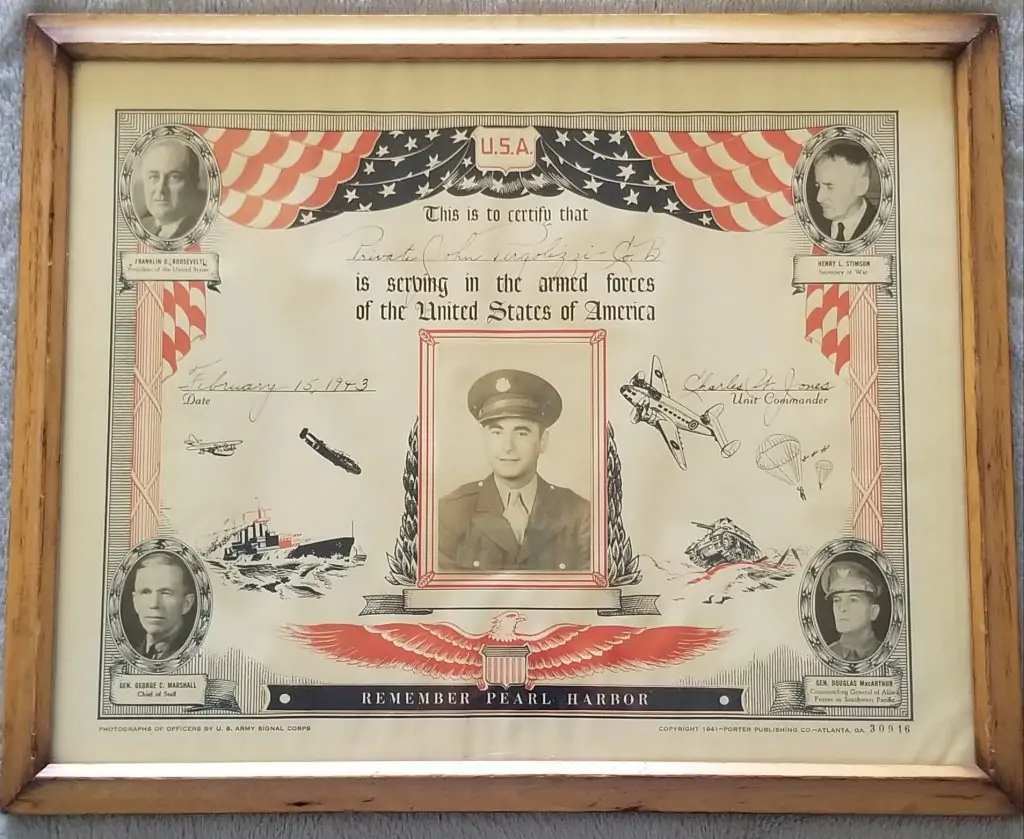
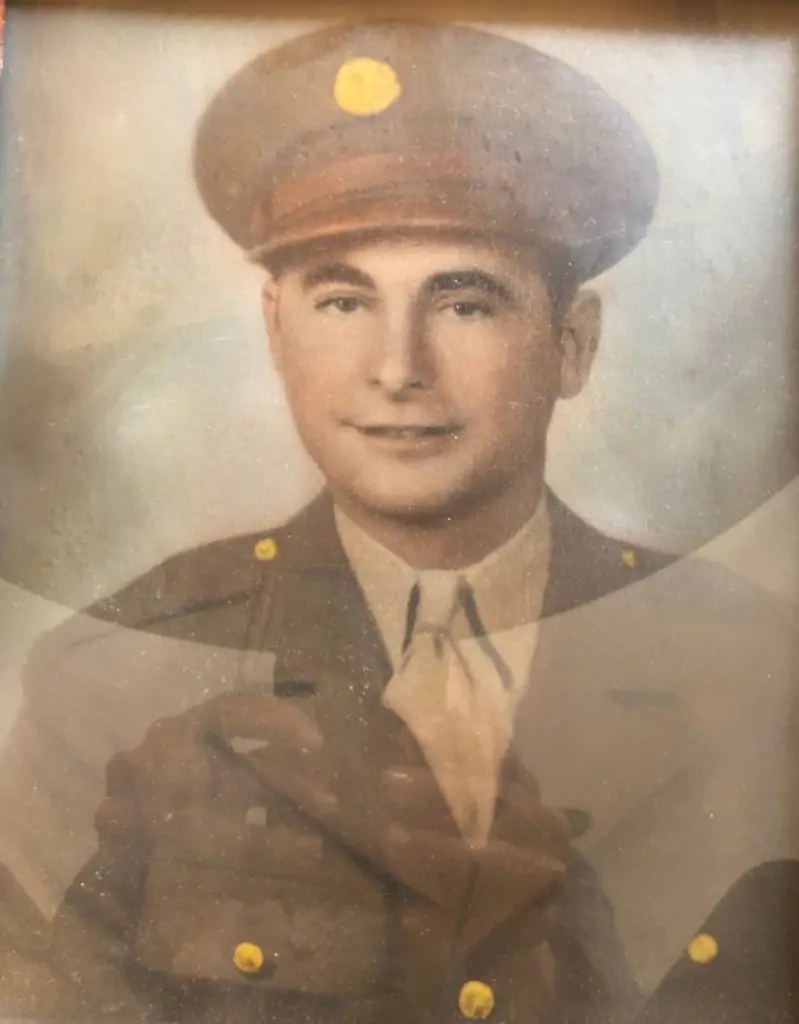
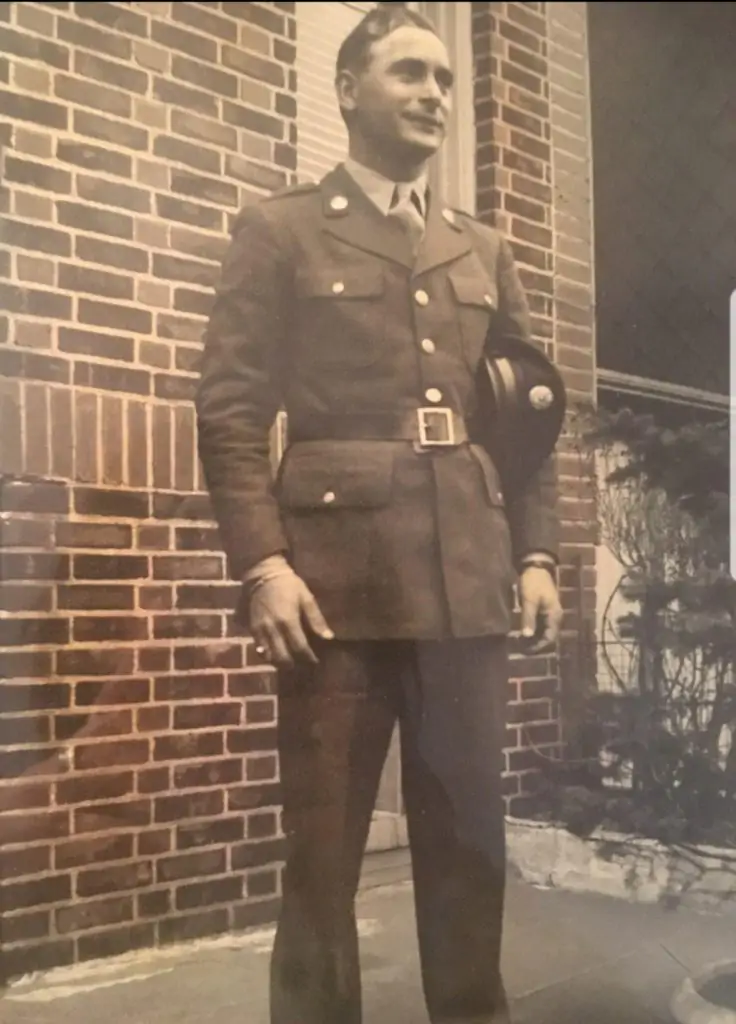
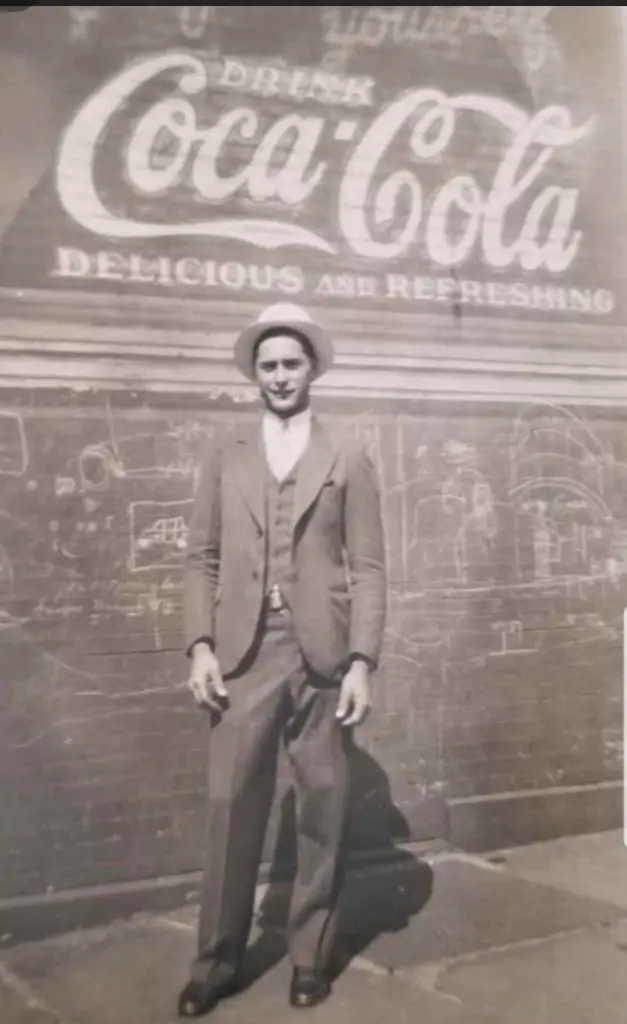
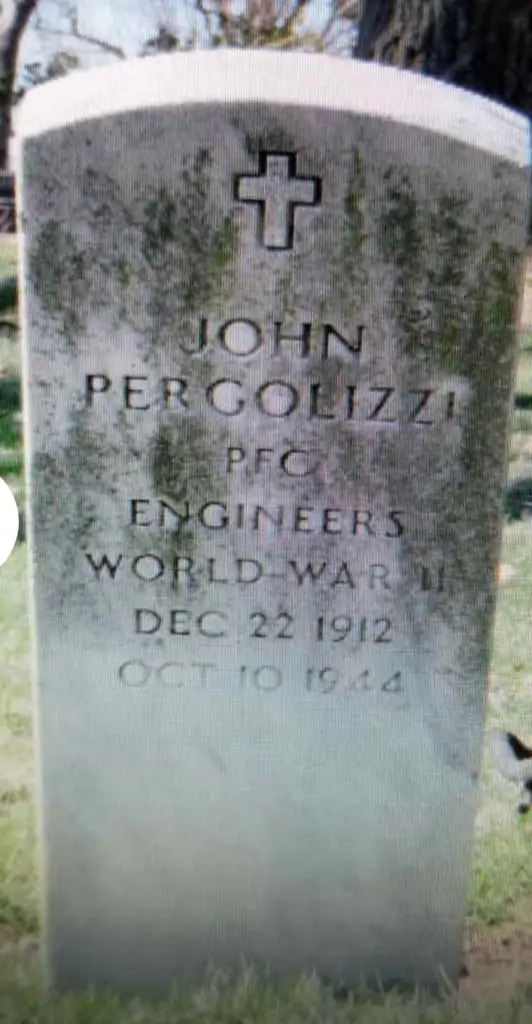
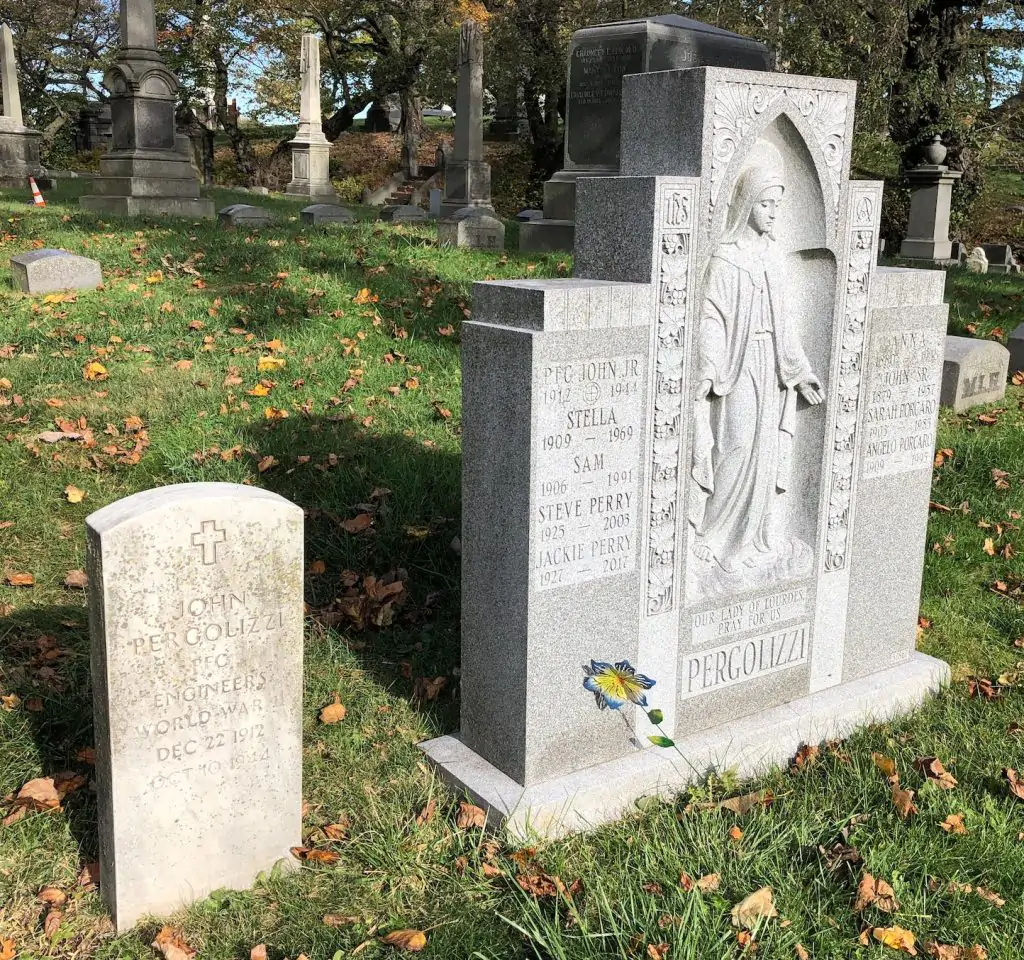
PESCE, CARMINE (1916-1989). Corporal, 147th Battalion, Company A, United States Army. Pesce was born in Brooklyn. His first name is documented as Carmino in birth records. According to his granddaughter, Michele Meehan, Pesce attended Public School 10 at 17th Street and 7th Avenue in Brooklyn. The 1925 New York State census documents that his parents, Francisco and Maria, and older brother, Edward, were born in Italy. The family lived on 17th Street in Brooklyn and Carmine was the fourth of eight siblings. As per the 1930 federal census, the Pesce family lived at 442 17th Street. His father was a plasterer. The family had grown to nine children, ranging in ages from two to twenty years old. Pesces’s parents, all their children and two cousins were living in the 17th Street residence. Pesce’s granddaughter shares that Carmine married Michelina Mignone on September 3, 1939, at Our Lady Queen of Peace Church in Brooklyn. The couple’s first daughter, Frances, was born on December 19, 1942.
Pesce’s World War II draft registration card details that he was 23 years old and his wife was named as next of kin. The registrar’s report, dated October 16, 1940, records that he was 5′ 6″ tall, weighed 130 pounds, had brown eyes and hair, and a ruddy complexion. He was living at 363A 5th Avenue in Brooklyn and was unemployed.
As per his World War II enlistment record, Pesce was married and had attended two years of high school. His date of enlistment was November 10, 1943 and he entered the Army as a private. According to his granddaughter, Pesce served in Europe with Company A of the 147th Battalion. He was reported missing in action on November 12, 1944. As per the United States National Archives and Records Administration from the World War II Prisoners of War Data File, Pesce was held as a prisoner of war from November 13, 1944 to June 7, 1945 in the German war camp, Stalag 2A, Neubrandenburg Mecklenburg 53-13. According to forum.axishistory.com, “The camp was located in Funfeichen, a former estate within the city limits of Neubrandenburg in Mecklenburg-Vorpommern, northern Germany. Today, the site of the camp is a memorial . . . . In the middle of April (1945), most of the prisoners in the camp and in the outlying Arbeitskommandos were marched westward ahead of the advancing Red Army. Within a few days, they were liberated by British troops pushing eastward.” For his service to his country, Pesce was awarded the following medals: World War II Victory, American Campaign, European, African, Middle Eastern Campaign, Efficiency Honor Fidelity, the Purple Heart, and the P.O.W. Medal.
After the war, Pesce and Michelina had a second daughter, Margaret, born on February 23, 1947. His primary residence was 394 4th Street and he worked as a carpenter at the Brooklyn Army Base. He and his wife had celebrated their 50th wedding anniversary only two months before he passed away on November 12, 1989. Section 58, lot 44604, grave 54.
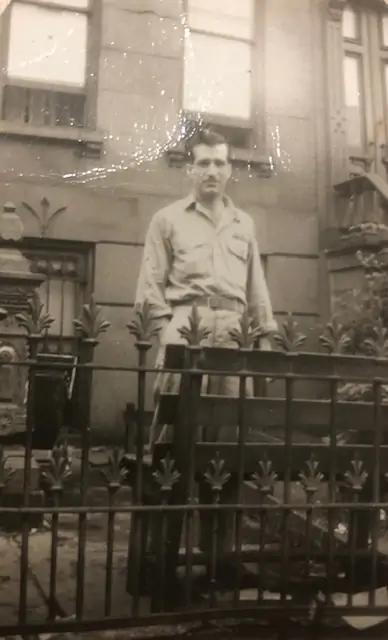
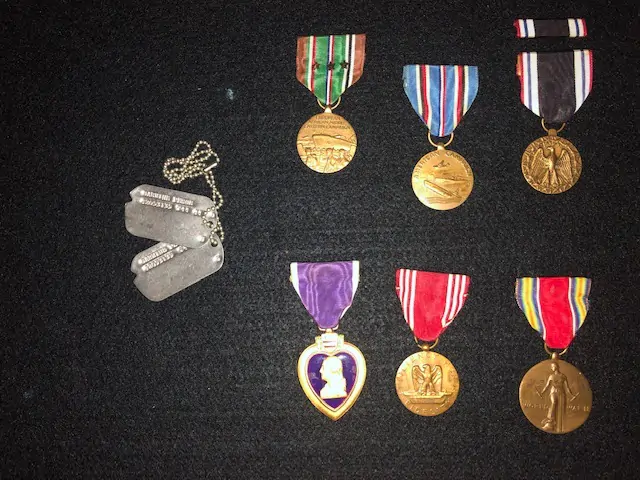
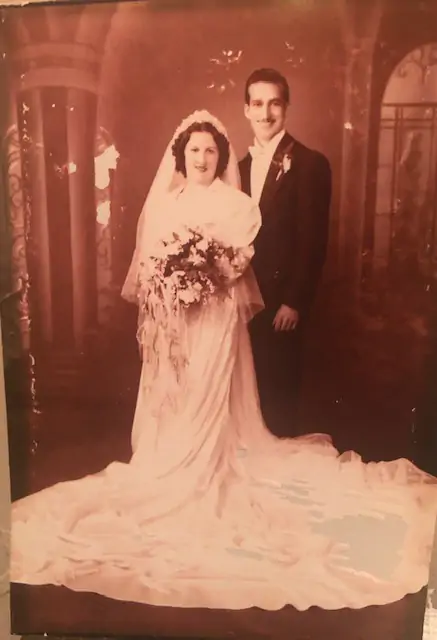
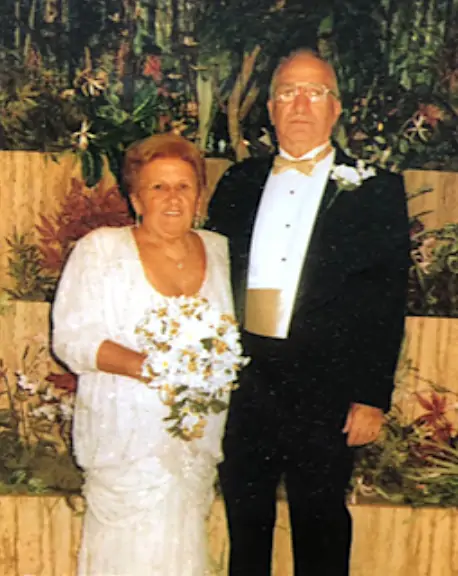
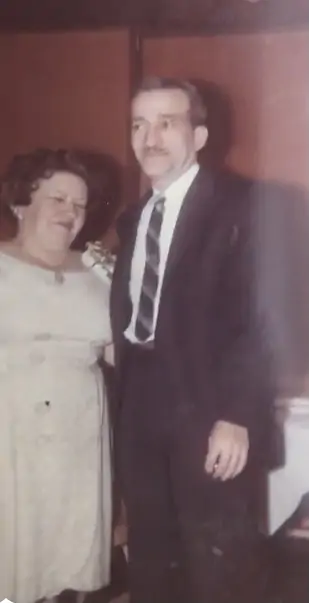
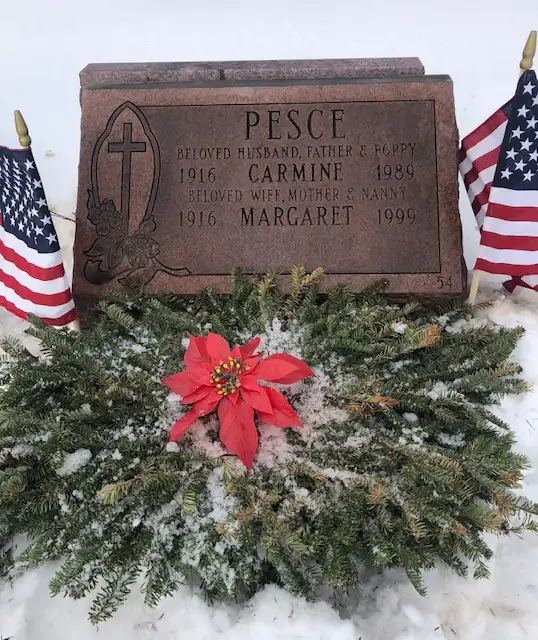
PETERSEN (or PETTERSEN, PETERSON), JOHN (or JOHAN) ROH (1906-1953). Lieutenant, United States Coast Guard Reserve. According to the Norway Church Records, Petersen was born on June 8, 1906 in Arendal, Aust-Agder, Norway, to Jens and Amne Pettersen. His name at birth was recorded as Johan Pettersen. As per the 1910 Norway census, he was the youngest of four siblings. The surname of all members of his family is documented as Peterson. The Norway Emigration Records detail that he was single, and emigrated from Oslo, Norway, to Florida. He journeyed alone; no other household member is listed. On November 30, 1925, he arrived in New York, according to the New York Arriving Passenger and Crew Lists of the SS Frederik VIII. His final destination was to reside indefinitely in Florida with his cousin, Thomas R. Petterson. Both the Emigration Records and the Passenger Manifest document his name as Johan Pettersen.
On June 27, 1928, he submitted a Declaration of Intention through the United States Department of Labor requesting United States citizenship. This document records his name as John Roh Petersen. The declaration describes him as single, twenty-two years old, 5′ 9″ tall and 168 pounds with blond hair, gray eyes and ruddy complexion. He was a sailor and his residence was the Yacht Atlantic, Tabo Shipyard in Brooklyn, New York.
John married Sarah Liland in February 1935. There is a discrepancy regarding the marriage date as the Florida County Marriage Records states February 11 as the marriage date while the Marriage Index records the date as February 18. As per the 1940 federal census, he and his wife lived on Fourth Avenue in Brooklyn. At the time he was a chief officer in the yachting industry.
Petersen’s World War II draft card records that he was 34 years old, lived at 6925 4th Avenue in Brooklyn, and was a United States citizen. His wife was designated next of kin. His employer was G. B. Lambert, located at 250 Park Avenue, Manhattan. John most likely worked in Lambert’s yacht racing efforts–Lambert was a successful businessman and avid yachtsman. The accompanying registrar’s report, dated October 16, 1940, describes him as 5′ 11″ tall and 190 pounds with blue eyes, brown hair, and ruddy complexion.
According to the Application for Headstone or Marker, completed by his wife, his enlistment date was October 13, 1941 and his discharge date was June 22, 1952. The application further reveals that he achieved the rank of lieutenant, was a member of the United Coast Guard Reserve, and was stationed at Bush Docks on Fifth Avenue and 25th Street in Brooklyn. According to the National Parks Service’s article, “U.S. Coast Guard: The Coast Guard During World War II,” the Coast Guard played an integral part in the war:
The Coast Guard’s participation in amphibious activity during World War II was perhaps the most important war-related job the service performed. Incredibly, the Coast Guard fully manned more than 350 naval ships, including 76 LSTs (Landing Ship, Tank), 21 cargo and attack-cargo ships, 75 frigates, and 31 transports. In addition, the Coast Guard manned more than 800 cutters, nearly 300 ships for the Army, and thousands of amphibious-type assault craft.
In the ships and craft of the amphibious forces, the Coast Guard discharged its most important role during the war – that is getting the men to the beaches and providing support.
The largest Coast Guard-manned ships were the transports, and they played a vital role in landing operations.
Petersen is listed on two USAT General R. E. Callan’s List or Manifest of Aliens Employed on the Vessel as Member of Crew. On October 16, 1946, he arrived in New York from Leghorn, Italy, and on November 27, 1946, he sailed from Bremerhaven, Germany to New York. The USS General R. E. Callan was a transport ship for the United States Navy in World War II. Petersen may have been onboard during some of these events as described by the Naval History and Heritage Command website:
General Callan sailed from San Francisco 25 September 1944 with Army troops and debarked them at Oro Bay and Langemak Bay New Guinea, on-loading at the latter port 2,700 troops and casualties which she put ashore at San Francisco 1 November on her return. She embarked over 2,600 fighting men at San Diego and after touching San Francisco 13 November, got underway from that port 3 days later for Kahului Harbor, Hawaii, where she debarked the troops and returned to San Francisco 2 December with over 250 homeward-bound veterans. From 20 December 1944-8 February 1945 the transport carried 2,500 troops from San Francisco to Eniwetok and Guam, returning to Los Angeles the latter date with 2,500 troops embarked at Pearl Harbor. General Callan then stood out 23 March 1945 with more than 3,000 fighting men bound for Melbourne, Australia; Calcutta, India; and Trincomalee, Ceylon; returning via Fremantle, Australia; Manus, Tinian, Saipan, Guam, and Pearl Harbor to moor at San Francisco 28 June.
Two days later the busy ship steamed under the Golden Gate bound for Norfolk, Va., closing that port 15 July and getting underway again 25 July for France. She embarked over 3,000 troops at Marseille 6 August and returned to Norfolk 18 August to debark her war-weary passengers. From 20 August-12 September the ship made another voyage to Marseille and put in at Boston 12 September with over 4,000 troops. On 26 September she stood out to eastward, touching Karachi, India, via the Suez and returning to New York with a full load of veterans on 21 November. After a round-the-world troop rotation cruise which brought the ship to Karachi, Singapore and Hawaii after her departure 7 December 1945 from New York, General Callan moored at Seattle on 30 January 1946. Following a voyage to Leyte, she returned to San Francisco in early April, and subsequently sailed thence via Panama for Boston, where on 24 May 1946 she was placed out of commission and turned over to the Maritime Commission for peacetime operations as an Army transport. Her name was struck from the Navy List on 19 June 1946.
As per the 1950 federal census, Petersen and his wife still resided on Fourth Avenue in Brooklyn. Petersen was a Chief Officer for Army Transport. The couple had no children. According to the New York Arriving Passenger and Crew Lists for the USNS Upshur, Petersen is documented as a 1st officer. This United States Naval Ship arrived in New York on March 23, 1953, from the Canal Zone and San Juan, Puerto Rico with 226 people onboard. Although the Upshur was a vital destroyer ship during World War II, Petersen was onboard the Upshur after the war. According to the Naval History and Heritage Command:
…late in June 1950, before the ship could be completed in her civilian configuration, war broke out in Korea. The Navy acquired President Hayes on 15 September 1950, renamed the liner Upshur, and designated her T-AP-198 on 2 January 1951. …Upshur was converted by her builder to a troop and dependent transport and, on December20, 1952 at Camden, was placed in service with the Military Sea Transportation Service (MSTS). For the next two decades, Upshur operated out of New York providing service for troops and dependents on numerous transatlantic cruised to Bremerhaven, Germany; Mediterranean ports in North Africa, Turkey, Greece, and Italy; and Caribbean ports.
His obituary was posted in the Brooklyn Daily Eagle. Section N, lot 38105, grave 272.
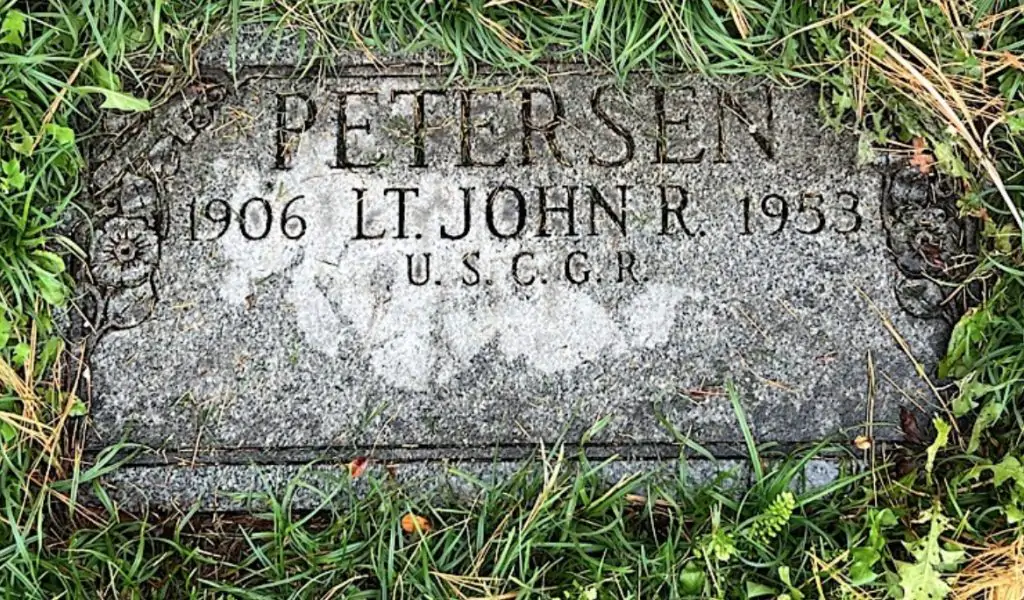
PHILLIPS, KIRIAKOS (1923-1999). Private, unit unknown, United States Army. As per the 1930 census, Phillips lived with his parents, James and Mary, and his older brother, Philip, at 1561 67th Street in Brooklyn. The census indicates that his parents and brother were born in Greece, and he was born in New York City. His father worked in the ice cream industry. In October 1933, his father applied for naturalization. The process took years, and his father was accorded “lawful entry for permanent residence” on September 29, 1937. According to his father’s United States petition of naturalization papers, the family resided at 1620 66th Street. The documentation, in contrast to the 1930 census, states that both his parents were born in Constantinople (now Istanbul), Turkey, his older brother was born in Greece, and his father’s former name was Demetrios Phillipon. His parents were married in Turkey on November 4, 1919, and his father worked as a production manager. His family entered the United States either on the 18th or 19th of December in 1920 on the ship Leopoldina. The 1940 federal census notes that the seventeen-year-old Phillips and his family still resided at the 66th Street address. His father and brother were machinists in the dairy and ice cream industry and his mother worked as a finisher in the garment industry.
Phillip’s World War II registration card records that he was nineteen years old, resided at the 66th Street address and his father was named as next of kin. The card states that he was self-employed at J. Phillips and Sons, a tool and die maker located at 1558 63rd Street in Brooklyn. Due to its name, J. Phillips and Sons, it may have been the family business. The World War II Army enlistment records indicate that Phillips enlisted on December 24, 1943, had completed four years of high school, and was a machinist. There is no record of the unit he served in during the war, nor a discharge date from the Army. The only wartime record located was a World War II hospital admission card. Phillips was admitted in January 1944 with a diagnosis of “reaction to drugs, vaccines, serum; typhoid and paratyphoid vaccine.” There is no specific date for his discharge from the hospital other than the recorded year “1944.” According to his daughter, he married Mildred A. Trimboli on November 30, 1944. The couple had two children. Section 8, lot 44609, grave 73.
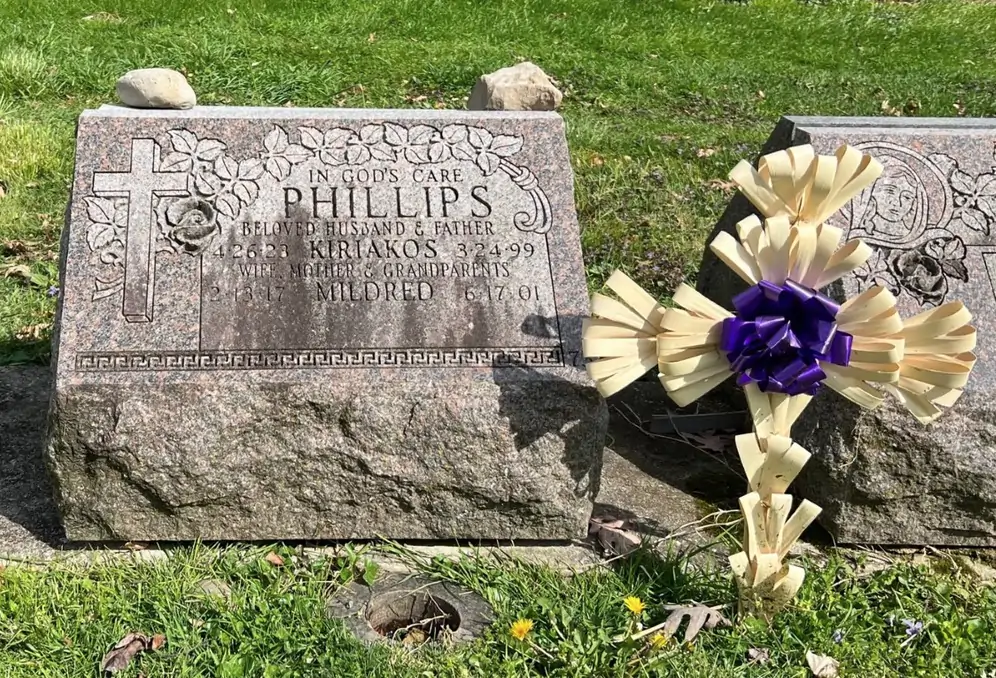
PHIPARD, CHARLES WILLARD (1916-2002). Staff sergeant, United States Army Air Force Weather Service. According to his World War II draft card, Phipard was born in New York. As per the 1920 federal census, his parents, Willard and Hazel, were born in New York. He had a younger sister, Helen, and the family lived on West 83rd Street in Manhattan. His father was a doctor. The 1925 New York State census documents that his family lived on West 179th Street. The household consisted of the Phipard family and a cook, Louise Johnson. A Department of Health of the City of New York form states that Phipard’s mother passed away from tuberculosis on February 17, 1926. According to the Phipard Family History on VermontHistory.org:
Following the death of their mother in 1927 (a discrepancy from the Board of Health date of 1926), he and his sister Helen lived first with their father’s parents, Susan Leonora (Lanphear) and Charles Kelsey Phipard on Clinton Avenue in Brooklyn, New York. C.K. Phipard had a seat on the New York Stock Exchange and worked for Whitehouse & Co. After the death of C.K. Phipard, they lived with Mrs. Phipard and their father’s sister and husband, Edgar and Elizabeth Lanphear, in Brooklyn and later on Chelesa Street in Garden City, New York. Edgar was Secretary/Treasurer of the Otis Elevator Corp. Charles and his sister Helen spent many summers of their youth with their great-aunt and great-uncle, Cora Gero Munsell and Dr. Chauncy Munsell in South Royalton, Vermont.
As per the 1930 federal census, the thirteen-year-old Charles and his twelve-year-old sister lived in Brooklyn with their uncle, John Laphear, and his wife. His uncle, the head of household, worked in real estate. Also residing in the home were his uncle’s brother and two servants, a maid and a cook. The Phipard Family History file documents that Charles attended Poly Prep Day School in Brooklyn and Wesleyan University and Upsala College. He graduated with degrees in business and economics and was a member of the Delta Upsilon National Fraternity.
Phipard’s World War II draft card details that he was 24 years old, lived at 374 Clinton Avenue in Brooklyn, and his aunt, Mrs. John Lanphear, was designated next of kin. For employer, Charles wrote Upsala College student in East Orange, New Jersey. The registrar’s report, dated November 4, 1940 in East Orange, New Jersey, describes him as 5′ 5″ and 150 pounds with blue eyes, brown hair, and a ruddy complexion. As per his World War II enlistment record, Phipard’s date of enlistment was May 16, 1942. He was single, entered the Army as a private, and had completed four years of college. His place of residence is documented as Nassau, New York. According to his family history website, he served in the United States Army Air Force as a weather observer in Canada. This is confirmed in Phipard’s Sons of the American Revolution Members Application. Phipard documented that he served in the Weather Service of the Air Force from May 16, 1942 to November 23, 1945, and had attained the rank of staff sergeant.
As per his Family History, “After his discharge, he returned home to Long Island and worked in the experimental department of Sperry Gyroscope. In 1956, he moved to Royalton, Vermont, to be near his sister and purchased a farm on Waterman Road where he raised chickens.” On November 25, 1955, he applied for the Empire State Society of the National Society: Sons of the American Revolution Members. Within the application, he documents that his ancestor, Samuel Lanphear served in three Army companies from 1770 to 1782. When asked to name a wife, children, or grandchildren, Phipard left those spaces blank. His application was approved on January 20, 1956.
The United States Public Records document that Phipard lived at 115 Wheeler Road in Randolph, Vermont in 1993. He had a second residence at 1303 Waterman Road, South Royalton, Vermont. According to the United States Phone and Address Directory, he resided in South Royalton from 1994 to 2002. As per his Family History, “Charles Phipard was a charter member of the Heartland Lions Club, where he served as treasurer for many years. He was active as a Boy Scout leader, a member of the Sons of the American Revolution, and for many years, was State Commissioner and Treasurer for Babe Ruth Baseball. He died August 7, 2002.” Section 153, lot 19327.